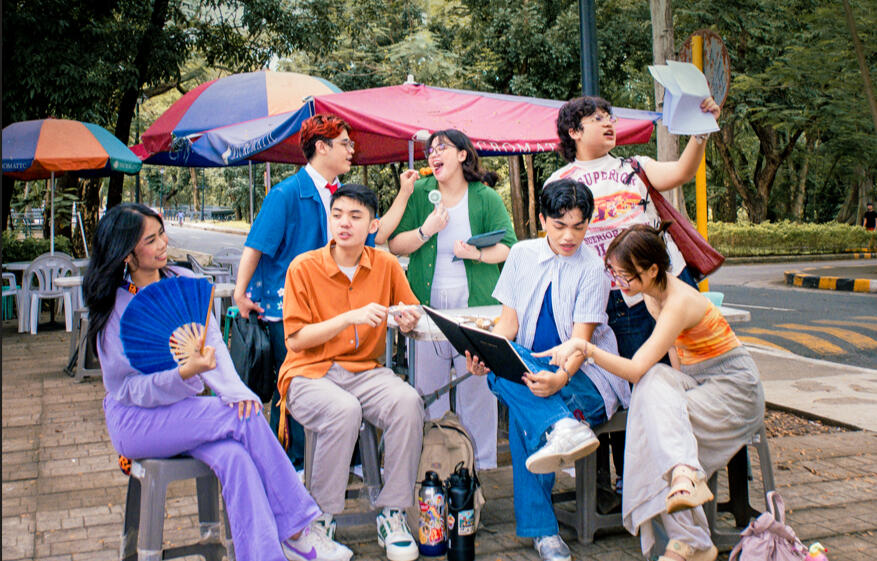
Juiceletter is the official multimedia publication of UP Advertising Core that aims to inspire the youth and cater to the general public’s interests by providing the latest trends, featuring relatable stories from the UP community, and showcasing works with full creative potential.In Juiceletter, we drive relevance and engagement by giving the youth the freedom to bring their ideas to life through content creation.
Meet the 19.2 Team
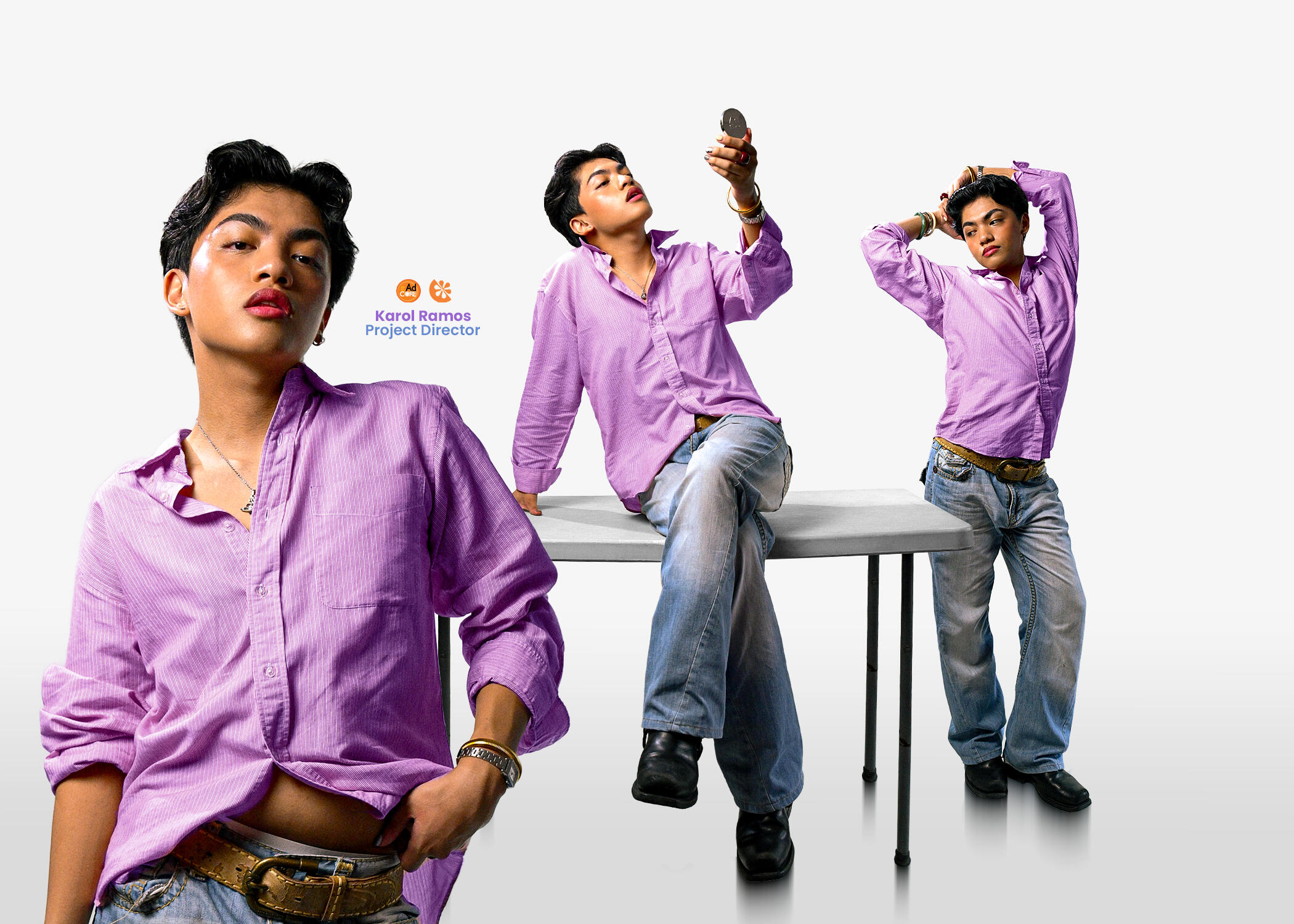
Karol Ramos
Project Director
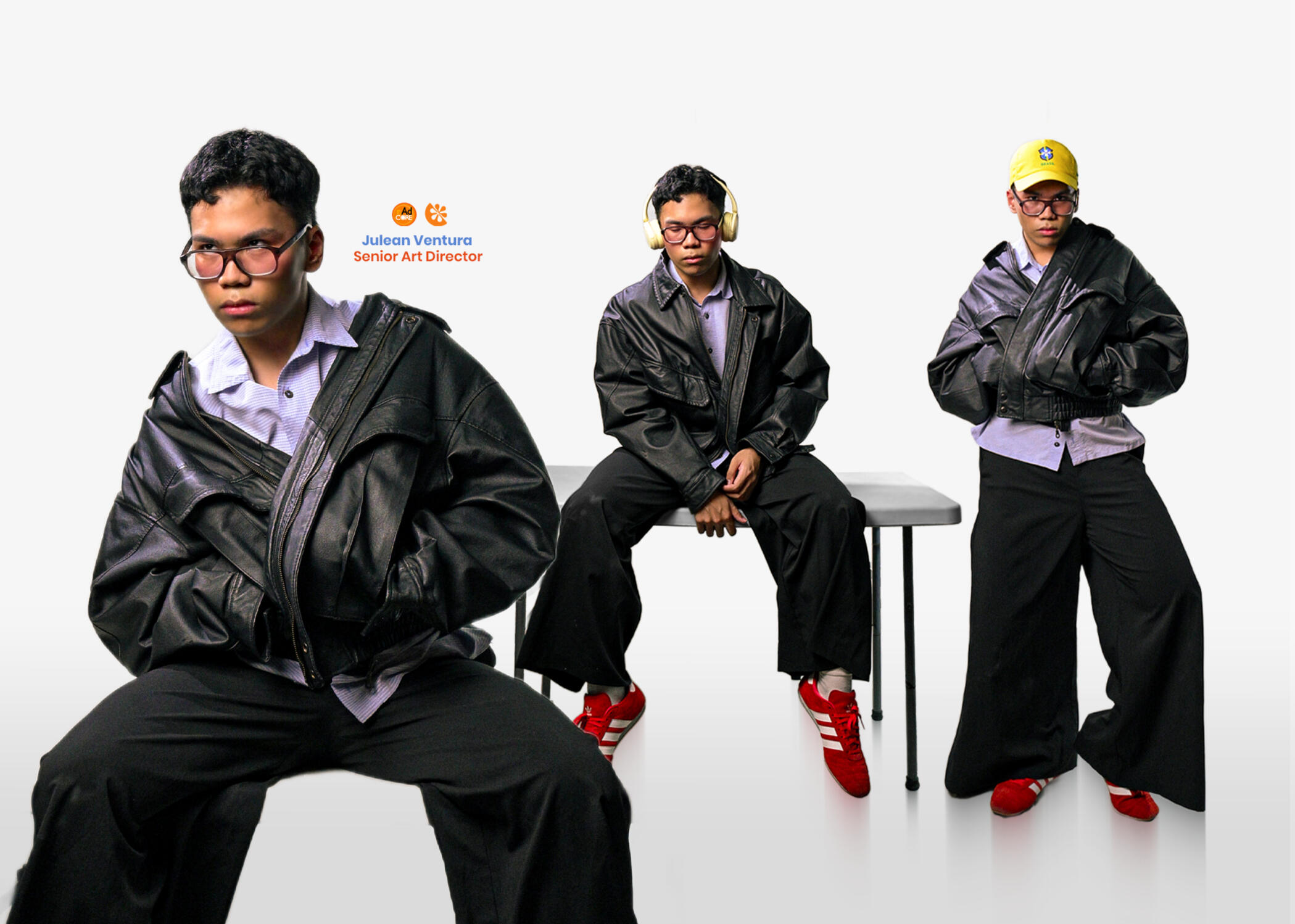
Julean Ventura
Senior Art Director
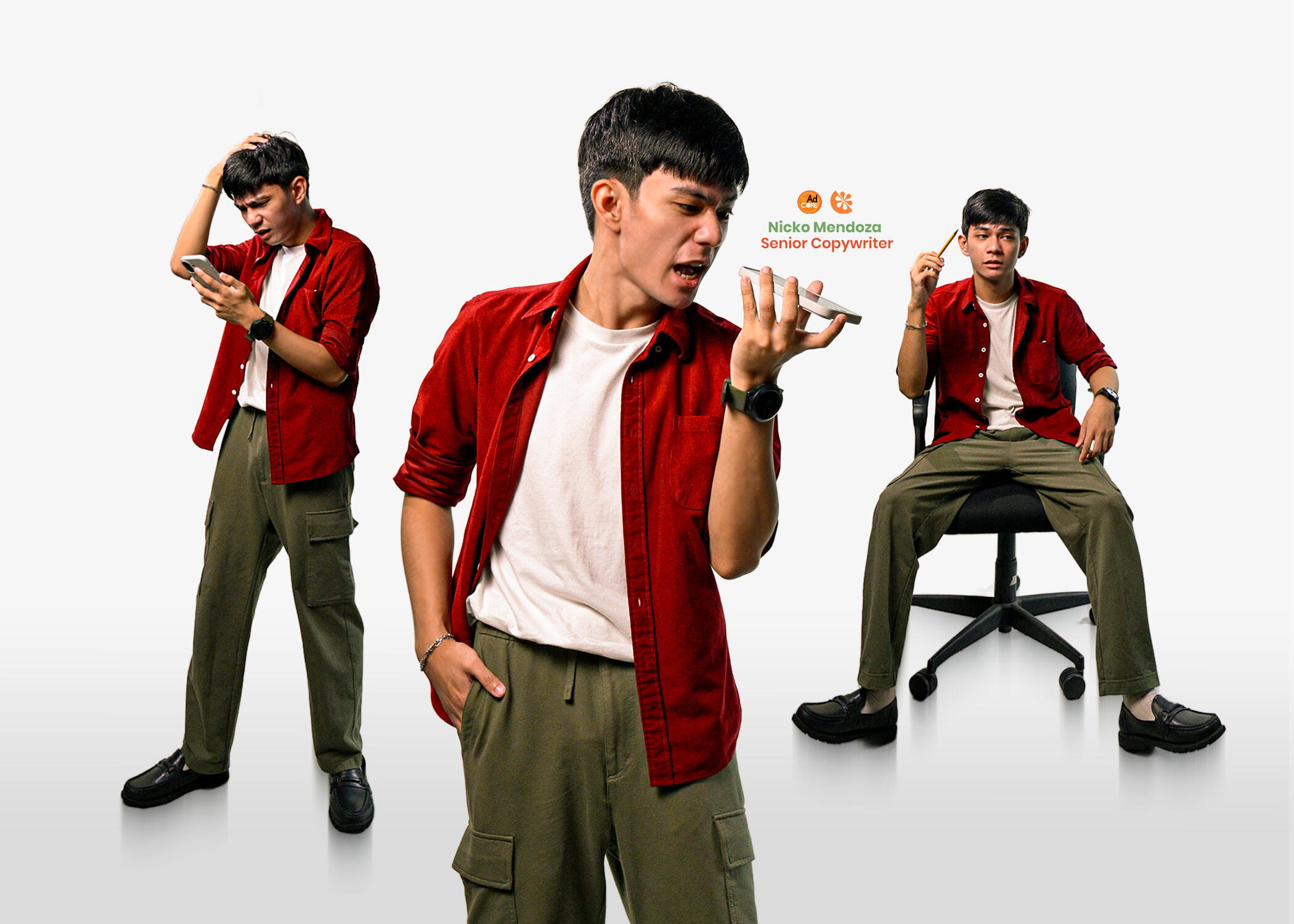
Nicko Mendoza
Senior Copywriter
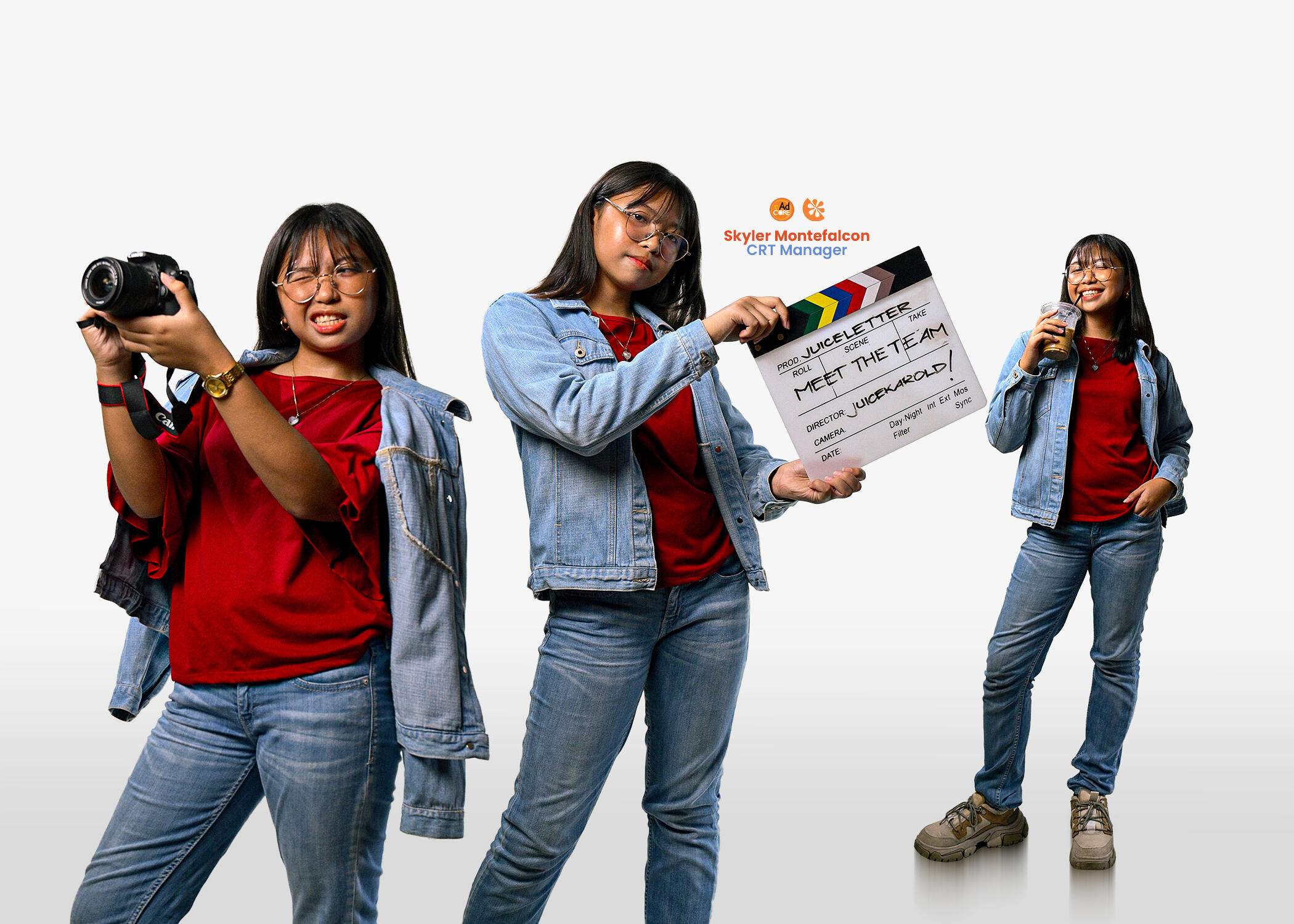
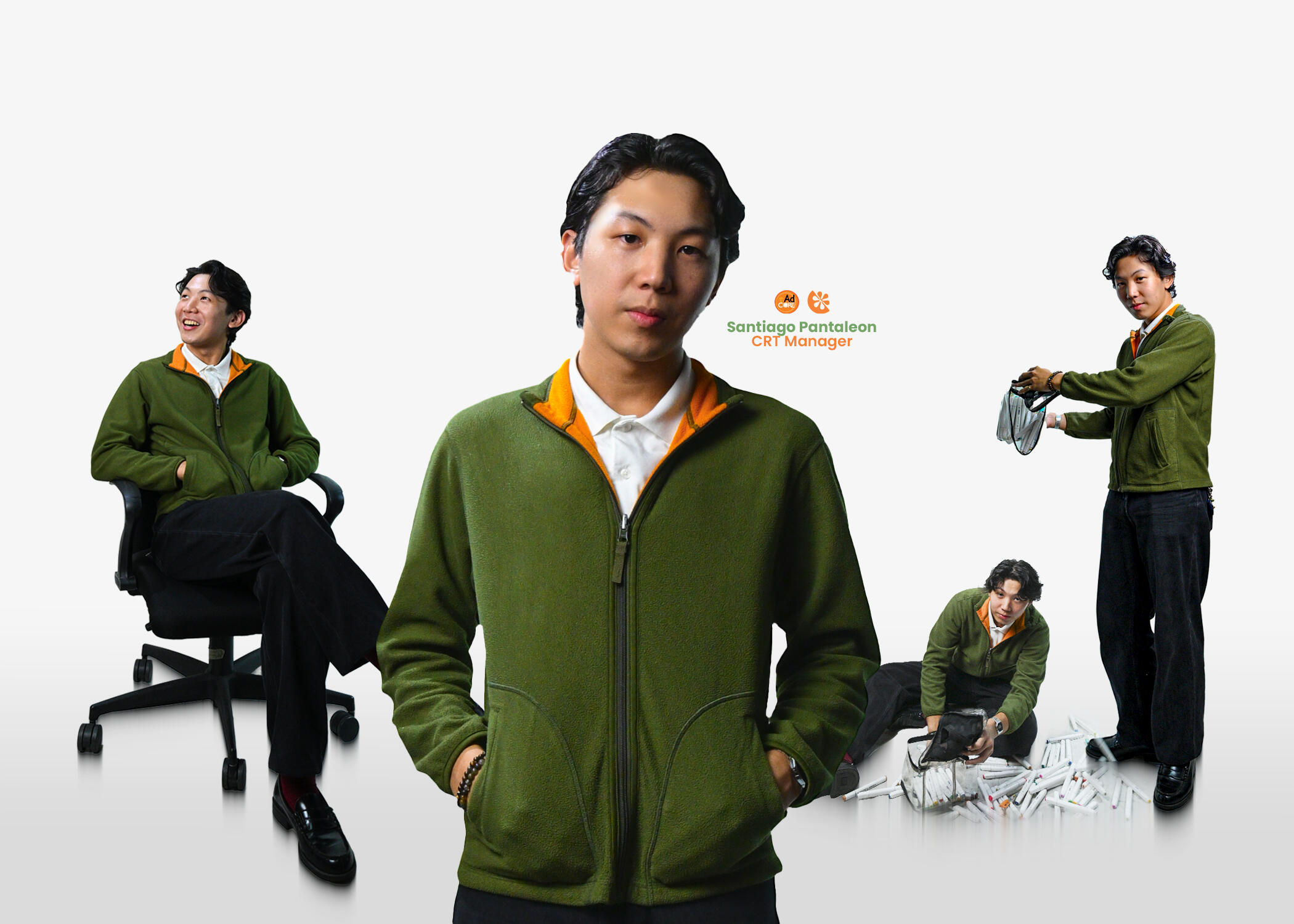
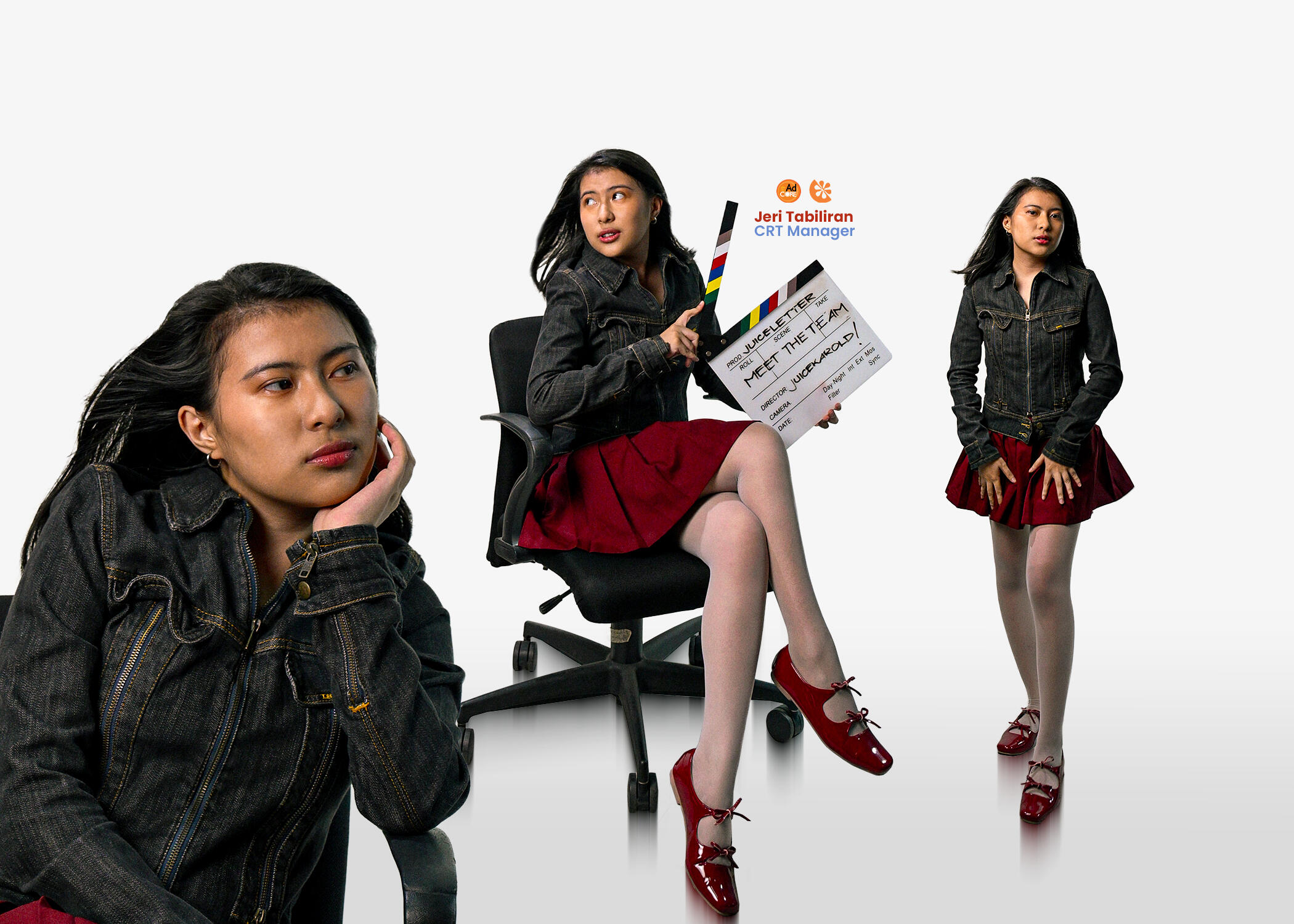
Skyler Montefalcon, Santiago Pantaleon, and Jeri Tabiliran
CRT Managers

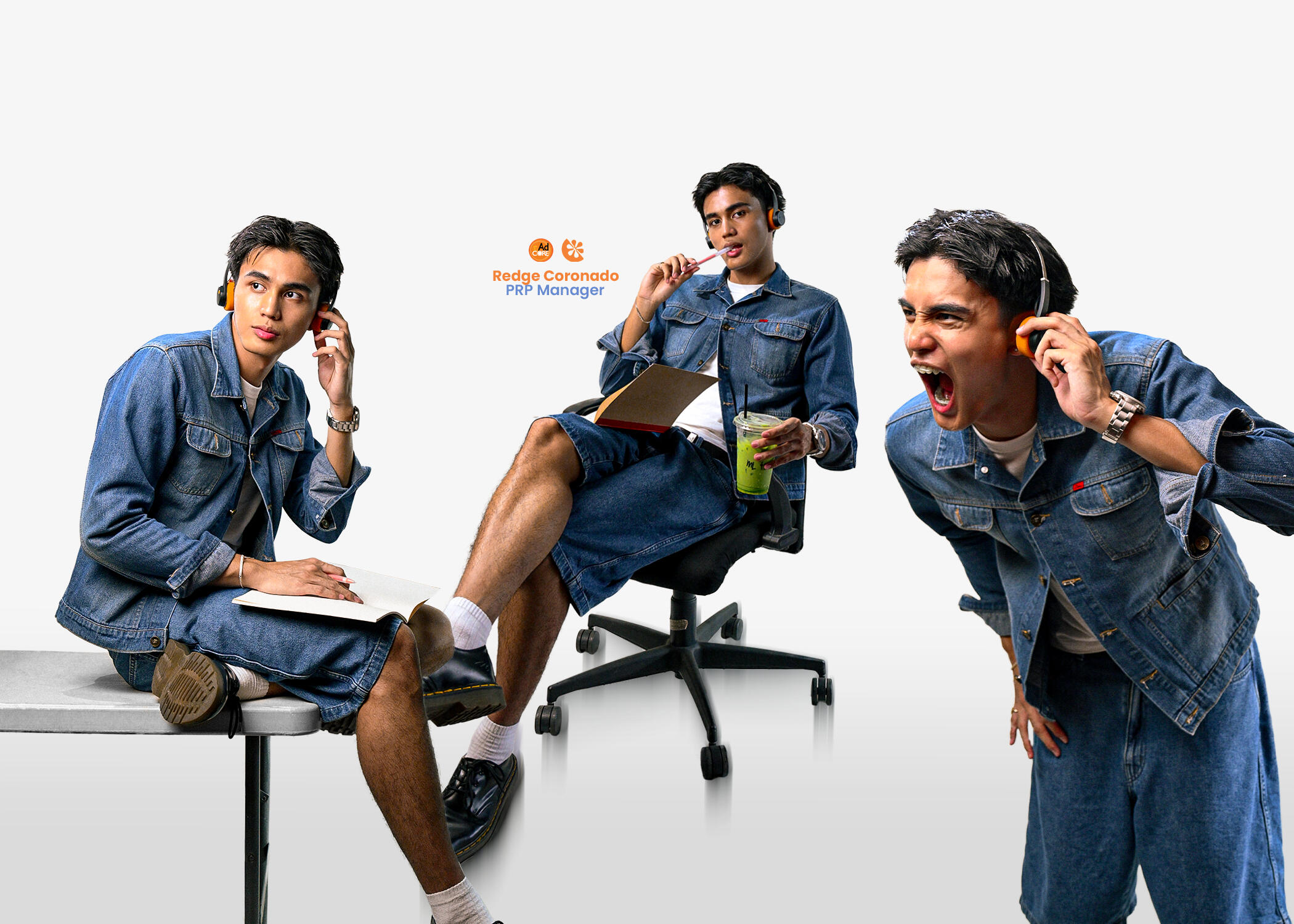


Eddie Calacsan, Redge Coronado, Caitlin Hung, and Hannah Ramos
PRP Managers
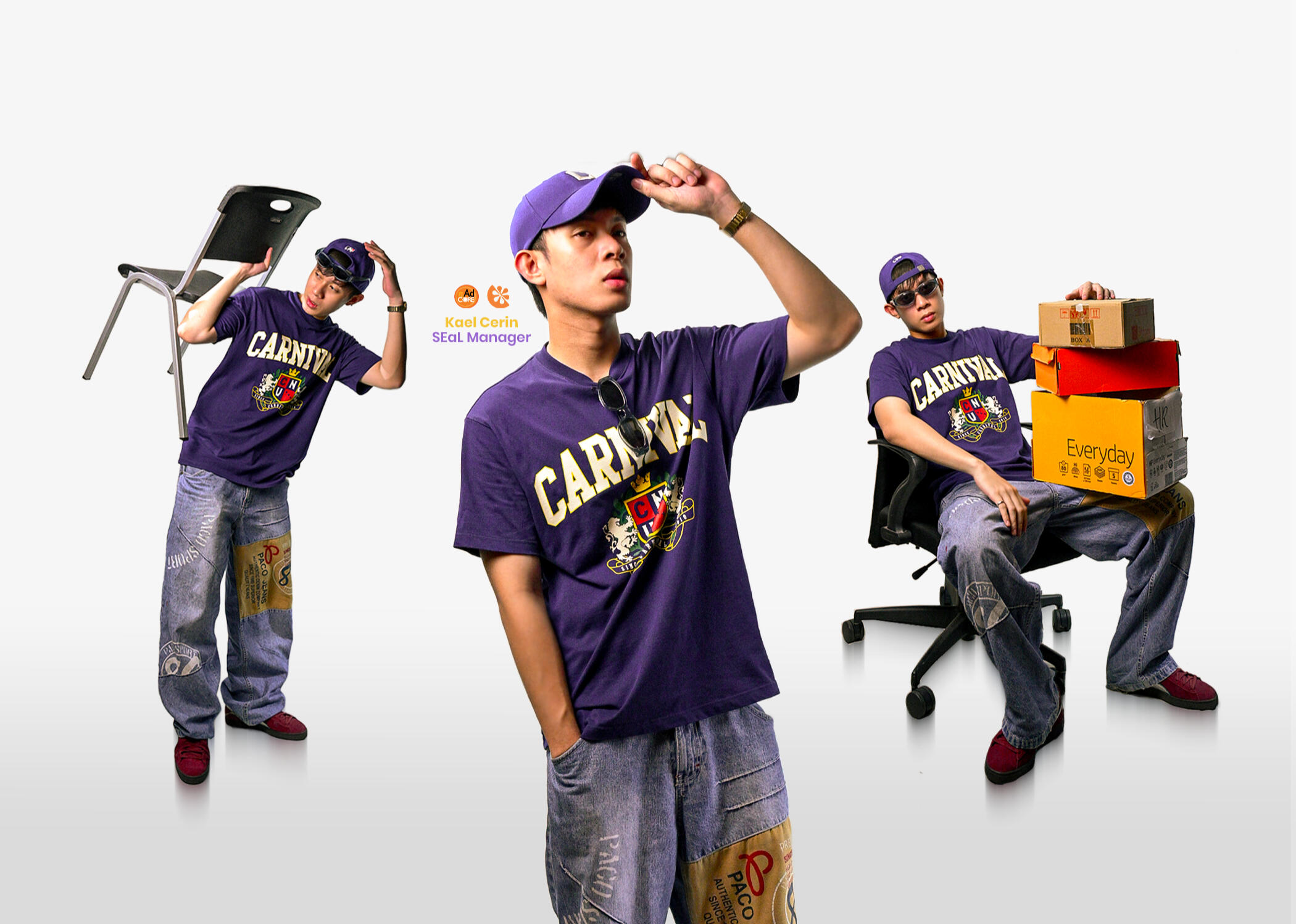
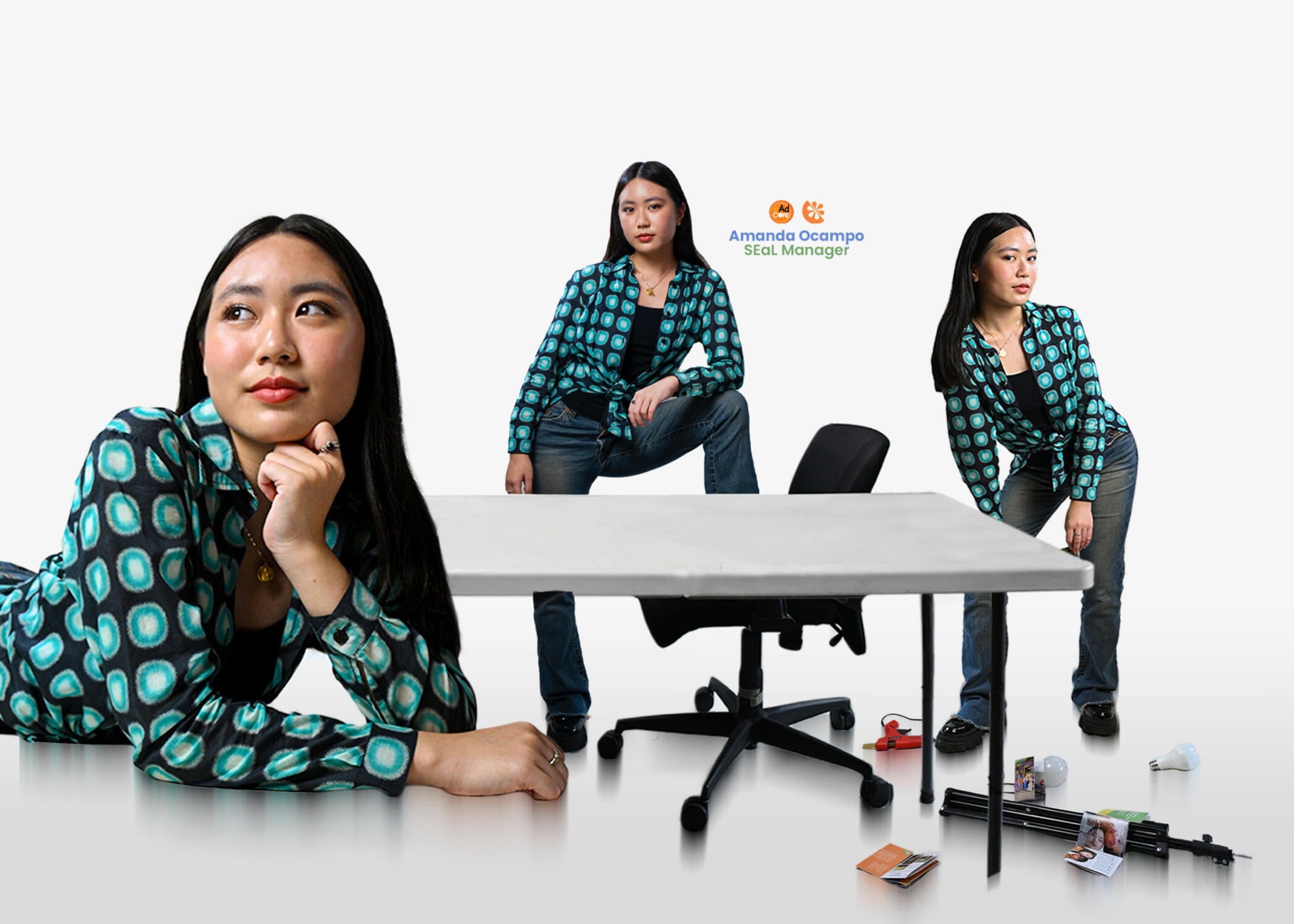
Kael Cerin, and
Amanda Ocampo
SEaL Managers

Kevin Jugao
FCA Manager
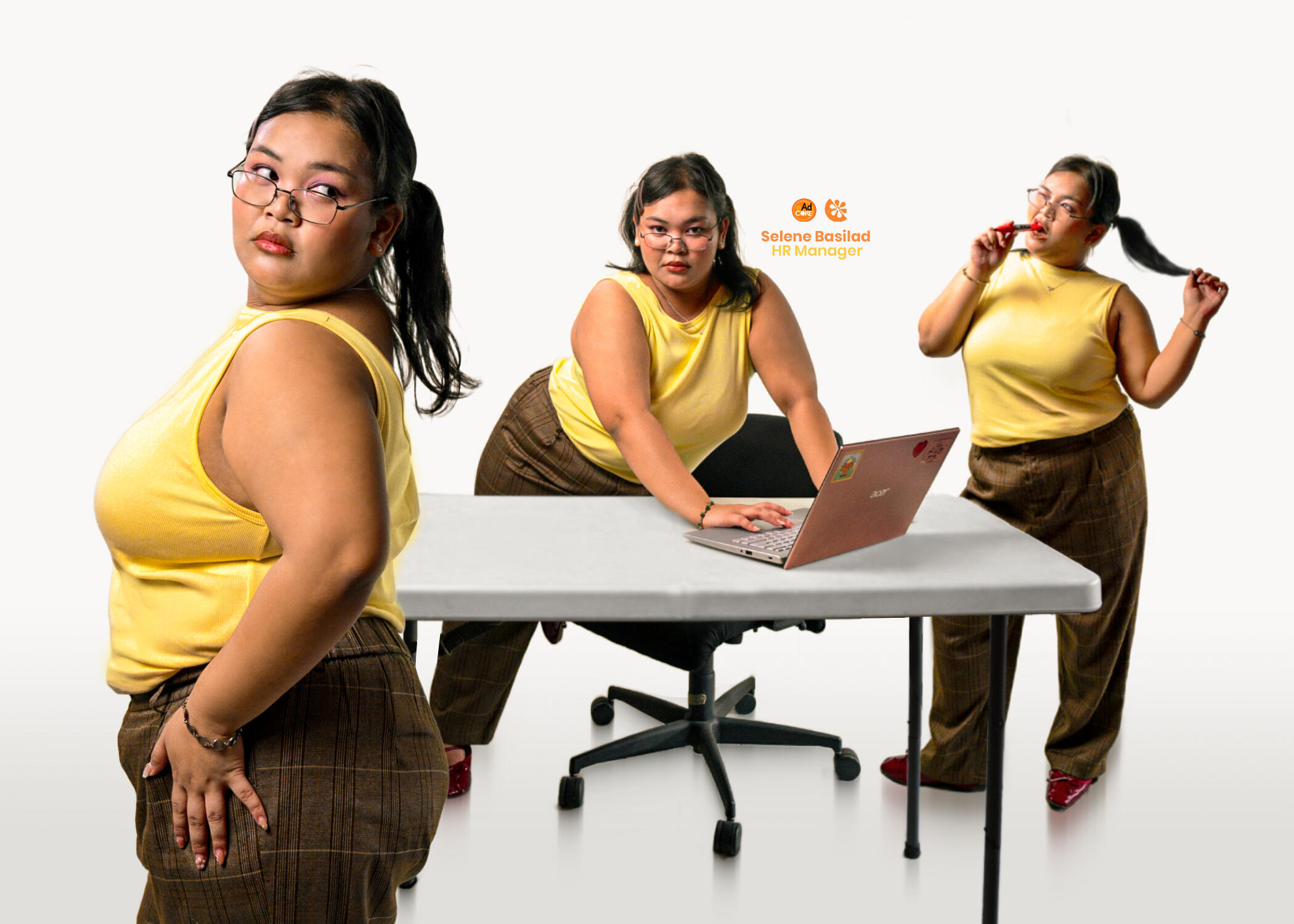
Selene Basilad
HR Manager
Executive Core
Nadine Sandoval
President
Ino Laureta
Vice President for Public Relations and Promotions
Fiona Valenton
Vice President for Creatives
Kayleen Lopez
Vice President for Finance and Corporate Affairs
Sophia Espiritu
Vice President for Special Events and Logistics
Jade Ku
Vice President for Human Resources
Meet the 19.1 Team

Valerie Co and Khloé Hallare
Project Directors
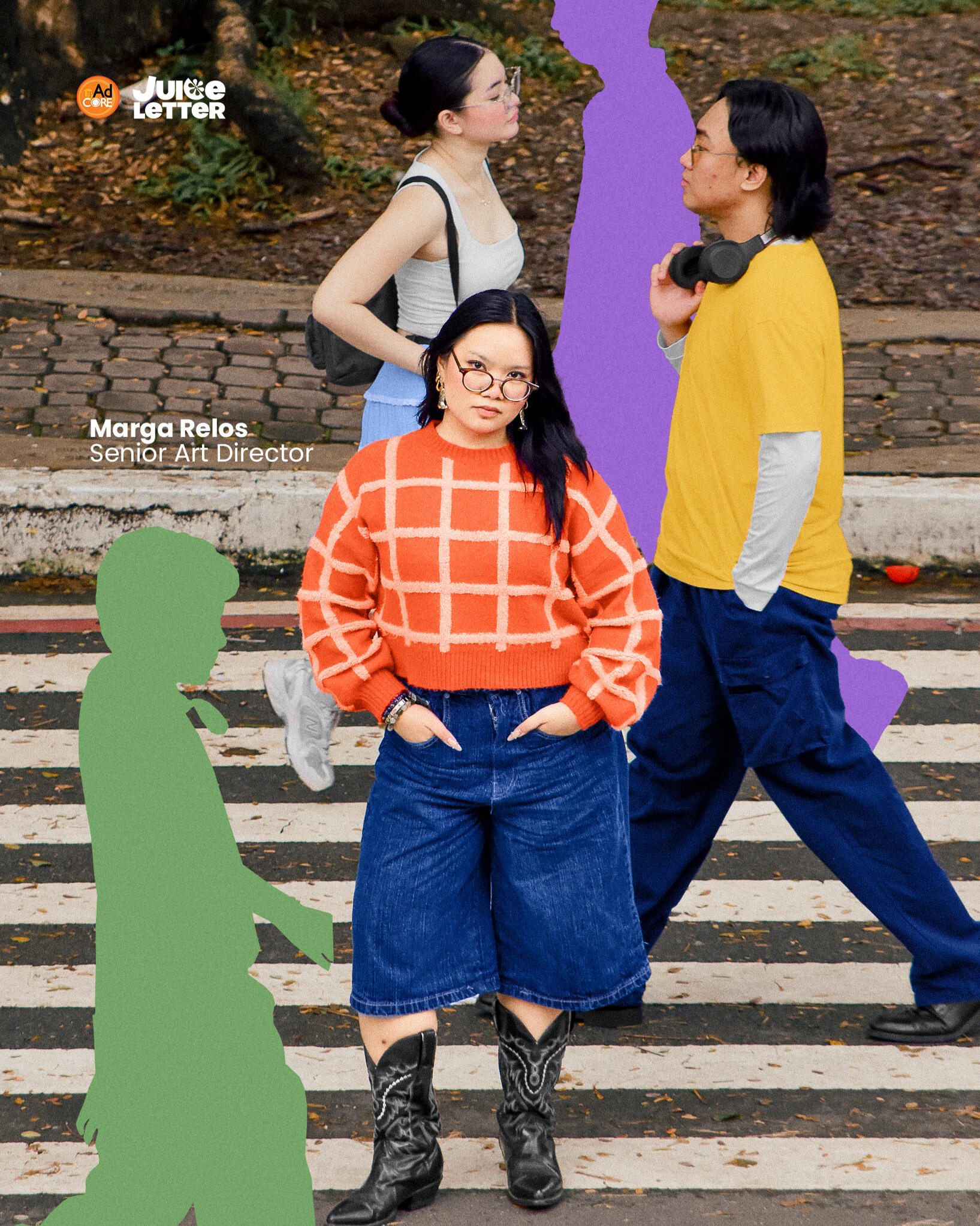

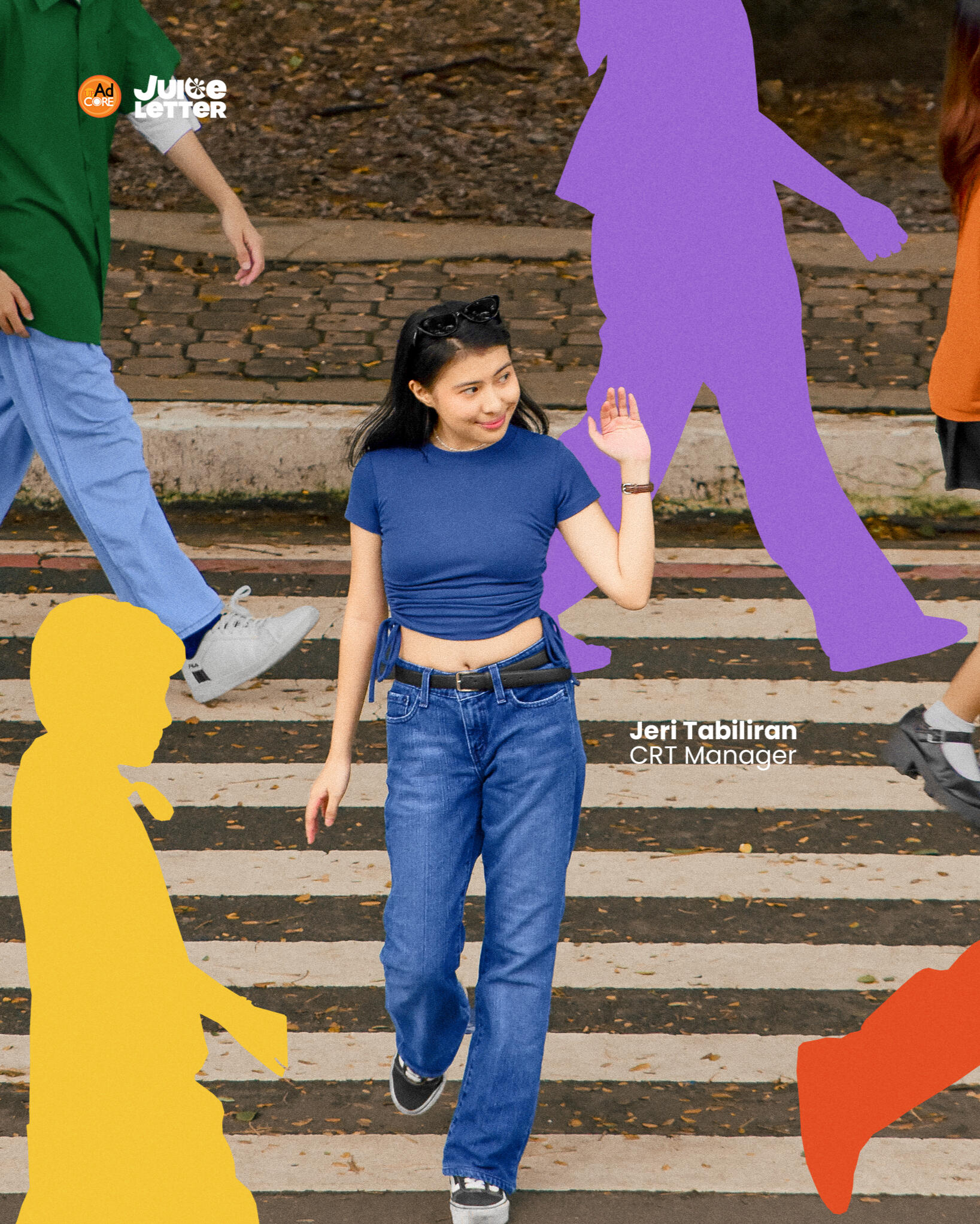
Marga Relos
Senior Art Director
Hiroshi Hojo, Jeri Tabiliran, and AJ Valdez
Creatives Managers
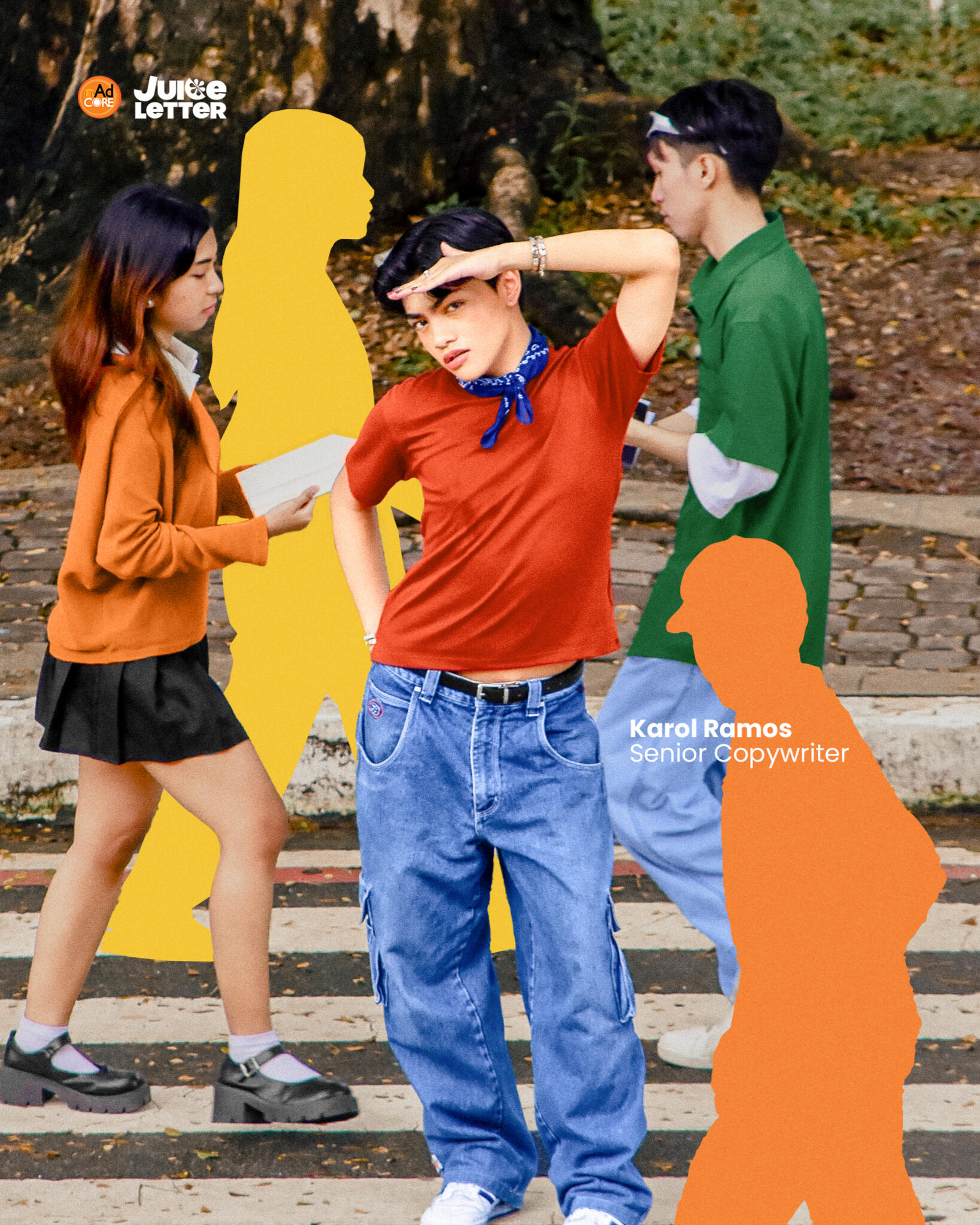
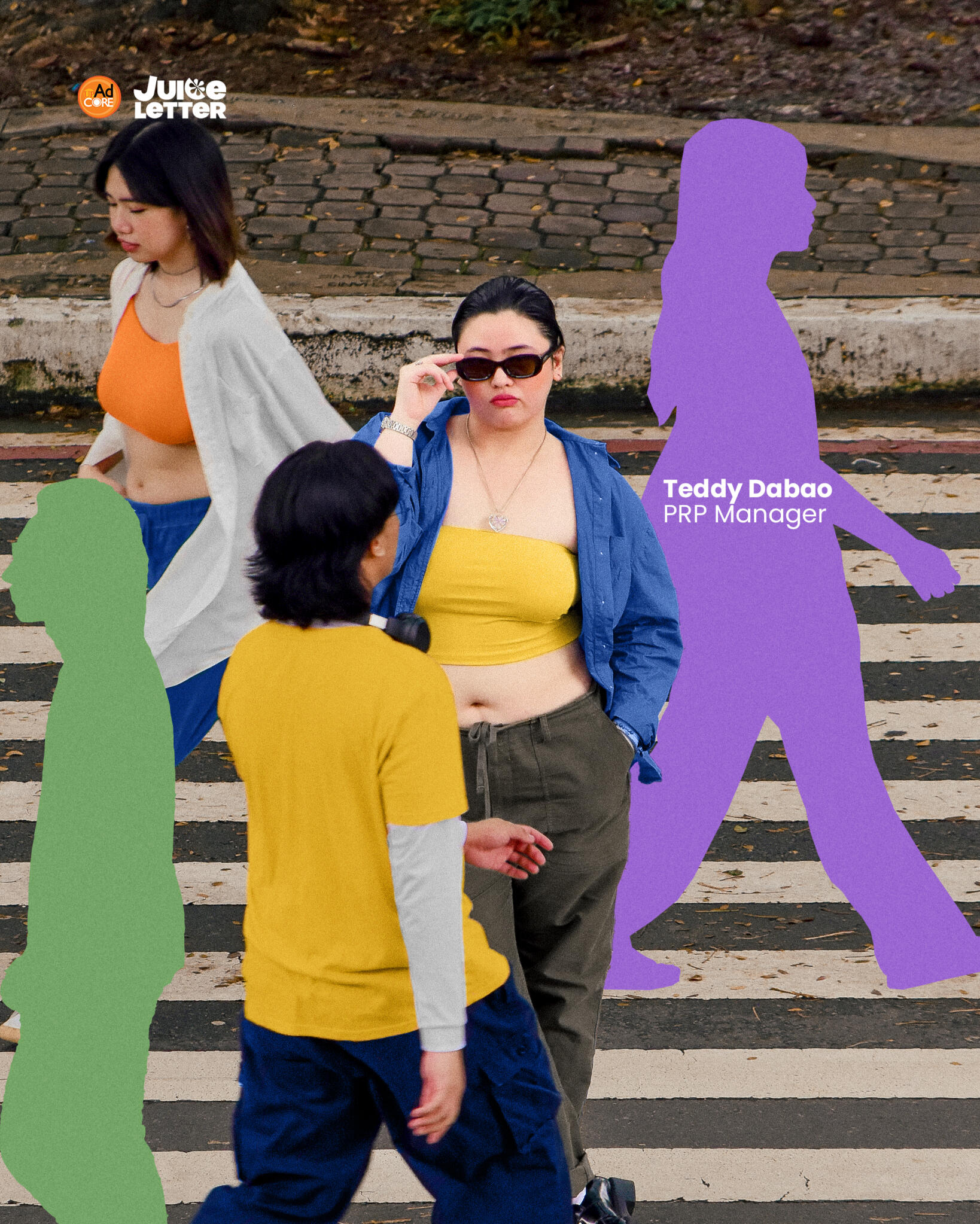
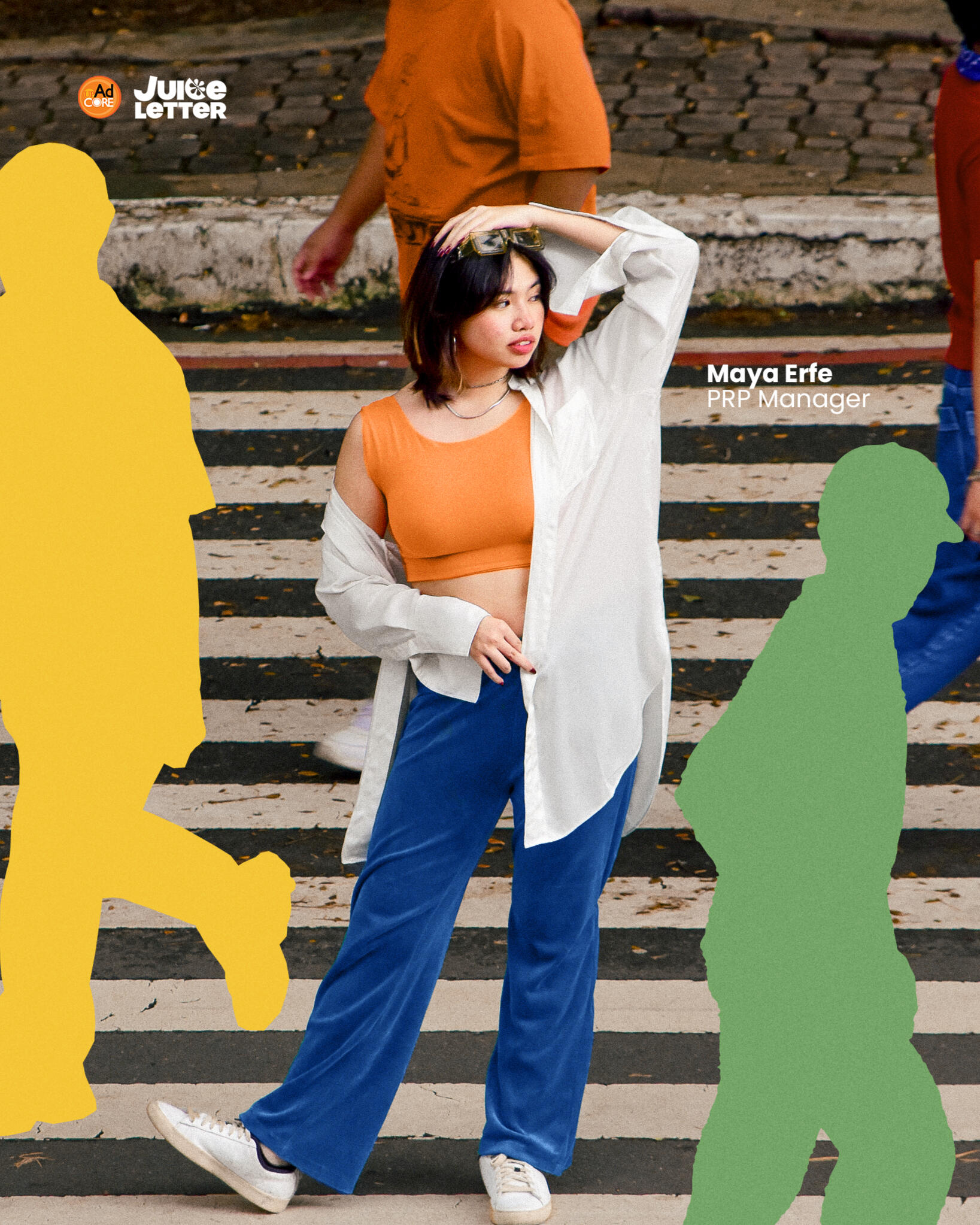
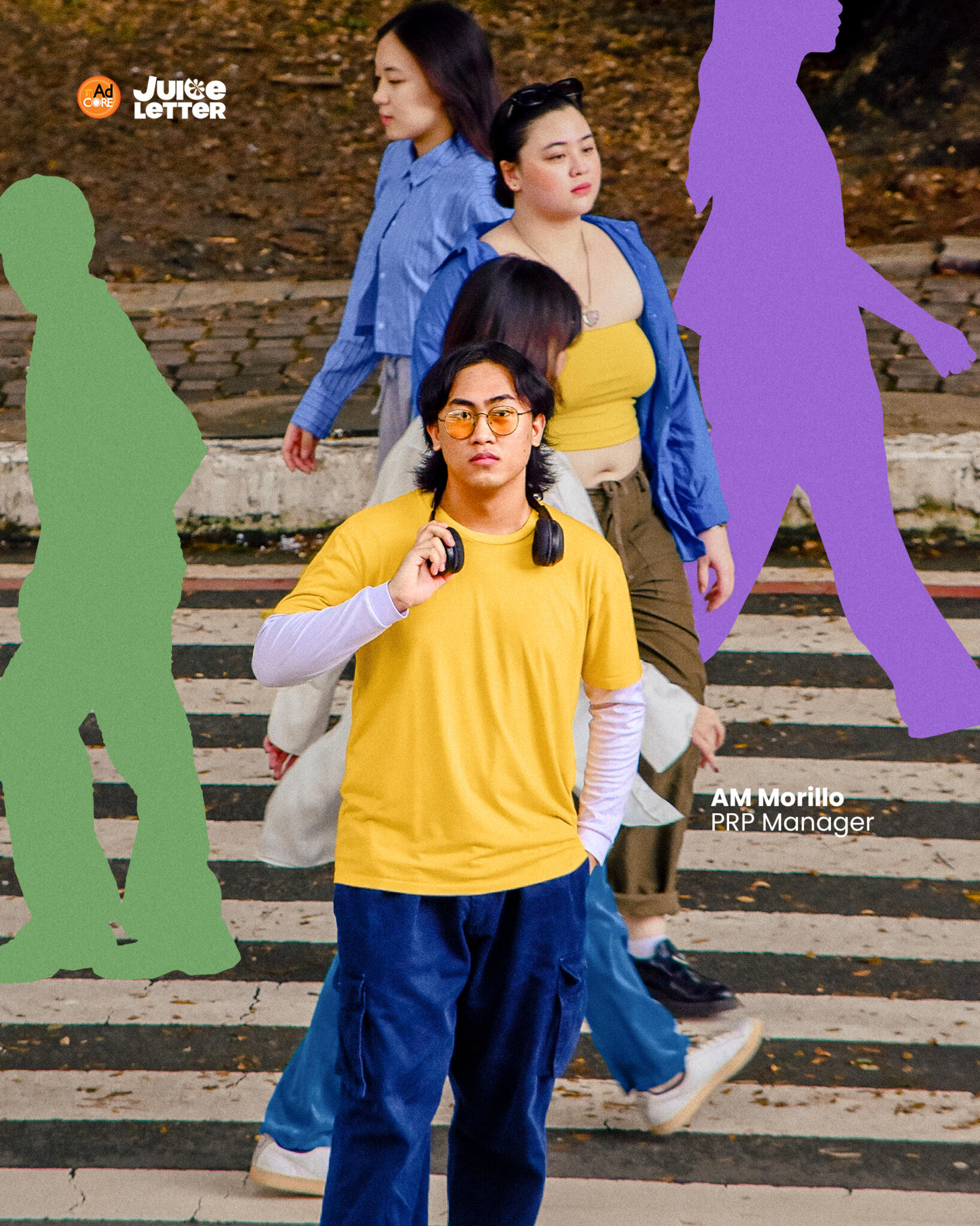
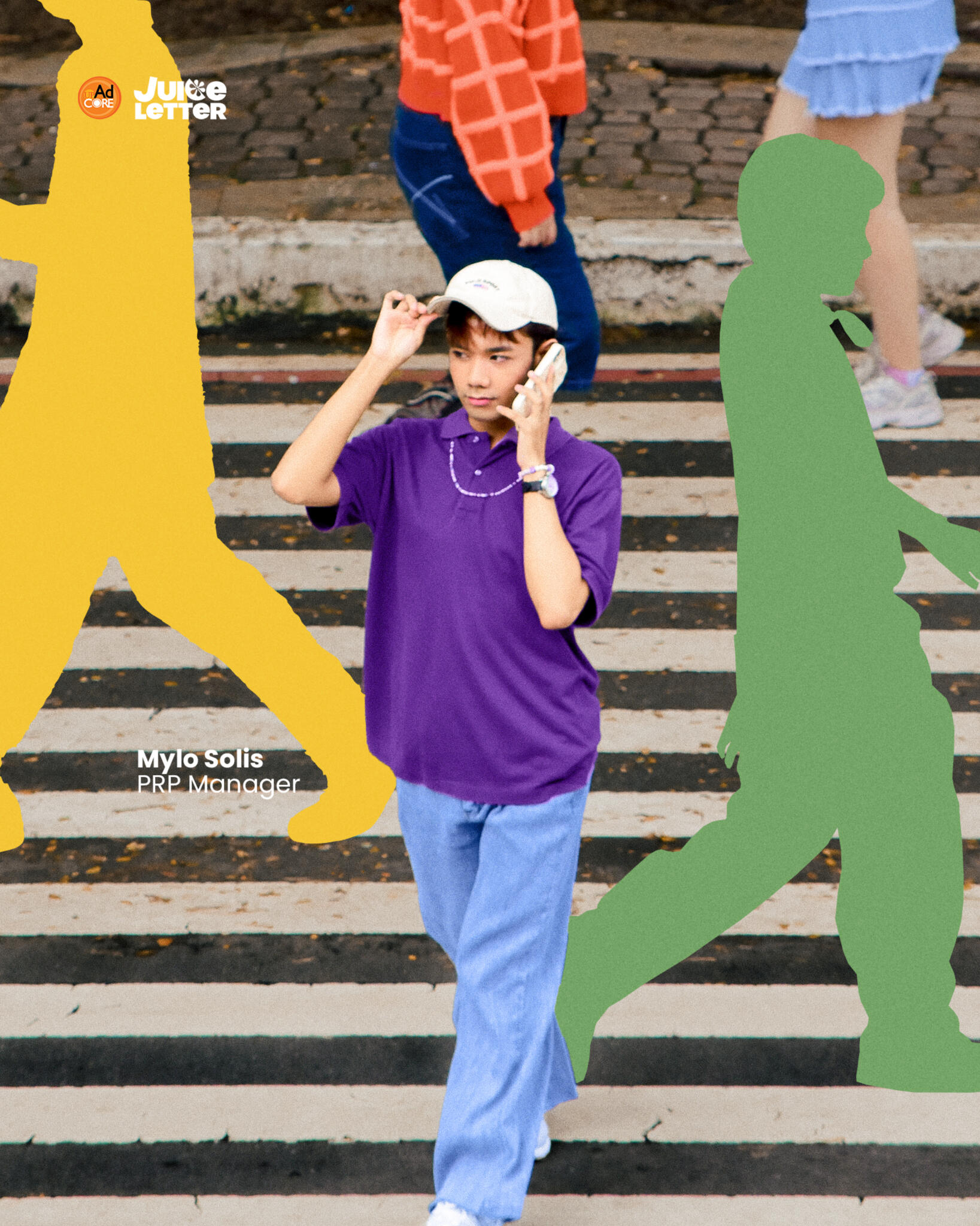
Karol Ramos
Senior Copywriter
Teddy Dabao, Maya Erfe,
AM Morillo, and Mylo Solis
Public Relations and Promotions Managers


Fonz Cordero and Arabella Rioflorido
Finance and Corporate Affairs Managers
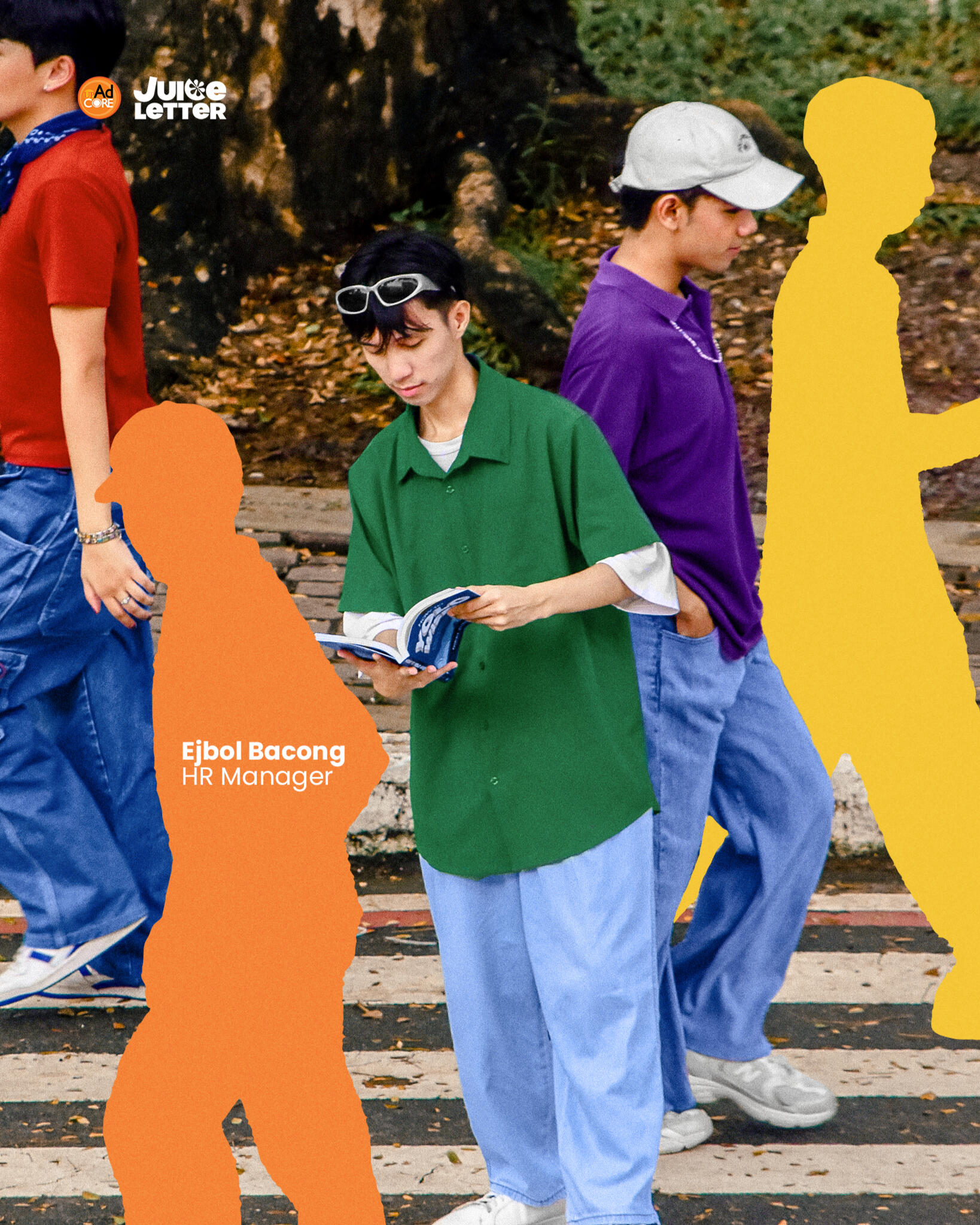
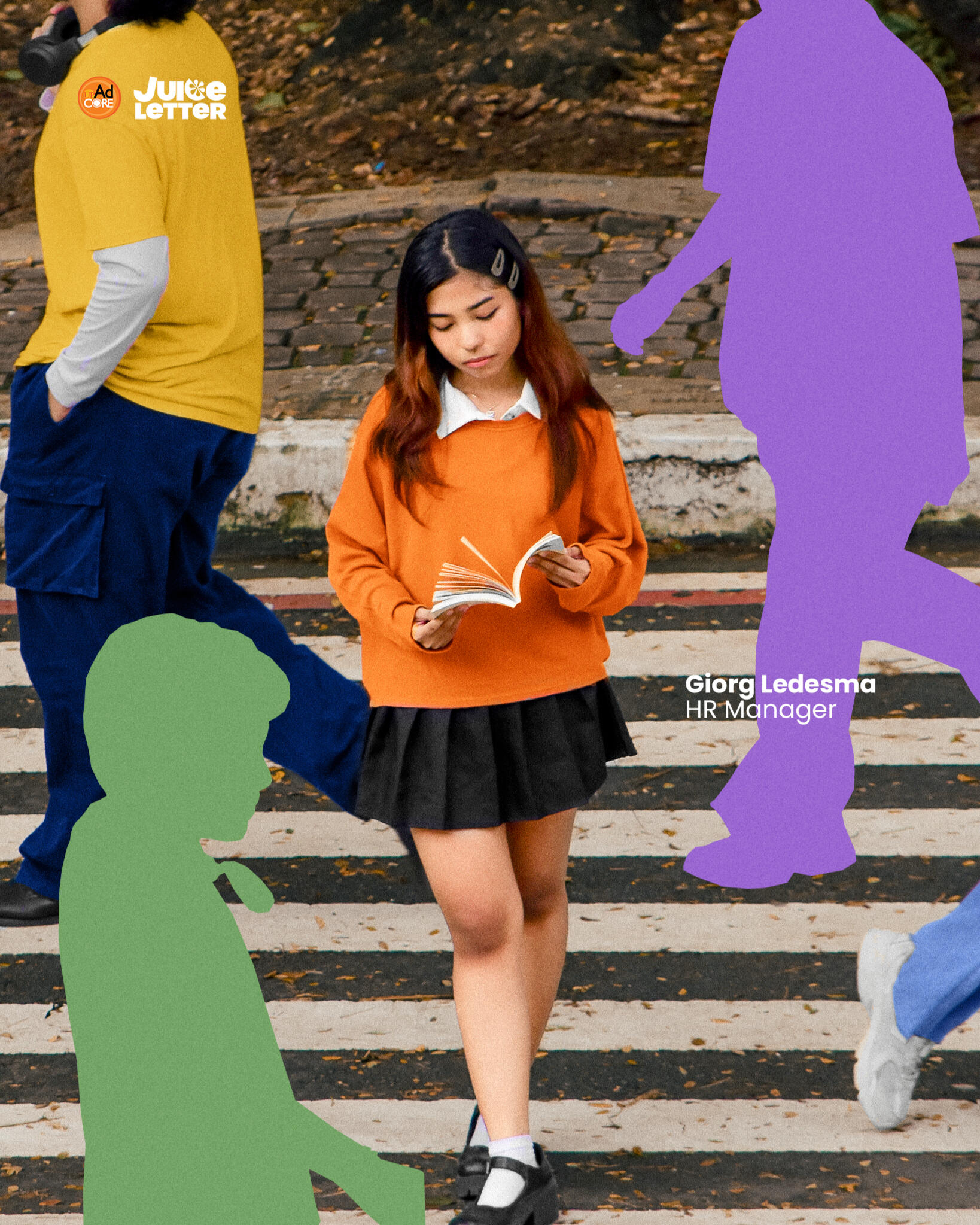
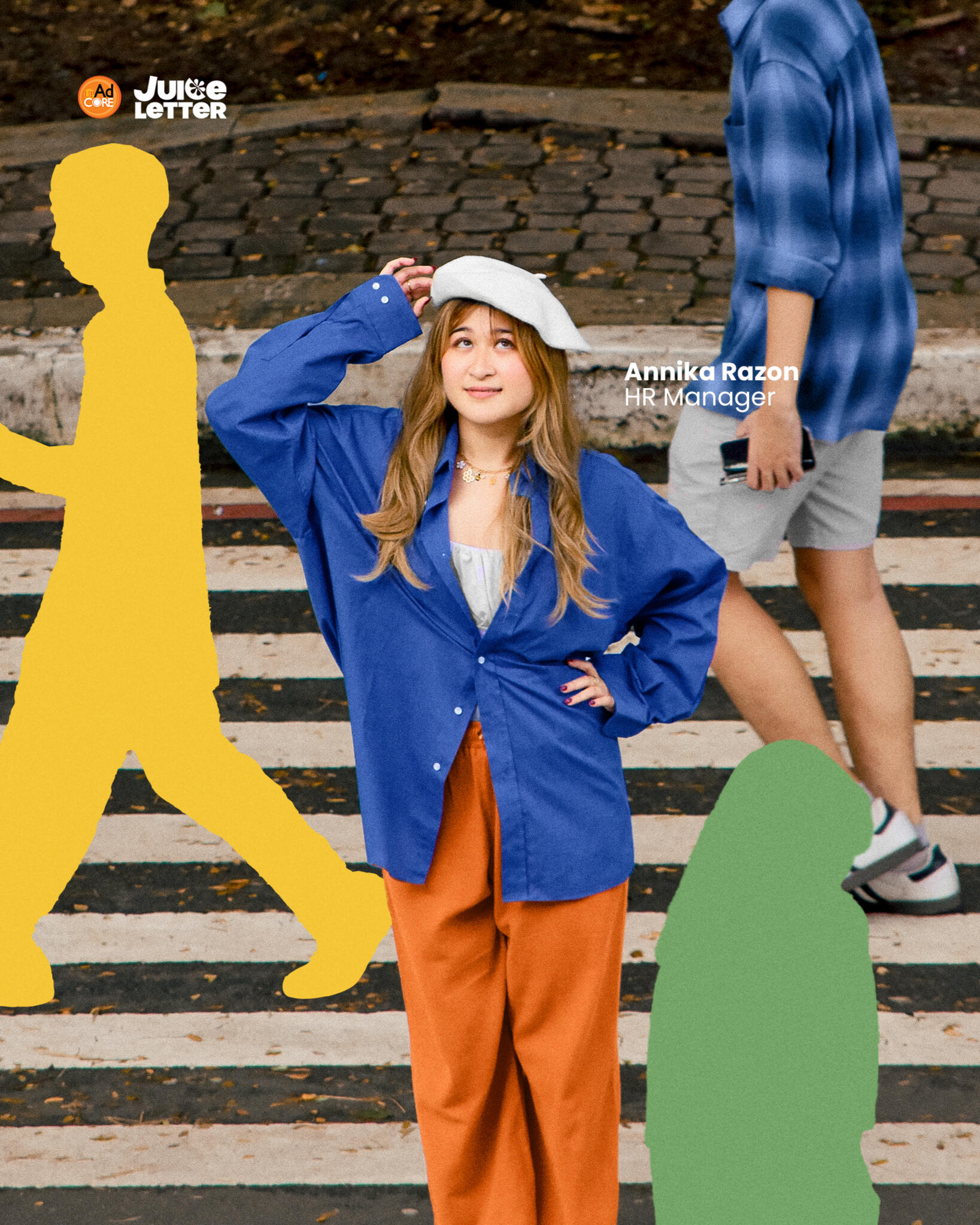
Ejbol Bacong, Ed Esparrago,
Giorg Ledesma, and Annika Razon
Human Resources Managers
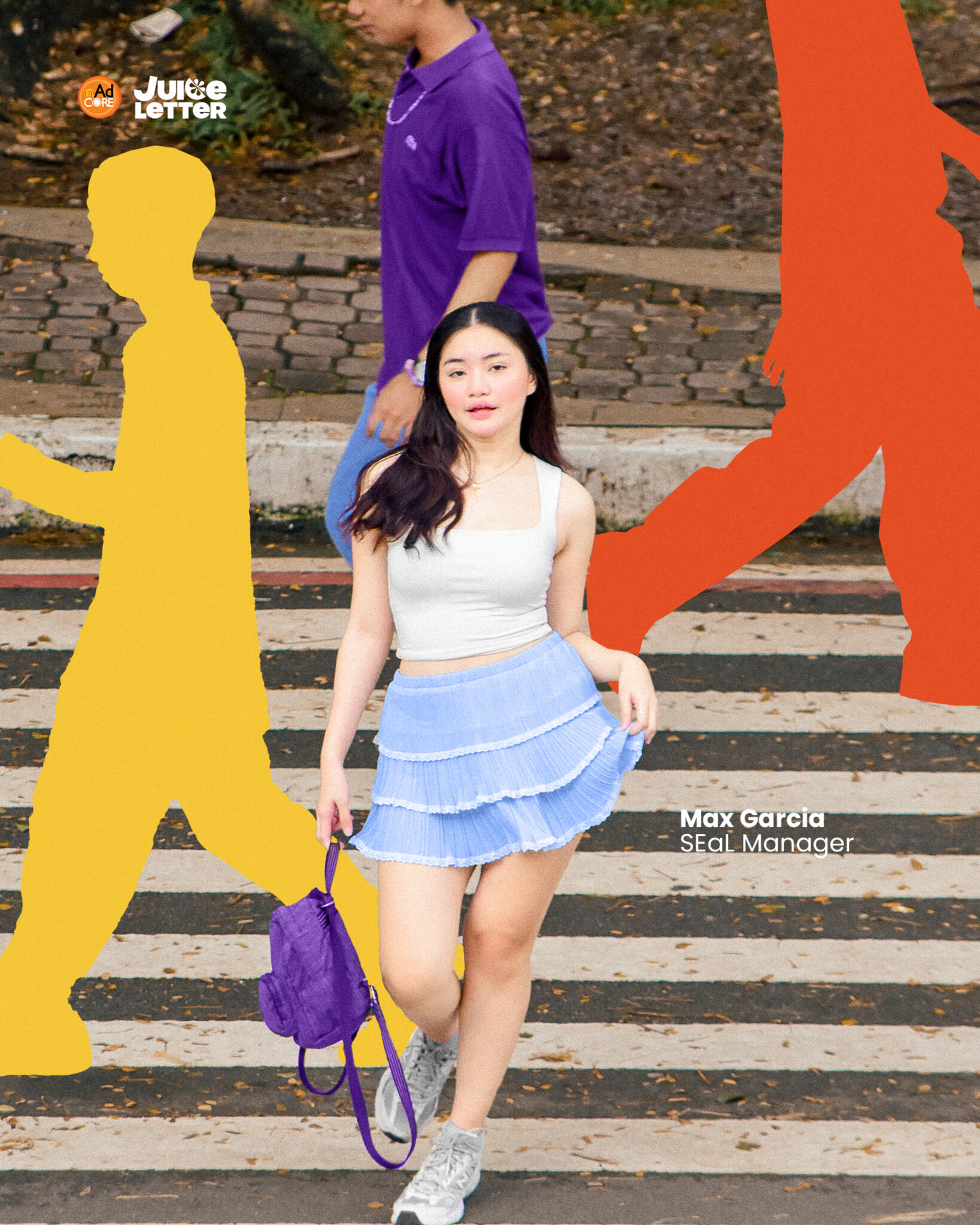

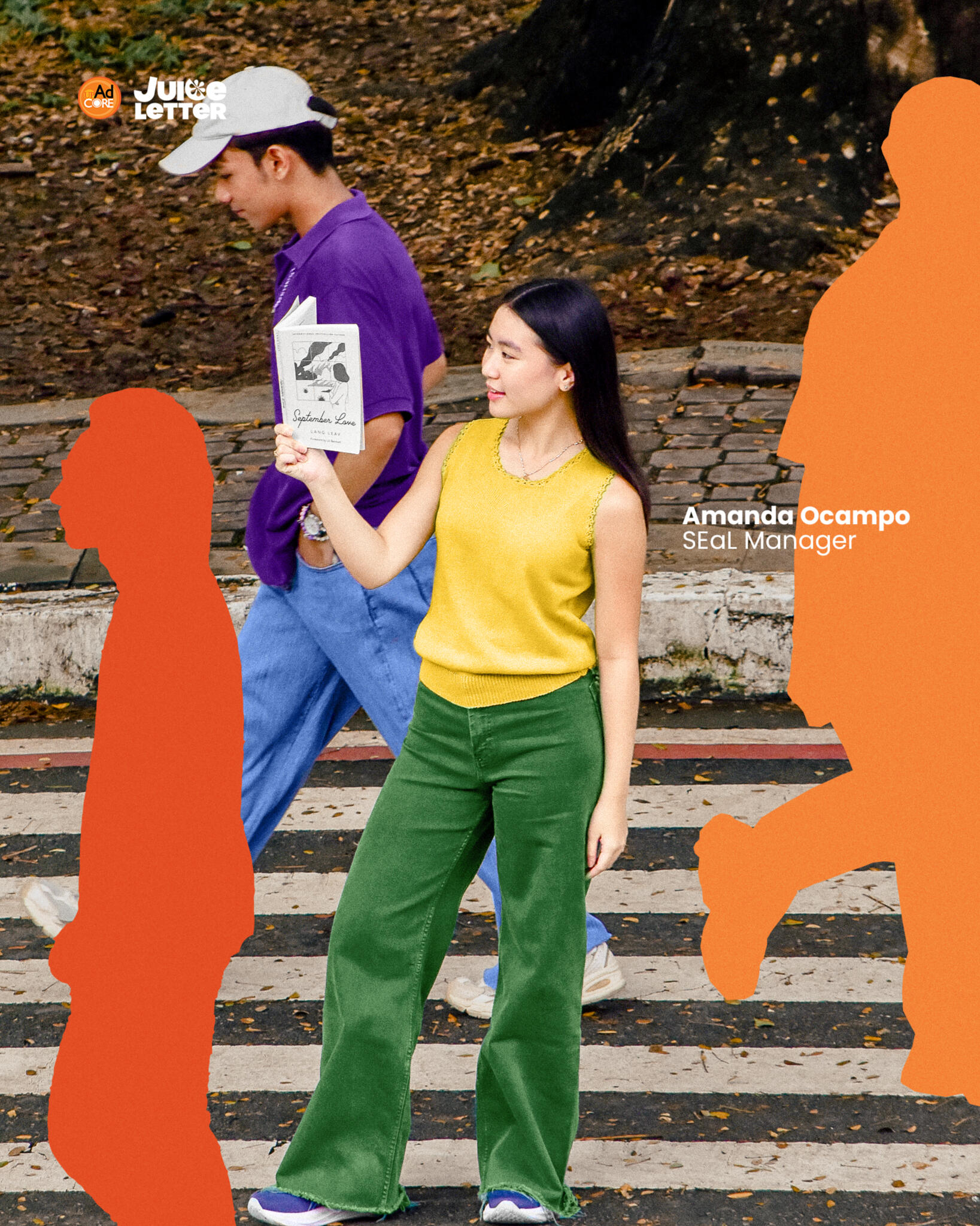
Max Garcia, Ian Mesa, and Amanda Ocampo
Special Events and Logistics Managers
Executive Core
Nadine Sandoval
President
Ino Laureta
Vice President for Public Relations and Promotions
Fiona Valenton
Vice President for Creatives
Kayleen Lopez
Vice President for Finance and Corporate Affairs
Sophia Espiritu
Vice President for Special Events and Logistics
Jade Ku
Vice President for Human Resources
Meet the 18.2 Team

Fiona Valenton
Project Director
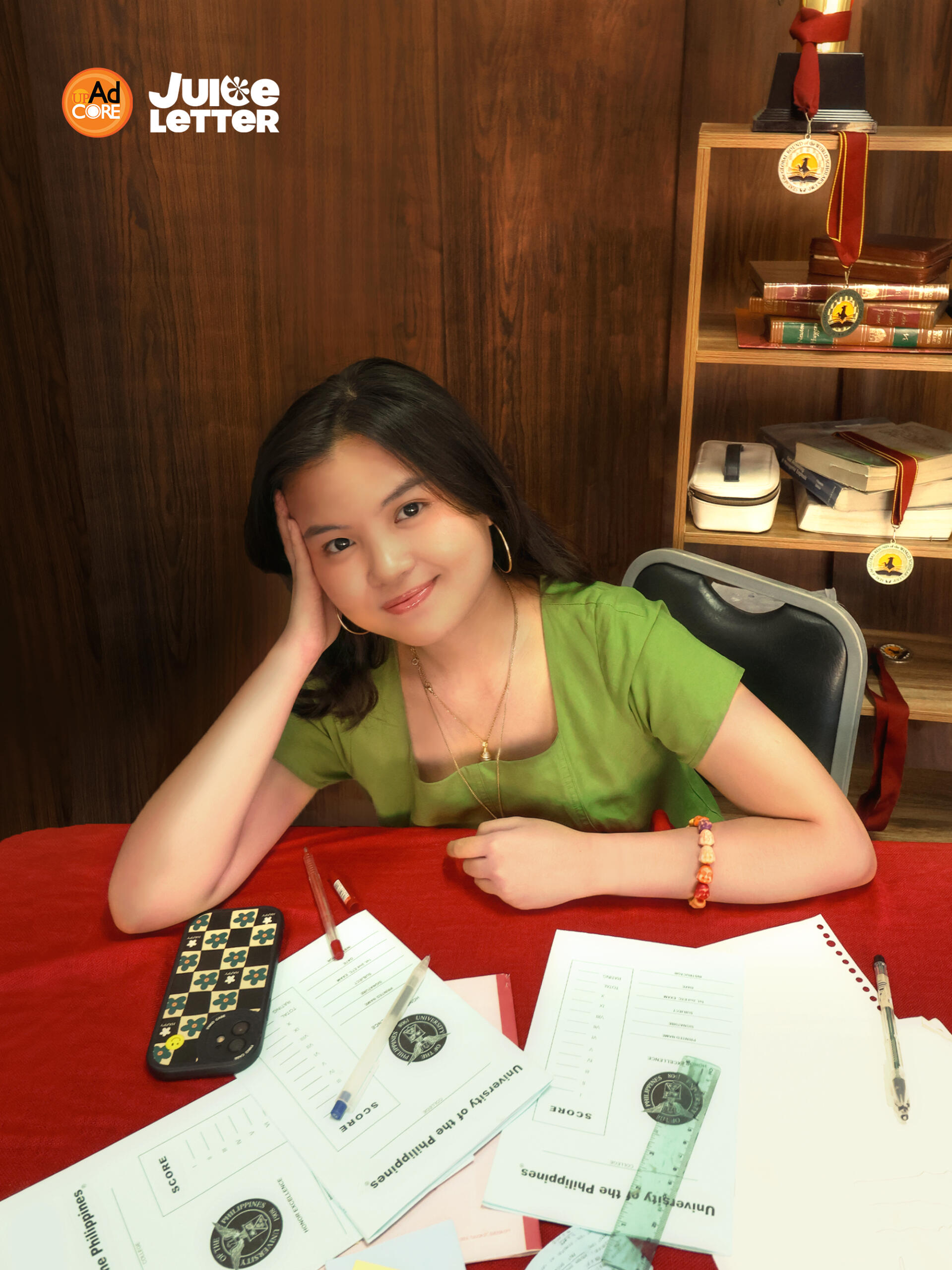
Sarah Alampay
Senior Art Director

Marga Relos
Creatives Manager
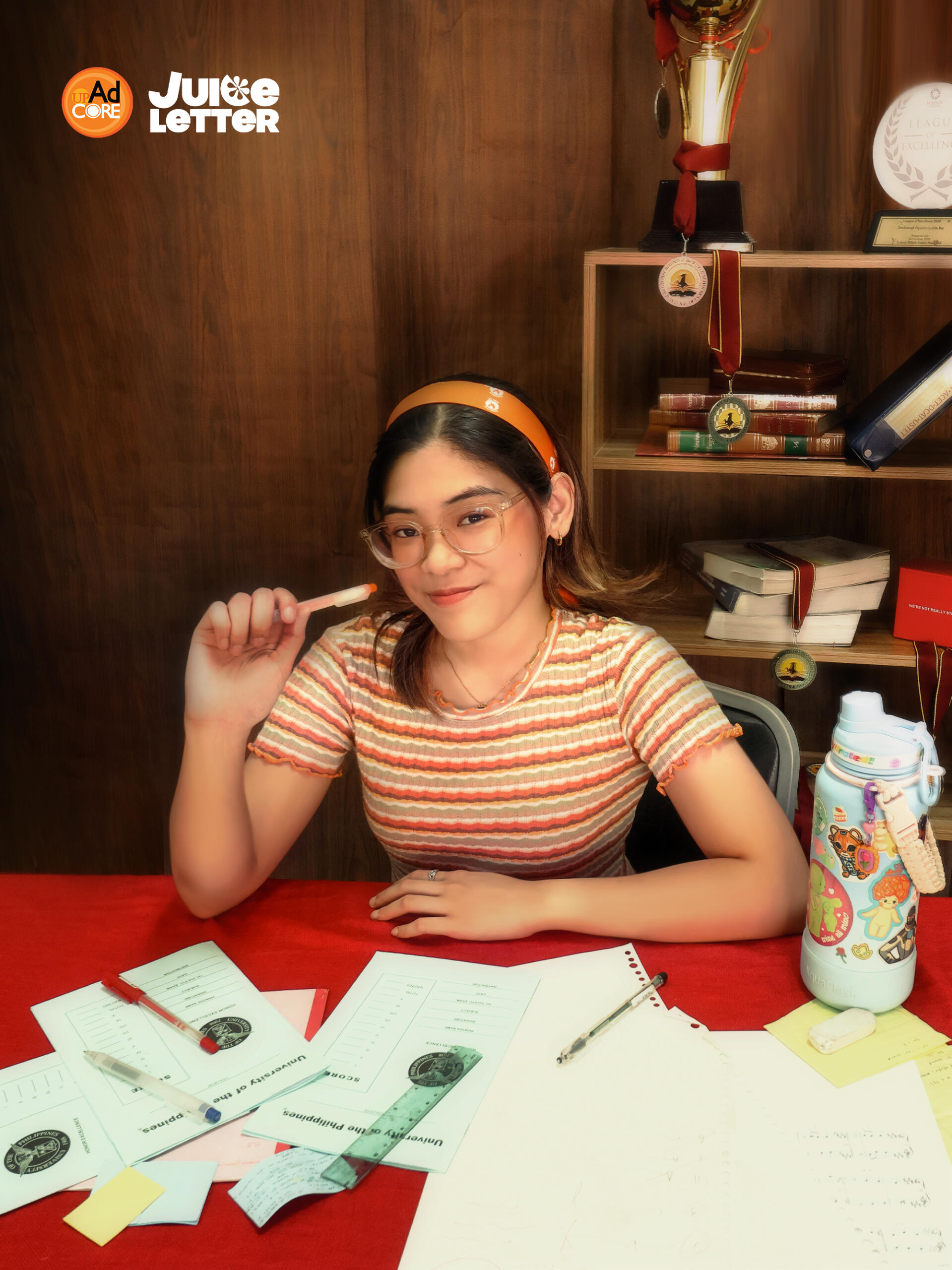
Samantha Santelices
Creatives Manager

Mayela Bautista
Creatives Manager

Valerie
Co
Public Relations and Promotions Manager

Elvin
Frias
Public Relations and Promotions Manager
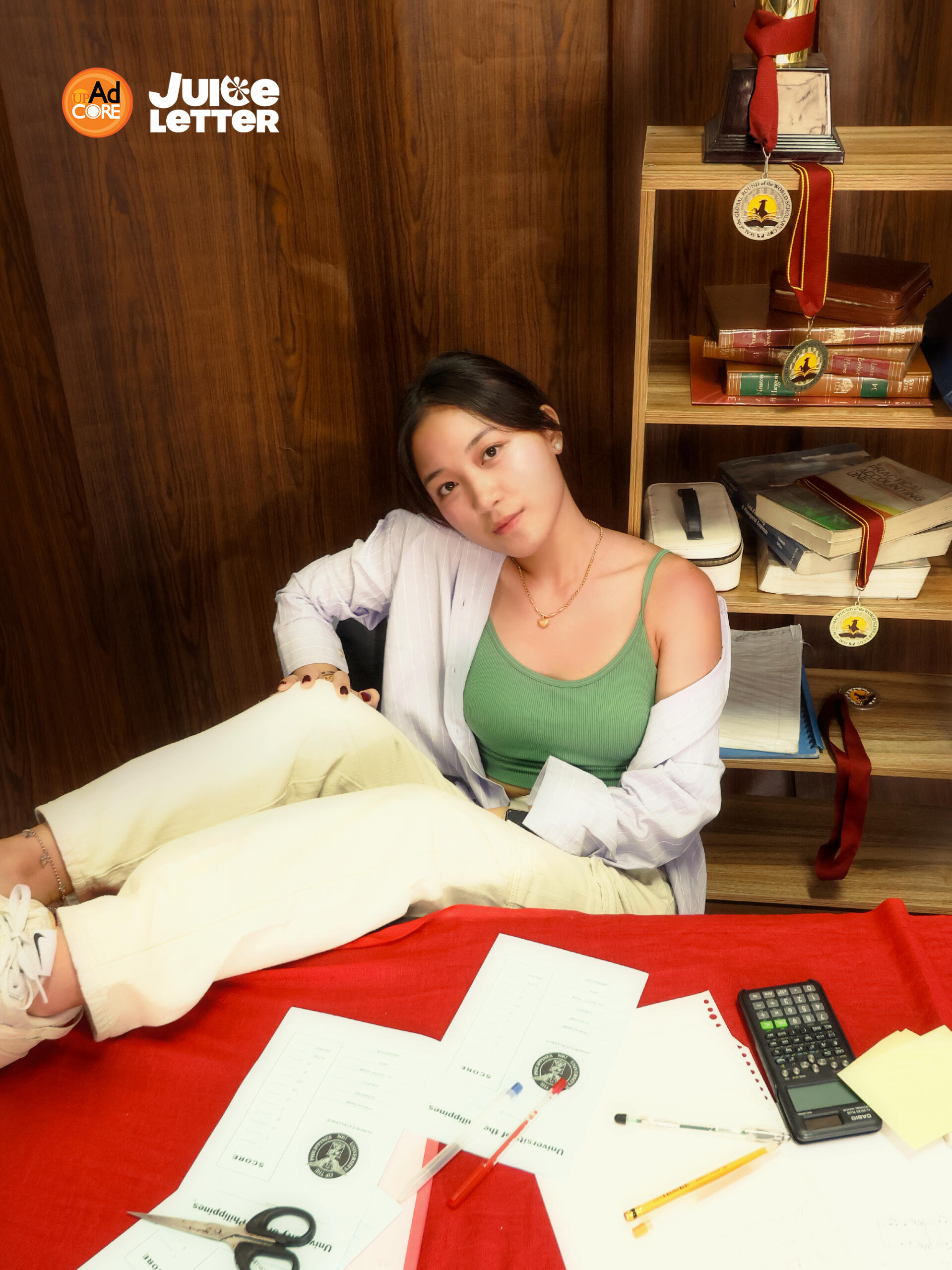
Khloe Hallare
Public Relations and Promotions Manager
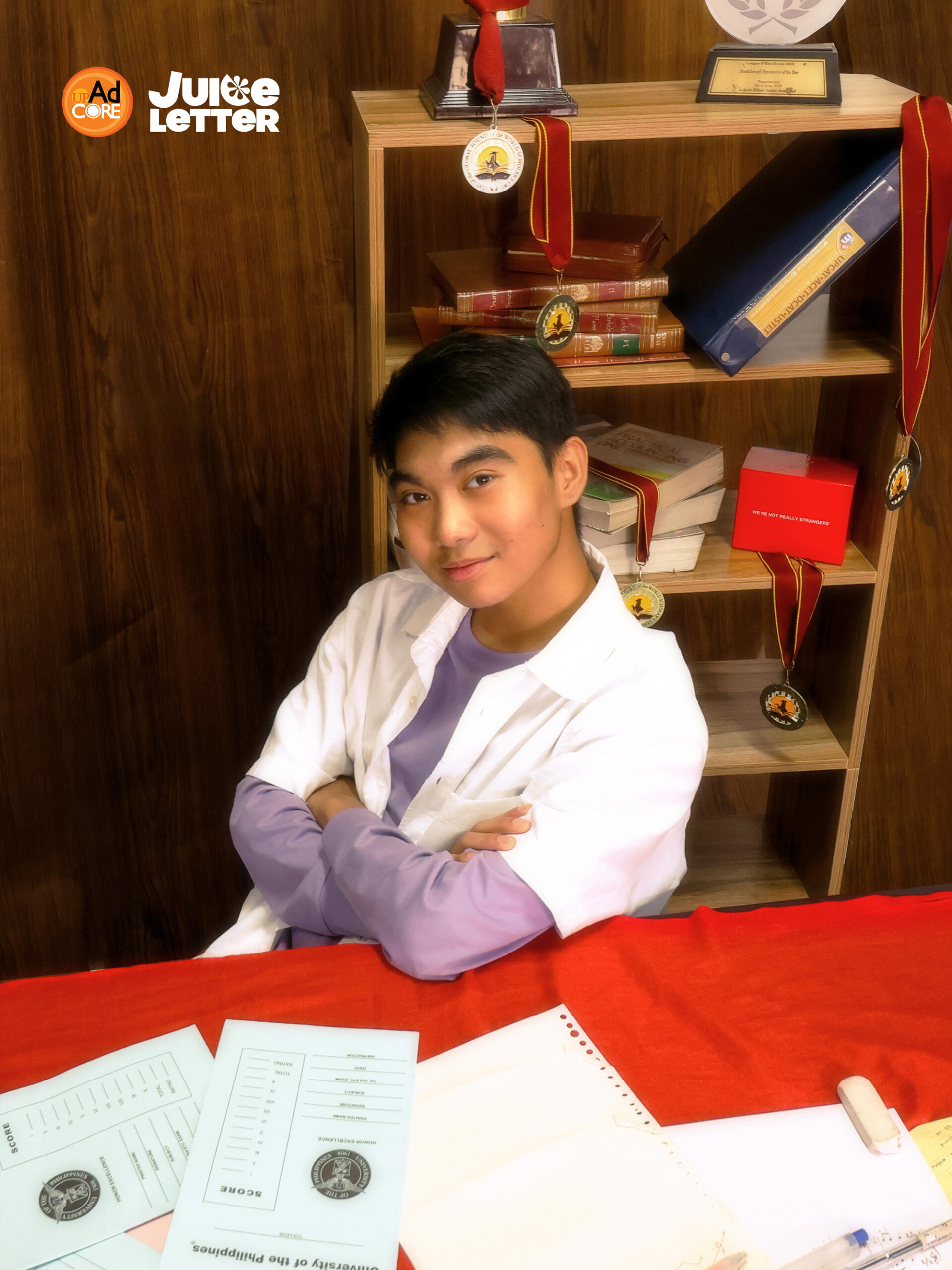
Hero Madayag
Public Relations and Promotions Manager
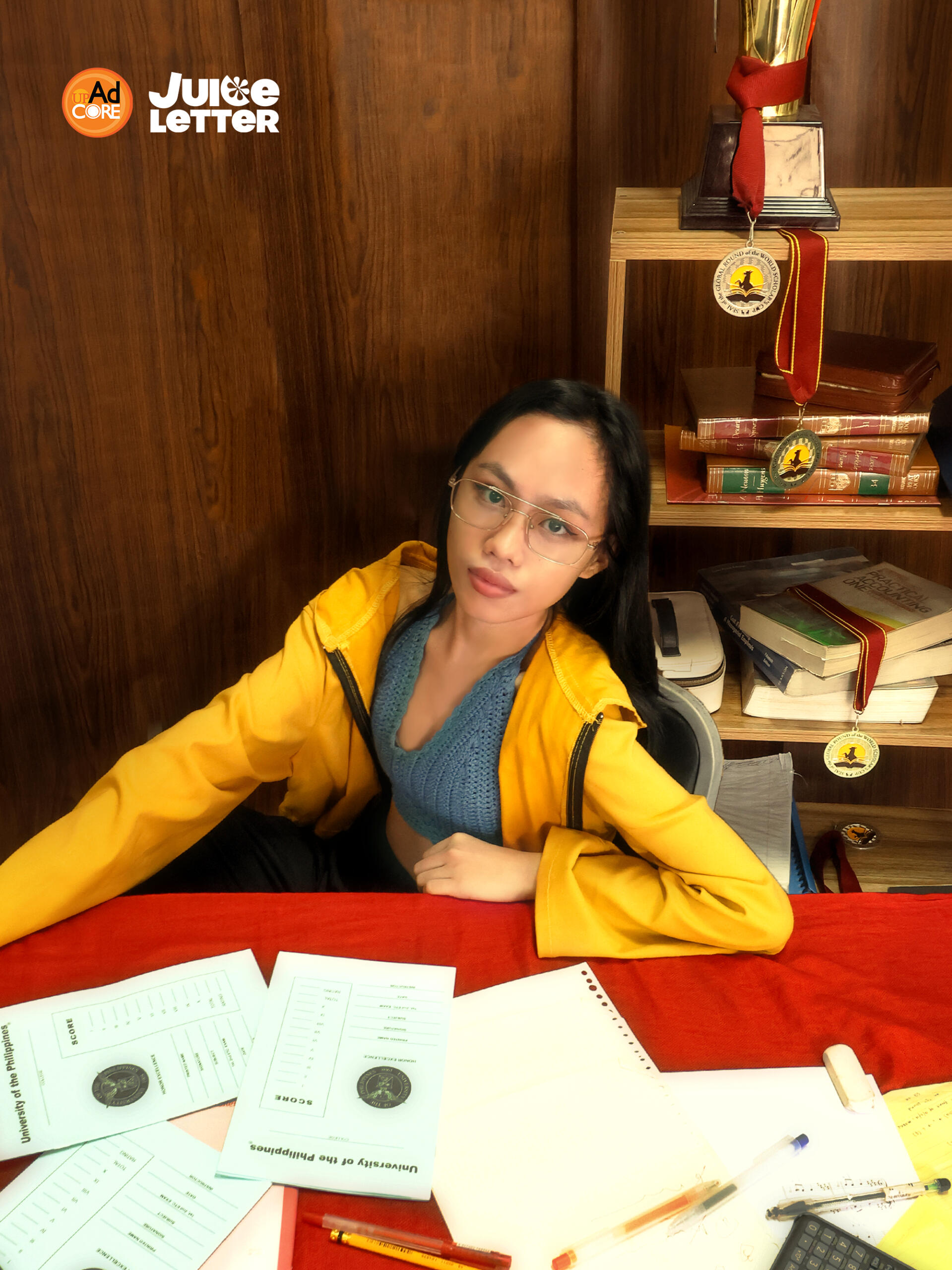
Icen
Vivo
Public Relations and Promotions Manager
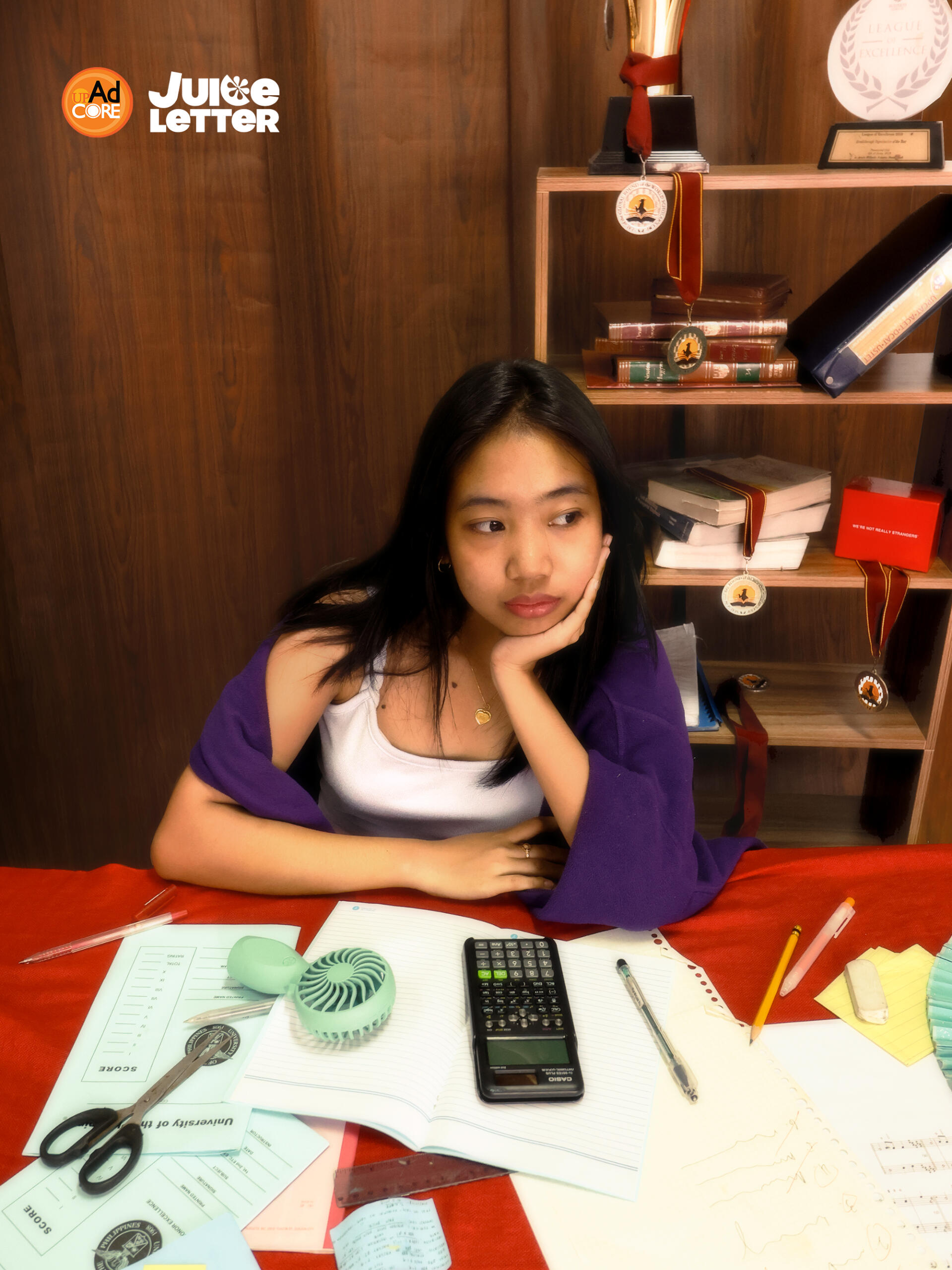
Khristine
Maguddayao
Finance and Corporate Affairs Manager
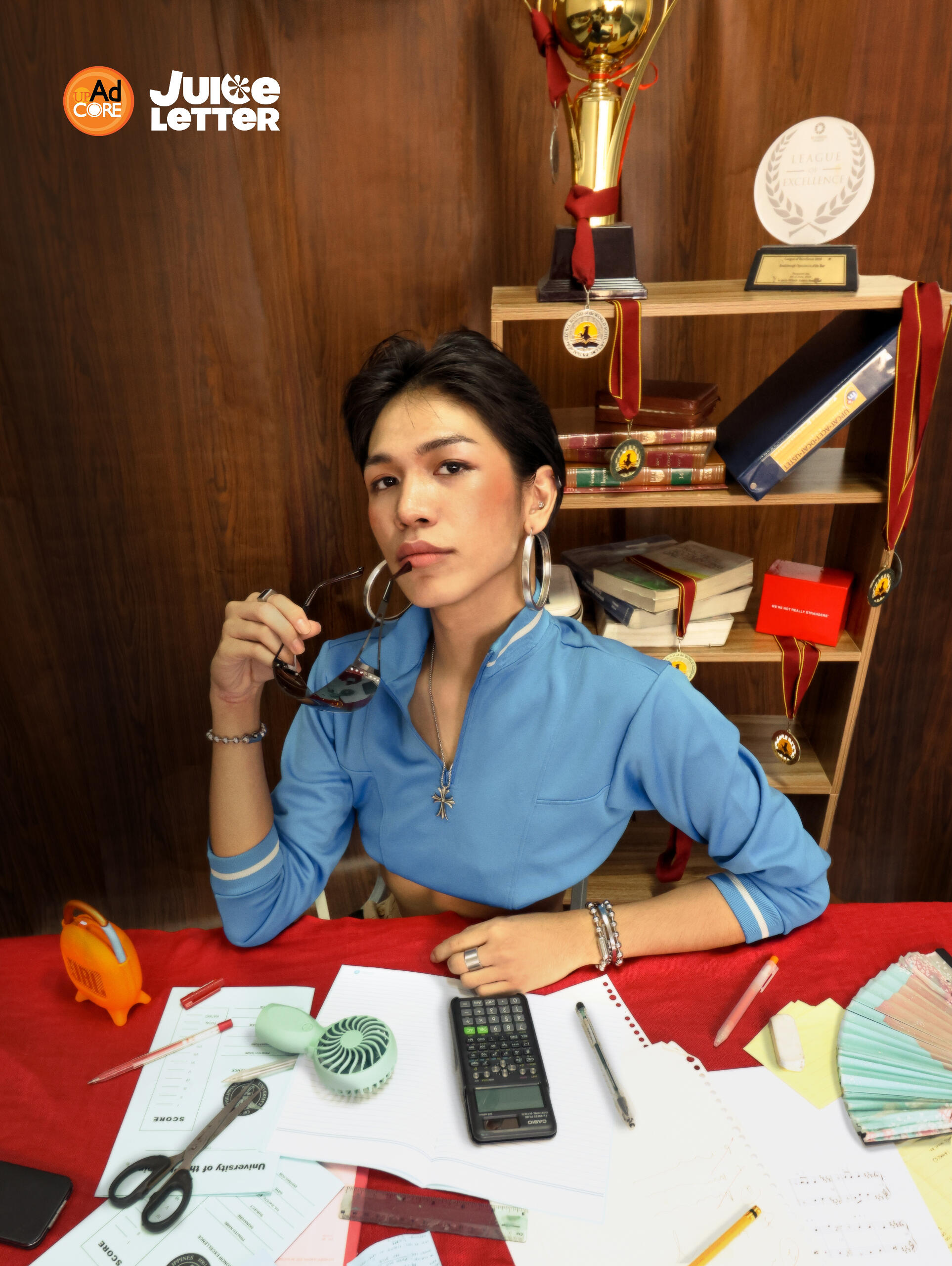
Dave
Oliver
Finance and Corporate Affairs Manager

Stephen Busico
Human Resources Manager

Elisse
Dizon
Human Resources Manager

Agatha Racoma
Finance and Corporate Affairs Manager
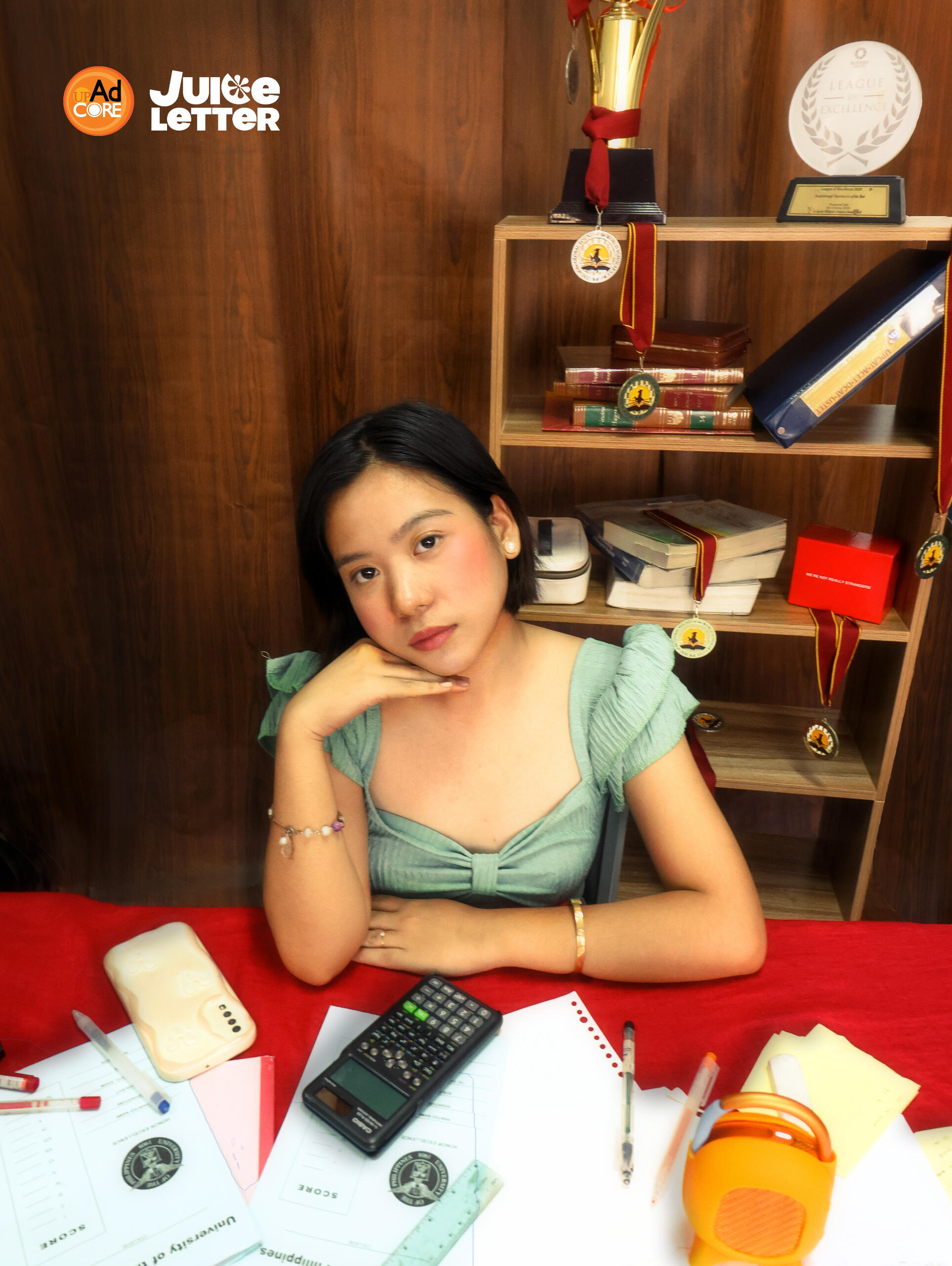
Janelle Santos
Human Resources Manager
Executive Core
Gabrielle Loisa Red
President
Katrina Janina Recto
Vice President for Public Relations and Promotions
DJ Diaz
Vice President for Creatives
John Neil Tumangan
Vice President for Finance and Corporate Affairs
Jen Abigail Alano
Vice President for Special Events and Logistics
Anne Pearl Cayabyab
Vice President for Human Resources
Contributor
AJ Valdez
Photojournalist
Meet the 18.1 Team

Shaun Peregrina
Editor-in-Chief

Fiona Valenton
Creative Director

Sarah Alampay
Chief Layout Artist
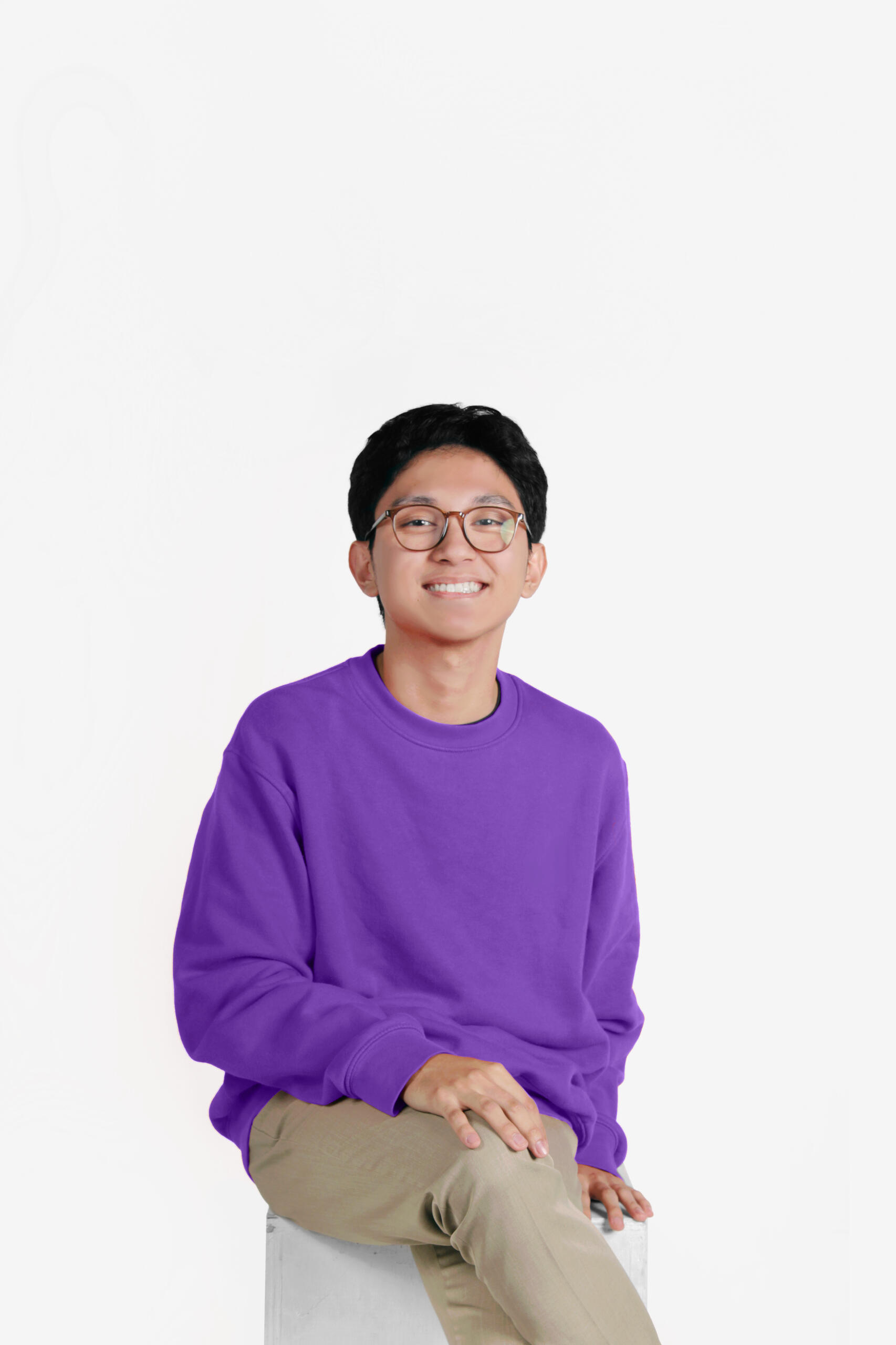
Paul Castillo
Chief Media Artist
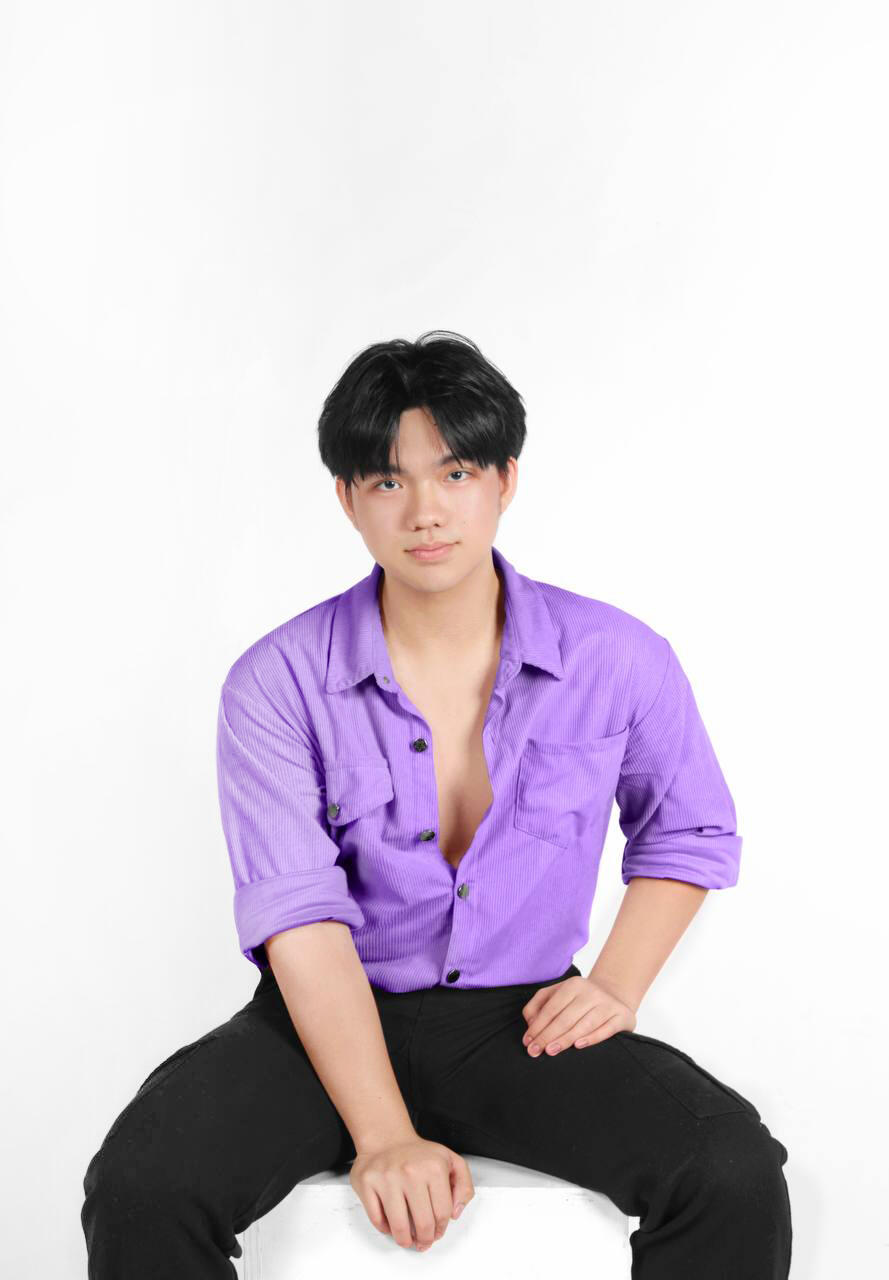
Aidrey Garcia
Chief Graphic Artist

Monique Gavan
Head Digital Editor

Maitreya Paredes
Associate Digital Editor
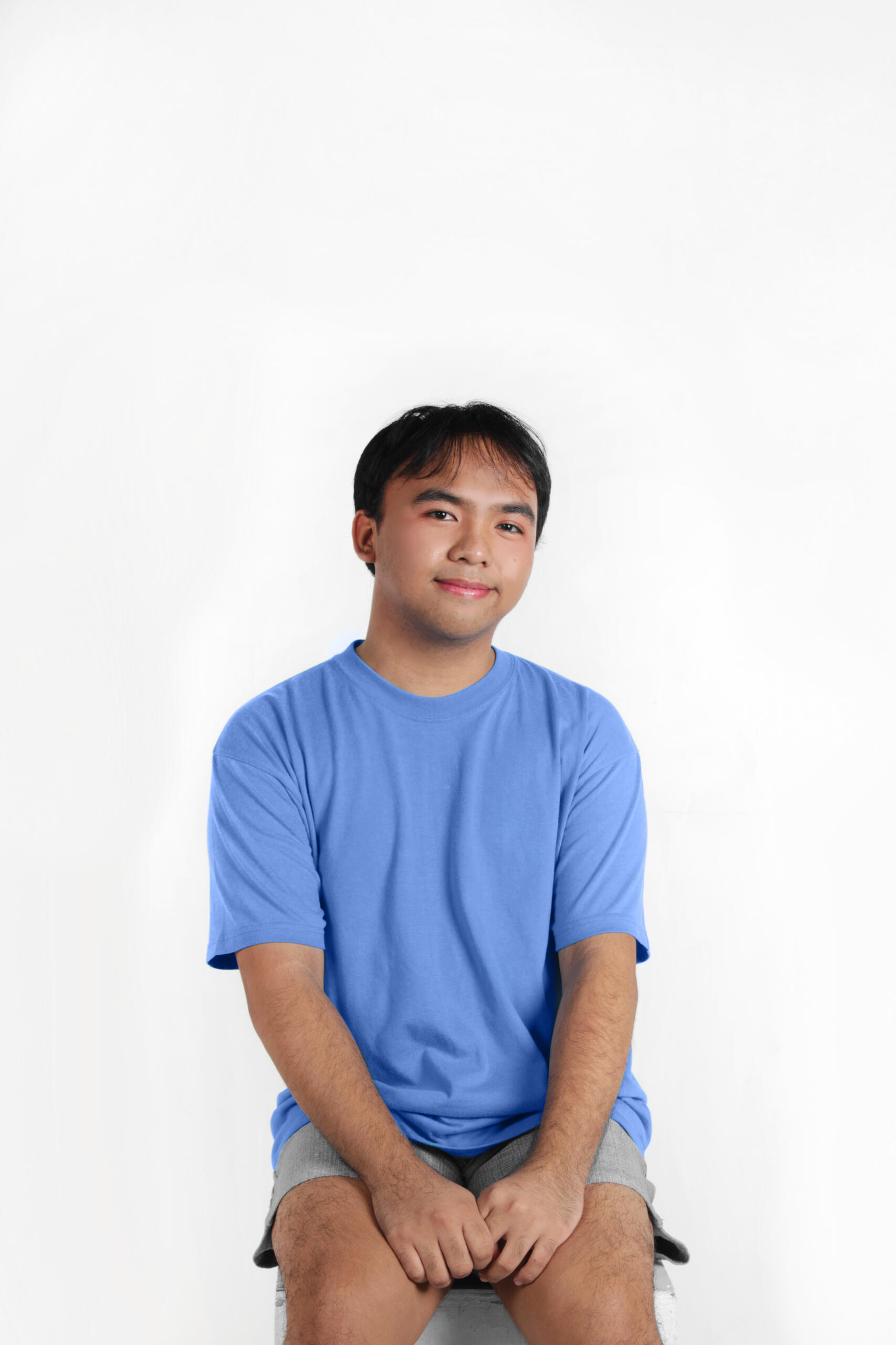
Lester Laureta
Head Copy Editor

Kayleen Lopez
External Business Manager

Laurein Mateo
External Business Manager

Julia Saure
Chief Associate Manager

Kym Dating
Internal Business Manager

Jecri Novilla
Head Correspondent
Executive Core
Gabrielle Loisa Red
President
Katrina Janina Recto
Vice President for Public Relations and Promotions
DJ Diaz
Vice President for Creatives
John Neil Tumangan
Vice President for Finance and Corporate Affairs
Jen Abigail Alano
Vice President for Special Events and Logistics
Anne Pearl Cayabyab
Vice President for Human Resources
Contributors
Jewel Elizabeth Enrile
Copywriter
Adonis Cabela
Creatives Manager
Randa Ancheta
Human Resources Manager
Stephen Daniel Busico
Photojournalist
Like what you see?
Connect
with us!
Juiceletter Articles
Zest in Every Hit!
The Maroon Stories Issue
October 28, 2024
TL;DR Sure ka na ba
sa Program mo?
By AM Kempis
November 9, 2024
Pasarap Lang Talaga: Expressing the Self through Style and Comfort in UP
By Karol Ramos
November 18, 2024
Stepping Closer: Reflections
of a Graduating Student
By Bianca Lucañas
November 18, 2024
Third Places:
The Need for Spaces
By Amanda Ocampo
December 10, 2024
Unleashing the Fighting Spirit: UAAP's Role in Empowering Our Community
By Justine Dabao
December 22, 2024
In-game Nanaman!:
Aral-Aralan plus
Ganda-Gandahan?!
By Mylo Solis
December 30, 2024
That’s a Wrap!: A How-to
on Overcoming Regrets and Missed Takes
By Maya Erfe
The Sabay Sasablay Issue
June 21, 2024
Seeds of Success: Sunflower Planting at UPD
By Elvin Frias
June 28, 2024
Buhay Ay 'Di Karera: Mid-College Crisis Reflection
By Elisse Dizon
June 21, 2024
No Block System: Making Friends in UPD
By Khloé E. Hallare
June 17, 2024
BS Org: Balancing the Org Life and Acads
By Hero Madayag
June 1, 2024
Shantay You Stay: A Queer Student's Journey in UPD
By Dave Oliver
May 17, 2024
I Did It MY WAY
By Khristine Maguddayao
May 17, 2024
The Art of Boredom: Escaping the Constant Overstimulation of Social Media
By Valerie Co
April 17, 2024
Keri Pa Ba Mhie? From Relaxation to Relentless Exams
By Valerie Co
April 10, 2024
Sir Jonas
People of UP Diliman
March 26, 2024
Danna
People of UP Diliman
March 19, 2024
Ate Bien
People of UP Diliman
December 9, 2023
Gusto Mo Bang Sumama?
By Hero Madayag
November 14, 2023
The Night We Called Our Own
By Lester Laureta
The Night
We Called
Our Own
Written by Lester Laureta
Photography by Stephen Busico
Published November 14, 2023
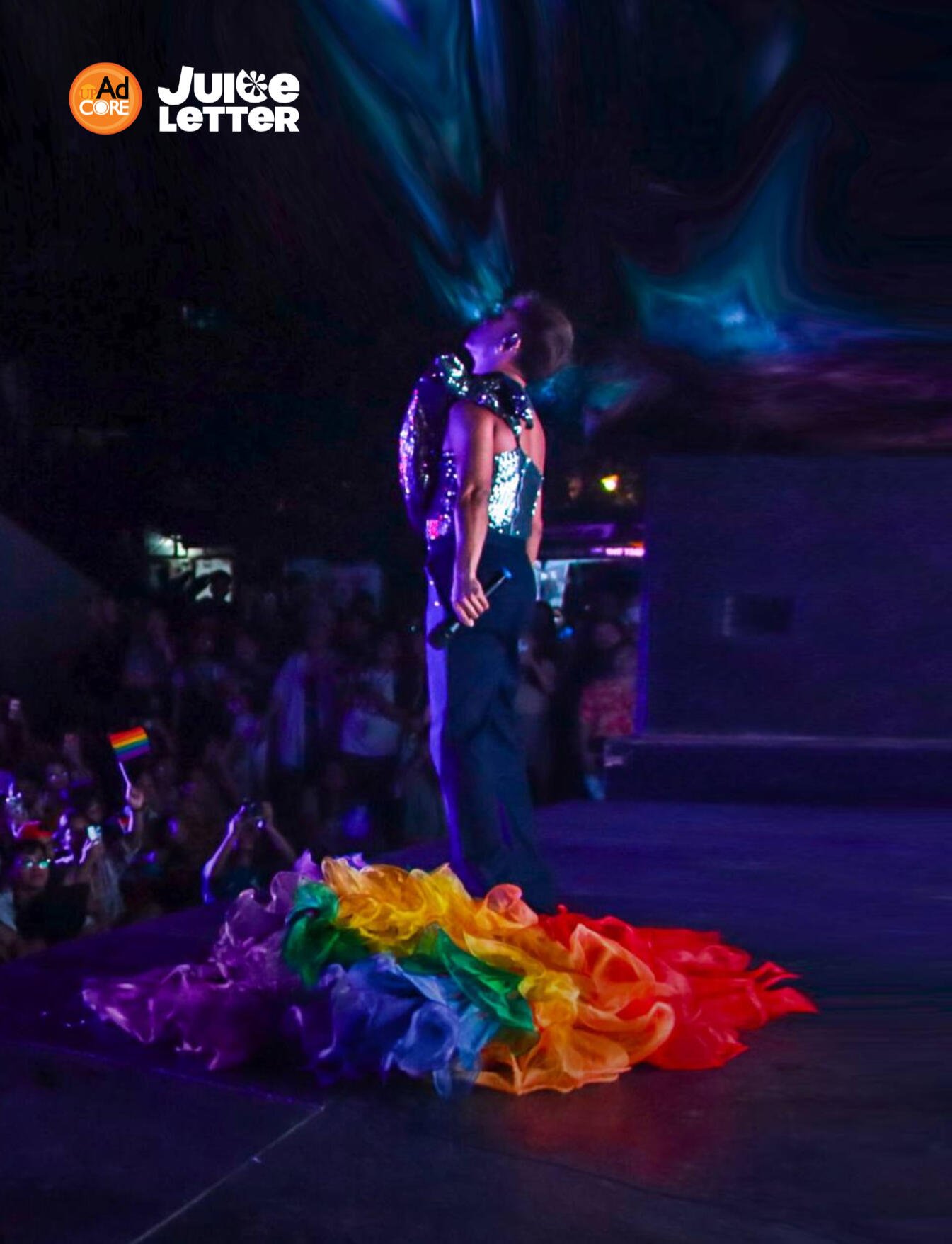
The UP Pride 2023 encompasses a range of activities within the university aimed at promoting awareness of social rights and combating discrimination against the LGBTQIA+ community.
In that dark night, I felt truly alive, surrounded by lights I've never seen before and people I did not recognize. How strange it was to feel that way. Perhaps we, the stars, belong to the same galaxy. Same energy, flair, and passion. The midnight rainbow appeared before our eyes, showing colors we take pride in.
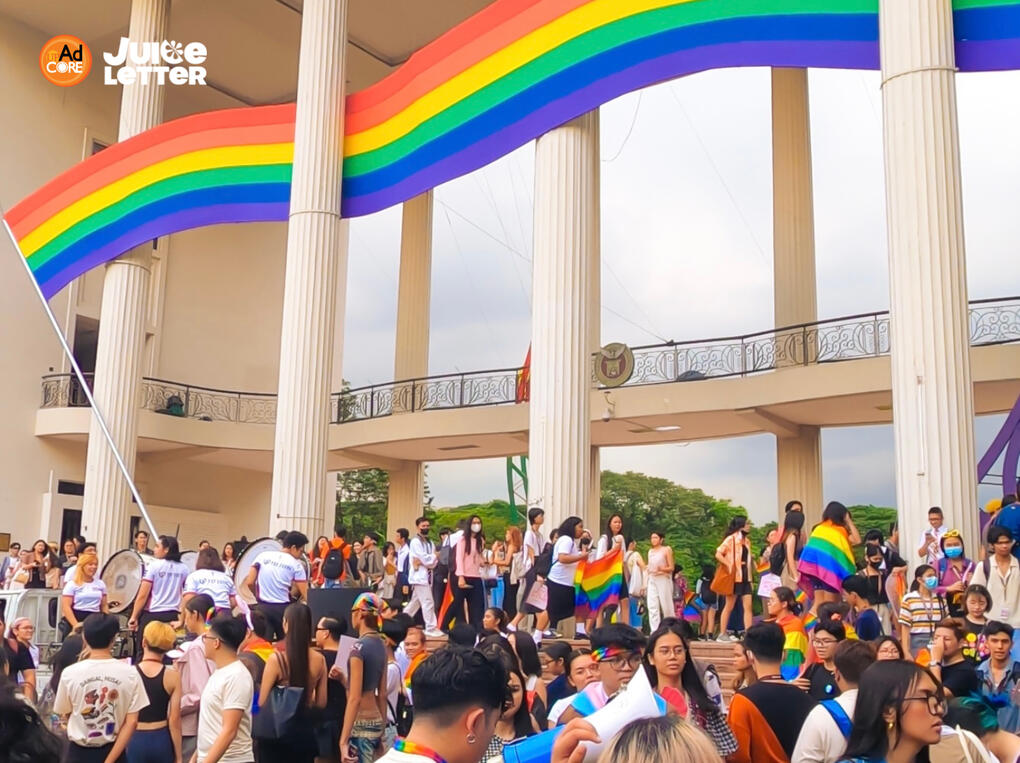
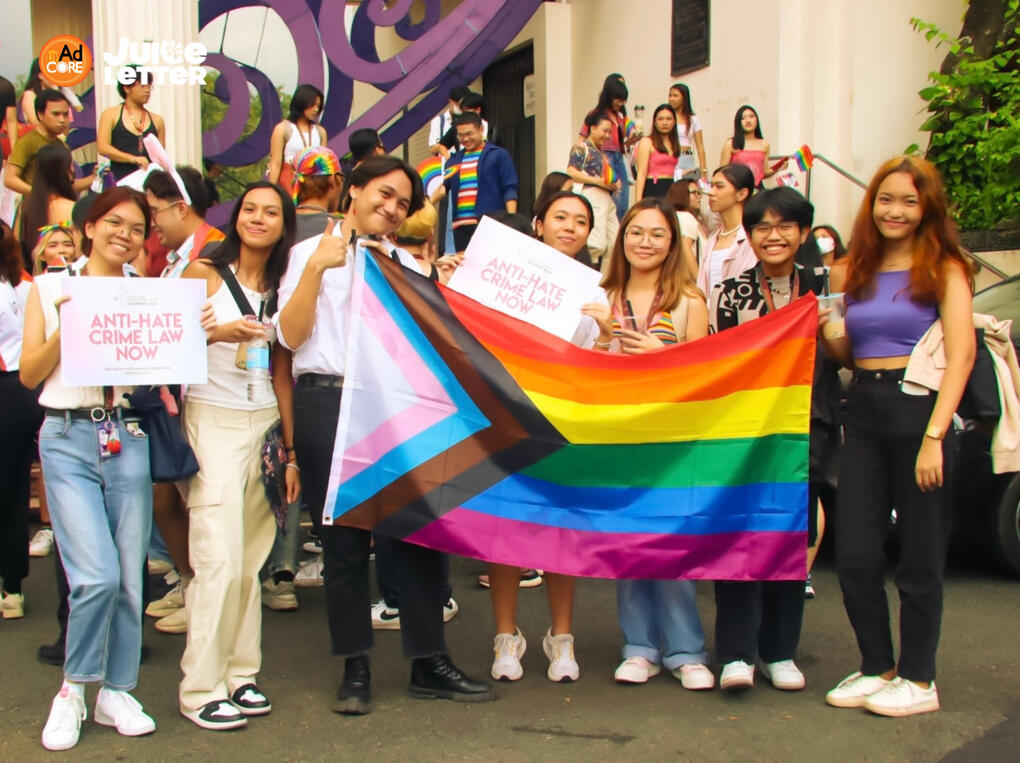
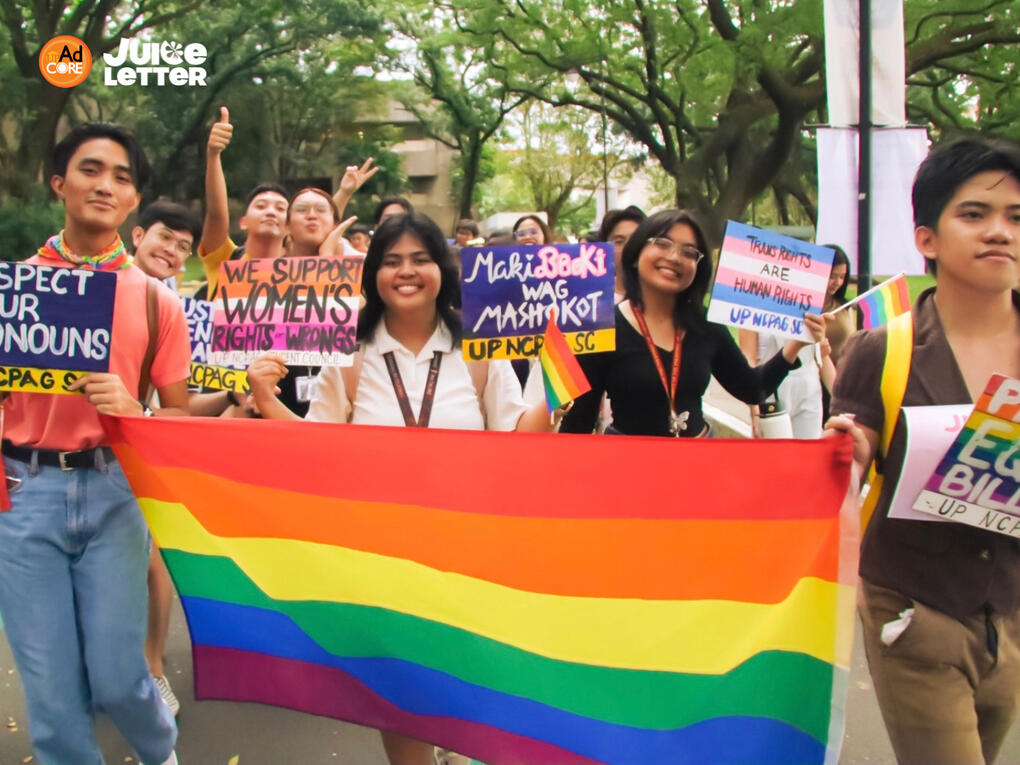
The weeklong celebration of UP Pride with the tagline “Dangal, Husay, Pagkakapantay-pantay” culminated with a parade that thundered through the academic oval. Together with the drums and cheers from the UP Pep Squad, the call for equality for the LGBTQIA+ community echoed. It was a refreshing sight to see – colorful flags and makeup all around, people sashaying in killer heels, and heartwarming hands clasped together by love.
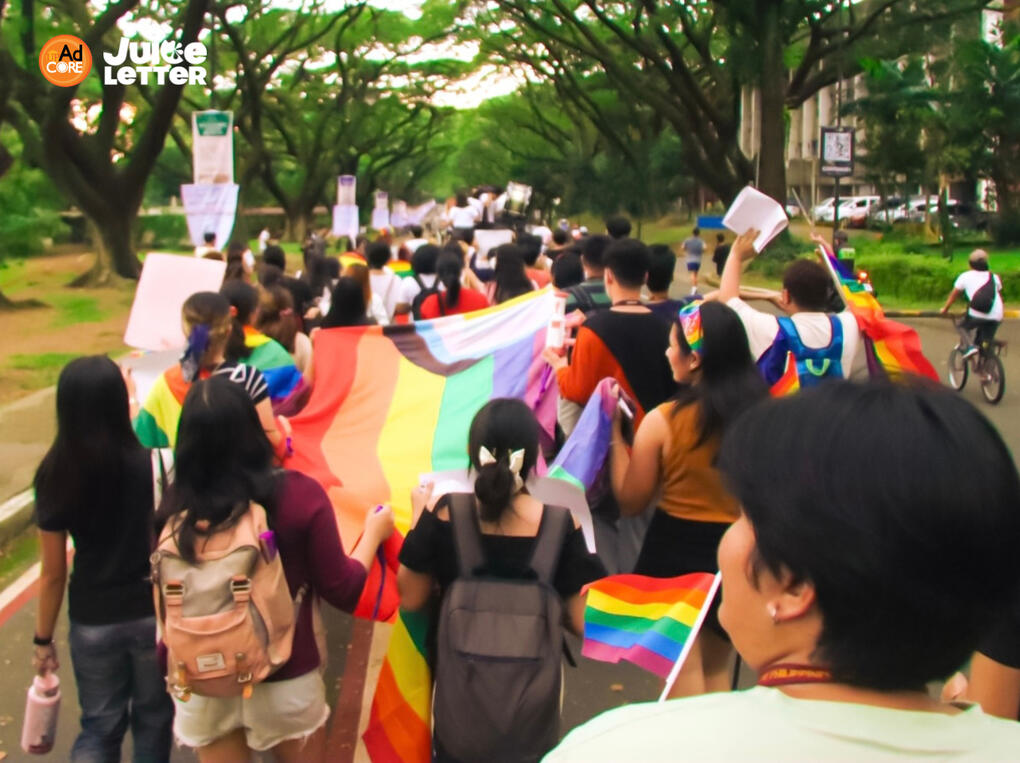
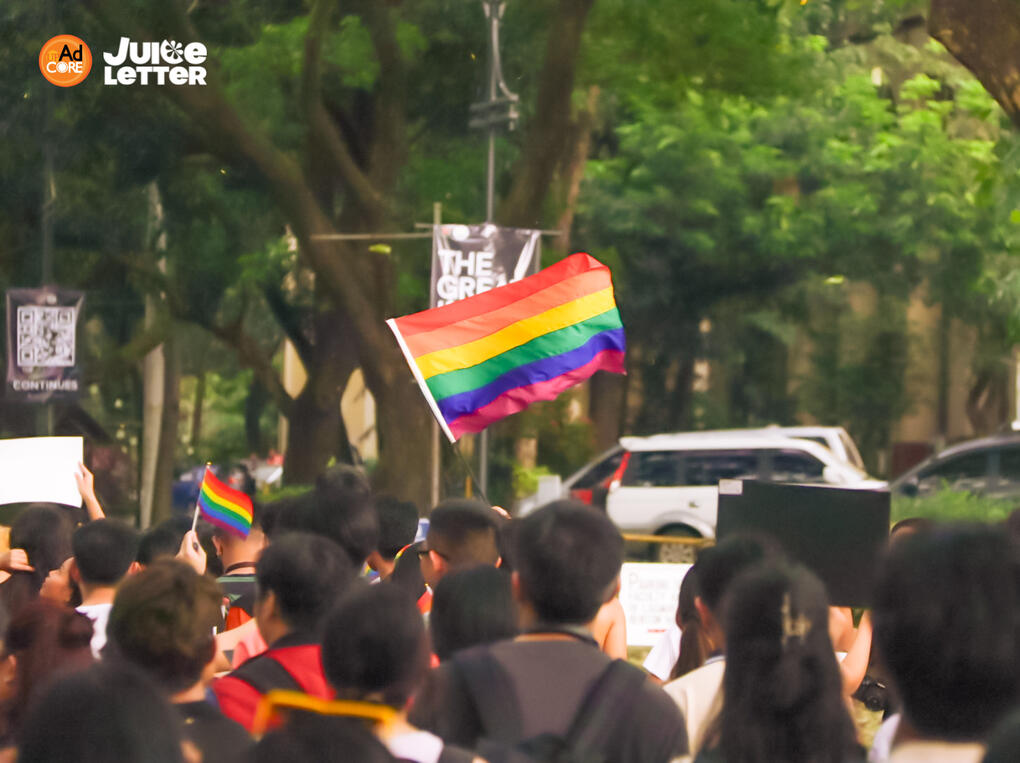
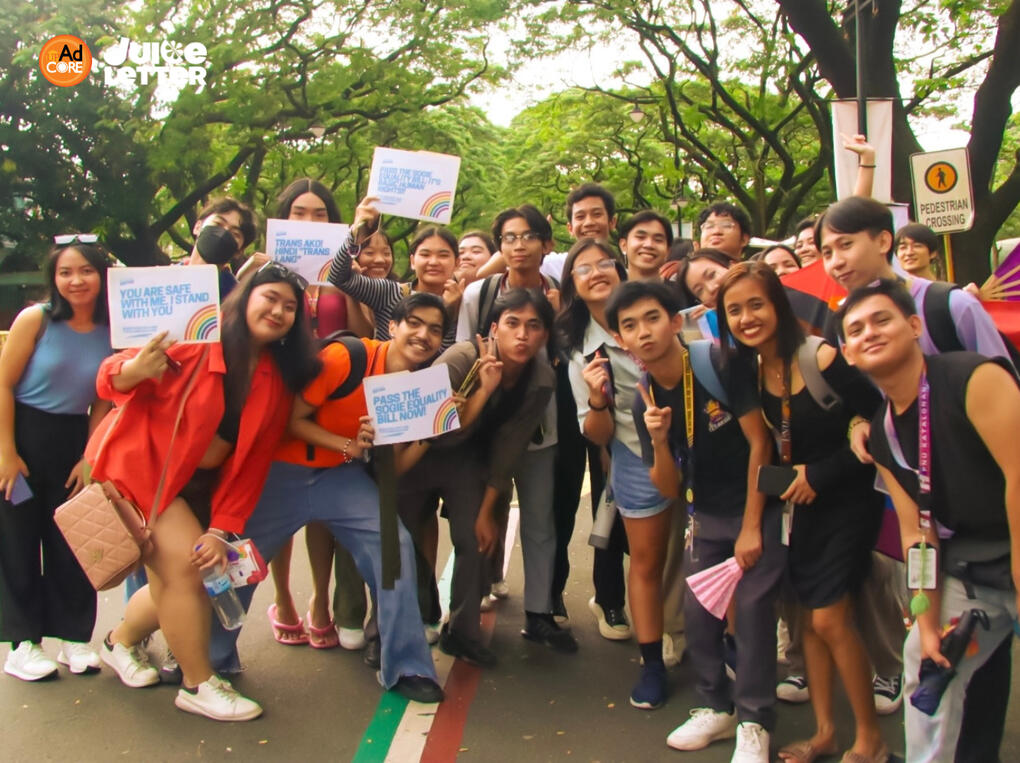
The Pride March was then followed by UP Pride Night that, with an estimated attendance of 2,000 people, treated Quezon Hall with celebratory musical and drag performances by renowned queer artists, including Sassa Gurl, Lady Gagita, Pura Luka Vega, and more.Sassa Gurl hit off the stage with her performance of Sulutera which made the audience feel feisty. Wearing only a tank top and low-rise jeans, she quipped, “Damang dama ang kabaklaan sa UP!” after her performance which was met with cheers from the crowd.The host then interacted with the crowd by asking the question ‘Bakit happy kapag may equality?’ which I was able to participate in. I answered that equality is the only way everyone can completely reveal themselves to the world without fear and any inhibitions. It felt so overwhelming and great at the same time to see the community agreeing on the same thing. An added bonus to the experience was that I was able to win a voucher because of it.That night was my first time watching drag performances. Performances like the death-defying stunts of Muah Dayaw and Riley Nicole and the colorful lip-synching of Lady Gagita of Katy Perry’s Fireworks were everything I expected of drag. However, what was surprising for me was the emotions and atmosphere felt during the performance of Pura Luka Vega. The music blasted the hall but everybody seemed sympathetic to the very person smiling on the stage. Eyes were filled with admiration but with heavy hearts as we all watched the queen who now symbolizes strength and courage in the community. I asked myself, how can a drag performance be this bittersweet?Pura Luka Vega, or Amadeus Fernando Pagente out of drag, provoked a furor early this year after belting out the remix version of ‘Ama Namin (Our Father)’ while wearing Catholic vestments. Vega is a known drag artist who depicts the image of Jesus in some of their looks. Hence, in a predominantly Christian country, where almost 80% of Filipinos classify themselves as Roman Catholic, Vega’s artistry was met with disappointment and hostility. Local municipalities declared Vega as persona non grata, which refers to individuals or groups deemed as unwelcome in a particular locality. Cities that did so include Cebu City, Laguna, and the City of Manila.However, the worst happened when Pura Luka was arrested over the violation of Revised Penal Code Art. 201 which prohibits the circulation of “immoral doctrines, obscene publications and exhibitions, and indecent shows.” Luka was allowed to post bail and was released on October 7.
“Do you,” Pura Luka remarked as they gave words to the community that mirrors their story – going through public scrutiny and humiliation for being and expressing who they are and what they believe in.“Walang mali sa ‘yo, [dahil] perfect ka, gawa ka ni Lord,” they added as a nod to the legal battle they are facing right now.And at that exact moment, I was able to answer my question. Drag performance is more than just the flamboyant production or makeup or outfit, but an art. An art that, just like any other, is an expression of self, emotion, and identity. Drag is more than what it is. Drag is painting, drag is music, drag is sculpture, drag can even take everyone to heaven – for all the good reasons.
Drag performance is more than just the flamboyant production or makeup or outfit, but an art. An art that, just like any other, is an expression of self, emotion, and identity. Drag is more than what it is. Drag is painting, drag is music, drag is sculpture, drag can even take everyone to heaven – for all the good reasons.
The UP Pride 2023 encompasses a range of activities within the university aimed at promoting awareness of social rights and combating discrimination against the LGBTQIA+ community. The annual event started in Diliman in 2008, institutionalized in 2016, and went systemwide in 2021.
Gusto Mo Bang Sumama?
Written by Hero Madayag
Photography by Stephen Busico
Published December 9, 2023

The UP Varsity Pep Squad and the UP Men’s Basketball Team gave us their Maroon fighting spirit during the UAAP Cheerdance Competition and the Men’s Basketball Finals, Season 86. The drive they showed was something I could feel even from a distance, something that I could still feel radiating in me for days after the event.Unfortunately, I wasn’t able to secure a ticket to watch the UAAP Cheerdance Competition inside the Mall of Asia Arena.
Fans from the schools that are competing–University of the East, National University, Ateneo de Manila University, Adamson University, University of the Philippines, De La Salle University, Far Eastern University, and University of Santo Tomas–have gathered together to support their universities.

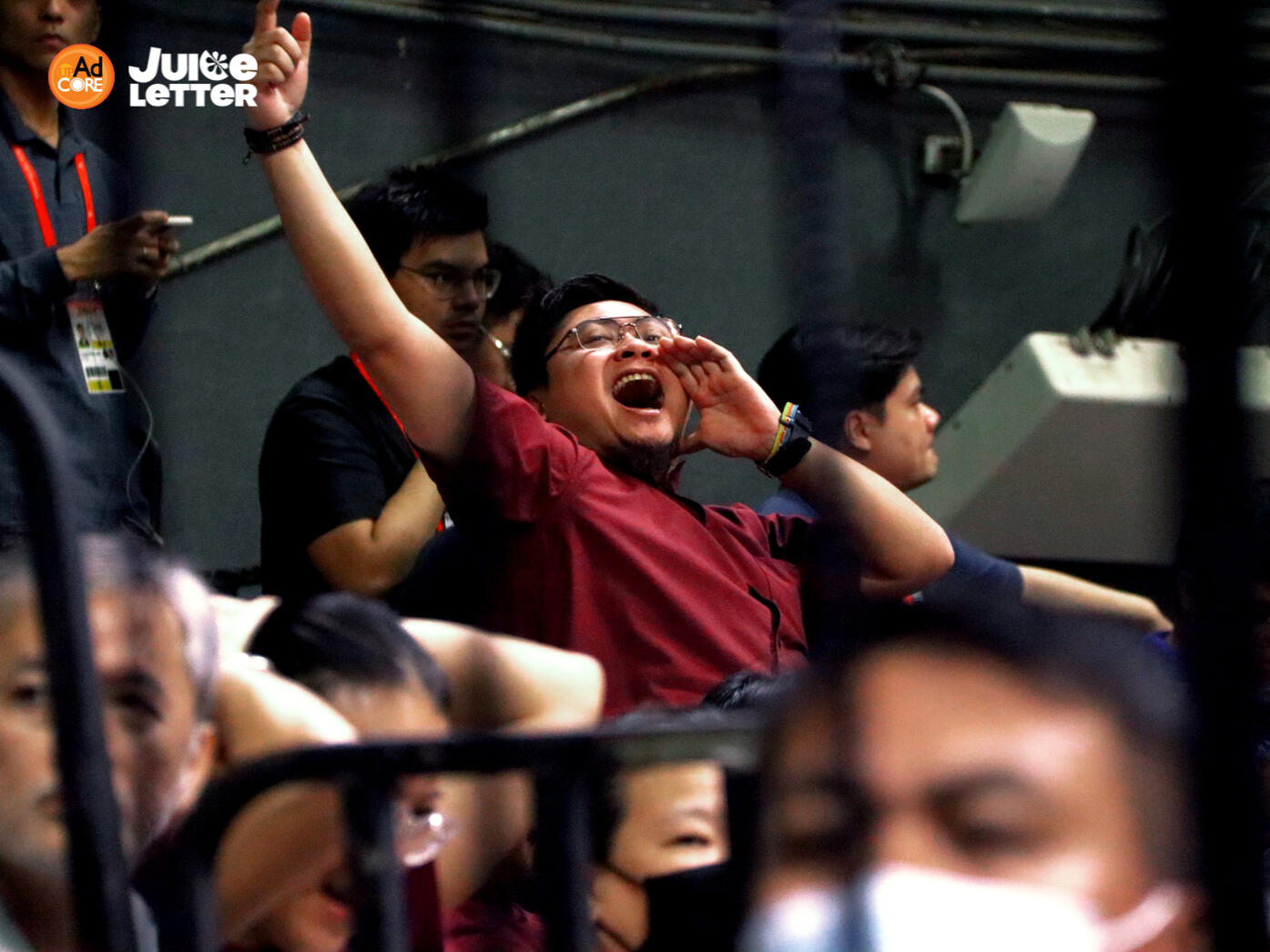
I was busy working on my homework when I realized that the UAAP Cheerdance Competition was going live. I turned on my iPad, went to Facebook, and searched “UAAP CDC” in hopes that I would find a page that was streaming the event, and luckily enough, I was able to find multiple.As I tried to balance my focus between my homework and the event, I couldn’t help but notice the wonderful crowd cheering for their respective schools. I began to daydream about being part of that crowd — proudly sitting with my pack of fellow Maroons, hearing the loud drums played by the UP Pep Squad Drummers, and screaming my heart out with thrilling cheers to proudly support our university — my university.Then, the moment that I was waiting for eventually came. The host finally announced the fifth performer, the UP Pep Squad.I temporarily dropped everything I was working on and diverted all my attention towards the livestream. With the theme of Eraserheads, the UP Pep Squad began their routine. At that moment, a surge of emotions overwhelmed me — I found myself screaming and shaking feeling ecstatic and above all, brimming with pride for them. And, although I was watching online, it seemed as though they were right in front of me; it seemed like I was in the arena with all the Isko — like their accomplishments were my own.
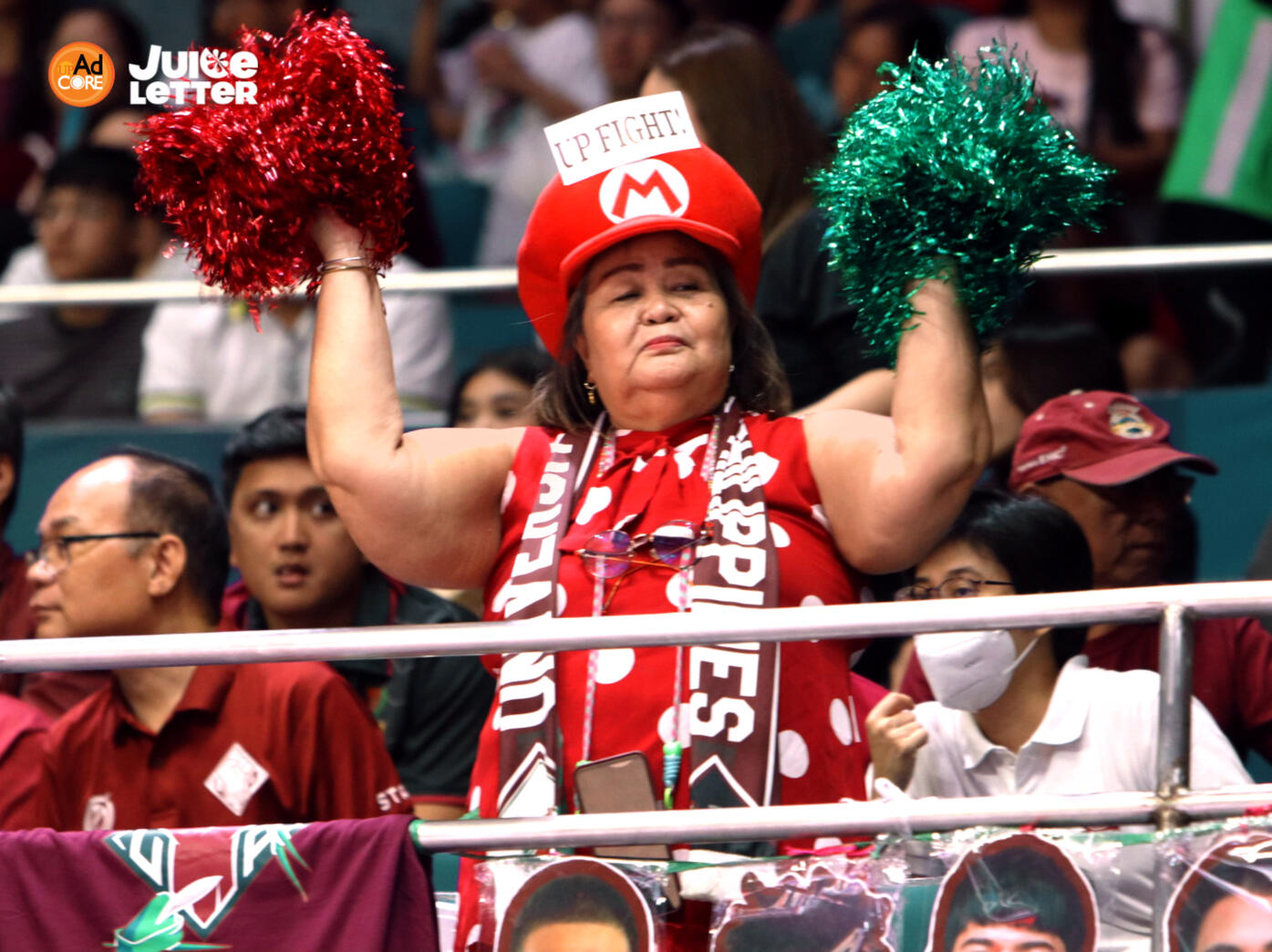

The results for the competition were revealed, and the UP Pep Squad ranked 5th place with 602 points. I personally thought our team would rank higher, maybe even in the runner-up position, but I am not disappointed with the placements as I know the other squads deserved it. I really loved the routine from the UST Salinggawi Dance Troupe with their theme ‘Blackpink’, and how at the end of their performance, they spelled out “UST” with their bodies. It was a total slay!To my disappointment, I missed another opportunity to physically immerse myself in such moments when I couldn’t watch the UAAP Men’s Basketball Team Finals and the breathtaking battle between the UP Men’s Basketball Team and the DLSU Green Archers. Such didn’t seem to be the case for my fellow students, though, as I heard about how our Varsity Training Center was packed with people who lined up as early as 1 AM just to secure a ticket for the Finals in the Araneta Coliseum — with some even making plans to miss their classes!I was just heading home from UP after a long day of school when the long-awaited games finally started. I saw Instagram stories of people watching the game together in the Quezon Hall and thought, “Ay sayang, dapat sumama din ako sa kanila,” instead of watching online at home, because even though we wouldn't be in the actual event, I would be surrounded with cheers, screams, and prideful support by the UP community.
...because even though we wouldn’t be in the actual event, I would be surrounded with cheers, screams, and prideful support by the UP community.
The fourth quarter plays with a 58-55 point difference, having the UP Men’s Basketball in the lead. At that moment, I thought, “Just a few minutes from now, we will find out the champions for the sport.” Every time a point was made by each of the teams, the fans would shout loudly in support, or they would shout “defense.” A few seconds before the game was about to officially end, I was shaking, praying, and agitated in hopes for a miracle to happen and give points to our team. To our surprise, though, the DLSU Green Archers took the win in the end, finishing the game with 73 points and the UP Men’s Basketball at 69 points.As expected, we were all saddened upon hearing the results. The UP Community must’ve been affected to a point that there was a running joke of “walang pasok bukas!” due to the loss of our team. I like to believe, however, that we still managed to extend our congratulations to DLSU for their historical achievement by posting pictures with elements of DLSU in the picture — whether it be their university buildings, DLSU graduates, IDs, etc. – and this lightened the mood of us UP students.
I then realized that even if we have these losses, it will simply be one of many encounters that I have yet to face as a UP student.
As a longtime fan, I have been rooting for UP way before I even entered the university; and now that I’m in my first year of college, I too will experience the innate feelings from the many well-deserved victories and the heartbreaking losses of my university.With that being said, I swore to myself that in the next season of UAAP competitions, I’ll definitely make sure to see myself in the crowd — the crowd that goes wild when our team is about to play; the crowd that cheers the chants that we all know and love; the crowd that unleashes my UP fighting spirit. I want to join and be part of that.Ikaw ba?Gusto mo bang sumama?
Danna
People of UP Diliman
Interviewed by Maxine Jecri Novilla
Published March 26, 2024
People are made up of stories. Every memory, every experience, and every person we encounter all shape us into who we are at present.
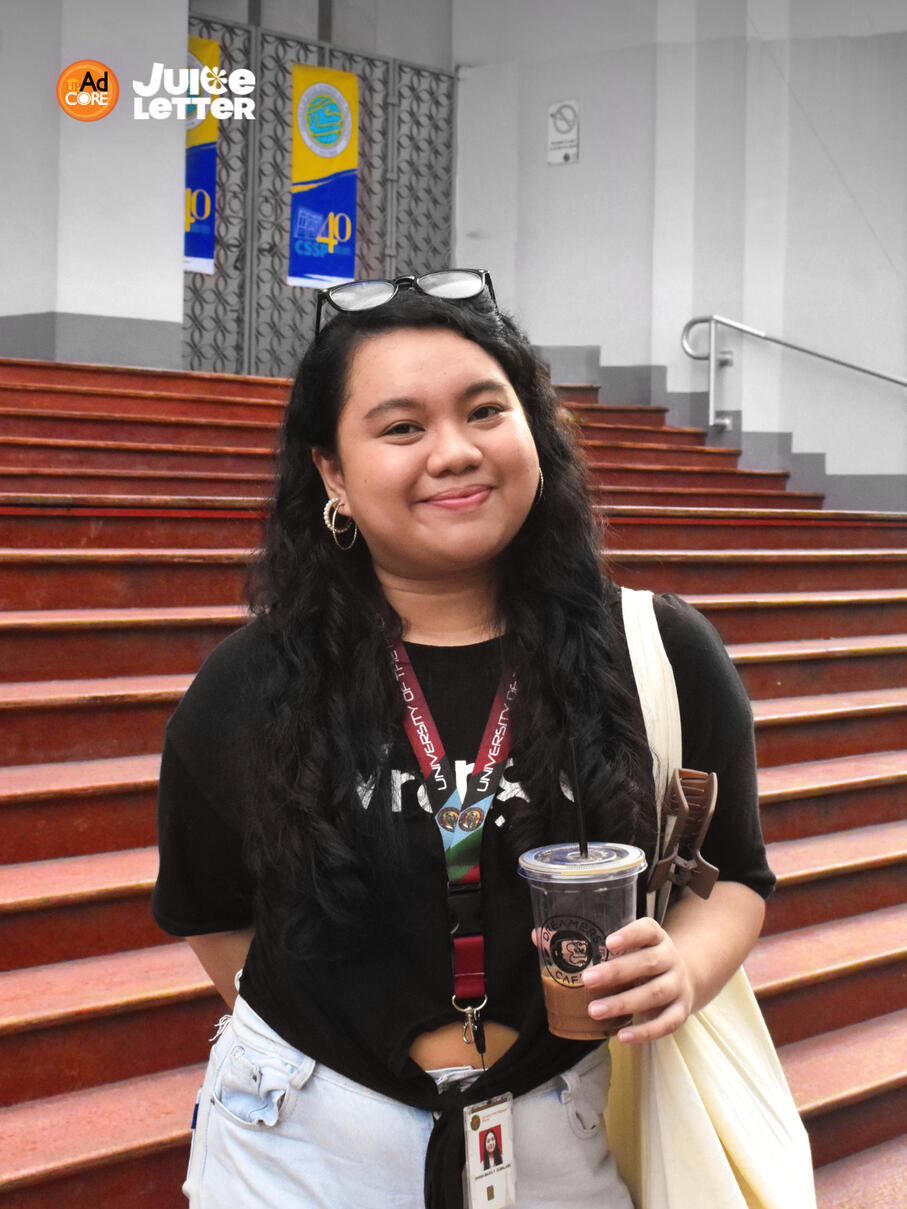
Natupad ko ‘yong promise ko sa lola ko na magiging Iska ako through and through. Parang sinasabi niya sa lahat na “Iska ‘yong apo ko.” Kinder pa lang, sinasabi niya ‘yan. Tapos noong college, sinasabi niyang gusto niya ako maging Iska pa rin.But the saddest part of my life… namatay siya noong UPCAT ko. Hindi niya alam na pumasa ako. Kasi may Stage 3 breast cancer siya, and I had to watch over her all night long. She was screaming in agony, in pain, because the cancer had spread throughout her body. 5 AM ‘yong UPCAT test ko. Nagrereview pa ako noon; naaalala ko ‘yon kasi nirereview ko ‘yong logarithm, kasi ang bobo ko sa Math talaga.Nagtanong siya kung anong oras daw ako uuwi. Sabi ko, “1 PM, nandito na ako, 'nay.”Sabi niya, “ang tagal, ang tagal naman.” Sure enough, matagal nga, because she passed away at 10 AM.Pag-uwi ko, ang daming tao sa bahay, ta’s nakatingin lang silang lahat sa akin. Nag-snap sa akin: Nasaan si nanay? Nasaan si nanay? Walang sumagot sa akin, and then they were crying. Binagsakan ako ng langit at lupa. Pinaalis lang nila ako, pina-exam nila ako, because if she had complained with a lot of pain, I wouldn’t have gone. I wouldn’t have left. Hindi ako makakaalis ng bahay.
Natupad ko ‘yong promise ko sa lola ko na magiging Iska ako through and through. Parang sinasabi niya sa lahat na "Iska ‘yong apo ko."
She raised me because my mom was a career woman. Nagtatrabaho talaga siya. My nanay was the one who raised me and honed me to be the person I am today. Everything I know, I owe it to her. I know how to cook — I owe it to her. I know how to be street smart — I owe it to her. My mom played a huge part din, pero sa pagiging tao, kung paano lumaban sa mundo — lola ko ‘yon.‘Yon ‘yong saddest part — parang regretful ako na hindi niya ako nakita na Iska. Pero feeling ko naman sawa na siya kasi nasa langit na siya ta’s Iska pa rin ako hanggang ngayon. Parang ang tagal mo naman umalis diyan, apo.
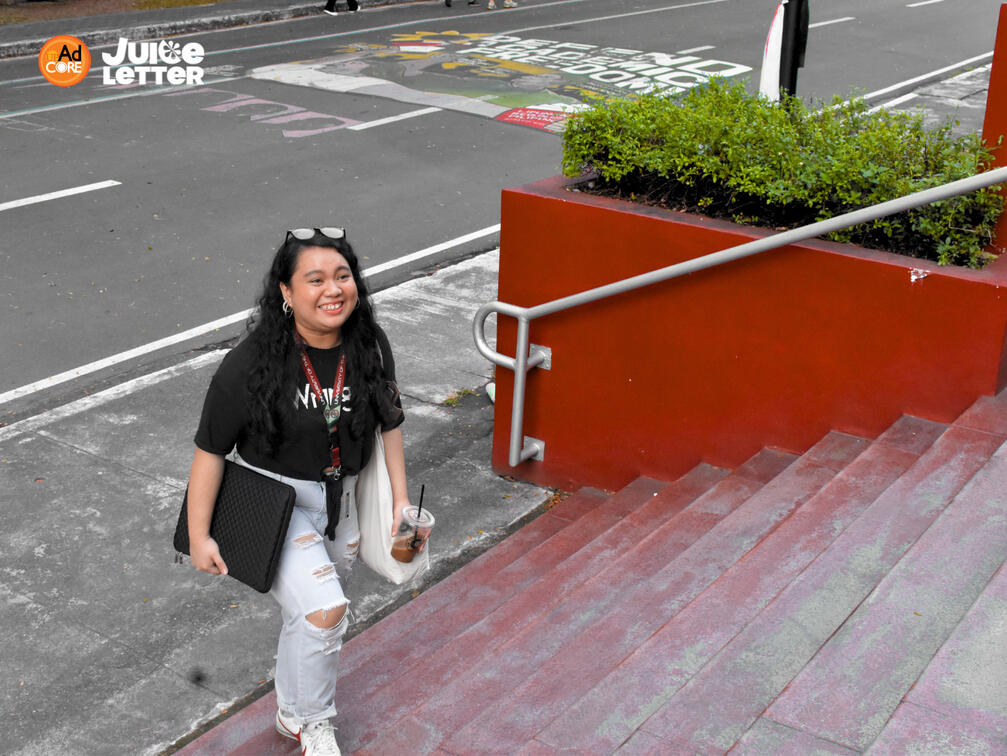
I had to mature ahead of everyone else. I was never a teen. I am the eldest daughter in an Asian household, hence the responsibility to build the foundations of the household. But if I could go back in time, I’d say that you should look out for yourself. Nakakaubos kasi when you look out for everybody — who looks out for you?Right now, my greatest struggle would be performing different roles. For example, ‘pag sa school, kailangan ko maging estudyante. Kapag rumaraket, kailangan ko maging trabahador. ‘Pag sa bahay, kailangan ko maging panganay. Kapag sa nanay ko, kailangan ko maging matatag. Sa kapatid ko, kailangan ko maging ate. Sa mga kaibigan ko, kailangan ko maging masaya.Right now, all my batchmates, all my friends, they’re living their lives, and I’m still here. Stuck. Do I enjoy my time left here in UP? Or do I just… get everything done? But, somehow, I’ve started to feel like I still have a space here. Sobrang na-aappreciate ko when someone talks to me, kahit hindi ko kakilala. I don’t know people’s faces right now. I don’t know their names, I don’t know how old they are… parang kapag may nag-hi sa akin, feeling ko hindi ako floating.
If I could go back in time, I’d say that you should look out for yourself. Nakakaubos kasi when you look out for everybody — who looks out for you?
My biggest regret is… not pushing myself the hardest that I can go. Parang pinili kong mag-break off sa point na ‘yon. Specifically noong time na, noong 2022, may chance ako to graduate and still have my latin honors intact. Be the trophy daughter that my mom wanted me to be. Be the Iska that my lola envisioned me to be. Ganyan. Parang napagod talaga ako sa buhay… ‘yong speed ko ngayon, I’ve been running the same speed since I was in high school. Raket doon, raket dito, kung may gagawin akong requirements, mamaya na ‘yan. Kailangan kong kumita, kailangan ko ng pera, kailangan ko maghanap ng pera para may pangkain kami. Mga ganoong bagay. I could have set it aside first and gave myself more time acads-wise. Tapusin ko muna ‘to para hindi mag-prolong ang agony and everything else, but I didn’t. So sinisisi ko sarili ko, na parang hanggang ngayon, nandito pa ako.The most challenging part would be the expectations. Because you’re the cream of the crop, you should know how to do things — and not just do it, but do it well. They don’t see that every box that we tick is a soul leaving a person’s body. Parang gano’n. Mababait ‘yong mga profs sa Speech Comm. ‘Yong mahirap ay ‘yong sistema sa UP; parang nagpprioritize siya. For example, dahil ako, branded ako with all my INCs, I’m stripped of a lot of privileges.
Because you're the cream of the crop, you should know how to do things — and not just do it, but do it well.
My biggest dream is to have my own personal space. I grew up in a household where everything is common and everything is shared. I lived with my extended family — I have lived with them ever since. Wala akong kwartong sarili. Wala akong kama. So I have to spend the night awake, and sleep once someone gets up. Maayos naman ‘yong kwarto, but you know, having your own personal space where you can laugh, cry, breathe — wala akong gano’n. Gusto ko ring pa-grocery-hin ang nanay ko na hindi siya tumitingin sa resibo. My mom is a whole new level of kindness. She feeds everyone, she tends to everyone, she cares for everyone… she is very generous, but at her own expense.More than the bragging rights — the safe space UP provides to learn critically, to live your life freely, to mourn, to be happy, to feel emotions, to do things you thought you couldn’t… sobrang safe space ng UP. Fertilized lupa siya, at kailangan mo lang magtanim. Gusto mo maging bulaklak? Gusto mo maging cactus? Gusto mo maging kung ano-ano? You can be all that you want to be. UP provides that space.
The safe space UP provides to learn critically, to live your life freely, mourn, to be happy, to feel emotions, to do things you thought you couldn't... sobrang safe space ng UP.
I’ve lived a different kind of life. I am still living it. I’m also living a typical life, hindi siya madali and all, pero feeling ko lahat naman tayo ay may kanya-kanyang bagahe. Hearing my story would affect you in miniscule ways, pero siguro lahat ng mga estudyanteng katulad ko ay may bagahe na kailangang intindihin. Be kind to everyone kasi hindi mo alam ‘yong pinagdadaanan nila.
Danna (24) is a Speech Communication student from UP Diliman.
You May Like
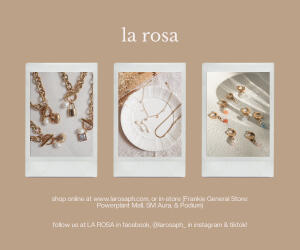
Ate Bien
People of UP Diliman
Interviewed by Sarah Alampay
Published March 19, 2024
People are made up of stories. Every memory, every experience, and every person we encounter all shape us into who we are at present.

Noong nagkaroon ako ng anak… ‘yon siguro ‘yong pinakamasayang nangyari sa buhay ko. Buti na lang po napapakain ko sila kasi halos araw-araw ako dito sa UP; halos araw-araw ako pumapasok.‘Di lang ako pumapasok kapag may dialysis si Tatay. Siguro noong nag-dialysis si Tatay… ako po yung nag-asikaso ng lahat. Parang simula noong umpisa hanggang ngayon — ako pa rin po. Hindi po ako makahanap ng trabaho na araw-araw kasi nga, dahil nga po sa papa ko, ako ‘yong nag-aasikaso sa DSWD, city hall, PCSO, pati ‘yong pagbantay sa ospital. Tapos ‘yong mga anak ko, iniiwan ko rin para bantayan po ‘yong papa ko.
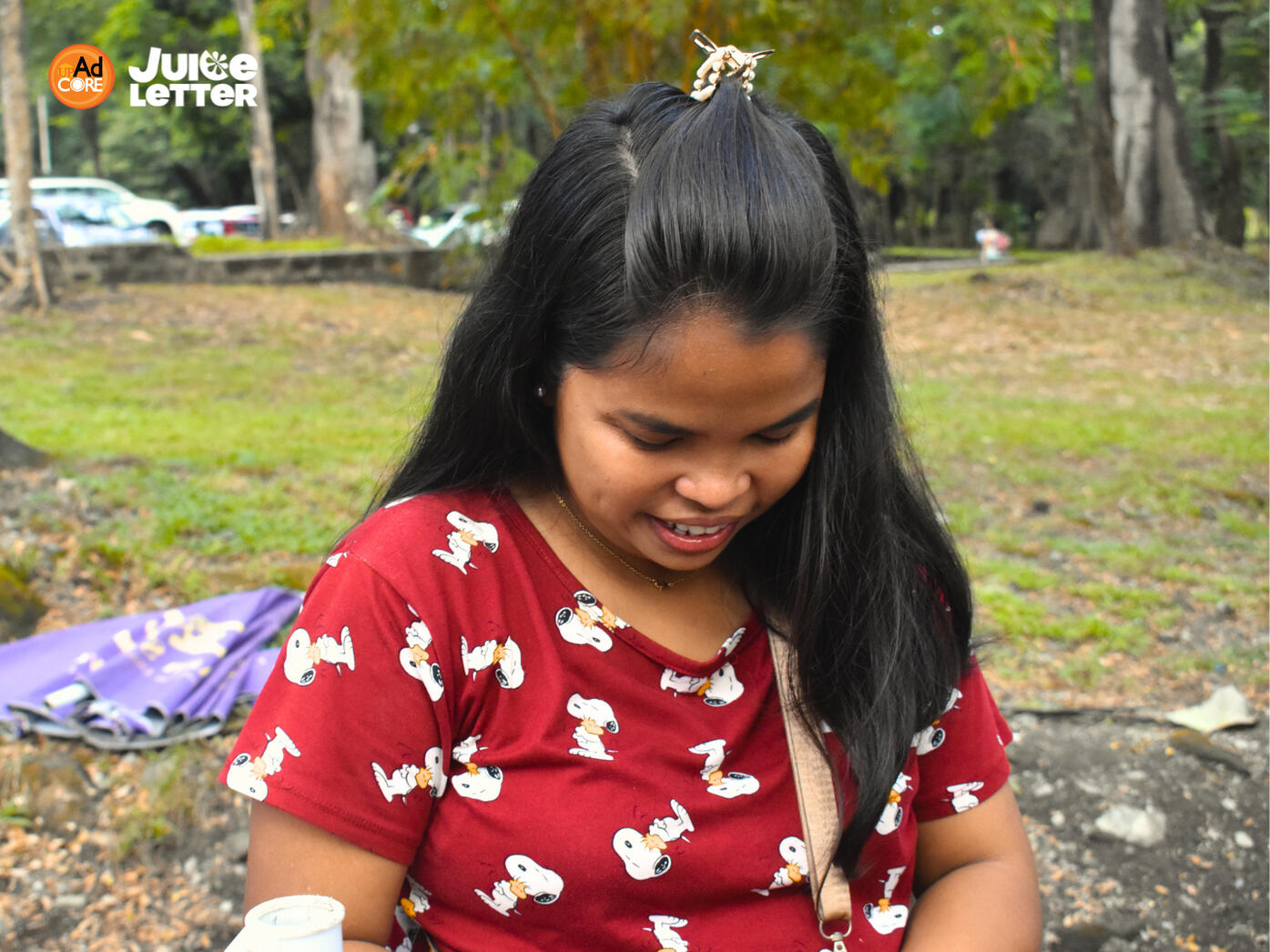

Maging matatag lang dapat. Pati ‘yong pamilya, kapag nandiyan ang pamilya, hindi ka naman panghihinaan ng loob. Kapag buo ‘yong pamilya, may masasandalan ka pa rin araw-araw kahit mahirap.Gusto ko sana ng buong pamilya para sa mga anak ko, pero nabubuo siguro kami sa ibang paraan. Sa pagmamahal, ganoon. Pero minsan kasi, parang hinahanap nila ‘yong asawa ko. Pero ‘yong panganay ko… madamdamin talaga siya. Nakita niya lahat, simula hanggang dulo. Sabi niya sa akin: “Ma, itigil mo na ‘yan. Itigil mo na. Nasasaktan ka na.” Doon lang ako nakinig — noong nalaman kong nahihirapan na rin ‘yong anak ko dahil tinitiis ko lang ‘yong mga paghihirap ko sa buhay. Kaya umalis na rin ‘yong asawa ko.
Gusto ko sana ng buong pamilya para sa mga anak ko, pero nabubuo siguro kami sa ibang paraan — sa pagmamahal, ganoon.
Para sa akin, pinakamahalaga ang pamilya. Hindi kami buo pero masaya naman kami, at mabubuti ‘yong mga anak ko. Nakakatuwa kapag umuuwi ako at nakikita kong nagkakaroon sila ng star sa mga gawain nila sa school. Minsan nauubos naman agad ang binebenta ko rito, kaya pinapauwi na rin ako nang maaga at nakikita ko na rin sila. Minsan, kagaya ngayon dahil maulan na ulit, mas matagal o may natitirang pagkain pa dito kaya hindi pa ako nakakauwi.Paborito nila ang Sunken Garden. Noong isang araw, naubos agad ang tinda ko kaya naglakad lang kami sa Sunken Garden. ‘Yon din ‘yong paborito kong lugar dito sa UP; mapayapa lang kasi.
Para sa akin, pinakamahalaga ang pamilya. Hindi kami buo pero masaya naman kami, at mabubuti ‘yong mga anak ko.
Sabi ng anak ko, “Nay, paglaki ko, dito ako mag-aaral.” Ganyan ang epekto ng UP sa iyo — malawak at puno ng mga posibilidad, punong puno ng pangarap. Hindi ko sinabi sa mga anak ko na hindi ako nakatapos ng kolehiyo dahil nagkasakit si Tatay. Information Technology ang kurso ko noon. Nakakahiya nga lang… minsan, nakikita ko ang dati kong schoolmates na nagjojogging dito, habang nandito lang ako sa kanto, nagtitinda ng carioca at banana cue.
Si Ate Bien (36) ay isa sa mga manininda ng UP Diliman.
You May Like
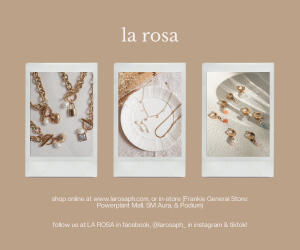
Sir Jonas
People of UP Diliman
Interviewed by Maxine Jecri Novilla
Published April 10, 2024
People are made up of stories. Every memory, every experience, and every person we encounter all shape us into who we are at present.

The popular notion for graduates of Literature in the university where I came from is that if you graduate, mahirap maghanap ng trabaho. So when I got a job as a broadcast monitor, I was so happy. And the first thing I did when I got my first paycheck was buy my mom a tablet, which she could buy for herself, but I just wanted to be able to give something to her.

My greatest struggle is communicating with the people closest to me. I tend to shut them off. Once I am absorbed into doing a task, a job, a play, a production—nawawala ako sa wisyo, and even my mother tells me… nagchachat lang siya minsan and she says, “buhay ka pa ba?” I tend to struggle to actually balance it all out. If I could go back in time, I’d be more honest with myself; I wouldn’t force things upon myself. I wouldn’t say, “Okay na ‘to, Jonas. This is happy.” I wouldn’t force that ideology on me and just let things come to me naturally.
When I got a job as a broadcast monitor, I was so happy. And the first thing I did when I got my first paycheck was buy my mom a tablet, which she could buy for herself, but I just wanted to be able to give something to her.
The most difficult part of working here would be the budget. We operate in the realm of the theater. Balancing the needs, the wants, and of course the artistic goals of both the students and the teachers all rely on the reality of having a good budget. So us being in a public university and not in a private-run company poses its own challenges.I’m most grateful for the opportunity to meet different people every day. When you work in the theater, you really meet a lot of people, different attitudes, different styles, becoming an artist. But apart from knowing their different aesthetics, it’s knowing their struggles— knowing why they came to the theater, I very much enjoy that.So far, the most memorable moment I’ve had here in UP was when all my theater students and other instructors had a prod party on campus. That was very memorable, because everyone was just having fun, and the students were imitating the instructors. It was my first “professional theater work.” It opened my eyes to possibilities — to possibilities of combining different art forms into one show.
You really meet a lot of people, different attitudes, different styles, becoming an artist. But apart from knowing their different aesthetics, it’s knowing their struggles — knowing why they came to the theater.
A lot of your instructors would say this, a lot of those who came to study would say this, but what I love most about UP is that the first time you step foot in UP, you already feel like you belong. This is it. Alam mong macucultivate ‘yong passion mo, whatever that passion may be.UP contributed to who I am today by showing me that I am more than just one thing. And that is through educating me in a more interdisciplinary approach, particularly in theater. It has provided me with not just knowledge, but pathways to pursue theater. That theater doesn’t have to be just about acting. Or writing. It can be about designing. Research. Talking about your advocacy. It can be so much more than what people see it to be. UP has allowed me to realize that I am more than what I seem to be.
Sir Jonas (24) is a Speech Communication instructor from UP Diliman.
You May Like
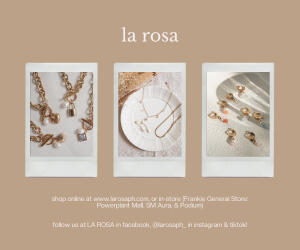
Keri Pa Ba Mhie? From Relaxation to Relentless Exams
Written by Valerie Co
Published April 17, 2024
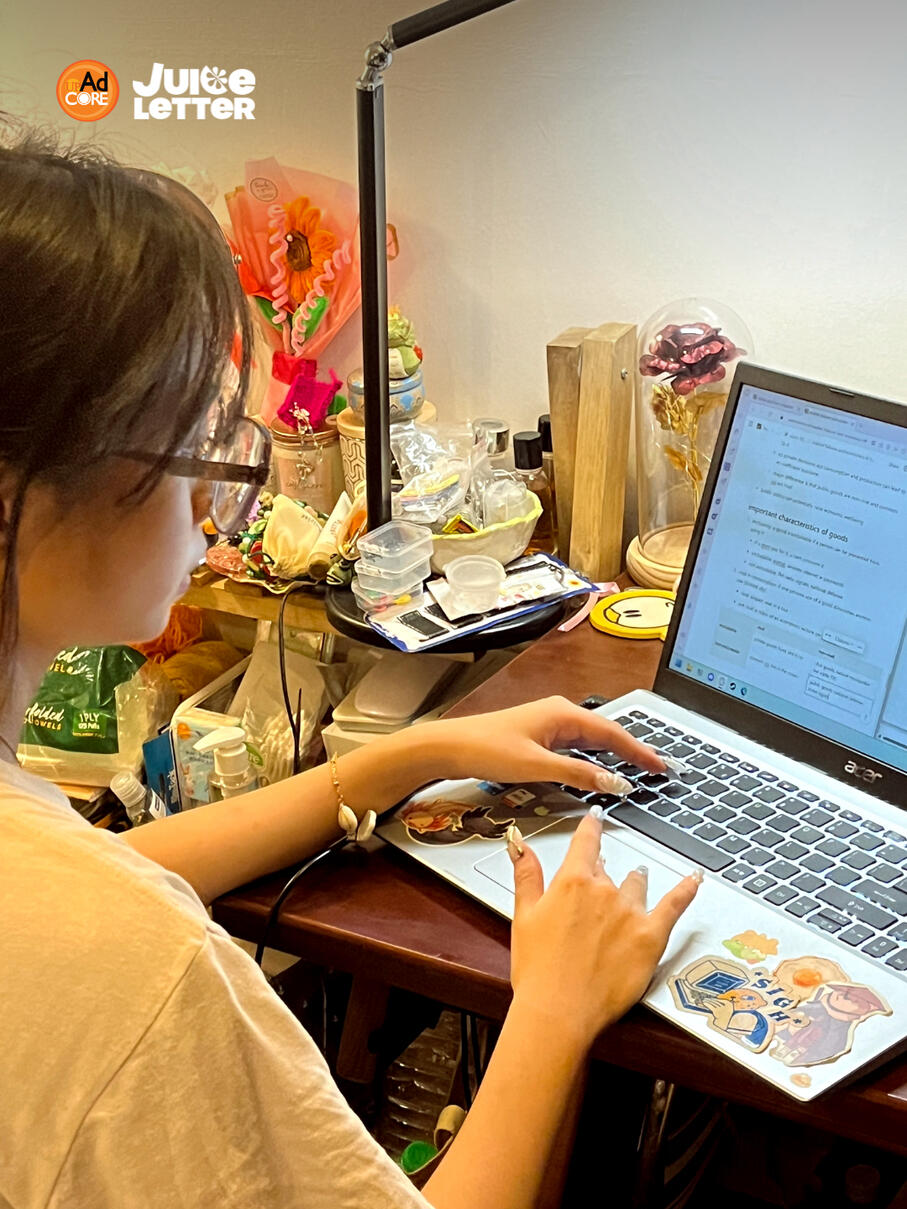
“That's all for today's class, thank you and enjoy your long break!” With those words signaling the start of a two-week Holy Week and Reading Break, I breathed a sigh of relief. It was a well-deserved break – offering a chance to unwind, catch up on sleep, hang out with friends, and finally tackle the ever-growing backlog of assignments and readings. For many, myself included, it seemed like the perfect opportunity to relax and understand the topics in class before diving back into the academic whirlwind.The first few days were blissful. Waking up without the shrill sound of the alarm clock, lounging around in pajamas until noon, and indulging in guilt-free gaming playthroughs on YouTube or binge-watching the live action of Avatar the Last Airbender. But as the days melted away, so did the sense of relaxation. The impending exams began to cast its shadow over what was supposed to be a carefree break.In the midst of the break, as leisure time stretched out before me like an endless horizon, I found myself falling into the trap of doom-scrolling. Hours would slip away as I mindlessly scrolled through TikToks and IG Reels, only to be greeted by a wave of guilt when I realized how unproductive I had been. It seemed that even in moments of relaxation, the shadow of productivity guilt loomed large, reminding me of the tasks left undone and the exams awaiting when I get back.
In the midst of the break, as leisure time stretched out before me like an endless horizon, I found myself falling into the trap of doom-scrolling.
Despite my best intentions to balance work and leisure, the guilt persisted. Even when I had already put in hours of studying, the choice to indulge in leisure activities felt like a betrayal – a waste of precious time that could have been better spent preparing for my classes. I found myself gravitating towards studying lecture videos and reading materials in advance during moments of leisure, unable to shake the feeling that any time not spent studying was a wasted opportunity.Reflecting on how technology had slowly taken up my leisure time, I couldn't help but wonder: “What did I do before I had a phone? Before I was on social media for the majority of my day?” Memories flooded back of childhood games played outside – of carefree hours spent in games of piko, patintero, and ice-ice-water – or the simple joy of coloring in a coloring book with my 8 pack Crayolas while waiting for my food at a restaurant to be served. In those moments, leisure was not tainted by the guilt of unproductivity; it was a well-deserved break during my weekends or when I was done with school.
Even when I had already put in hours of studying, the choice to indulge in leisure activities felt like a betrayal – a waste of precious time that could have been better spent preparing for my classes.
Yet, as I navigated the break, it became clear that reclaiming that sense of guilt-free leisure would require a conscious effort to disconnect from the distractions of the digital world and reconnect with the simple joys of the past. It was a reminder that productivity should not come at the expense of our well-being, and that true relaxation lies not in the relentless pursuit of productivity, but in the ability to find joy in the present moment, free from the weight of guilt and expectation.Eventually, the two week break has come to an end. The first day back felt like stepping into a whirlwind. The once-familiar routine now seemed foreign, and the looming exams and problem sets weigh over me. But perhaps the most daunting realization was the knowledge that there would be no break from here on out. I know that there will be back-to-back exams. There will be presentations, papers, and projects every week. There would be no time to ease back into the rhythm of academia, no room for error or delay. Every week would be a relentless cycle of studying, cramming, and hoping for the best.
Reflecting on how technology had slowly taken up my leisure time, I couldn't help but wonder: “What did I do before I had a phone? Before I was on social media for the majority of my day?”
Although the road ahead may be daunting, there is solace in knowing that every exam finished is one step closer to the ultimate goal: graduation. And as the end of another semester comes, I'll look back on this time with a sense of pride – not necessarily because I got high grades as that is not always the case, but more so because I finished the sem and made it out alive.
You May Like
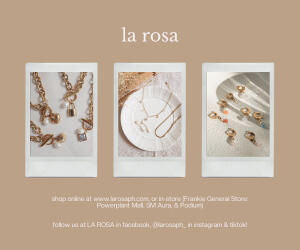
The Art of Boredom: Escaping the Constant Overstimulation of Social Media
Written by Valerie Co
Published May 17, 2024
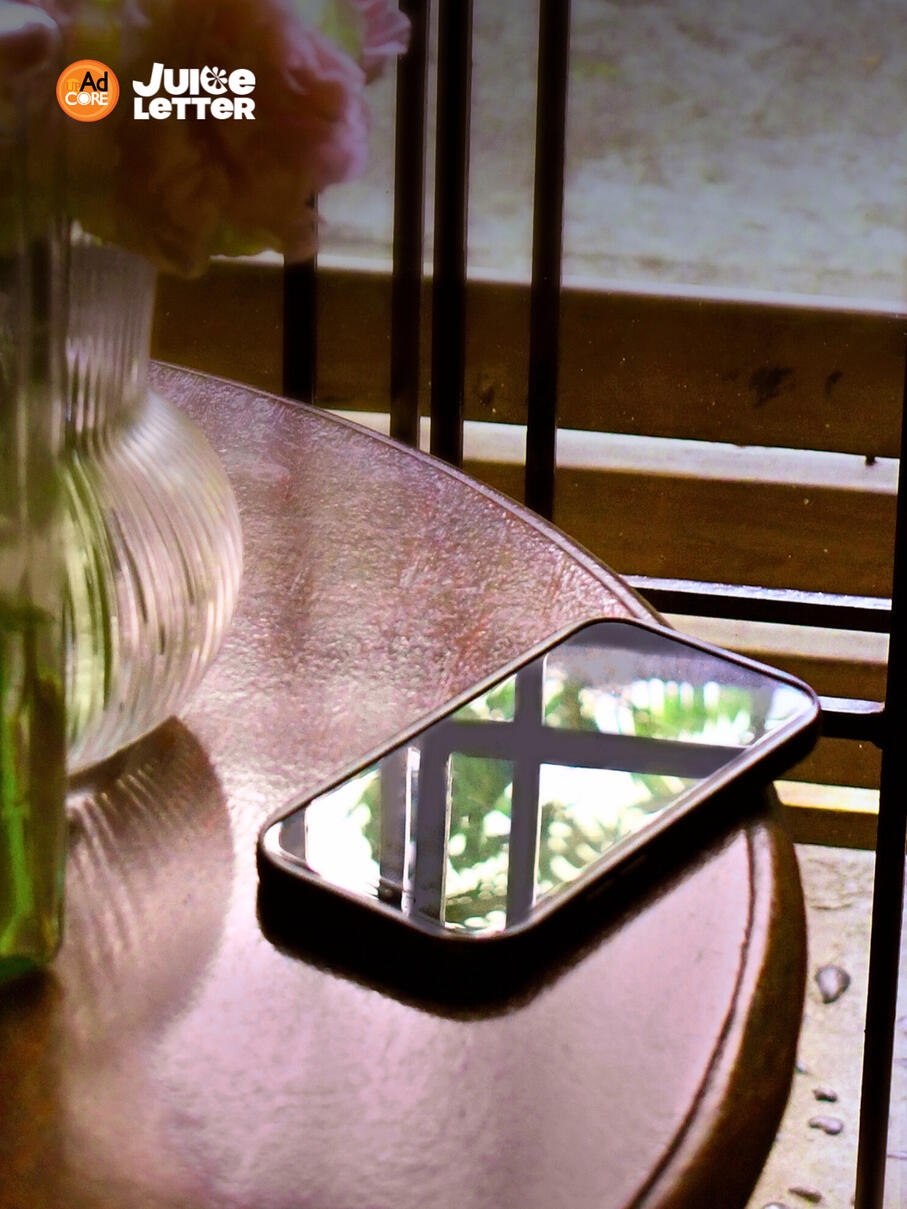
Keratin… KERATIN PLUS?!Everything in social media is looking to get your attention. Watch this funny TikTok of a kid slipping! Look at this colorful pub for an event this weekend! Here is a loud sound for you to notice my video! Pay attention to my content. As a result, many of us – myself included – have become unwittingly enslaved to our phones. Unable to tear ourselves away from the constant stream of information and entertainment it provides. Whether we're studying, working, or simply trying to relax, our phones are never far from our grasp – always calling for our attention, ready to whisk us away into the digital world.My dependence on technology has worsened during the pandemic. With lockdowns and social distancing measures in place, my phone became not just a source of entertainment, but a way to connect to the outside world. My screen time has significantly increased and I find myself chronically online – which is another can of worms to unpack as there is a lot of comparing myself to others, impostor syndrome, self-esteem issues, and mental fatigue that comes with consuming a huge amount of content.
Whether we're studying, working, or simply trying to relax, our phones are never far from our grasp – always calling for our attention, ready to whisk us away into the digital world.
It’s been 2 years since we recovered from the pandemic yet I find myself still being attached to my phone. When I am not studying or working, I find myself going on my phone to check what’s new. When I’m standing in line to pay for my lunch, I am on my phone. When I wait for a stoplight to turn green while driving, I check my phone for new messages. I can’t even lay down, sleep, do chores, draw, or do any of my hobbies without listening to a podcast or playing some music in the background. I feel the need to always be multitasking and absorbing some kind of information so that I feel productive even while I try to relax and do something I enjoy.In my quest to stay connected and productive, I realized that I had lost something essential along the way: the ability to simply be present in the moment. When you're constantly on your phone and keeping yourself busy, you lose the art of seeing the world in all its minute detail. The group of friends at the table next to me doing last minute reviews for their exam, the chipping paint of my local sari-sari store, the smell of the shawarma rice in A2, and so much more.
In my quest to stay connected and productive, I realized that I had lost something essential along the way: the ability to simply be present in the moment.
However, with all of this being said, I still catch myself looking at my phone instead of my surroundings because I get bored and consuming online content gives me my dopamine. But is being bored really a bad thing? Historically, boredom has served as a catalyst for innovation and creativity across various communities. Whether in academic circles or artistic endeavors, moments of quiet reflection and introspection have often led to groundbreaking ideas and accomplishments. Just by walking between buildings in UPD, you pass by countless statues – from the iconic Oblation greeting you at the end of Univ Ave or the two Rizal statues in Palma Hall as you climb the AS steps, to the more practical installations like the Sundial behind Melchor Hall. Boredom played a part in giving these artists the avenue to wander and let their imagination run wild on how exactly to approach their works. Just by allowing their minds to wander, artists and scholars alike were able to tap into their creativity and reimagine the world around them.
Whether in academic circles or artistic endeavors, moments of quiet reflection and introspection have often led to groundbreaking ideas and accomplishments.
While writing this article, I tried to allow myself to be bored and it has actually led me to think of a friend I hadn't spoken to since high school. She doesn’t update her social media often so I don’t see how she’s doing – unlike my other friends who regularly post on their IG Stories and FB. I reached out to her a few days ago and we scheduled lunch together next Tuesday! While I'm not suggesting that social media doesn't have its place, I can't help but wonder about the untapped potential that lies in embracing moments of boredom and allowing our minds to wander freely. In my case, because of my boredom, I got more time to recall the people in my life. It was not something I necessarily thought I needed – but that’s the beauty of it. It was not something I was actively looking for but rather something that came to me in the midst of being bored. And that’s creativity in itself, isn’t it?Today, as we navigate the pressures of social media and digital overstimulation, embracing these little moments of boredom can serve as a form of resistance from these online content — an act of reclaiming our time and attention. By disconnecting from our devices and reconnecting with the world around us, we empower ourselves to cultivate creativity, and a deeper sense of purpose in our academic and personal lives.
You May Like
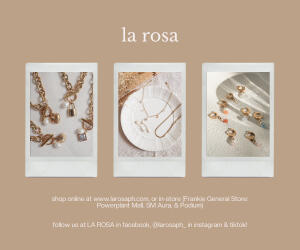
I Did It MY WAY
Written by Khristine Maguddayao
Photography by AJ Valdez
Published May 24, 2024

Ten years ago, I envisioned myself standing here in UP, but it's astonishing how quickly time has flown. I can hardly trace the steps that brought me here, and now, I find myself uncertain about what comes next. Is it possible that a life once full of direction, can veer off course?I know I'm not alone in this experience. College is indeed a unique battlefield where you confront none other than yourself. People are figuratively sprawling in and from various directions. In this journey, there's no one directly ahead or behind you. The paths are colorful and diverse; if not everyone is lost, some are chasing their tails, some are in a rush, some are taking their time, and then there are those like me, who suddenly find themselves halted midway. Maybe that's just how it is in my junior year — I can see myself wearing the Sablay, yet it still feels just out of reach.
College is indeed a unique battlefield where you confront none other than yourself.
Standing frozen, afraid to lift my feet and take the next step, I find it more daunting than ever. The fear of making a wrong move paralyzes me. At this moment, the melody of one of the Philippines' most infamous songs, "My Way" by Frank Sinatra, suddenly starts to play in my head. Faint at first, mirroring a distant echo, it gradually intensifies…Sssshhh, can you hear it too?♪ "And now, the end is near, and so I face the final curtain..." ♪
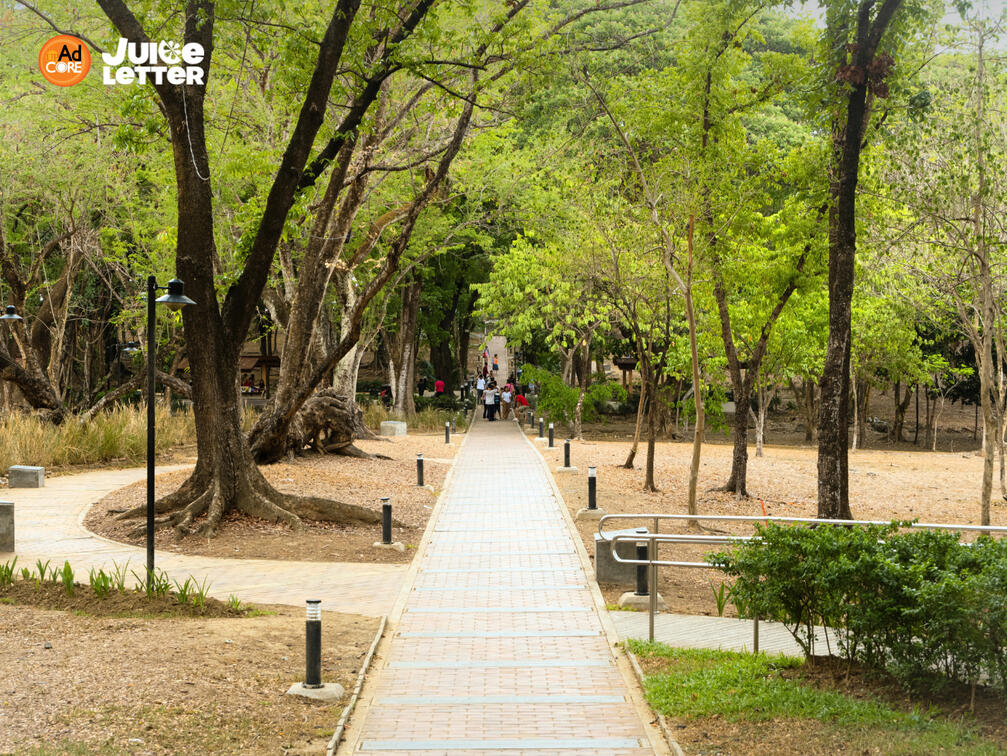
When college comes to mind, it often feels like an endless stretch ahead. People frequently say that getting into UP is the easy part, but getting through it is the real challenge. Yet, without noticing, you find yourself nearing the finish line.I can vividly recall my first day at UP Diliman. It was quite different from the typical freshman experience because instead of attending an orientation or settling into dorms, my first day involved taking an exam. The pandemic threw a wrench into the timeline of everything, and it wasn't until the second semester of 2022 that we were allowed to conduct face-to-face classes.
People frequently say that getting into UP is the easy part, but getting through it is the real challenge. Yet, without noticing, you find yourself nearing the finish line.
My rite of passage — my first taste of being an Iska — was an unforgettable exam experience, one where I was almost late because I couldn't find the exam location. Picture this: a girl running down the street, clutching her phone with Google Maps open, desperately trying to navigate her way; when she asked the guard if she was headed to the right building, he pointed her in the opposite direction. She rushed up to the third floor, panting heavily. But once she got there, she was completely out of breath that she couldn't even remember which direction to go next. That’s me, I’m that girl.I know many of you can also recall your first day at UP, and before any of us realize it, much like the song that started playing in my head, this phase of life will at some point, come to an end.♪ "Regrets, I've had a few, but then again, too few to mention..." ♪As students, many of us entered the university with our directions and dreams distinctly mapped out before even setting foot in UP. We had organizations we wanted to join, electives we wanted to take, friend groups we wanted to form, kiosks whose food we couldn't wait to try, and everyday situations we romanticized in our minds.
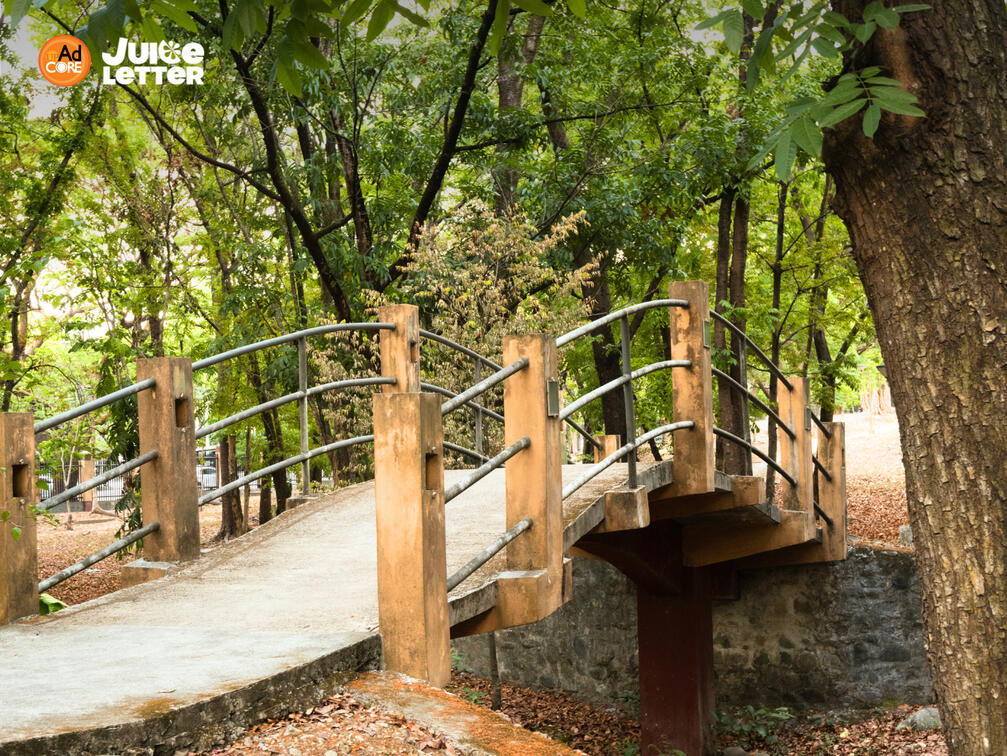
It was during one particular journey that I truly learned a lesson. Exhausted from a long day, fatigue weighed heavily on my shoulders, and due to my blurry vision, I seemed to be on autopilot and instead of boarding the Ikot Jeep, I boarded the wrong jeep. I was also running low on battery so I couldn't book a ride-hailing app to go home.Forced to rely on instinct alone, each step felt uncertain, each turns a gamble. But I pressed on, hoping against hope that I was on the right path. As I walked, a surge of emotions washed over me—fear, frustration, and a tinge of desperation. Every familiar landmark I passed filled me with a glimmer of hope, a sign that I was inching closer to my destination. And with each step, I clung to that hope, willing myself to believe that maybe, just maybe, I was heading in the right direction.We can always hope, we can always imagine, but we can never truly know what lies ahead of us unless we take that leap. Of course, when you're on a journey towards something, you don't want to get lost; you try to follow the well-trodden paths of others. Had I not lost my way, I would never have discovered the delightful scent of the night air along University Avenue, permeated by the fragrance of blooming flowers.♪ "Yes, there were times, I'm sure you knew when I bit off more than I could chew…”♪
We can always hope, we can always imagine, but we can never truly know what lies ahead of us unless we take that leap.
In the physical world, the expansive landscape of our university mirrors the vastness of our dreams. With each step we take, we explore new territories and encounter unforeseen obstacles. This phenomenon is evident throughout UP. Few paths have emerged because some people have chosen to tread them, even if they weren't the paved or conventional way. Take, for instance, the winding paths that snake through the arboretum or the maze-like corridors of Palma Hall. We don't just get lost searching for a good place to eat at A2, finding our way to the gazebos of the Institute of Biology, or locating the exit of the arboretum – we also get lost inside our heads sometimes.There are times when we decide to take a certain path, both literally and figuratively, only to realize later that it wasn't the right choice for us. Sometimes we bite off more than we can chew, but the magic lies not in whether we swallow it or not. Rather, the magic is found in the next bite. It's at that moment that we realize what we're capable of, whether we can handle it or not.♪ "The record shows, I took the blows, and did it my way..." ♪
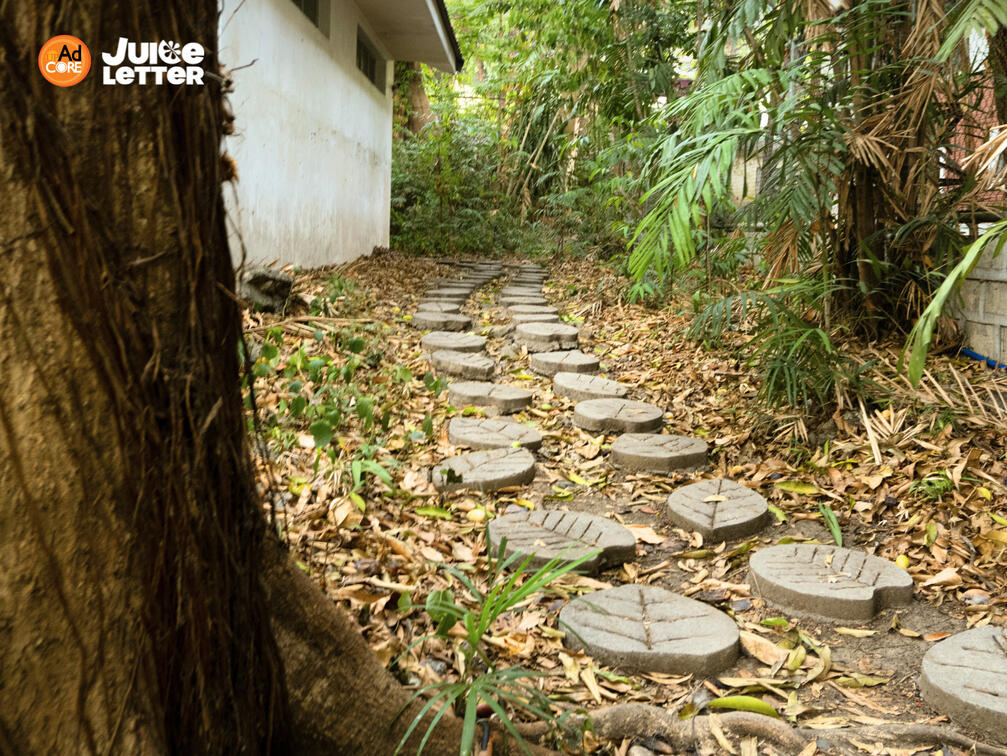
Venturing through the halls of higher learning, as an Iskolar ng Bayan, we should navigate the maze of academic life with courage and resilience — recognizing that our path is not fixed, but is molded by our actions and participation. With each step, we become intertwined with our journey and academic life, and indeed, "the landscape becomes a part of us, just as we are a part of it" (Ingold, 1993).Our journey through life is not merely a solitary march forward, but rather an intricate dance between the individual and the world they inhabit—a constant interplay of time, past, and present. This dynamic interaction forms the essence of our existence. Rather than perceiving the moments we've cried and failed as setbacks, we should embrace them as valuable lessons and learning opportunities. Think of getting lost today, as a chance to confidently find your way tomorrow. In Filipino, naligaw ka ngayon para hindi ka na maligaw bukas.
Naligaw ka ngayon para hindi ka na maligaw bukas.
With all these realizations, I found the strength to lift my feet and take another step forward. Though I had stopped midway, I am now ready to resume my journey. I look forward to the day when I can proudly say:♪ "Yes, it was my way.” ♪
References:Ingold, T. (1993). The temporality of the landscape. World Archaeology, 25(2), 152-174.
You May Like
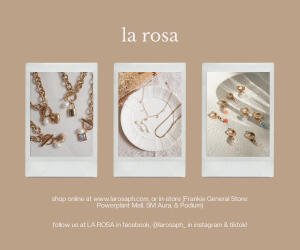
No Block System: Making Friends in UPD
Written by Khloé E. Hallare
Photography by Yela Bautista
Published June 21, 2024
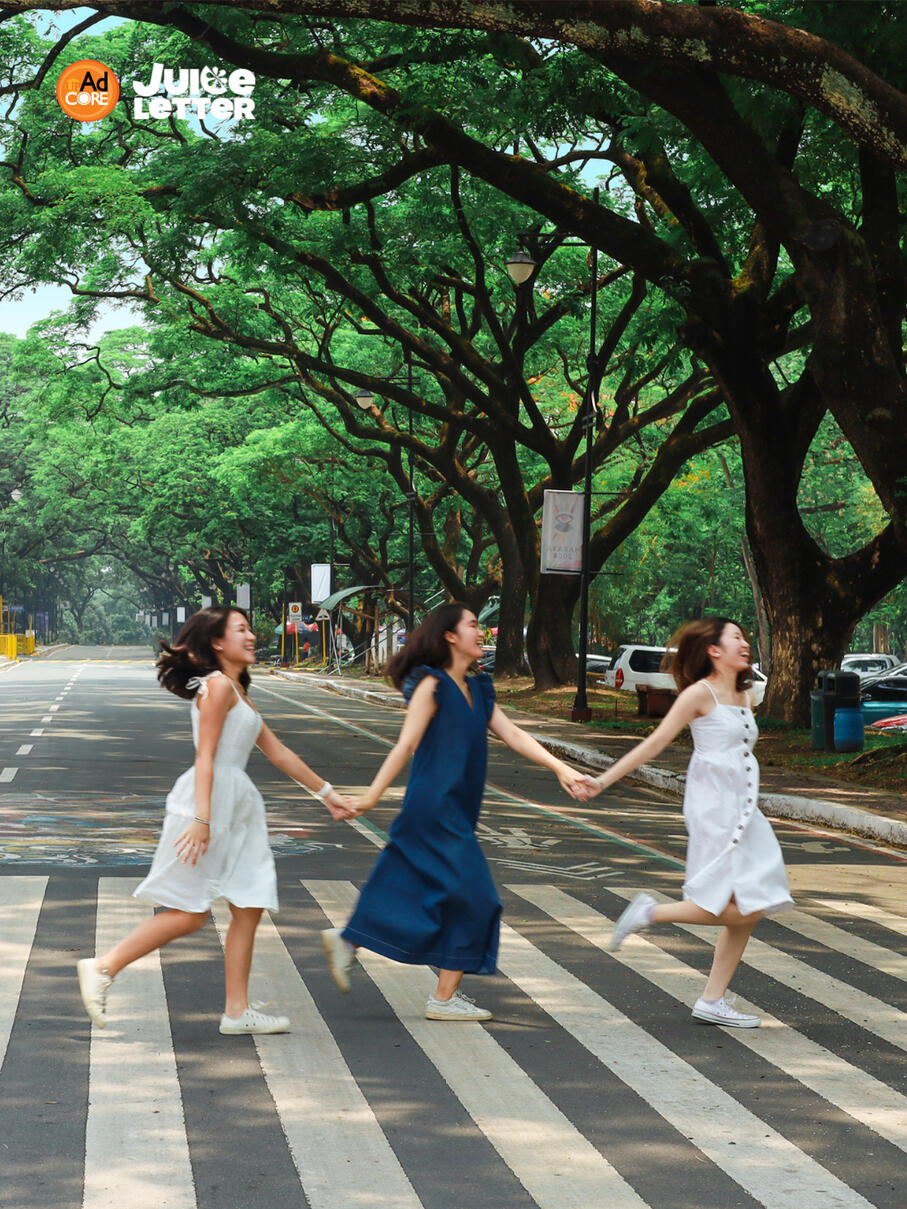
“The friends you make in college will be your friends for life…” - Jessica ParkWhile this quote can be true, I found myself wandering around the campus trying to find people I could relate to. We all know that college is intimidating because we have to adjust to a new environment, and we are simply filled with a lot of uncertainties that we have to deal with independently. But, it is also an opportunity to explore and experience the fun side of college. Take my word when I say that this stage will be more bearable when you find the people who are right for you.
This stage will be more bearable when you find the people who are right for you.
UP students are blockless for most of their stay in the university, so it can be quite hard to be a part of a circle or even make your own circle if you’re dispersed into different classes composed of different people. During my freshman year, I had this fear that I won’t ever find my “constants'' because of the blockless system and that it would hinder me from getting the full college experience. Don’t get me wrong–I did make friends in my classes but it felt like a 1 hour and 30 minute friendship that I had twice a week. I was worried that I wouldn’t find people who are not purposely binded to me because of requirements– you know, people whom I can talk about random and personal things with. It’s nice to have friends that give you a balance of academic life and social life. The good news is: it didn’t take long for me to meet these friends. So, allow me to speak from experience and share how I found and made lifelong friendships.
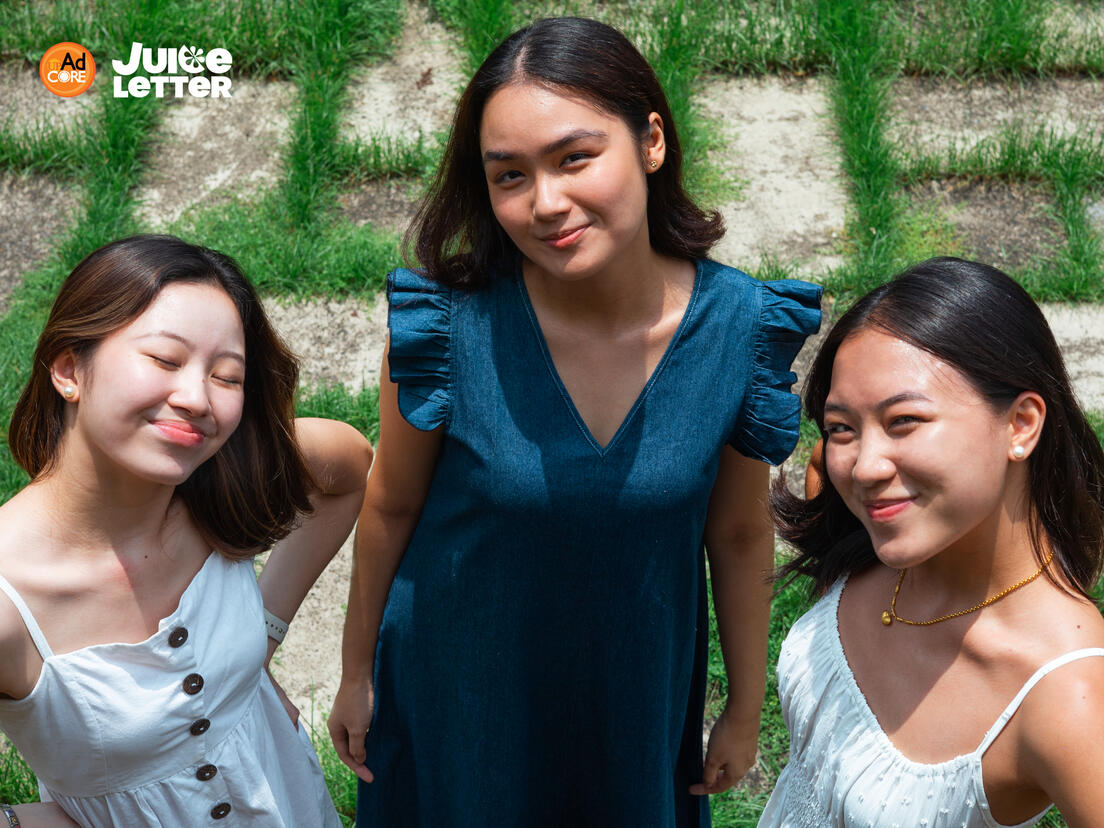
Starting a Friendship – You have to take initiative and make the first move! Live by the school spirit : “Matatapang, matatalino, walang takot kahit kanino!” Most of the time, people are just waiting to be approached because they themselves don’t have the courage to do so. They might just be as shy as you are, so strike up a conversation by greeting them and asking their name then try to keep it going by asking questions appropriate for the context. For example, in a GE class, you can ask: “Anong year mo na?”, “Naging prof mo na ba si…?”, “Ilang units ka this sem?” etc. These simple prompts can spark interest on both ends as you both get to share a common experience in exchanging stories. Make sure you look friendly so try to put on a positive aura by smiling.Taking initiative is not only limited to beginning a small talk or a conversation, there are multiple ways to start friendships! Another option is to join orgs and groups that resonate with your personality. UPD offers multiple orgs and groups of different fields of interests that you can apply to. This may narrow down your search for friends that you vibe with. The process to gain membership in itself is fun, and even as an applicant, you’ll surely have the chance to bond with co-applicants and members!
Most of the time, people are just waiting to be approached because they themselves don't have the courage to do so.
Deepening the Friendship - Communication is key so get to know them more! A friendship could be deepened in many ways too and it actually varies, but the core lays on communication. What worked for me is inviting them to mini hang-outs every now and then because this can help you spend quality time together and have chitchats (and this is where it gets deeper). Sometimes, spontaneous is better. If there was one thing I learned during my freshman year about making friends, it would be: don’t go home right away when classes are done. As said by BINI, 'wag muna tayong umuwi, dito muna, muna.'I used to go home immediately for no reason but eventually learned that I missed out on a lot of things my coursemates did like sponty food trips or simply going around UP. Staying for a few more minutes or hours and making use of your big vacants to bond with your friends will not only strengthen a friendship, it will allow you to enjoy the campus more and create lifetime memories you can look back on. There are a lot of hang-out-worthy spots in UPD like Area 2 or Gyud Food for food trips, Sunken Garden for picnic dates and chill conversations, academic oval for jogging/walking, and libraries for studying together—UP is definitely a place that can foster relationships! For your part, also reciprocate the energy that your friends give you. Constant engagement and interaction can boost a friendship’s growth but it will take time and effort to build a strong foundation.

You yourself play a big part in making friends—do the first move, make conversations, and create effort to sustain a strong friendship. The university is composed of diverse people so remember to always keep an open mind as you meet people along the way. Since it is a diverse set of people, I am 99.99% hopeful that you will find at least one to journey along with in college. Socializing with different people will help you get to know more about yourself and discover new things. There’s no perfect formula on how to make friends. So, I suggest you go out there, explore, and find out for yourself. Being friends with a person leads you to an array of people in their own circle—one connection opens up a network. There is no better time to experience the student-adulting life than in your college years and trust me, it’s better and way more enjoyable with company! At the end of the day, there’s nothing to lose when you say “hello!” with a smile.
You May Like

BS Org: Balancing the Org Life and Acads
Written by Hero Madayag
Photography by Marga Relos
Published June 17, 2024
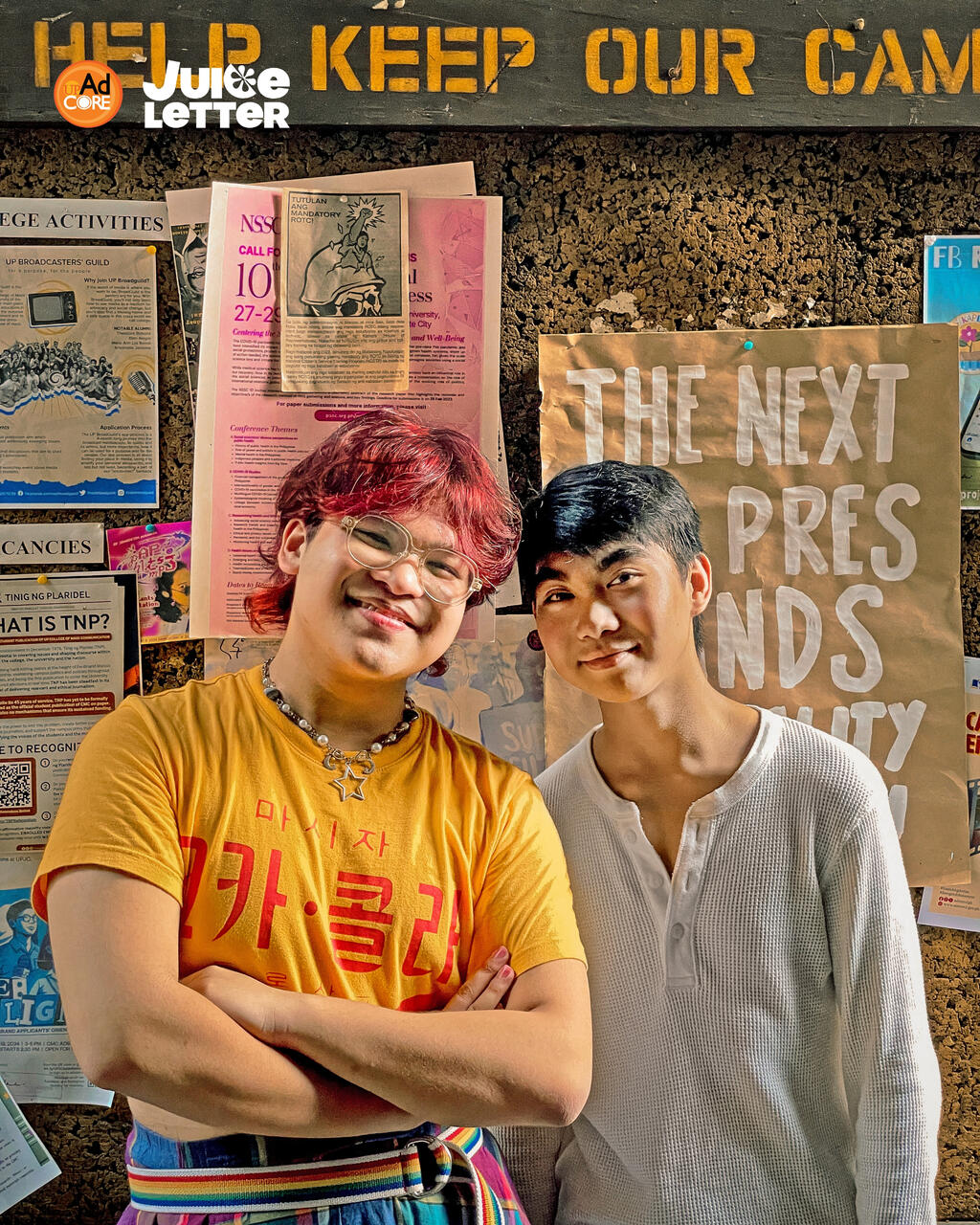
When I was in Senior High School, I was always asked, “Anong orgs sasalihan mo?” And honestly, I had never joined organizations before then because they were never a big deal in my previous school. So when I asked, “Anong orgs meron?”, I was given a list of a lot of organizations, and it overwhelmed me with how many there were. Fast forward to my freshman year in college, now I’m the one asking, “Anong orgs sasalihan mo?”, or “Sa aling orgs ka kasali?”The feeling of being overwhelmed turned into motivation – being enthusiastic about all the possibilities and opportunities I can get from the various organizations the UP student body offers. At first, I was very strategic. I told myself that I was going to apply to a number of orgs that would essentially be good for a resume. However, I forgot to take into account that handling academics is already difficult enough, and adding organizations to the picture would mean more responsibilities, strict time management, and discipline. My strategy was no strategy anymore – it became “get through the semester and survive while having orgs.”
My strategy was no strategy anymore – it became “get through the semester and survive while having orgs.”
I was hanging out with my friend, Key Mendiola, when I learned that she is active in four organizations and applying to two more — talk about BS Org! I was genuinely shocked. As someone who can barely handle two orgs and academics, I can’t imagine how my friend was doing. We talked about this topic for quite a while. We learned that we are able to learn a lot of things from organizations that wouldn’t otherwise be taught in our courses, all the while meeting people with different skills and backgrounds.Continuing our conversation, I asked how she could balance everything, given all the work she was doing. She said, “I make sure to put myself first.” I agree with Key; I think that being honest with yourself, determining if you can do a task or not, and knowing if you’re okay or not would contribute to shifting the priority toward yourself. Reflecting on my conversation with Key, something I do that helps me — as weird as it may sound — is talking to myself out loud. I have conversations with myself as if I’m ranting to friends; I question myself, make realizations, and possibly create solutions if I have problems.
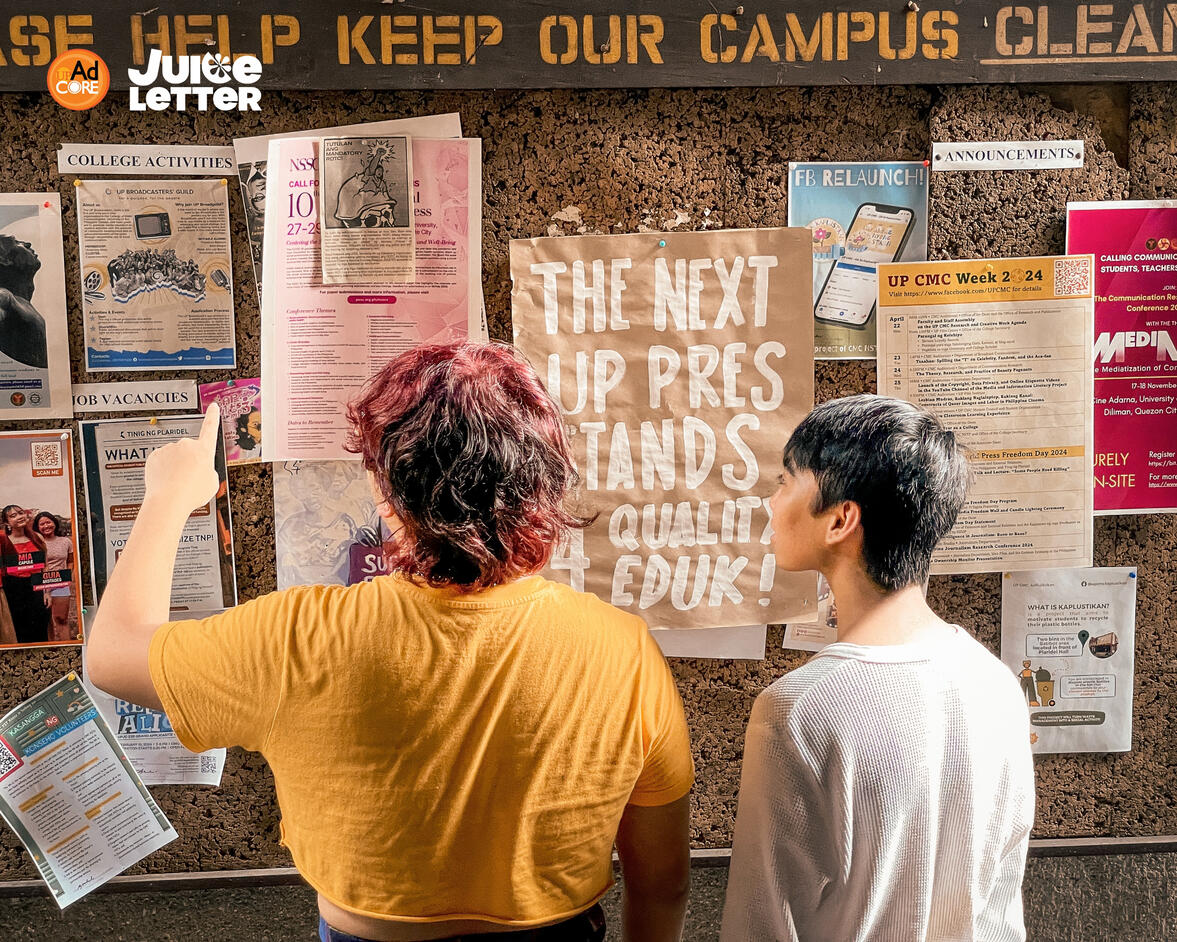
A second priority for Key would be her social circle, and I would agree. Aside from talking to myself, I also have my own group of friends whom I rely on when I need to vent my thoughts. Significantly, some of my closest friends are from the organizations I applied for. Knowing that I have a group of people, wherever they come from, helped me survive and continue to survive my college life.Key then said that her next priority would be academics and org work. Though these priorities seem strict and linear, Key explains that it can also be fluid. “For now, my friends and family won’t be first to me; first it should be acads, or at this moment, I can put my friends and family first,” Key says, “and you should be able to adapt to that well. Being isang BS Org girly ay pagiging organized.”What I personally do is list down all the work that I have and decide which should be prioritized, maybe depending on how close the deadline is or how time-consuming the workload would be. The list may not be perfect, and I might not even follow the set priorities, but it is great to note down everything that I need to do.
Knowing that I have a group of people, wherever they come from, helped me survive and continue to survive my college life.
Although listing down my work is one thing, doing the work is another thing. Balancing the org life and academics is really hard. There were a lot of cases when I was in an organization event, multitasking on academicss that was due that day. There were also cases when I was in class listening to the professor and multitasking work for my organization. From what I’ve learned, sacrifices really have to be made, and your decision, choosing to do orgs or acads first, will put an effect on the other.You might ask, Is it really worth it? Are the sacrifices and stress worth it? For me, yes. Because I’m not only making sacrifices, I’m also making friends and learning new things. I’ve become part of a community I didn’t know I needed, and all the work I did was fulfilling in the end. I get to share my fulfillment with those people and they get to share theirs with me.

I look back on my Senior High School self who was shy, unconfident, and didn’t even know what an organization was, but now, I’m a completely different person. Well, I’m still a bit shy and unconfident, but I have learned so many things the past three years because of my participation in organizations. If you’ve been contemplating joining an organization, I say do it. It wouldn’t hurt to try. I mean, after all, I am writing this wonder under an org that I am a part of. Who knows what wonders you can do if you tried?
You May Like
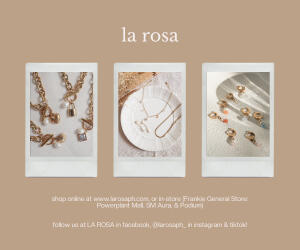
Buhay Ay 'Di Karera: Mid-College Crisis Reflection
Written by Elisse Dizon
Photography by Yela Bautista
Published June 28, 2024
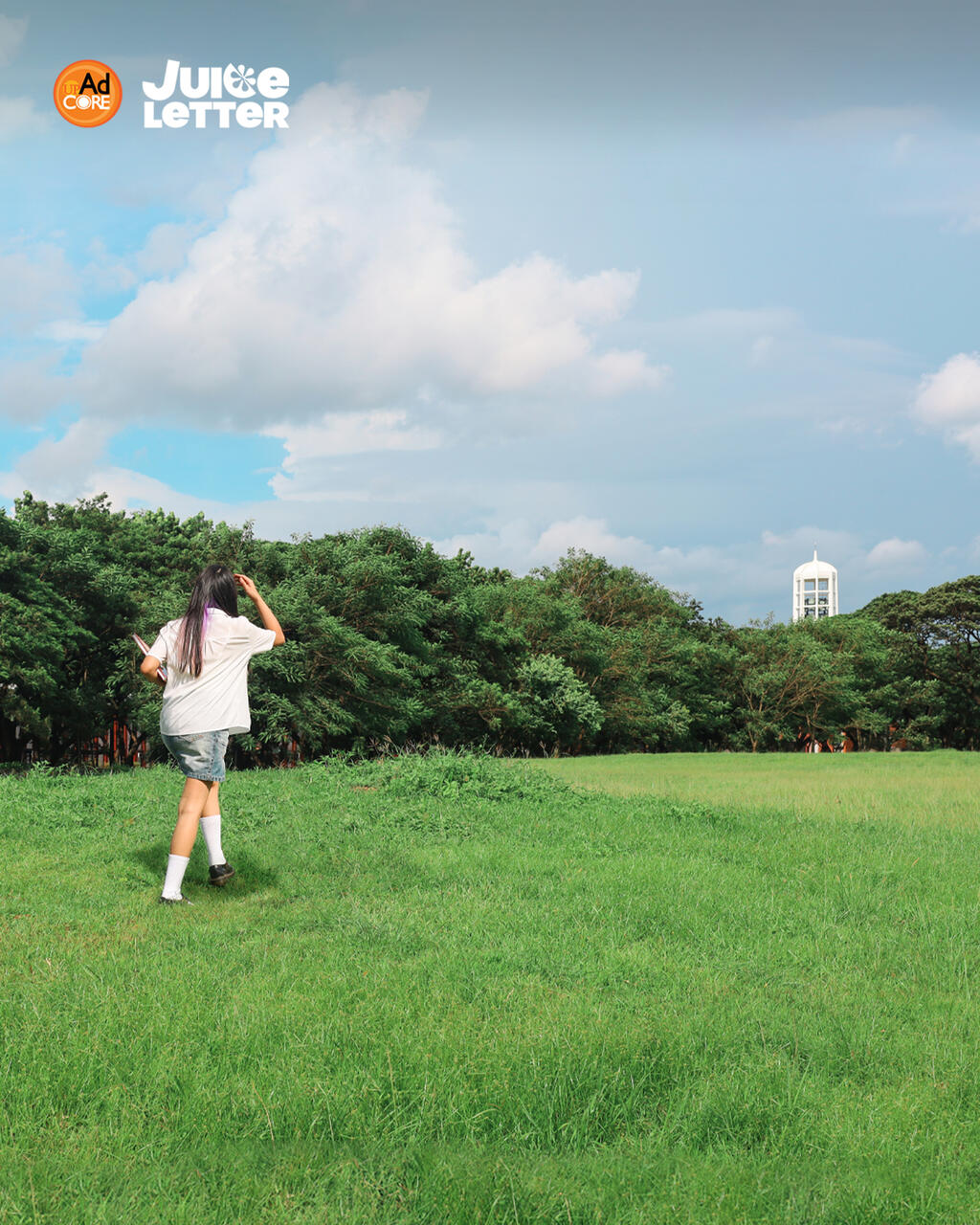
To be completely honest, I have been holding back writing this article, but I think it’s time to talk about time.Just like what Kim Chui said, “Hello, UP! Nandito na ako!”Entering college, for sure, you’ve heard the words, “college will be the best years of your life,” or “you will create the best memories, because these are going to be your prime years.” Bearing these words in mind, I feel ecstatic to walk on the Academic Oval, to glance at the iconic Oblation, or even the littlest of things, such as smiling as I pass through the corridors of Palma Hall. It’s funny that if you could name a list of people who love to romanticize being in college, my name for sure would be on top of it!I can still remember the days when the hues of the skies mattered as much as the humming of the birds, the ray of sunshine on my face, the fall of leaves, and the breath of fresh air. Back when I was in my freshman year, I was so excited to meet every student in the block. I was elated to turn in my first tasks and assignments. I was also that student who recited as much as she could just so the professors could remember and acknowledge her even from afar. I was the type of person who would initiate conversations and lead the whole barkada to a feast in Area 2. If I were to describe myself during my freshman year, I seemed like an eternal being that shined so bright and brought so much hope, light, and joy to everyone. I felt invincible.
If I were to describe myself during my freshman year, I seemed like an eternal being that shined so bright and brought so much hope, light, and joy to everyone. I felt invincible.
But as my college years went by, I felt different and completely changed. How would you feel when you hear the words GWA, internships, part-time jobs, resumes, CVs, financial stability, University Scholar, year-standing, and the risk of being delayed? Because if you were to ask me, I’d feel confused as to why college, the supposed best years of my life, would lead me to be in such a hurry? Am I chasing time, or is time chasing me as I strive to accomplish and achieve so many goals before graduating? These were the questions that kept lingering in my mind for the past few months.For context, I am a second-year incoming third-year college student. As ironic as it sounds, I am currently experiencing a mid-college crisis. I am writing this article to challenge the notion that college is the prime year of our lives and that we should not be constantly pressured by it.
Am I chasing time, or is time chasing me as I strive to accomplish and achieve so many goals before graduating?
Writing this article made me recall the start of the second semester in my sophomore year. I was right in front of my laptop at 3 a.m. trying to figure out my game plan to check if I’m still on track with my units and if my GWA still qualifies me to be one of the honored scholars of the school year. While I was trying to compute and draft everything, I suddenly felt my heart sinking as I realized that if I push myself to graduate on time, I would have to take 21 units every single semester, excluding my DRP, NSTP, and PE subjects.For context, I am a transferee, so being delayed is expected, but I still hoped to graduate the same year as my batchmates in high school. Aside from that, I figured that if I wanted to go easy with my units and maybe take one semester off to study abroad, which is a college dream of mine, I’d be delayed for one and a half years! I would then be expected to graduate in 2027, making my overall college time period 6 to 7 years. This made me realize how idealistic it would be to pursue every single goal before graduating college. I had all of these plans in mind, while also taking into account my family’s financial capabilities, scholarship applications, and possible added organizations, internships, and part-time jobs to pad my resume. At this point, I felt like I was on the verge of breaking down as anxieties of the future started to haunt me. Will I ever be enough in this world full of chaos, competitiveness, and struggle? Why do I feel like time is so little compared to what I have imagined before?
Will I ever be enough in this world full of chaos, competitiveness, and struggle? Why do I feel like time is so little compared to what I have imagined before?
So I started to search for answers. I observed, I listened, and I learned. Come to think of it, every student in the university has a different background. There are several factors that can affect the way a student lives, and these factors can significantly impact one’s life, creating disparities in opportunities. This usually leads to countless problems and great concern for the future, manifesting in what I may call a mid-college crisis. This period of uncertainty is overwhelming as students navigate through the pressures of academic expectations and personal aspirations while grappling with the external forces that shape one’s realities.
There are several factors that can affect the way a student lives, and these factors can significantly impact one’s life, creating disparities in opportunities.
To understand what causes a mid-college crisis, I turned to psychological concepts.Did you know that our frontal lobes are not yet fully developed until the age of 25? Thus, we are under an emotional turmoil marked by a strong desire for change. Individuals our age experience a whole cycle of new experiences in at least four to five years of their lives. One of the famous studies of life development is Erik Erikson’s Psychosocial Development. In this study, he mentioned the 5th Stage of Psychosocial Development of a person is Identity vs Role Confusion. This is a stage where we feel uncertain about aspects of our identity as we search for our sense of self.Remember when we were teenagers? We had this belief that our thoughts, feelings, and experiences are unique from everyone else's. In Psychology, we call this Personal Fable. This makes sense because when we were younger, we felt as if we were the center of the world, but now that we are transitioning from adolescence into adulthood, we lose this feeling, which explains why we suddenly feel so stuck. To support this, Arnett came up with the Theory of Emerging Adulthood or the feeling of being in-between. This is the time when we tend to consider ourselves too old to be adolescents, yet we feel like we are too young to be full-fledged adults. So, while waiting to grow and mature, we are currently in this idle time feeling helpless, stuck, and lost.
This is the time when we tend to consider ourselves too old to be adolescents, yet we feel like we are too young to be full-fledged adults. So, while waiting to grow and mature, we are currently in this idle time feeling helpless, stuck, and lost.
With these concepts in mind, the next time you walk around the Academic Oval, glance at the iconic Oblation or even pass through the corridors of Palma Hall, take a look at each university student first. Each one is a reminder that we are not alone, and even though we are different from each other, we are still experiencing the same sentiments about college and being in college. The concept of mid-college crisis is totally normal, and it could manifest in so many different ways that even I could not name them all.College is not yet the end; rather, it is your starting point. It is a place for you to learn and flourish. There is more that life has to offer. For now, being in college is the best time to experiment and find your purpose. It could be through extra-curricular activities, academics, voluntary work, and even internships. You do not have to be pressured to be good with everything because we are all just starting life.
College is not the end; rather, it is your starting point.
The concept that college is the prime years of a person's life is a misconception. Yes, college can be a time for memorable experiences, but it is filled with pressures and uncertainties that can lead to confusion—a mid-college crisis. So, let us embrace college as a stepping stone, not the pinnacle, and recognize that the journey to our prime years is ongoing and unique for each individual.
Seeds of Success: Sunflower Planting at UPD
Written by Elvin Frias
Photography by Elvin Frias and Samantha Santelices
Published July 25, 2024

In a quiet hush of dawn, a mysterious sound produced by hands and gardening tools, plows the land of path leading to the hall of honor and excellence — a land that lies with growth, resilience, hope, and success. The traditional planting season of the sunflowers at the University of the Philippines Diliman has started — the sea of yellow petals are coming!Ever wondered about what happens before the University Avenue is filled with sunflowers? I made it my task to find out!
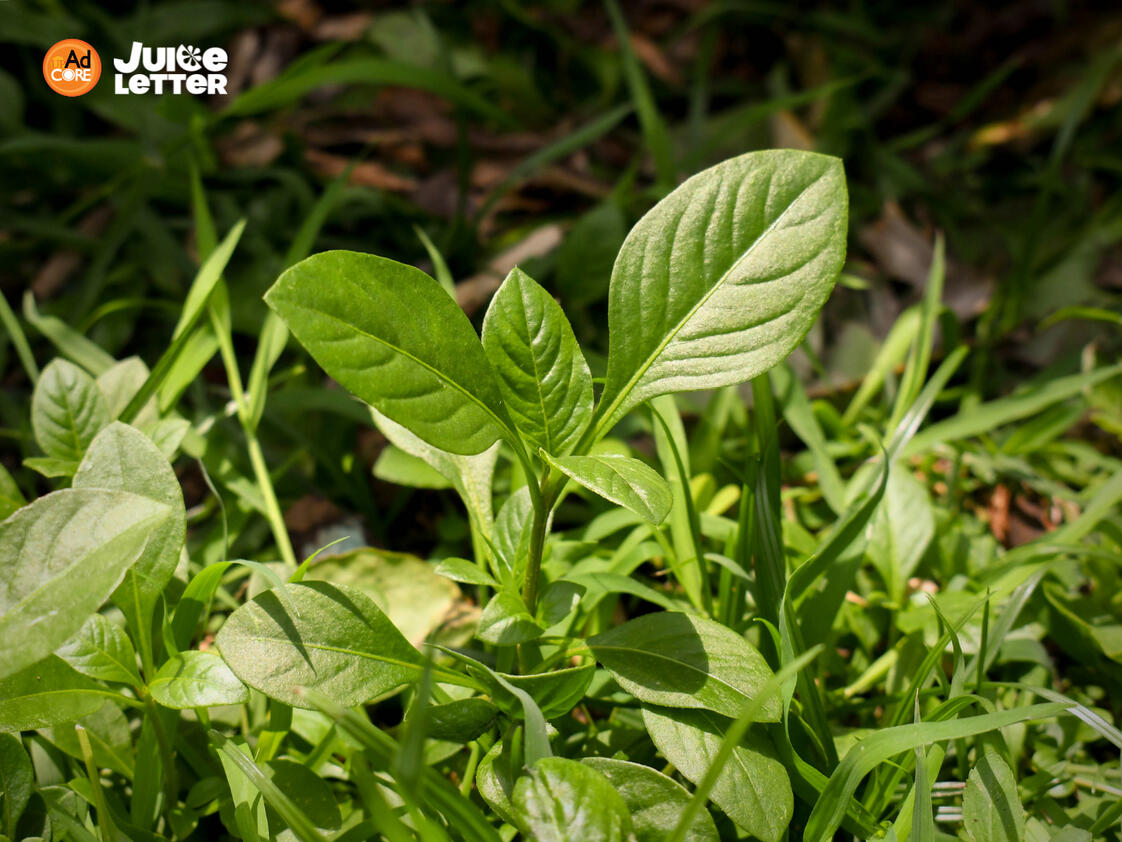
About two months before graduation, approximately 30,000 to 35,000 seeds are planted along the aisle of University Avenue. Before planting the seeds, the soil has to be well-prepared. The planting is handled and financed by the UP Diliman Campus Maintenance Office (UPD CMO). I interviewed Kuya Lorenz Bayani, who has been working at UPD CMO since 2013, about the planting of the sunflowers. Kuya Lorenz details that the kind of plant planted along the University Avenue is certified sunflowers, which are of high quality and are able to endure both rain and sunshine. It is fertilized with urea, which gives nitrogen to the plants, to make them greener and lush.For a UP Student like me, these sunflowers are not just flowers but part of our identity as the collective Iskolar ng Bayan — a symbol of deep meanings, experiences, and cultures.
For a UP Student like me, these sunflowers are not just flowers but part of our identity as the collective 'Iskolar ng Bayan' — a symbol of deep meanings, experiences, and cultures.
We are the sunflowers, groomed to bloom in our own vibrant ways. When I first entered UP, I felt tiny as a seed, small, and humble. But as time passed, I learned that there is a reason why UP chose me, why this tiny seed needs to be planted here. I hold an essence of potential, stubbornness, and purpose; we must believe in the university's willingness to foster and nurture us. The eager fingers gradually arose from the soil, the beginning of our endeavors that were fueled by the continuous efforts, support, and care of our professors, friends, families, and even the people within the community.We know the cycle, traditions, and the system. We join organizations, events, and activities, and learn how to manage time. Our roots dig deeper and become stronger as we learn the culture of UP Diliman. These foundations provide stability as we grow taller, where every inch of growth is a measurement and a testament to our eagerness in fulfilling our dreams.
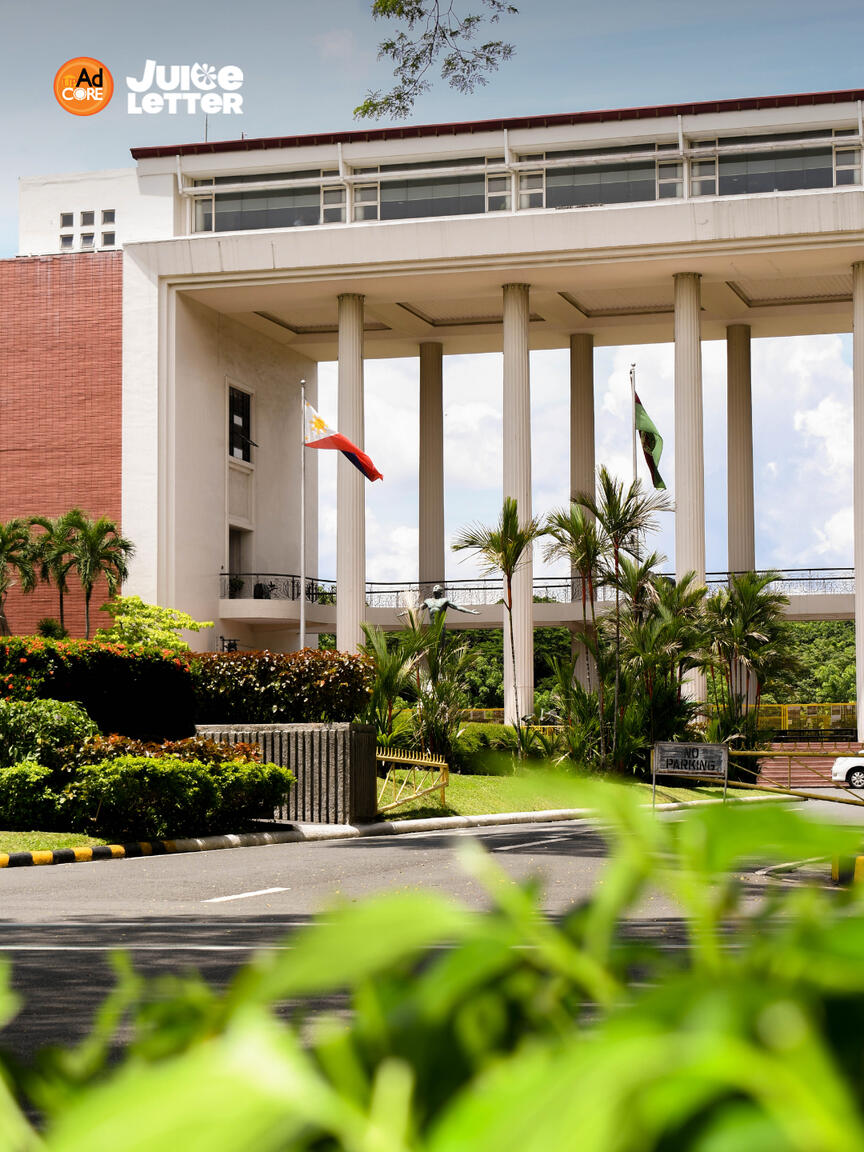
But the tale of the sunflowers would not be complete without the adversities. Given that June and July are wet months, torrential rains and harsh winds are tests. As I interviewed Kuya Lorenz, he stated:“Mahalaga itong pagtatanim kasi para ito sa mga estudyante nating magtatapos, kaya kailangan alagaan. Kahit bumagyo man, tinatayo pa namin ‘yan ‘pag nagtutumbahan.”In college life, we cannot escape challenges, difficulties, and setbacks. Walking down the path of our dreams is often fraught with hurdles. We need someone to lean on, and someone who can lift us back up when we bend down; it is an essential part of the growth process. Overcoming these difficulties builds strength with motivation, character, and identity of being an Isko which prepares us for a vibrant bloom.
Walking down the path of our dreams is often fraught with hurdles. We need someone to lean on, and someone who can lift us back up when we bend down; it is an essential part of the growth process.
Sunflowers are known for their heliotropic behavior, in which they turn and grow towards the light. This characteristic symbolizes how we move towards our goals and ambitions. And finally, the long wait is over, from budding to full bloom – graduation season.

The Sunflower Blooms - a celebration of all the hard work, struggles, and achievements gained through trials and triumphs. Each plant, while similar in structure, is unique in its own way. Just like our graduating Iskolars ng Bayan, similar in the wearing of Sablay but differ in experiences, backgrounds, and perspectives. While each of them stands tall in their uniqueness, the graduates and sunflowers share similarities, collectively creating harmony from University Avenue to the Amphitheater, illuminating the whole community of UP Diliman.The sunflowers, once bloomed, are known for producing an abundance of seeds. These seeds are sort of our legacies we leave for future generations and is ultimately the cycle of giving back to the community. Success is not a static point or a personal achievement, but rather a dynamic and continuous journey of nurturing and blooming, much like the UP’s mission of shaping minds that shape the nation.
Success is not a static point or a personal achievement, but rather a dynamic and continuous journey of nurturing and blooming, much like the UP’s mission of shaping minds that shape the nation.
Pagpupugay sa mga magsisipagtapos, nawa’y ang mirasol na bulaklak ay maging isang paalala sa mga karanasan at paglalakbay sa unibersidad. Lagi’t lagi para sa Bayan!
References:Office, D. I. (2022, January 18). Yes, sunflowers can bloom in the rain. UP Diliman Information Office. https://upd.edu.ph/yes-sunflowers-can-bloom-in-the-rain/
Shantay You Stay: A Queer Student’s Journey in UPD
Written by Dave Oliver
Photography by Marga Relos
Published June 1, 2024
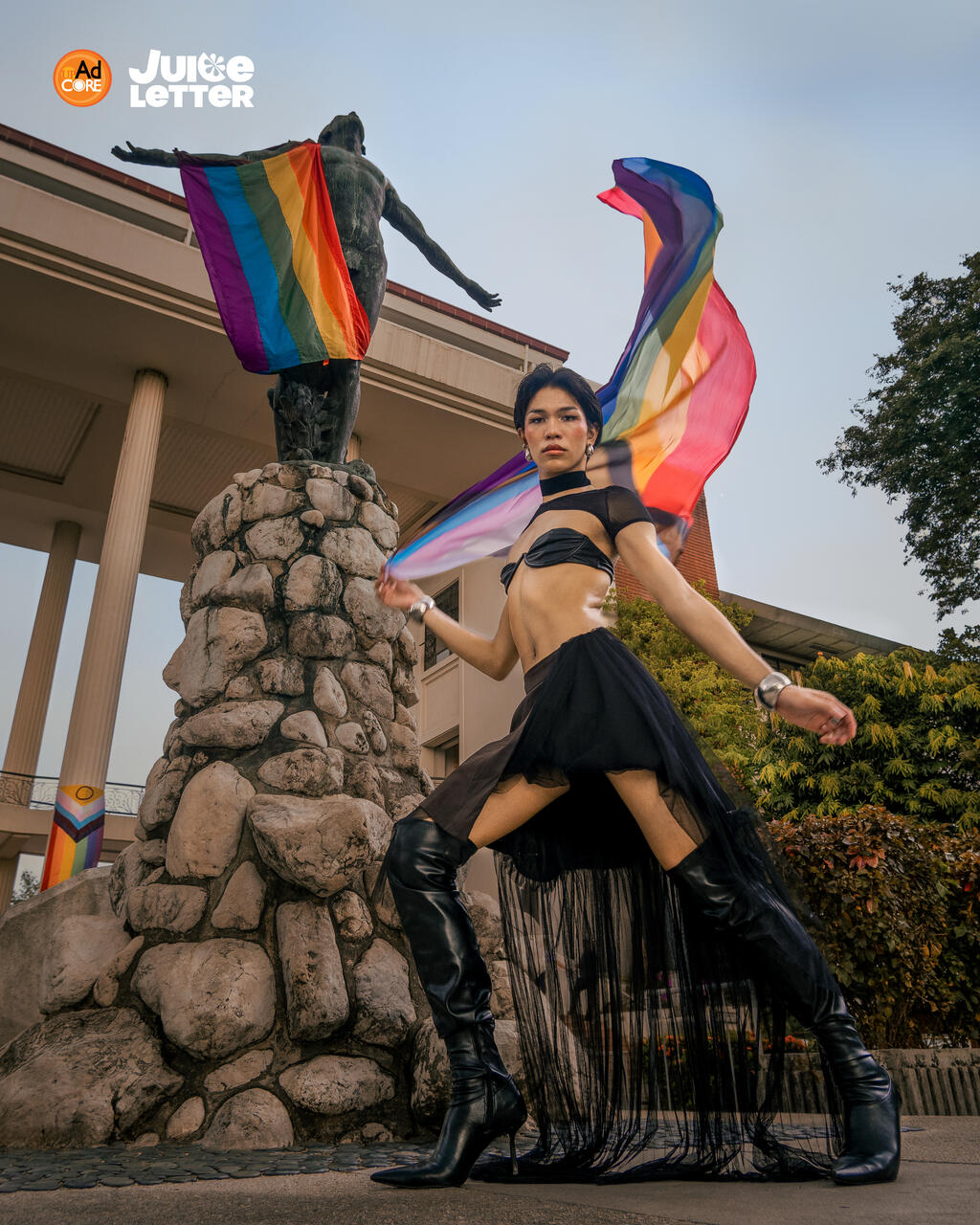
Bakit ang daming bading sa UP?As queer individuals living in a society heavily influenced by conservative religious beliefs, we’re made to feel like an outsider in spaces that we’re supposed to be familiar with. We’re made to feel uncomfortable. Society may pressure us to believe that being ourselves is not okay and that it is unacceptable to do so. Unfortunately, many of us are compelled to live inside the closet to protect ourselves from discrimination and hostility — even in the comforts of our very own “home”.
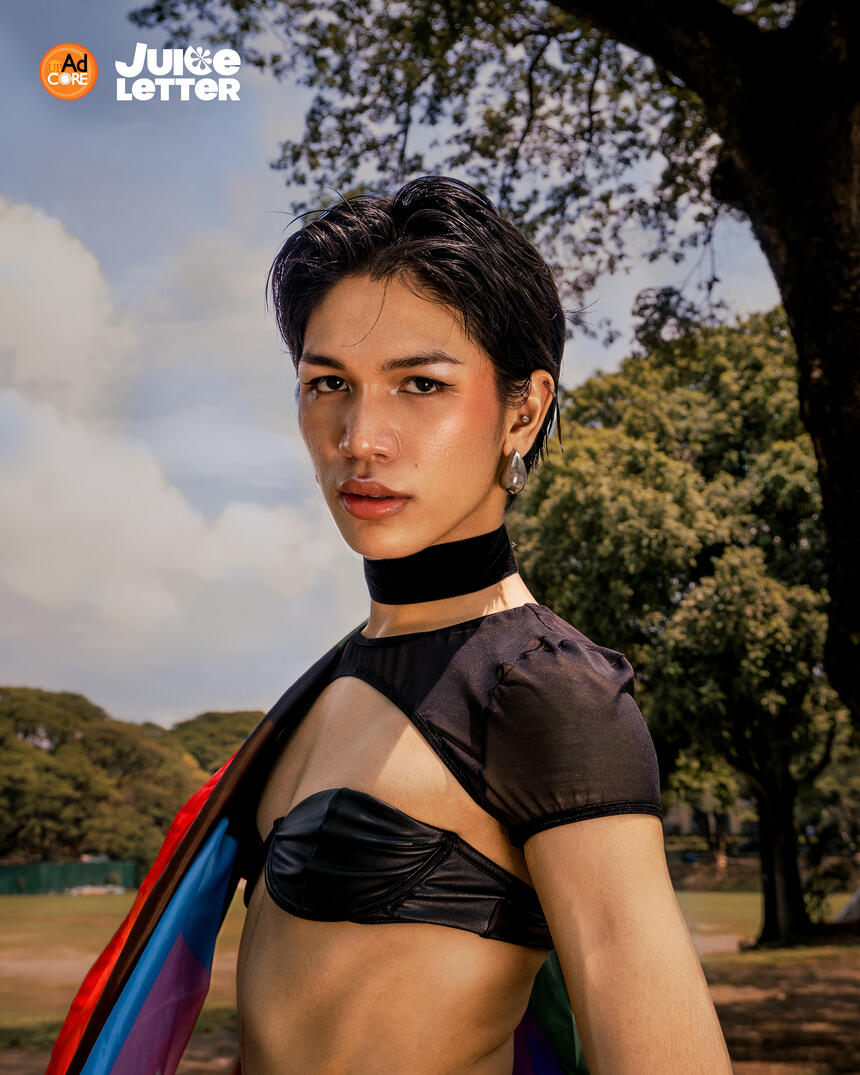
Growing up in a Christian household, I was taught from a very young age about the traditional gender roles and expectations I needed to conform to. What was considered acceptable, including views on homosexuality, was framed as an issue of morality. However, early on, I sensed that I was different. It felt as though something within me was wrong, yet I couldn't articulate it at the time as it was against the teachings of our church. One thing I was sure of was that I couldn’t disclose my true feelings to anyone, especially to my family, knowing the consequences I would face if I did otherwise.Just as I thought life would be better outside our house, it wasn't any better in my schools. In my first year of high school, I was forced to stay outside the classroom because of my hair. They messed my hair up, giving me what they called “uka” for not complying with their policy that boys must have short hair. I never understood why such a policy existed—what does my hair have to do with studying? Discriminatory school policies and practices, from restrictive dress codes to gender-segregated facilities, create another environment that imposes limitations on our actions and expressions. As queer individuals, they limit us from expressing our identities authentically. We are forced to feel that there is no place for us.All my life, I lived in an environment where people like me were deemed to be sinners or afflicted with disorders. Faced with pressure and social stigma, I lived in fear. I was left with no option but to deny my true identity. Pretending to be someone I was not seemed safer than embracing who I truly was. All I’ve known is just to hide it away.
As queer individuals, they limit us from expressing our identities authentically. We are forced to feel that there is no place for us.
In senior high school, I dreamed of getting into UP, just like any other student. With over 100,000 applicants the year I applied, it's clear how highly sought-after UP is, being the most prestigious educational institution in the country. While that might be one of my reasons, my main reason is that there are no uniforms or dress codes — the mere fact that everyone can wear literally anything. It might seem like a shallow reason to some, but for a person who never got a taste of freedom, it is everything! The thought of finally expressing myself without fear — of breaking free from the restrictions that have always held me back — was nothing short of exhilarating.UP Diliman was an entirely new world. It’s an environment I had never experienced before. It feels new, yet not so new. The moment I set foot on campus, I felt like I belonged. I just fit right in! While I knew that transitioning to college would be complex and challenging, the freedom to be whoever you want to be made a huge difference and definitely made everything more bearable.
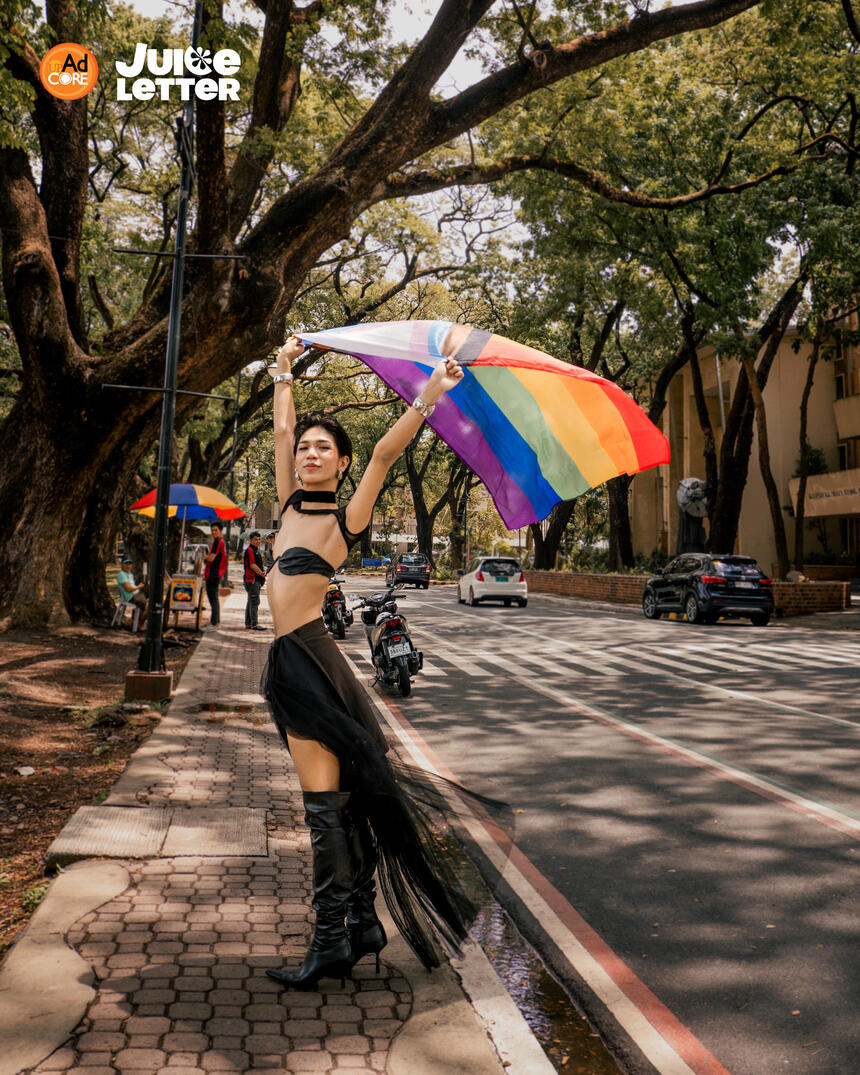
As I immersed myself in campus life at UP Diliman, I quickly realized it was more than just an academic institution—it was a place of acceptance and inclusivity, especially for the LGBTQIA+ community. With policies promoting diversity & inclusion, respecting students' lived names and pronouns, pride celebrations, and gender-neutral restrooms, the university proved to be a safe space that respects self-identity and self-expression.It was a breath of fresh air. Seeing liberated people, just living in the moment and experiencing life. I am fortunate to be one of them, liberated. Here, I could express myself freely, without fear of discrimination. Being who you are and wearing whatever makes you feel good and comfortable is your choice: no dress codes, prescribed haircuts, or bans on tattoos and piercings. No one was going to judge you. No one cared — in a good way.
The thought of finally expressing myself without fear — of breaking free from the restrictions that have always held me back — was nothing short of exhilarating.
I'll never forget the first time I entered my college building, wearing clothes considered “feminine” with a full face of makeup, feeling a bit anxious. However, instead of the stares or negativity that I anticipated, I was greeted with a smile and compliment from Ate Nelia, our security personnel. To be acknowledged without judgment was nothing short of touching — a departure from the usual eyebrow raise and blatant hate in peoples’ eyes when they see someone different. It’s way more enjoyable to study when you can express who you truly are without the constant thinking of others' criticisms. Everyone's welcome, no questions asked.
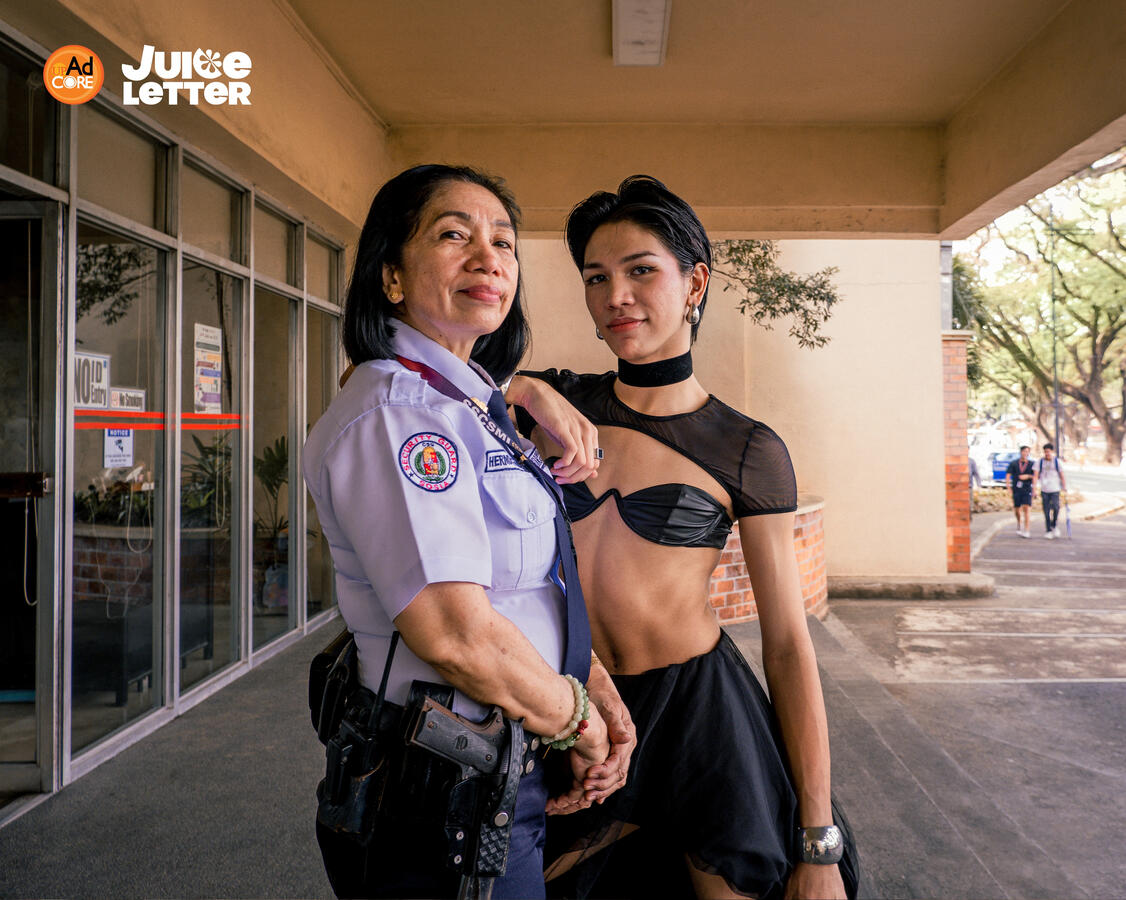
At last, I found my home. A safe space for everyone, no matter who you are. This journey eventually led me to find my community. The people who weren't bound by blood but were family to me in every sense. The people with whom I share my good, bad, and ugly, and who still love me just the same. The people who I no longer need to pretend and hide from when I am around them — my chosen family.I experienced a profound sense of belonging. I had the support I needed to embrace my identity. Support that allowed me to flourish and become more confident in my own skin. It was a liberating feeling, as I no longer felt the weight of conforming to heteronormative norms and societal expectations. For the first time, I felt at home. I felt safe. I felt seen for who I truly am.
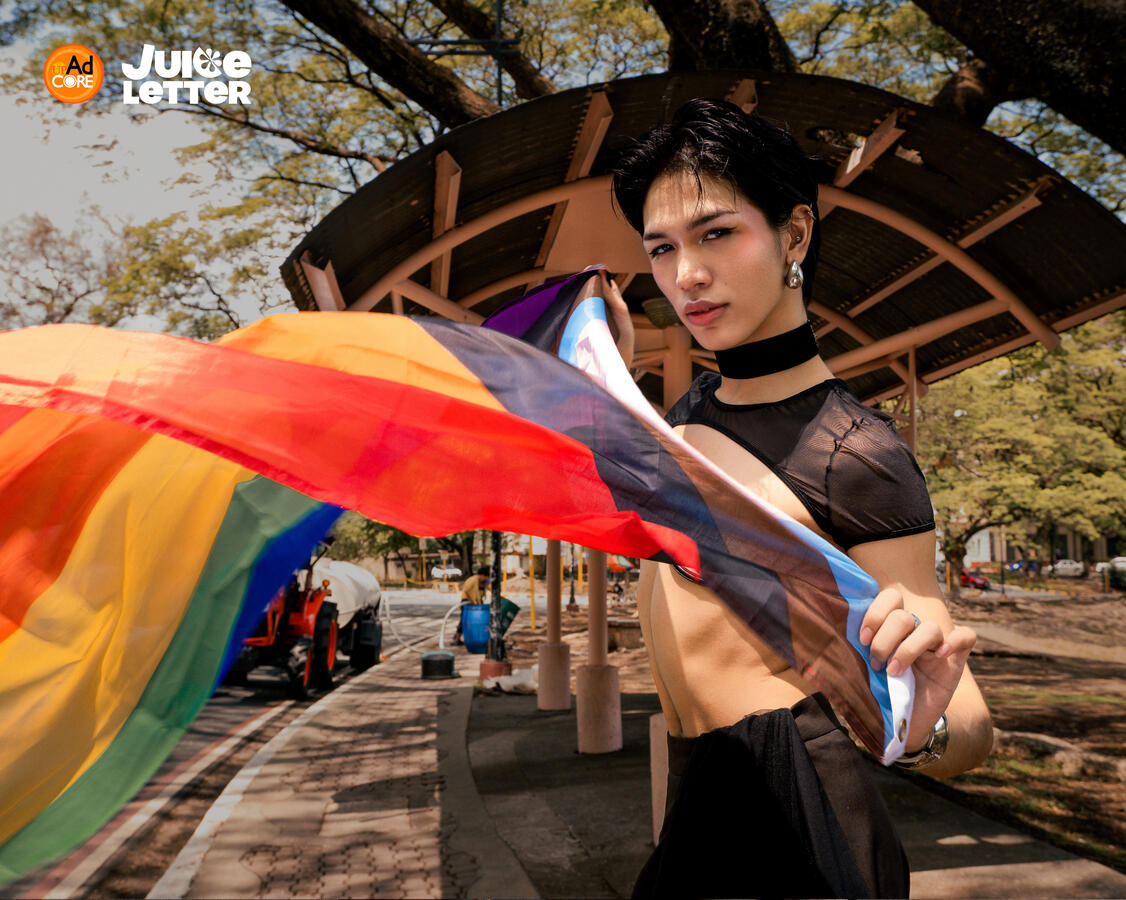
Although my situation at home remains unchanged since my parents are still unaware of my sexual orientation and gender identity, I’ve adapted to live a dual life as openly queer in UP – a “proper” boy who conforms to traditional heteronormative rules when at home. For so long, I’ve hidden my true self from the world. Every day at UP feels like an opportunity to be myself in its true essence, to reclaim my identity, and to get to know myself even better. I've come to realize that living with personal freedom, where no one dictates your actions or behaviors, you get the opportunity to define who you are. You must make sense of yourself, which is the most beautiful thing. And I owe It to myself! To have my moment, live, and experience things during my time at UP, no matter how brief it may be.
Every day at UP feels like an opportunity to be myself in its true essence, to reclaim my identity, and to get to know myself even better.
Now that I prepare to leave, as graduation is fast approaching — or as the gays put it, I’m about to sashay away — I reflect on how my perspective of myself has undergone a significant shift. It serves as a reminder that true freedom comes from being true to yourself, no matter who you are. UP Diliman has significantly shaped who I am today, and I'll always be grateful for that. With confidence, I say that I have found my authentic self. And for me, that alone is the ultimate success no one can ever take away from me.
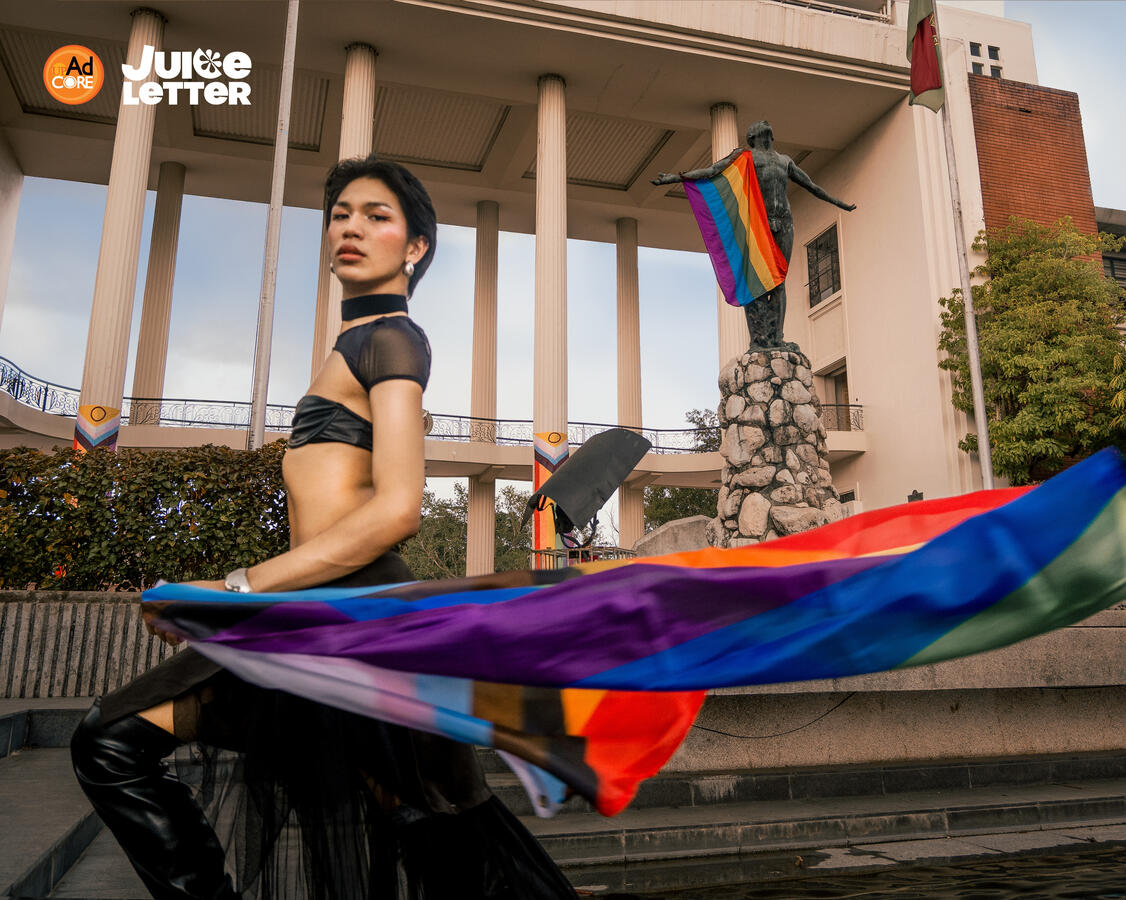
As I write this, I'm mindful that this experience isn't just about me; it's something many others can relate to. I’ve thought of all the queer individuals who might be going through something similar, struggling to find their safe spaces — a place just like home. My message is one of hope: things do get better. It might take time, but eventually, you'll find your safe space and chosen family — the people who accept you for exactly who you are, no matter who you love. That's the beauty of the queer community; we always have each others’ backs. I see you. I understand it might be scary at first, but you have to go out there and experience things. You deserve to live a life full of color without fear, standing loud and proud!I love you, Bading.Happy Pride Month!
You May Like
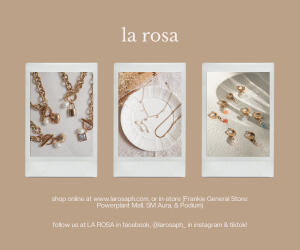
Weaving Wisdom: The Sablay in Contemporary Times
Written by Fiona Valenton
Published May 8, 2024

The billowing fabrics resembling the Sablay float gracefully atop one of the plain grasslands of UP Diliman’s University Avenue, metamorphosing as the winds travel to and fro, leaves hueing from oat to green, clouds traversing left to right, and the sun poignantly shining from bottom to top. Inspired by the sensibilities etched to UP are the three identifiable colors maroon, forest green, and gold. In composer Nicanor Abelardo’s own words, “Luntian at pula, sagisag magpakailanman; ating pagdiwang, bulwagan ng dangal; humayo’t itanghal, giting at tapang.” For Juiceletter’s next issue, Sabay Sasablay attempts to travel honestly through the experiences of the UPD student life and aims to examine the transforming meaning and value of the Sablay in today’s times.The Sablay is an intricately woven and masterfully designed loose garment used as an academic costume for formal engagements at the University of the Philippines, designed by “The Father of the Sablay” Abraham Sakili. It is worn on the shoulder to honor and give value and respect. In the university’s own words: "The Sablay symbolizes our nationalism and the importance we put upon our indigenous culture, which are among the values learned from the University" (Office of the University Registrar, n.d.).In these times of constant flux and change, how can we reframe and reimagine the meaning and value of the Sablay while honoring its historical roots and tradition? Drawing upon the perspectives of four members of the UP community—a prospective freshie, a soon-to-graduate student, an esteemed alumna, and a respected professor—we come to realize the multidimensional symbol of the Sablay that remains consistently relevant, adaptable, and forever ingrained in our identity.
The billowing fabrics resembling the Sablay float gracefully atop one of the plain grasslands of UP Diliman’s University Avenue, metamorphosing as the winds travel to and fro, leaves hueing from oat to green, clouds traversing left to right, and the sun poignantly shining from bottom to top. Inspired by the sensibilities etched to UP are the three identifiable colors maroon, forest green, and gold. In composer Nicanor Abelardo’s own words, “Luntian at pula, sagisag magpakailanman; ating pagdiwang, bulwagan ng dangal; humayo’t itanghal, giting at tapang.” For Juiceletter’s next issue, Sabay Sasablay attempts to travel honestly through the experiences of the UPD student life and aims to examine the transforming meaning and value of the Sablay in today’s times.The Sablay is an intricately woven and masterfully designed loose garment used as an academic costume for formal engagements at the University of the Philippines, designed by “The Father of the Sablay” Abraham Sakili. It is worn on the shoulder to honor and give value and respect. In the university’s own words: "The Sablay symbolizes our nationalism and the importance we put upon our indigenous culture, which are among the values learned from the University" (Office of the University Registrar, n.d.).In these times of constant flux and change, how can we reframe and reimagine the meaning and value of the Sablay while honoring its historical roots and tradition? Drawing upon the perspectives of four members of the UP community—a prospective freshie, a soon-to-graduate student, an esteemed alumna, and a respected professor—we come to realize the multidimensional symbol of the Sablay that remains consistently relevant, adaptable, and forever ingrained in our identity.

When I was what the lingo calls a UP-cutie passer, my friend and I would visit the campus together to familiarize ourselves with the jeepney routes and buildings around UP. On one particular visit, after having our medical certificates approved, we headed to the UPBeat physical store nearby to browse through some lanyards. We both had a liking for the Sablay-designed lanyard, but we thought that we were not deserving of it, feeling we were not worthy until we earned ourselves a University Scholar award. Then, our eyes darted over the Sablay and the chatter of dreams began to linger. At the time, we did not know what it meant, but we knew it was a big thing, and we wanted to make our parents proud with the fabric worn over our shoulders, basking in the glory of success on our future graduation day. We went home afterward, debriefing through text, both feeling excited for a new semester to begin.To many, this marked the start of a dream, but as we journey mid-way to getting the Sablay, one must go through these moments of sablay (failure). The emergence of social media has catapulted a community of grievances and struggles both personal and systemic experienced by the everyday Iskolar on Reddit’s r/peyups and Facebook freedom walls, with memes as a coping mechanism, to name a few. Being underloaded, experiencing delays, deciding to shift courses, grappling with impostor syndrome, having a difficult time juggling responsibilities, and struggling with academics are some shared struggles students have expressed online.
In these times of constant flux and change, how can we reframe and reimagine the meaning and value of the Sablay while honoring its historical roots and tradition?
When my first semester began, I already encountered a handful of growing pains. It was the era of easing back to the new normal where onsite classes were conducted minimally and only to a select few courses. I recall a moment when my teacher called me for recitation, but my attention had already drifted away, leaving me to come up with an answer. He scolded me for not listening and lectured me and the class afterwards. I tried to do better in the following sessions, but that moment left a lasting impression on him and, unfortunately, my grade. It was our second meeting.Currently in my sophomore year, I am suspended on my desk, writing as I grieve and grapple through the weight of my backlogs, the nearing finals season, film productions, and org responsibilities. All clashing with one another, with no rest to spare. I feel the constant pressure to excel, to generate the best ideas, to execute them with exacting precision, and to make myself proud of thinking that I have everything under control. My meals have resorted to pancit canton and fish balls, my sleep schedule has suffered, and I have constantly felt fatigued and burnt out.Taking the task to write and research about the Sablay, I find myself connecting with some of the people around me, gathering answers that are real, honest, and vulnerable. To those stuck in the middle like me, perhaps the Sablay can bring us closer and more grounded to what we’re striving for.
To many, this marked the start of a dream, but as we journey mid-way to getting the Sablay, one must go through these moments of sablay (failure).
Among the friends I've formed a bond with is Paul Castillo, who is currently working on his thesis. Upon asking him what the Sablay meant for him, he requested some time for reflection. Bringing him back to a difficult time of transition from senior high school to college during the pandemic, where adjusting to the self-learning style in UP was difficult on top of being an introvert who struggled to connect with friends online. Constant self-doubt creeps up on him as he always catches himself finding it difficult to digest dense readings. Stepping into his senior year was also a tragic start as he almost got delayed because of CRS. Luckily, they allowed him to take extra units this graduating semester; otherwise, he would have taken a step back from graduating. And to the haunting feeling of loss, he told me, “As a senior, may persistent feeling ako na dapat sinusulit ko na yung oras na natitira sa ‘kin, kasi two years ‘yong nawala sa amin. Hanggang ngayon, feel ko pa rin na napagkaitan kami ng chance to experience the growth that comes with going through college nang hindi online.”After a moment of recall and reflection, he returns to me with a refreshing perspective, by associating two meanings of the Sablay: first is that things will work out—given how the anxiety crept up on him as a pandemic freshie—and second, that it symbolizes his personal growth within his most crucial four years in the university. This growth he states comes from all aspects of his life, “be it academically, in terms of work ethic, in terms of morals and principles, and how I look at life in general. It represents all these experiences that have created the current version of myself na dadalhin ko moving forward sa real world.”
After a moment of recall and reflection, he returns to me with a refreshing perspective, by associating two meanings of the Sablay: first is that things will work out—given how the anxiety crept up on him as a pandemic freshie—and second, that it symbolizes his personal growth within his most crucial four years in the university.
A relative of mine, Danielle Marie Dela Cruz, recently graduated last July 2023 for her second degree in BS Interior Design as Cum Laude. Her outlook on the Sablay is forward, yet meaningfully considered. However, with simplicity also comes a certain degree of deep thinking, experience, and introspection. Like many Iskolars, she struggled to get GE subjects, despite her priority status. “I had to practically beg para lang ‘di ako ma-underload, and I had blockmates na 4th year [standing] na di pa rin complete GEs nila, so nadelay [sila] dahil sa underload.” This also caused her to take odd GEs that were not related to her course as a compromise. On top of the enlistment struggle, she also had a difficult time coping with online classes at the start of the pandemic “because as a design student, wala ako[ng] materials sa province, and [I] had to be resourceful.”Like Paul, she also attributes two significant meanings to the Sablay: first is her determination and dedication to achieve a personal educational goal, and second is her paying homage and appreciation for her parents’ support and sacrifices.
She also attributes two significant meanings to the Sablay: first is her determination and dedication to achieve a personal educational goal, and second is her paying homage and appreciation for her parents’ support and sacrifices.
Having had the privilege of interviewing Professor Elio Garcia of the University of the Philippines, teaching in media in film classes, he challenges our ways of viewing and seeing the Sablay. He comes from two vantage points: an outsider and an insider. The former, as he did not get the chance to study in the university—however, he holds great honor and regard to its students; the latter, as an insider, as he is currently teaching in the university.Like many others, the Sablay to him is a marker of intellectual achievement from an education that is difficult to access. However, he argues: “Hindi tumitigil doon ang perception ko, kasi part ng pagkakaroon ng Sablay… Part of that intellectual position can easily slide to elitism depending on context, if we are not careful about it.”The elitism he talks about pertains to how one's intelligence can be wielded: either as a tool for leadership and mobilization, or exploited to detrimental ends. “Para sa akin naman, ang ultimate manifestation ng wisdom talaga ay kung paano mas gumagaan ang buhay ng isang indibidwal at [ng] mga tao na nasa paligid niya.” He also underscores the significance of the element of dangal (honor) in this context, stating, “Ang tao ay pinaparangalan ng Sablay, pero ang tao talaga ay nagbibigay-dangal sa Sablay—to honor that obligation.”
The elitism he talks about pertains to how one's intelligence can be wielded: either as a tool for leadership and mobilization, or exploited to detrimental ends.
Honor is not the only important aspect of carrying the wisdom and value of the Sablay. “Ang mahalaga sa akin ay sana ay patuloy kayong magsumikap na maging mabuting tao and patuloy na magbigay sa komunidad… generosity is very powerful, because it has the power to move communities.“He ends by giving a hopeful wish to the scholars of the university saying, “Sana mayroong sense of freedom na intrinsic na itong buong pag-aaral ko sa UP, itong investment sa akin ng gobyerno at responsibilidad na nakaataw sa akin ay isang proseso ng paglaya at pagpapalaya. Kapag malaya na tayo, kailangan lamang natin palayain ang iba.”
"Ang ultimate manifestation ng wisdom talaga ay kung paano mas gumagaan ang buhay ng isang indibidwal at [ng] mga tao na nasa paligid niya.”
As I reflect on these perspectives, I come to question whether this chase for time to excel and succeed is even necessary, at the cost of having our personal well-being compromised. The Sablay teaches us many things of wisdom, honor, and excellence. But perhaps what it does not show us, but the community can teach us, is the need to reflect on these struggles—to know you are not alone. Our mission of lifelong learning for a better tomorrow does not end in our four-year stay. The Sablay is carried with us forever; in our own time, this meaning can be realized. For now, let us reflect and act on the wisdom of Professor Elio Garcia: “When we see the Oblation basking in the sun, the nativeness of the human body… I see the sort of authenticity of the human person that does not only nourish his mind, but also his entire human being.”
The Sablay teaches us many things of wisdom, honor, and excellence. But perhaps what it does not show us, but the community can teach us, is the need to reflect on these struggles—to know you are not alone. Our mission of lifelong learning for a better tomorrow does not end in our four-year stay.
As the nation’s socio-political climate continues to evolve, so must we strengthen our identity as members of the community, with continued diligence and perseverance to carry and put into practice the values of the university, beyond the learning land we step on. With four lived and shared stories, the mission to define the meaning of the Sablay is a continued, never-ending process, always taking a step further to realizing a deeper, greater wisdom, as we bring our service and purpose for a better tomorrow.
References:Office of the University Registrar. “Academic Costume.” Office of the University Registrar, our.upd.edu.ph/acad.php. Accessed 8 May 2024.University of the Philippines. “Up Naming Mahal.” YouTube, 6 Mar. 2020, youtu.be/ok4Jeap3dr8?si=p3dSDoELOaNLAqB4.
The Isko Way of Life: Wandering across Diverse Cultures
Written by Khloé Hallare
Art by AJ Valdez & Marga Relos
Published October 16, 2024
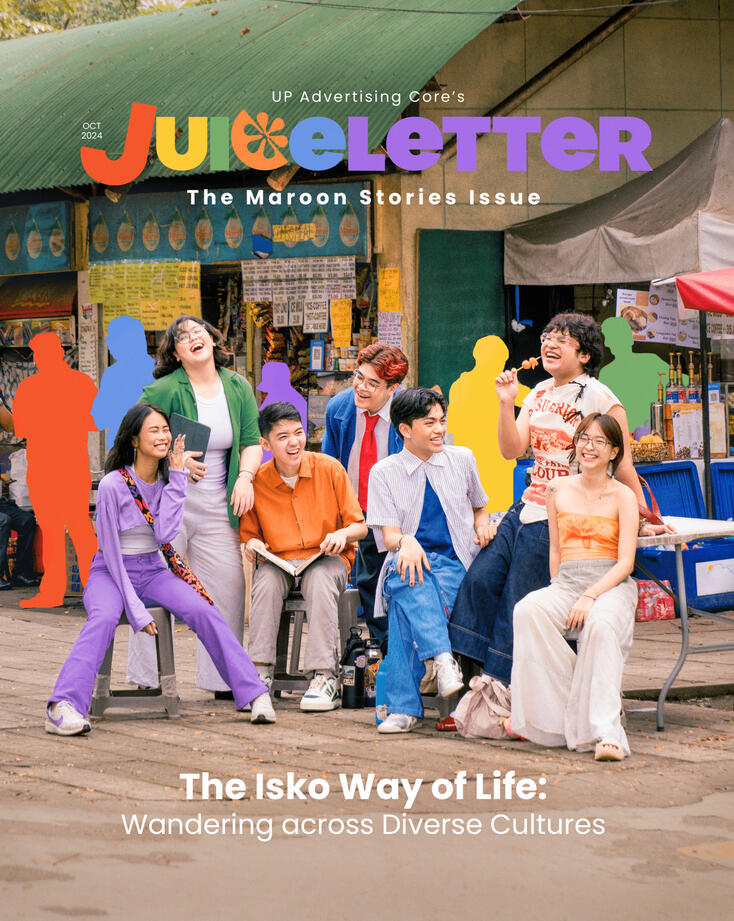
The University of the Philippines Diliman holds a common ground for Iskos and Iskas to meet at a certain point where they intersect–a place where one feels strongly linked to another regardless of differences. A shared and mutual kind of understanding between a fellow Iskolar ng Bayan despite being the extreme opposites.
There’s just this particular something in how the Isko way of life works.
Two semesters ago, Juiceletter featured the overarching features of UPD’s culture from talks about personal stories in the “People of UPD” to the iconic “Sabay Sasablay” which highlights the well-known graduation tradition of the university.This time around, the issue will narrow down its exploration to one of the core essence of what truly makes UPD an all-embracing community : the unique and diverse individuals who come together to collectively contribute to the one of a kind Isko culture.So to speak, WHAT is an Iskolar ng Bayan? Basing off technicalities, one is labeled as such when they are a UP student, acknowledged because of scholastic’s preeminence (Padua, 2023) having passed the UPCA/T and continuously striving in UP.Hence, it is an esteemed connotation brought with pride and honor, inside and outside campus. But beyond being tied with the university as a bona fide student, an Iskolar ng Bayan can transcend its technical definition because it is more than just that.
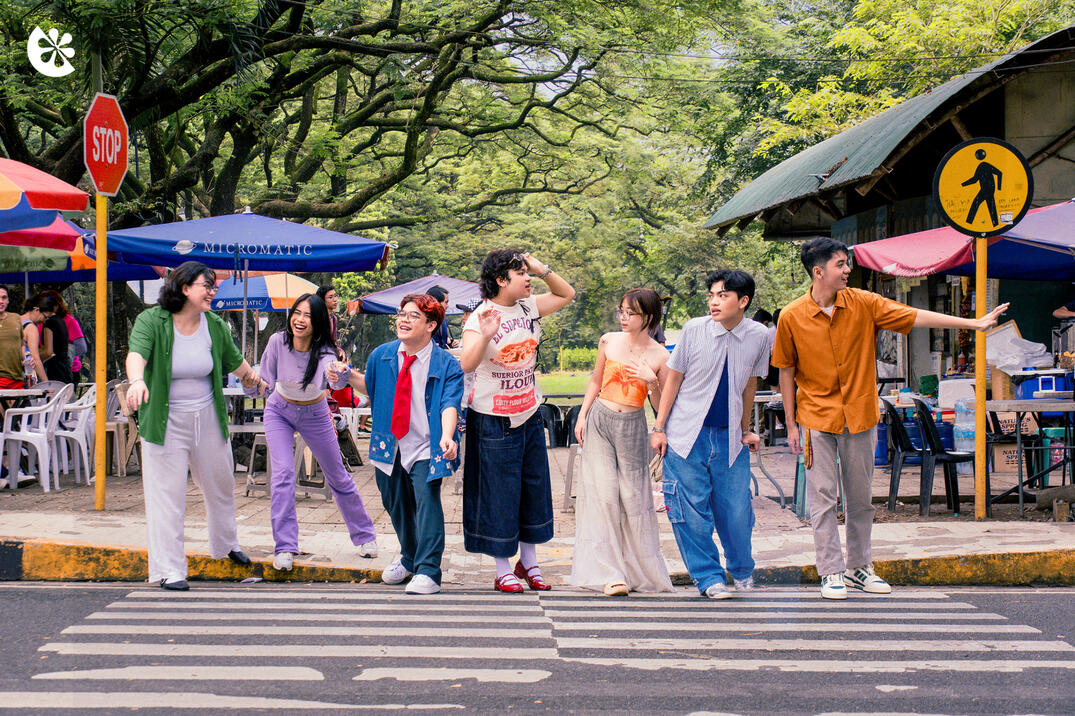
Asking some of my fellow Iskos the same question, they’ve had their own versions to say. Rather than defining what the label is, they instead described the notable qualities of one. Some mentioned how an Isko is someone who….…persists not only through the hardships that they face as they continue to persevere in finding the silver lining in their current positionality.
…have upright and strong values and take it with them wherever they go because being an Isko has already become a part of their character.
…is selfless because they are community-involved in many possible ways.In all their answers, a distinct theme stood out and that is how the title “Iskolar ng Bayan” portrays high complexity and is heavily subjective as it is strongly influenced and shaped by personal encounters that come in a variety of ways.Every Iskolar ng Bayan has their respective colleges as their first home stepping foot on campus. This is their place of adjustment, where they meet their first friends, where they learn the ropes, and where they learn a culture, getting to be part of a group.It is a fact that each college has these unparalleled characteristics that constitute their profile. This college-specific culture introduces them to an array of other sub-cultures from other groups like organizations, friend groups, batches, and other institutions that they also end up acquiring.
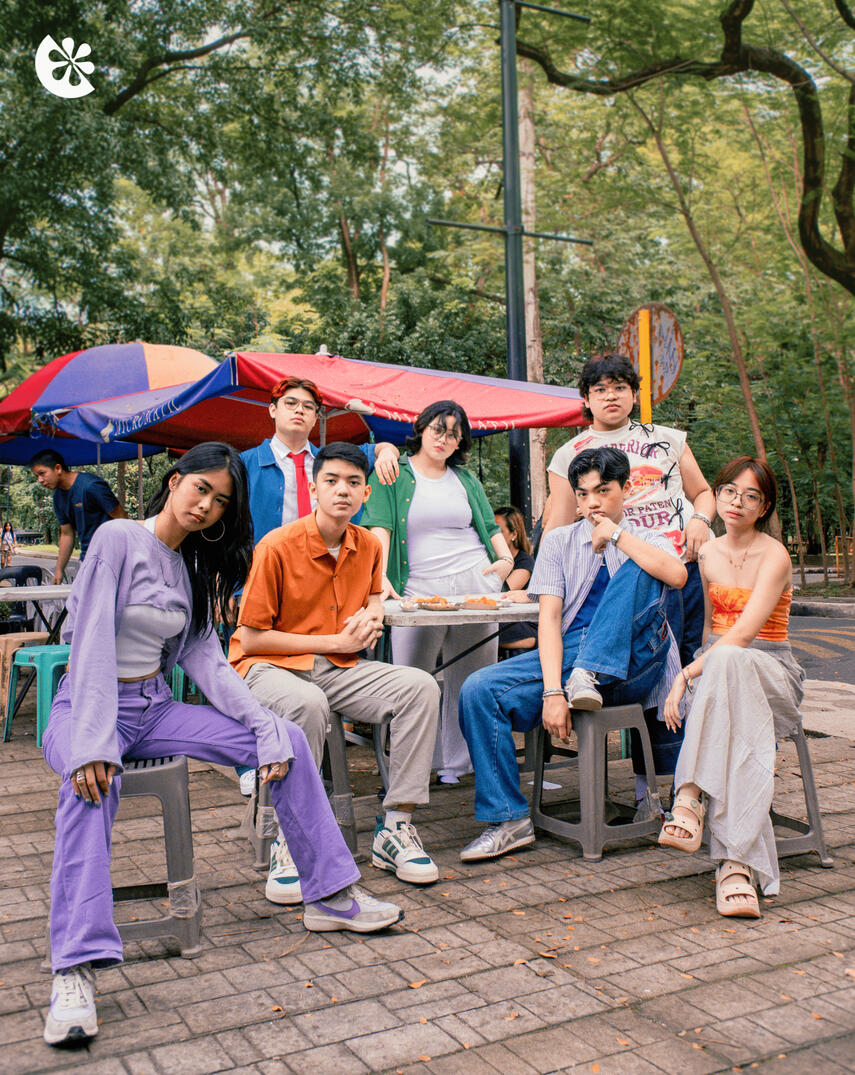
Now, their identities become a mix of numerous worlds.The process of diversification is a common experience among students which then becomes a shared experience–a focal point of relatable conversations to take place. Diverse people with different stories coming from diverse cultures just goes to show that the D in UPD stands for diversity.Juiceletter introduces this semester’s issue entitled “Maroon Stories” where we acknowledge stories from diverse cultures yet still formed as one.
There is a greater sense of belongingness in having experienced the personal side of being an Isko and having the chance to hear others’ lived experiences as well.Beyond making one feel that their “Iskolar ng Bayan” titles are well-deserved, it induces a feeling of strong connectedness to the UP community.
As we traverse through different colleges and groups to highlight campus culture in the succeeding articles, Juiceletter aims to remind you of UP’s identity being a diversified, collective experience of all Iskos.So to answer, what makes the Isko way of life work?It is the kindred reflection of sharing unique moments with a fellow—unique moments that wholeheartedly recognize the vibrance of contrasting perspectives.Whether it be a narration of their culture’s quirks and kinks or exclusive, unheard of stories, the team hopes that these resonate with your journey while you wander across as a student of UPD.
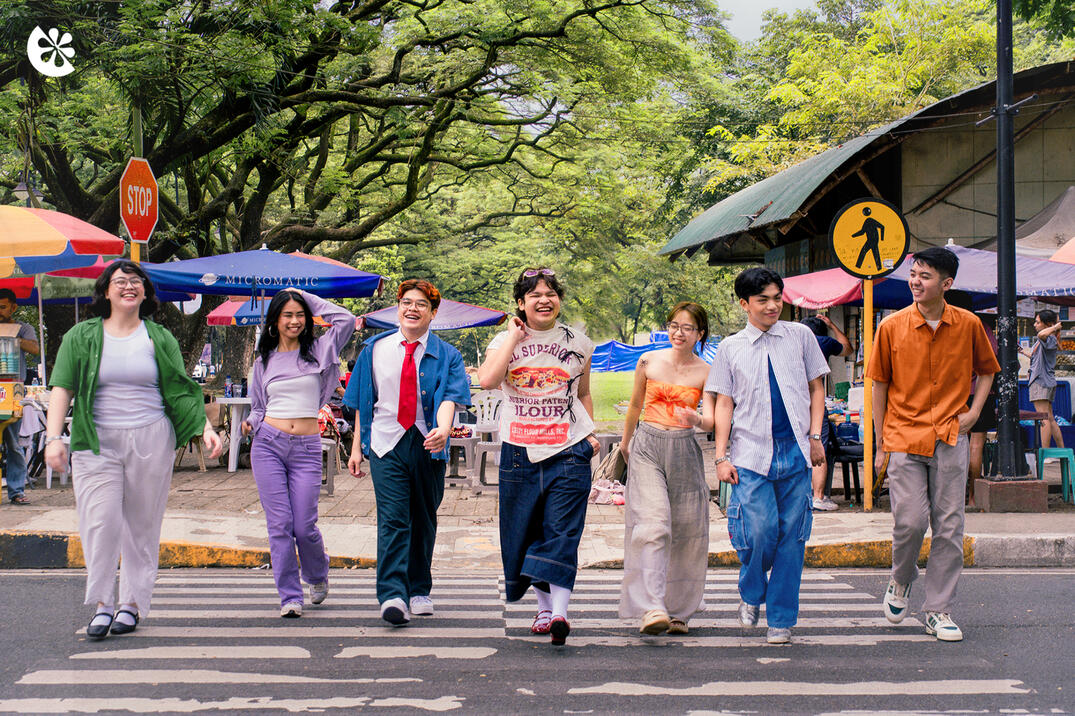
Special thanks to Teddy Dabao, Mix Claron, Seven Barlaan, Key Mendiola, Val Co, Karol Ramos, and Fonz Cordero for taking part in our shoot!
Reference:Padua, D. (2023, April 16). Iskolar ng bayan, quo vadis? – ZigZag Weekly. https://www.zigzagweekly.net/opinion/iskolar-ng-bayan-quo-vadis/
TL;DR Sure ka na ba sa Program mo?
Written by AM Kempis
Art by Hiroshi Hojo
Published October 28, 2024
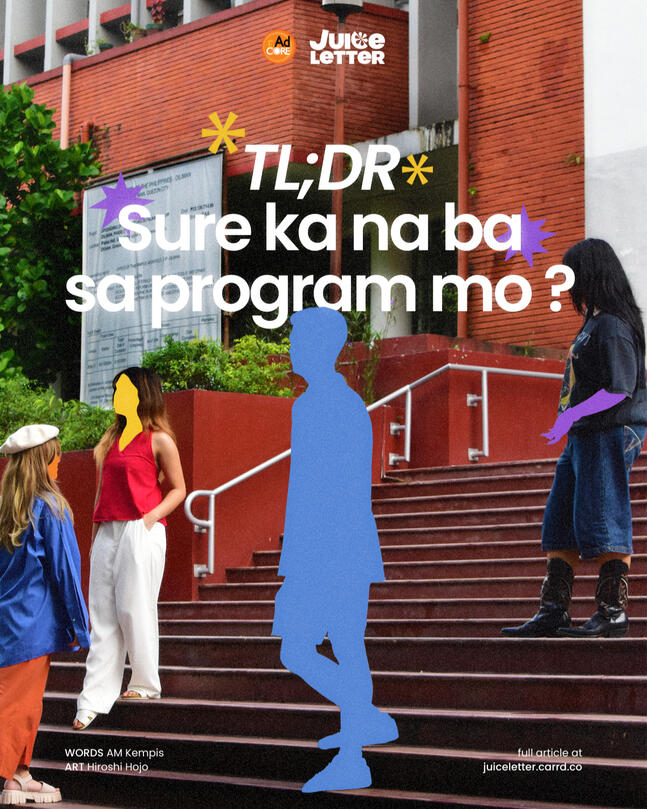
Sure naman talaga ako sa college program ko, pero bakit nga ba nag-shift pa ako?
Back in eleventh grade, I was tasked to create a career plan, which I recently dug up for this article and looking at it, I couldn’t help but laugh because none of those plans match where I am right now.Bachelor of Arts in History was never part of my plan, but fate led me here when I was accepted through the Degree Program with Available Slots (DPWAS) last 2023. By then, I was already content and prepared to study History for the next four years of my life.However, during a class discussion in one of my major subjects, I suddenly had an existential crisis. I felt disconnected from the concepts being discussed. The version of myself from high school—who was very participative in class discussions and actively helped peers who were struggling—is far from the guy who now sits quietly at the back of the classroom, trying hard to fit in every day.
These questions flashed into my mind: “hindi ata talaga para sa akin yung program na ito,” “hindi ko na ata ito kayang mahalin,” “I don’t think I can ‘fake it till you make it’ anymore.”I was planning to shift to Political Science, but after further research, I found a similar program where I felt I could grow and learn more as a person in serving the nation. This is when I discovered the Bachelor of Public Administration—a program I didn’t even know existed before college—listed none on my career plan in SHS. Eventually, I successfully shifted.After shifting, I was faced with the dilemma of getting delayed. At first, I was in denial and told myself that I would take full units for the next three semesters to graduate on time.
Pero ngayon, aking mas napagtanto na kahit mauna at manalo pa ako sa karera, kung hindi ko rin naman minahal ang pagtakbo, ay balewala lang din ang lahat ng ito dahil hindi naman ako naging masaya.
I won, but at what cost?In retrospect, I am glad that I can now sincerely participate in class discussions, more so during recitations. I feel more motivated to thoroughly read and digest assigned reading materials, and relate them to our classes. I can confidently say that I am now in a better, happier state, doing what I truly love and passionate about.College is full of surprises—you might question everything and explore other options to challenge yourself. My doubts pushed me to seek for more, testing my rigid mindset. This journey made me realize that it’s fine to take reroutes as we navigate our college life because after all, we are the captains of our own ship.To my fellow shiftees and those who are planning to do so, tandaan natin na sisibol din ang mga mirasol para sa atin. Let’s embrace the journey ahead because every redirection leads to where we are meant to be.
Pasarap Lang Talaga:
Expressing the Self through Style and Comfort in UP
Written by Karol Ramos
Art by Jeri Tabiliran
Published November 9, 2024

I studied in a catholic school all throughout my life, and coming into the University of the Philippines Diliman, a university that doesn’t impose on its students to wear uniforms, I was so excited to know that I could just show up to class in whatever I wanted.
Ang OA man pakinggan, but it’s genuinely one of the things I looked forward to most entering university life.
Now that I'm actually on campus, what I didn’t expect was that there would be so much diversity in how students present themselves—specifically through their fashion choices.As somebody who wants to radiate their confidence through their clothes and makeup, I like to prepare my outfits the night before. It makes getting ready in the morning a lot easier too as I’ve definitely been guilty one too many times of waking up much later than I anticipated.

Before I choose the outfit, I even visualize what events can happen the following day:What classes do I have? Is it only majors so the only people that’ll see me are my coursemates? Wait, no, I have GEs and Electives–so more people I don’t usually get to see. Might cross paths with someone cute, you never know. Teka, mag-tambay ata ako sa org ko then meet-up kami ng friends ko after. Siguro dapat sarapan ko pa onti? We might go somewhere nice. But also, baka tanungin niya ako bukas if gusto ko mag-lunch kasama siya? Yeah, no, now I definitely need to put on something real cute. Eh, maybe I should just wear my comfortable clothes but still keep it chic—my feet still hurt from those boots I wore. The other outfit option looks nicer with my accessories, though.Then I look at the time: I have literally spent 45 minutes arguing with myself over this.But that’s just me.Kind of insane but maybe, somebody else out there gets an existential fashion crisis for an 8:30 to 4:00 pm class schedule like me.While wearing the outfit that took way too long for me to decide on, I make my way to A2 to get a quick snack after class. I take a few glances at the passersby and I can’t help but notice the amount of style variety in us—I even get a few ideas for my outfit tomorrow too.Again, maybe that’s just the nosy in me talking but it led me to wonder:What are the distinctions in the students’ personal fashion choices? How do their considerations differ from each other? Could there even be a distinct style that can be seen in the colleges?And so, I asked some of my friends and our models for the shoot about their thoughts.

On college fashion…It can definitely be argued that while not all colleges have a distinct type of style present….“Whenever I go to CAL or CSSP… nakikita mo talaga na everyone is very diverse and may sari-sarili silang styles… it’s genderless. Walang standard on what your gender should be and free naman. It’s very sarap… sa feeling din. Ang sarap sa feeling na you get to express yourself to the 100 and 1 percent.” Ford, from the College of Arts and Letters, expresses.Coming from the College of Social Sciences and Philosophy wherein people are taking their pre-laws, Mads feels as if there’s a need to dress in a smart casual manner—but she doesn’t want that for herself. Choosing her personal style over what she perceives as the norm is important for her.
…it’s interesting that some colleges do.
A friend of mine from the College of Fine Arts labels students from there as “very fashion ready” and “almost everyday naka-dress to impress.”Dressing up in sustainable ukay-ukay pieces, adding a sense of individuality through various anik-anik attached to their bags, maximalism is what one can describe it as. For our CFA model, Chevy, you can even tell what their program is: some dress in more free-flowing clothes for sculpting and painting, while some dress more eye-catchingly by layering textures, mixing patterns, and wearing graphic prints.As a Studio Arts student, she expresses that she doesn’t stick to just one style.“Iba-iba kasi talaga aesthetic ko eh so I don’t stick to one. Minsan nga nagcocosplay pa ko sa class… so depende kung ano yung feel kong personality for the day ganun.”Similar to how a friend from the College of Home Economics studying clothing, she says that her program has influenced her fashion choices. Being surrounded by people who care about their outfits even if simply going to class has motivated her to explore what her style could be—even applying what she learned in class.In another college, such as College of Mass Communication, it’s observed that the more unconventional outfits some students will wear is very telling of the confidence they want to exude and the personality they have.
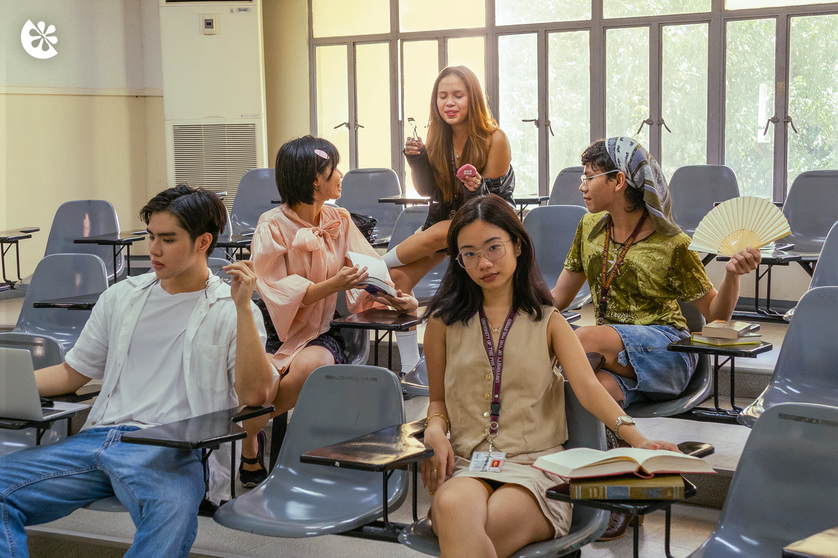
On personal considerations…The buildings in the campus are far apart from each other so it’s no surprise that students prioritize comfort. However, while doing so, they never fail to maintain their personal fashion sense.“In UP, super babad ka sa araw. So for me, gusto ko yung presko palagi, yung nahahanginan ako ganun. Presko but something I still feel pretty and confident in. Presko and giving!” said Yana, a Communication Research student from the College of Mass Communication.And while UP has such a beautiful campus, it’s hot out here! The sun is beaming most of the time, hence, wearing something breathable is probably more ideal.Meanwhile, Cam also from Maskom, even says (which surprised me) that the material of his clothing matters!“For me personally, number one: comfort. This is through fabrics. As much as possible, I try to go for more natural fibers because it’s more breathable and also with environmental considerations.”
After all, confidence is really the top priority.
“I’m someone who finds her confidence in the outfits I wear everyday so if my outfit looks good, I look good—so I am able to spread that vibe everywhere,” said Mads.Comfortable or fashionable, what’s most important is an outfit that brings out the confidence to get them through the day.
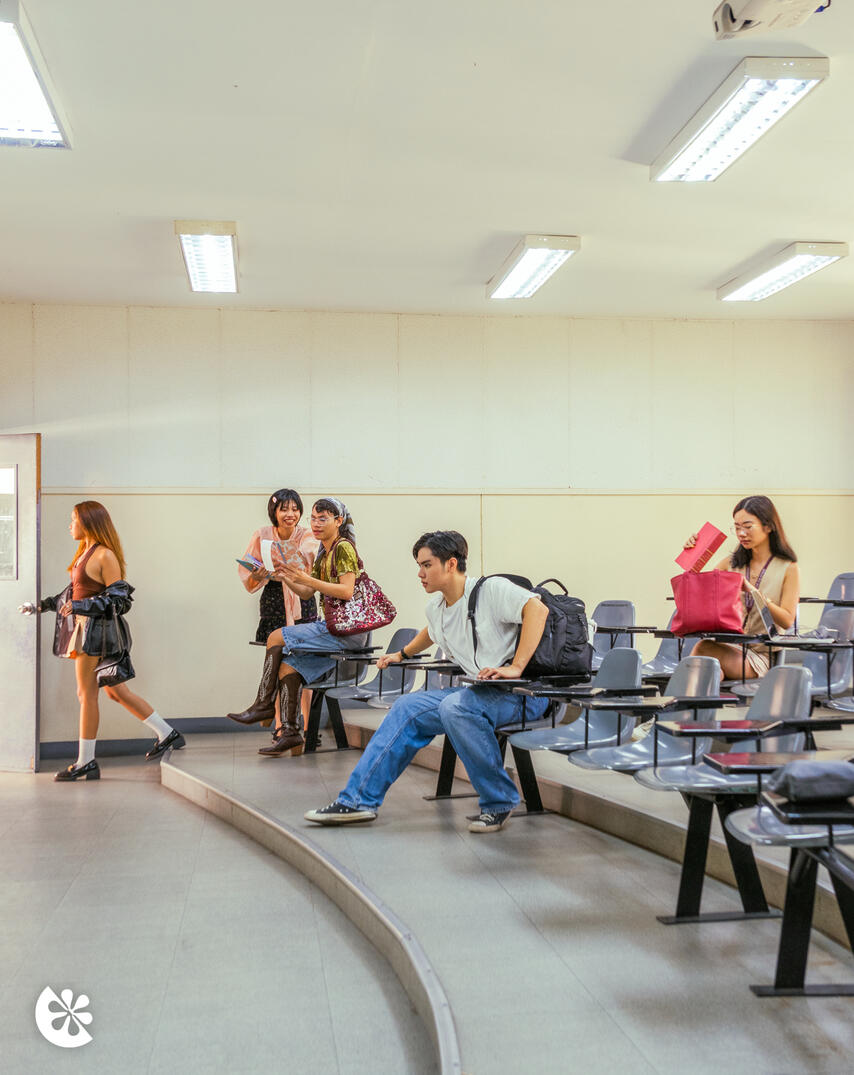
Truthfully speaking, as someone who prefers to present their femininity, I get insecure at times.
Seeing people who are similar to me but dress more heteronormative makes me wonder if I should be like that too.But if there’s one thing I’ve realized in college, it is how UP continues to provide an avenue for self-expression, free of judgement, because it can be done through many forms such as writing, art, music, dance, photography–with fashion being no stranger to that.College is one of those major periods in our life wherein we’re surrounded by many people, with varying personalities, who show off their niches in unique ways. Subtle or bold, how one presents themselves is only one of many defining characteristics which paint a picture of who they are.You come across this in the many shared spaces of UP that one may become curious whether fashion in our community is more than just a personal choice.
It’s a symbol of lifestyle.
Even if you haven’t found your style, don’t push yourself to feel the need to have one just because others in the community already do. Our model from CAL, Ford, beautifully puts it as:“...your clothing is like your skin. It takes time to look kung ano yung best for you. Have fun with exploring whatever fashion taste or clothing style yung bet mo!”Gets na gets.
Special thanks to Benford Cabasan, Carlo Mendoza, Chevy Dela Cruz, Eliana Cabueños, and Maiddyleen Gopez for taking part as models in this article’s shoot!Special thanks to Mika Abada, Juiceletter 19.1 CRT intern, for helping us out in the execution!
Stepping Closer: Reflections of a Graduating Student
Written by Bianca Lucañas
Art by Marga Relos
Published November 16, 2024

The trees are as green as ever at the Acad Oval. From a distance, jeepneys pass along Magsaysay Avenue. Students excitedly talk to each other as they walk, maybe on the way to their classes, or on the way home. Nothing out of the ordinary because nothing has changed, but maybe I did.This semester can mean differently depending on the student. For some, it’s the start of their life as UP students, excited to explore where their college life will take them. For others, it’s a continuation of their journey, maybe reaching a midpoint of their undergraduate degree.However, for graduating students like me, it’s the start of the end. The clock is slowly ticking as our stay in the university lessens with one or two semesters left.
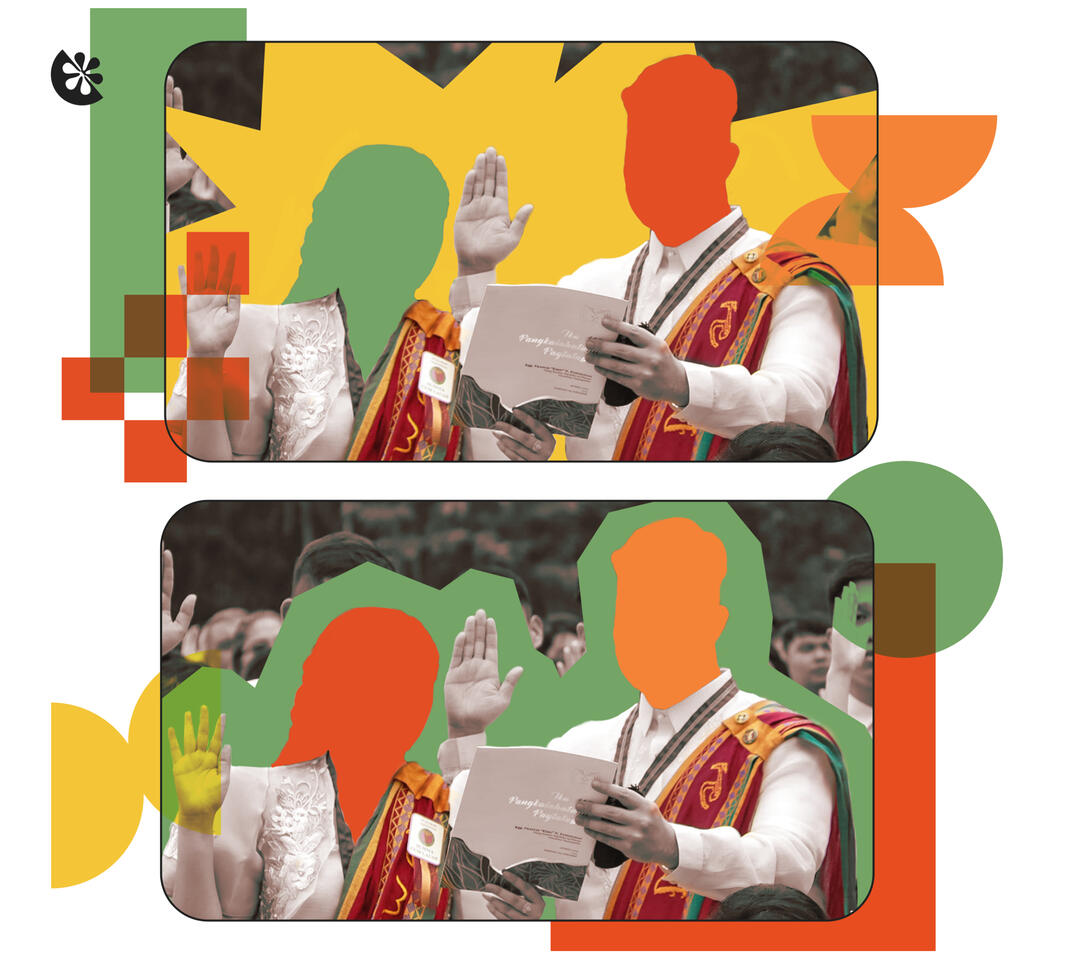
As the semester goes on and we’ve reached this halfway point, some emotions can also arise. Relief because the semester is about to end in a month. Restlessness because there’s still a month left. Tired due to the continuous hustle because it’s that point of the semester where academic works are piling up. We’ve submitted so many outputs, and they are not running out, the to-do list seems to never end.In true procrastinator fashion, I’ve chosen to focus on other things in the meantime instead of getting back to my acads. Truth be told, I’m still doing some work, but I want to take this opportunity to reflect on what this semester truly means to me. I’ve been running for so long now, and I want to pause and look back on how far I’ve come.
Maybe this is the point when I’ve come so far to be this close, and everything feels riskier because of it.
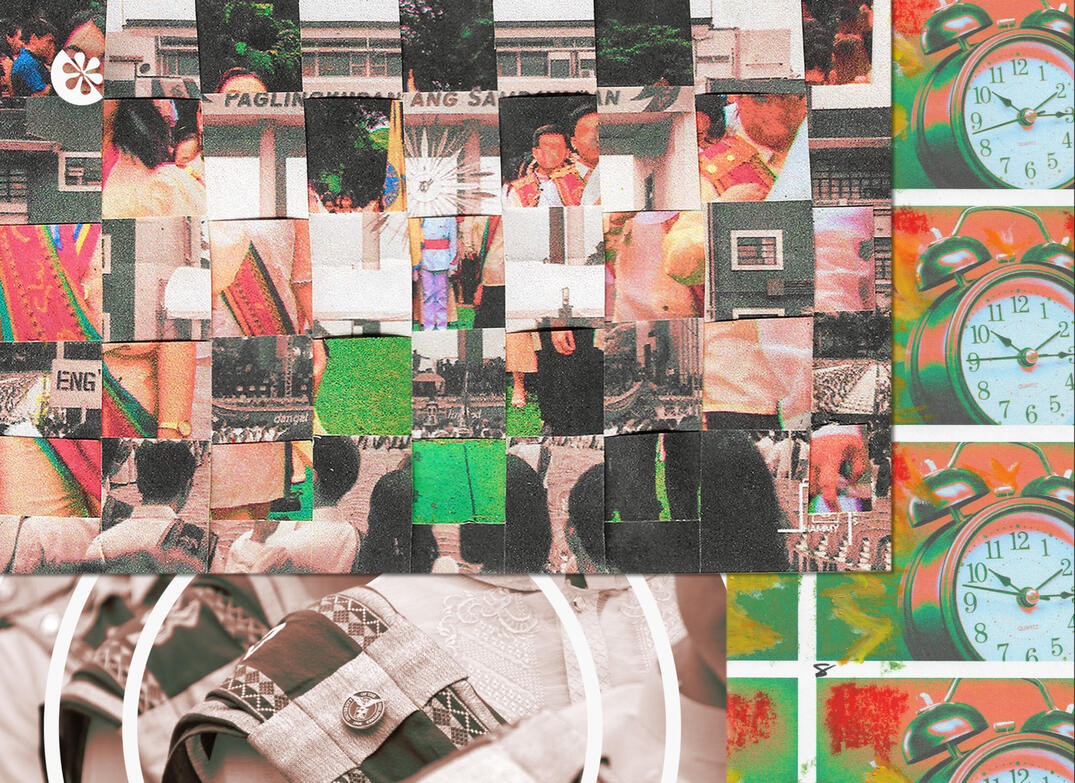
The stakes got higher when my graduating semester began. I have to ensure that my thesis draft is finished, my other requirements are fulfilled, my subjects are passed, and my units are credited, until there’s no room for slip-ups that could hold me back. At all costs, I have to avoid mistakes because the consequences can lead to problems that might hinder me from graduating next semester.
What once was a wide road narrowed down into a tightrope—where falling means failure and being taken away from that sablay I’ve been dreaming of.
Looking back, what used to be the far distance between me and that sablay terrified me. That fear didn’t disappear like the distance slowly did, only making me anxious with every step, hoping it will continuously take me to the right direction.Coexisting with this fear is an impatience and other conflicting emotions. Time is flying fast, but there’s still so much time left still. I want to fast-forward to the time when I successfully complete my thesis draft, but that will also mean I’m almost at the end. I want time to continue passing until all my academic work is complete, but I also want to freeze it so I can stay.
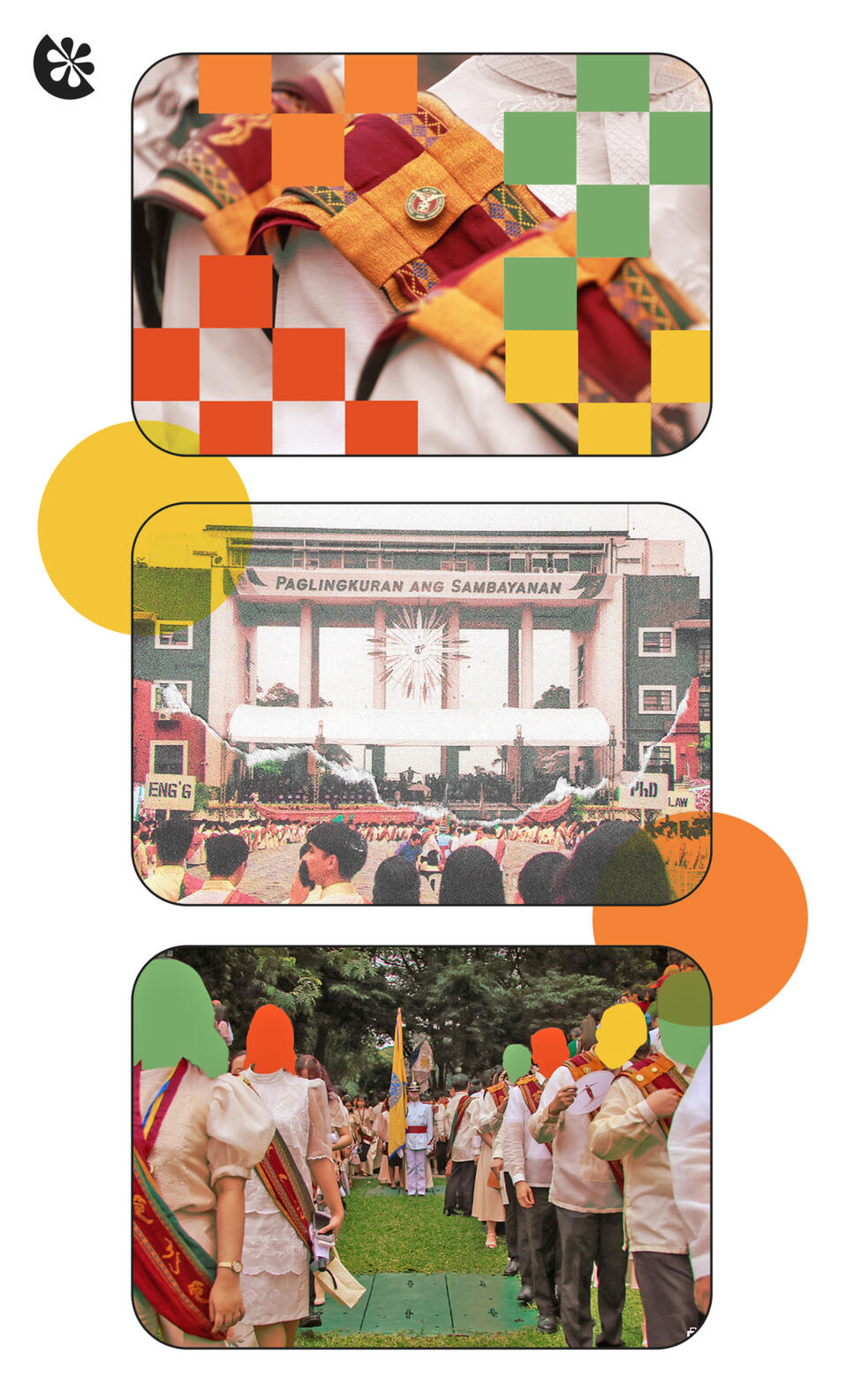
For now, I can only keep going. One step after another in this metaphorical tightrope, no matter how terrifying, until I reach the end. Resume my thesis lock-in until the individual chapters turn into a whole manuscript. Return to the requirements I’ve set aside until they slowly dwindle and I finally can get some rest that lasts more than 24 hours.Most of all, I can look around. Remembering how far I’ve come. Recognizing the ones walking with me on this journey. Relishing in the memories I’ve made and will make. Romanticizing my walks in the Acad Oval because I’m living out my main-character-in-a-college-kdrama dream in my own way. Coming home to my college organization and catching up with what happened while I was gone.I can look around because I’ve never been alone in the first place. I have my friends who are always willing to give a hug, a laugh when everything feels overwhelming, and a comforting solace with their company. The tightrope remains, but I have people who wouldn’t let me fall, and help me reach the finish line, until the distance between me and that sablay falls disappears completely.
Photo credits: Stephen Busico (Shammy Takes on FB; @shammy_takes on IG)
Third Places:
The Need for Spaces
Written by Amanda Ocampo
Art by Austina Valdez
Published November 30, 2024
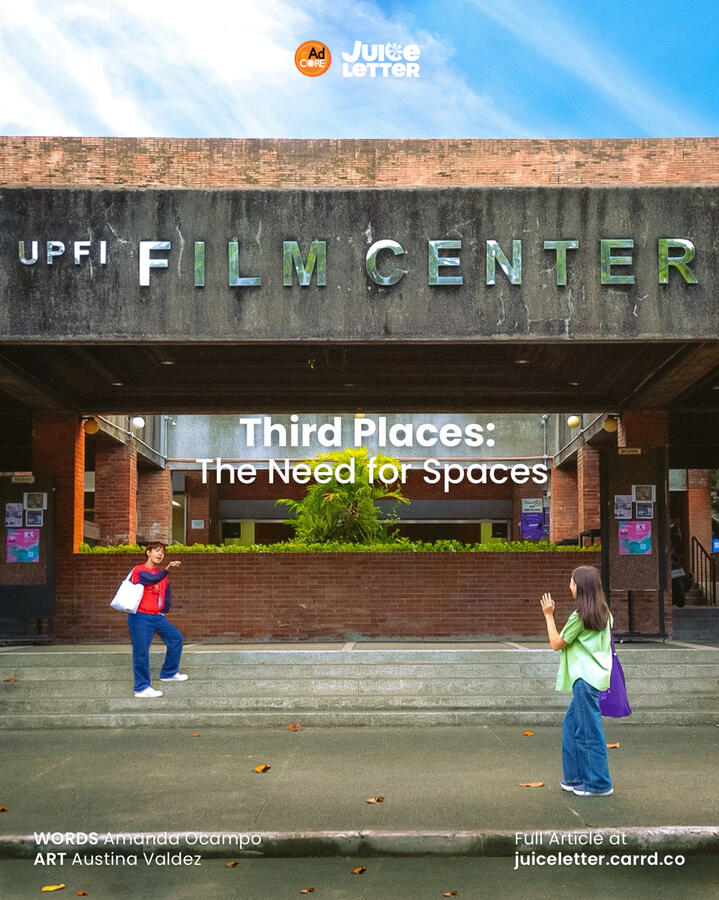
The wind is rapidly circling around me. My vision is compromised and everything is a blur. Adrenaline keeps me up as I try to blend with the whirlwind.Looking back, that’s how midterms season felt.When the chaos of a semester comes around, it’s difficult to disrupt the consistent shift between classroom and home. The growing requirements chain my hands to my laptop, leaving me no choice but to work. This cultivates a suffocating whirlwind cycle.Every once in a while, I find myself trying to recharge and do something that doesn’t involve school. I end up scrolling on my phone, watching a TV show, or simply laying down. Even if I’m doing something else, my mind is never far away from my desk. The sight of it subconsciously ties me back as tasks linger in the back of my mind. Time simply passes and next thing I know, I’ve wasted hours not actually recharging. I don’t know if I can call those breaks but perhaps they’re unsuccessful because of the space they take place in. Putting a quick halt to the routine still keeps me standing in the middle of the whirlwind when what I really need to do is step outside of it.

When I look outside my window, I see an entire world of personalities, interests, and places. People with their own stories and places that form experiences. I get caught up in the cycle of going to school and back home, but what about what the world has to offer?Sure, I go out and try new things, but how often do I truly experience the world I see through my window?
What can we consider these places outside
of school and work?
Well, they actually carry the potential to be a person’s third place.A third place functions separately from home and school as a space for people to hang out in (Oldenburg & Brisette, 1982). It can also be a place of solitude and calmness where people can just be. They don’t eclipse the significance of school or home, they complement the two because all play a role in a person’s holistic growth (Oldenburg & Brisette, 1982).
Looking out the window
I couldn’t help but wonder, how do third places manifest in real life? To help us find out, let’s take a look at the sharings of some University of the Philippines (UP) Diliman students.Gab, a fifth year Bachelor of Science Electrical Engineering student, shared that he always finds himself in need of breaks because without them, he won’t be in the right mindset to efficiently accomplish tasks.Abi, a second year Bachelor of Science Economics student, feels similarly. She expressed, “If I feel burnt out, then I won’t have energy to do my academics or I won’t have the energy to interact with people. So, I definitely need breaks from time to time whether it be with people or time by myself.”Breaks are evidently vital to keep students going and every person has a personal way of spending their down time to recharge. Returning to the topic of third places, they can take on many forms.For Ally, a third year Bachelor of Arts Comparative Literature student, she feels drawn to cinemas and spends time there to decompress. She shared, “[When I] choose to stay at home I noticed that it takes like a negative effect on my mental health. So as much as possible, whenever things get too crazy, I try to go out talaga.”Places are more than a physical location, they are also worlds that people uniquely connect with. The movie cinema is a place of storytelling on one end and observing on the other. This world of art and stillness is Ally’s to unwind in.Gab considers the laboratory as his third place. Despite its function as a second place for academics, he sees it as a safe space where he can have interactions with labmates not necessarily centering on school.
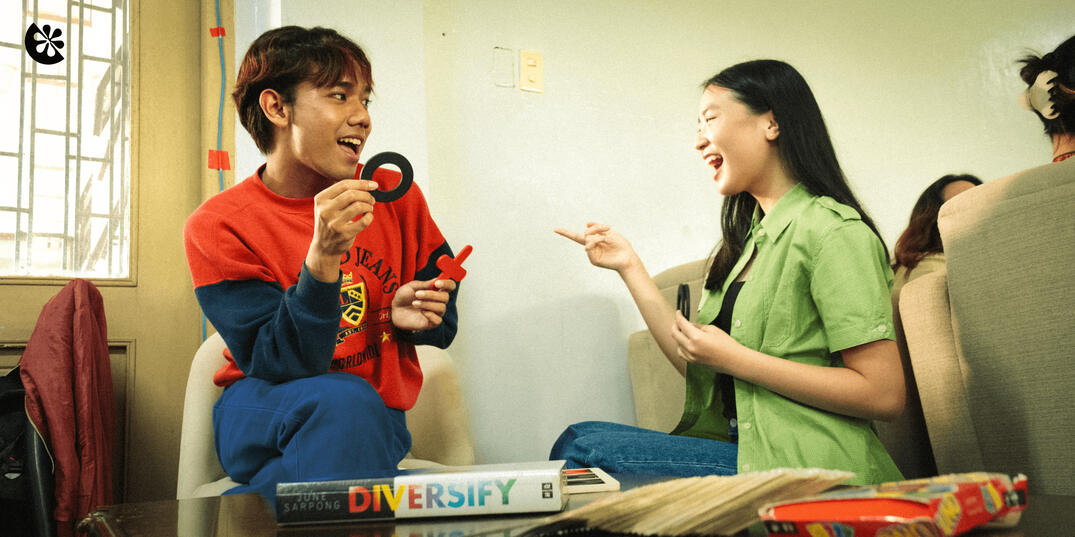
He mentions that there is no sense of superiority in this place. In certain locations, the purpose of the space, combined with set rules and systems, inform the way people carry themselves. This space allows Gab to be himself when conversing and experimenting because he feels equal to those around him.Visiting comfortable cafes is something Abi and her friends enjoy doing to spend quality time together. Considering that they attend different schools, these are the moments that they get to catch up and create memories with each other. To Abi, the spark of cafes does not lie in the food they serve or the aesthetics of the place, it lies in the fact that it reconnects these meaningful friendships.Third places strike a chord within people because of the value it adds to their lives. The special meanings of these places are dependent on the people that involve themselves with them. In a way, these are also manifestations of their personalities.Abi described herself as someone who is introverted and extroverted depending on who she’s with. She and her friends usually choose a quiet cafe that allows them to talk. Then there’s the occasional shift to a cafe with a loud environment depending on their preference during the time.On top of the peace that Ally finds in cinemas, she revealed that she was supposed to be a film major. She is particularly drawn to them because of her interest in movies and filmmaking which translates to her love for going to the cinemas.

Out of reach
In a perfect world, students have a variety of accessible options for third places. Everyone has unique personalities and interests so ideally, there would be something for each student. Homes and schools are undeniably indispensable places. Third places, although not as cemented as a necessity, still contribute significant value to people’s lives. However, there are factors that play a role in making places inaccessible.Sometimes it’s the distance of the location. Gab elaborated that the laboratory is convenient for students who have classes within the building or nearby. They can access this space through a class or through the Institute of Integrated Electrical Engineers (IIEE) organization that conducts events there at times. Otherwise, they would have to request permission from the office which would be subject to approval. Another weighty factor is finances. This is something that Abi considers when choosing a cafe to go to. Ally also assesses cinema options with this in mind, especially because ticket prices are up.These are hurdles that keep people from accessing certain places, potential third places. On top of that, the use of space remains a prominent issue in UP Diliman. School and work related spaces often aren’t prioritized by the administration. How can all students find their third place when school and work related ones are not even prioritized? “CAL students currently have very few dedicated spaces within the university” (Amarillas, 2024). Additionally, the Department of English and Comparative Literature (DECL) faculty have been grappling with the impacts of the Faculty Center fire that took place nearly a decade ago. They work in tight spaces as they wait for the constructions of the new Faculty Center and the College of Arts and Letters (CAL) building, which have faced challenges and have been repeatedly delayed (Ingalla, 2024).
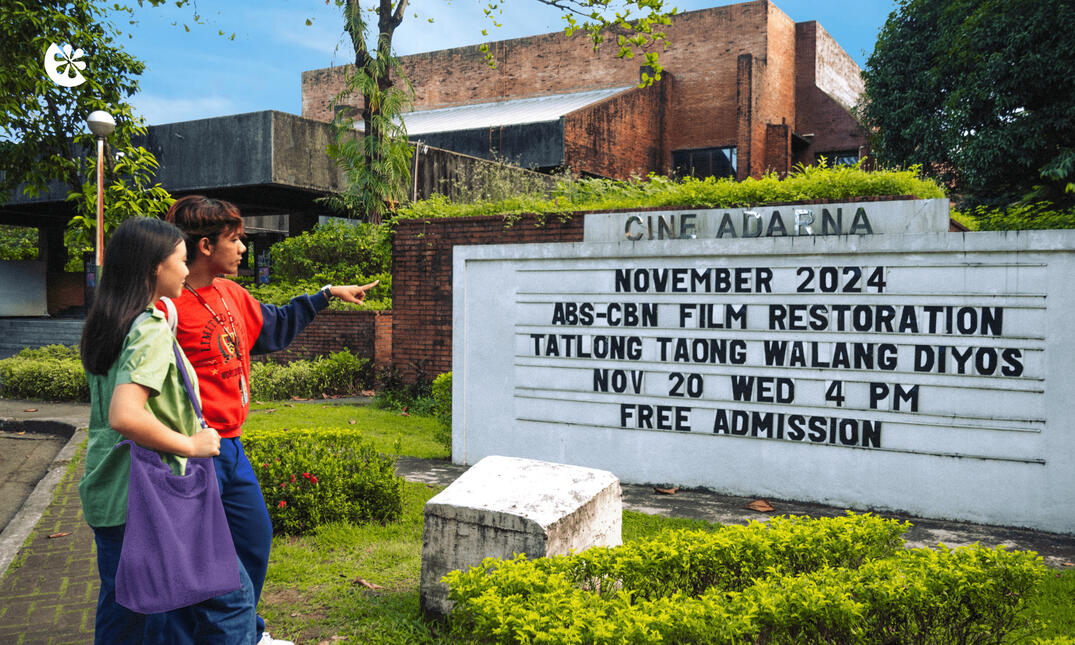
Commercialization has been seeping through the university campus. DiliMall replaces the UP Shopping Center, ultimately displacing the livelihoods of community members in Area 2 and in the stalls in the old tennis court (Servallos, 2024). The university administration has distinctly made decisions that stray away from the betterment of the community and its members, leaving numerous needs unmet. Decisions that prioritize commercialization and profit essentially decline the possibility of accessible third places. While a third place can be personally chosen and defined by each person, it’s necessary that accessible options are present.
UP seems to be stuck in a whirlwind of commercialization and it’s time that it steps outside of it for the betterment of the community.
Special thanks to Mylo Solis for taking part in our shoot.
References:
Amarillas, D. (2024). CAL Demands Proper, Connected Spaces in Town Hall Meeting. Philippine Collegian. https://phkule.org/article/1304/cal-demands-proper-connected-spaces-in-town-hall-meetingIngalla, S. (2024). DECL Faculty’s Continuing Struggle for Space, Almost a Decade Since the Faculty Center Fire. Philippine Collegian. https://phkule.org/article/1184/decl-facultys-continuing-struggle-for-space-almost-a-decade-since-the-faculty-center-fireOldenburg, R., & Brissett, D. (1982). The Third Place. Qual Sociol, 5, 265-284. https://doi.org/10.1007/BF00986754Servallos, N. (2024). UP students protest increasing commercialization of campus spaces. Philstar Global. https://www.philstar.com/headlines/2024/02/07/2331536/students-protest-increasing-commercialization-campus-spaces
Unleashing the Fighting Spirit: UAAP’s Role in Empowering Our Community
Written by Justine Dabao
Art by Hiroshi Hojo
Published December 10, 2024
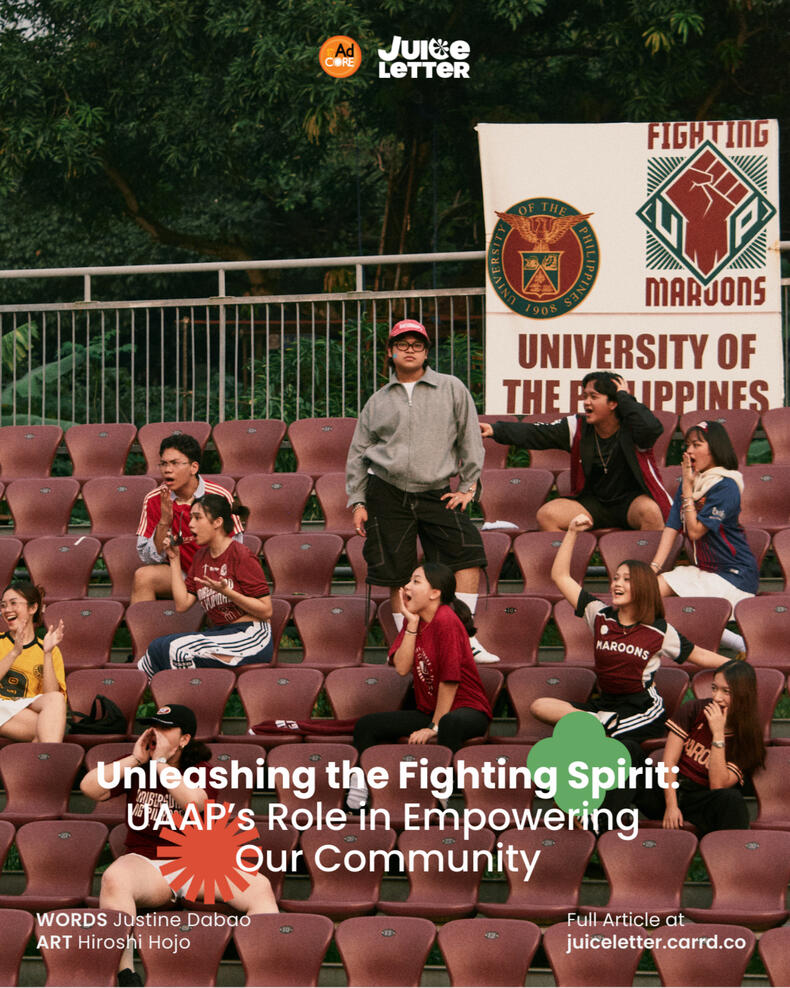
It was September 7, 2024—the first basketball game of the season, and the energy was electrifying. Surrounded by a sea of maroon, the UP community showed up in full force for support for the Fighting Maroons.A sports event to some, a showcase of Maroon pride for us, the University Athletics Association of the Philippines (UAAP) is a symbol of school spirit and solidarity—an avenue for our athletes to showcase the fruits of their labor. Its 87th season marks the dawn of a new beginning for Iskolar-Atletas… and for the UP community.As I wear my maroon shirt and sing UP Naming Mahal, a deep sense of belonging fills me—a feeling of being home. There is no greater thrill than the rush of school pride coursing through your veins. The courts and arenas are the Maroons’ oyster, brimming with achievements waiting to be claimed. Undoubtedly, the UP community will continue to show up, supporting them every step of the way.My personal interest in the world of sports, being a student-athlete myself, sparked a curiosity about our athletes. What keeps them going, what challenges they face, and what a supportive community means to them. The best way to truly understand these is to hear directly from them and ask about their UAAP Maroon story.
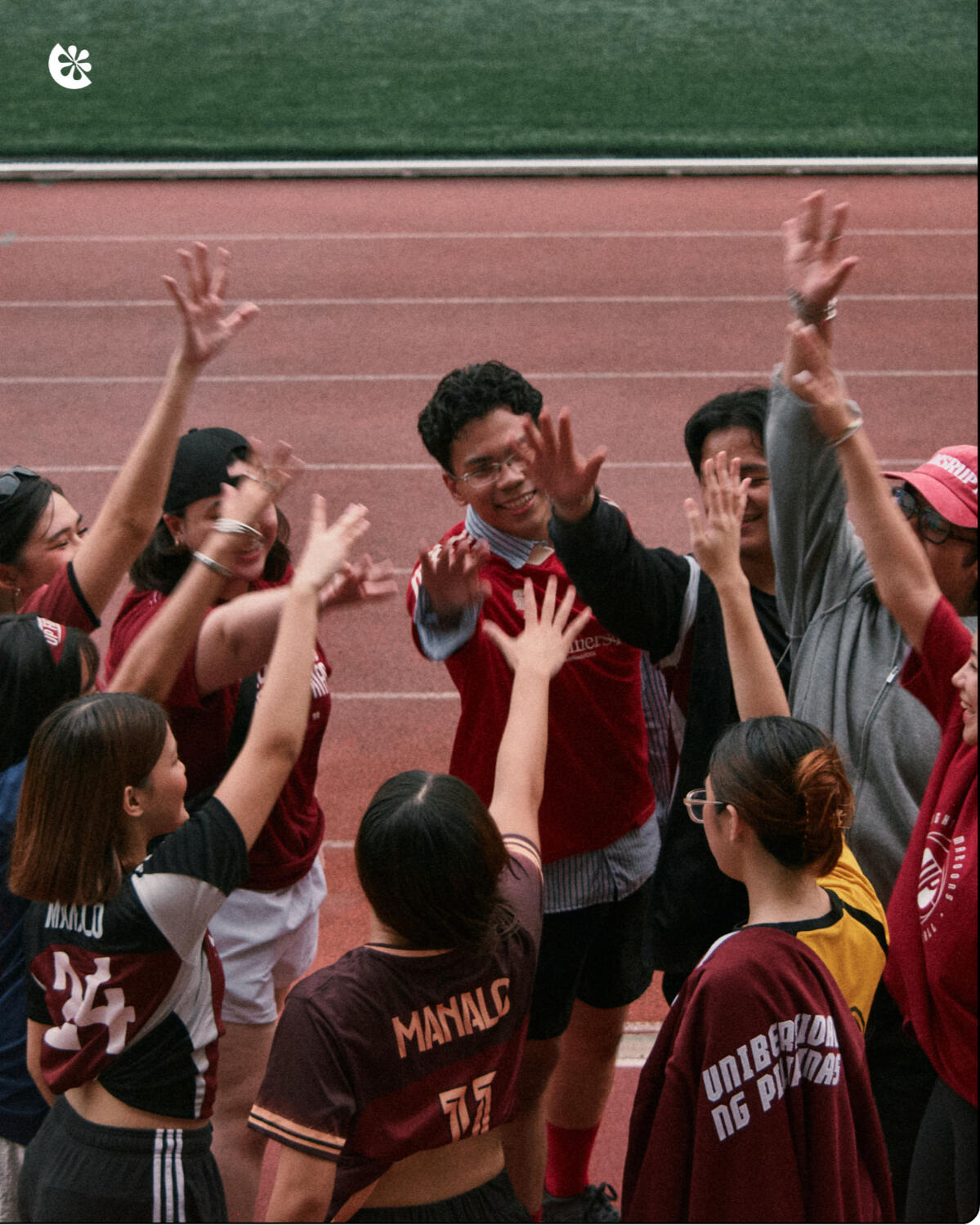
Swimming far, togetherGeoffrey Liberato, a member of the Varsity Swim Team, took home the gold medal during this season’s 200-meter Men’s Breaststroke event on November 20 held in the New Clark City Athletics Stadium. Despite being a rookie, his 15 years of dedicated experience in swimming has molded him into nothing short of exceptional.According to him, the journey to his victory was far from easy.Geoffrey began training rigorously last September, never letting a day go by without practicing. He explained that he starts his mornings training in the pool, then on certain days, he proceeds to weight training.“I knew that [it] would not be easy, but I have my teammates who always help me overcome the challenges in training.” With the fulfillment of his victory, he expressed that he felt that all the sacrifices he made—countless hours of training, blood, sweat, and tears—were worth it.Swimming, what he once considered a personal journey focused on self-improvement, has now evolved into a commitment to the entire team.“Throughout my life, I only swam for myself, but during UAAP, I [told myself that I] need to swim not just for myself but for the team.” He discovered a deeper sense of community within his team, which he says shifted his perspective on the sport.
"Mag-isa kang lumalangoy, pero feeling mo there are people by your side to uplift you and push you through it,” he said.
In times of strife and challenge, what we often need is the sense of camaraderie to remind us that we aren’t alone in the journeys we face. This was especially true for Geoffrey when he had a tough swim on the second day of the competition.Despite the setback, his teammates offered words of encouragement and reminded him that he could bounce back from it. For him, his support system—the coaches, teammates, and his family—has been invaluable. Moving forward, he is committed to giving his best for himself and for the rest of the team.

Going higher, togetherIsabella “Bea” Sta. Maria, this season’s bronze medalist for Women’s Pole Vault, shared her sentiments on her journey. A seasoned athlete, Bea is no stranger to the UAAP scene, having previously competed as a member of the Varsity Pep Squad in Season 85 and currently the Track and Field Team. With only two months to train for the pole vault event, her physical prowess was tested as she built herself up from the ground—learning the proper running techniques and how to jump efficiently.Training tirelessly every day defined the two months leading up to the competition. “One challenge would be the short prep time… A lot of the [competitors] have been doing track since before, but I barely had any experience. I wasn’t really sure how it was gonna go for me,” she said.The inclement weather in recent months also posed a challenge to her training momentum. “Usually you can run when it’s raining, but jumping is more difficult. There were days na na-cut off yung training.” Despite the setbacks she encountered, Bea remained resilient in ensuring she would be in her best condition during the competition.She further shared that, although pole vault is an individual event, the entire team works toward a common goal. “When we were there, there was so much support for everyone. It’s a nice environment.” She described her experience competing in the New Clark City Athletics Stadium as “very fun and exhilarating.”When asked about what the UAAP means to her, Bea reflected on her thoughts as a Varsity Athletic Admission System (VAAS) student. “As an athlete, UAAP is one way to give back to your school. Being under contract, you get help from the school,” Bea said. “One way to give back is to do your best. You’re representing yourself, but you’re also representing UP.”Bea further expressed that the athletes’ success is not just theirs, but the community’s—their victories carry a personal sense of unity.
Stronger, Better TogetherThis season’s theme of “Stronger, Better, Together,” according to Dolriech “Bo” Perasol, Director of the Office of Athletics and Sports Development (OASD) of the University of the Philippines, reminds us that “we are all stronger and better if we are one.Though we are divided by academic discipline and the paths we pursue, we are united by unbreakable school solidarity, one with the athletes as we bleed maroon with every victory and hurdle faced.
When the sound of the drums and the lyrics of the cheers begin to reverberate through the arenas and stadiums, you can bet the UP crowd will be the loudest in the room.
Basta Iskolar ng Bayan, lalaban kami nang walang takot, hanggang sa huli.

Special thanks to Isabella Sta. Maria and Geoffrey Liberato and for sharing their experiences and insights!Special thanks to Sophia Agbayani, Khloé Hallare, Sandy Manalo, Rachel Francisco, Key Mendiola, Julean Ventura, Maya Erfe, Asia Nova, and Viktor Rivera for taking part in our shoot!
Reference:
Isaga, J. (2024). UP unveils UAAP Season 87 logo, theme: ‘Stronger, Better, Together’. Rappler. Retrieved from https://www.rappler.com/sports/uaap/up-logo-theme-season-87/
In-game Nanaman!: Aral-Aralan plus Ganda-Gandahan?!
Written by Mylo Solis
Art by Marga Relos
Published December 22, 2024
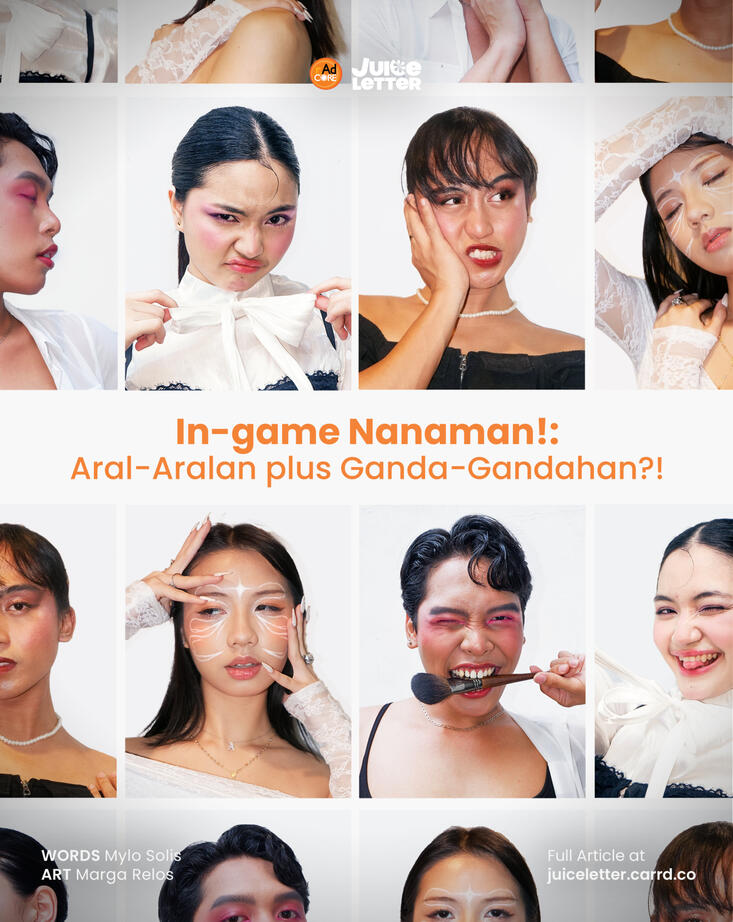
Makeup isn’t just about beauty—it’s a way of expressing who we are with added vibrancy to our unique identities.It started for me when I was 16. Wearing my pajamas, I laid all the blushes and foundations I had stolen from my mom and as the lamp light hit my face, I was brimmed with a thrill of excitement as I was about to transform into a glammed-up version of myself!
From then on, I knew I created a new persona; a playful and colorful me that would soon become inseparable from my identity: a ‘Kikay.’
For Kikays like me, makeup is a non-negotiable. As I prepare for the day, I think of the perfect blush color that will complement the look I want to achieve before I go to the campus.Sometimes, I go for a cool-toned pink blush when I want to give-off a ‘softer’ vibe, then a full-glam makeup which specifically highlights features of my eyes using mascara and a taupe brown eyebrow pencil in order to stand-out when I have a presentation for that day.However, what fascinates me the most about life at UP is how makeup creates diversified identities. From the perfect winged eyeliner to the strategic placement of blush and highlighter, these glam styles are more than just desired self-presentation, because how we do our makeup is an art form that tells a story about who we are as UP students.
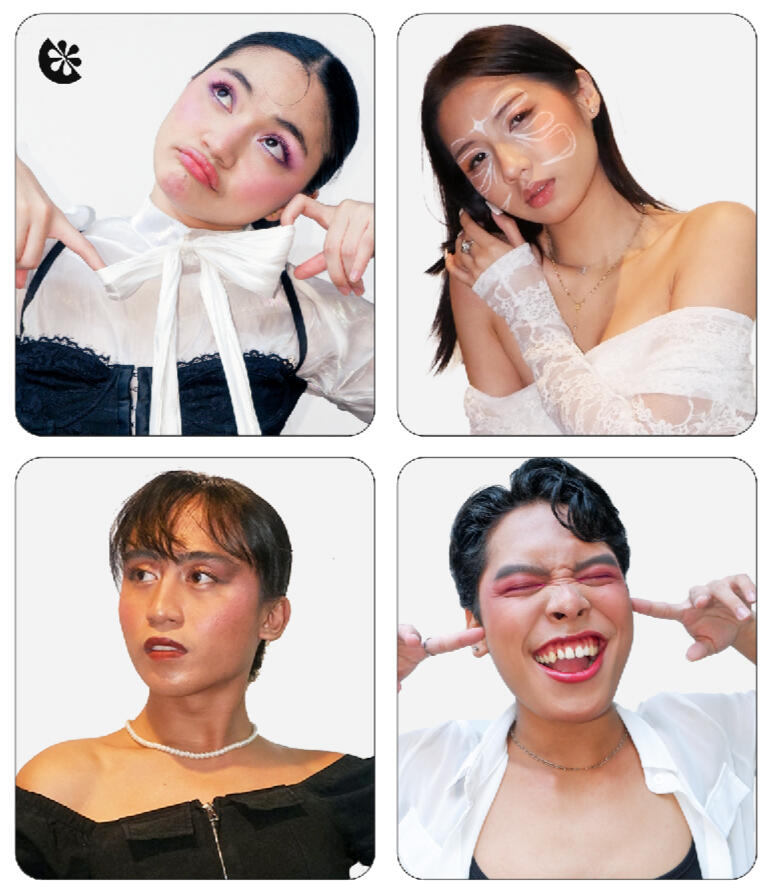
Perfecting the baseMakeup comes in different forms and styles based on the personal preference of an individual, influenced by their own ideals and uniqueness (Hitesh, 2024). One might think that makeup is just all about applying blush, concealer, or foundation to your face, I personally believe that it is more than a beauty ritual—it is a powerful manifestation of self-expression that goes beyond that.When I asked my friend Audrey Sanchez, a second-year student taking up Bachelor of Arts in Broadcast Media Arts and Studies, she believes that makeup accentuates the unique features of one’s face.“Makeup doesn’t cover up beauty but enhances it. By putting on makeup, I am not covering my natural face, but I am bringing out the best of it,” she expresses.But for a fourth-year theatre student like Auriz, sharing her interest with makeup helped her connect to people around her.“Simula nung nagma-makeup na ako, everytime na nakikipag-salba ako sa ibang tao, titignan ka… “Ay ganda siya…” or “Ang fresh mo ngayon ha!” And dahil sa makeup doon pa ako nakikipag-chikahan sa mga tao.” Auriz shares.For Maxinne Garcia, a second-year student from the Bachelor of Science in Business Administration, her beauty routine is not just about glowing-up; it’s a way to tap into her familial roots.“Exploring makeup taught me to understand my own face. …Each feature became a reflection of someone I care about—my mom, dad, lola, and lolo. I began to see them harmonized in one canvas, my face, and through makeup, I could enhance these inherited traits in ways that felt uniquely mine,” she says.
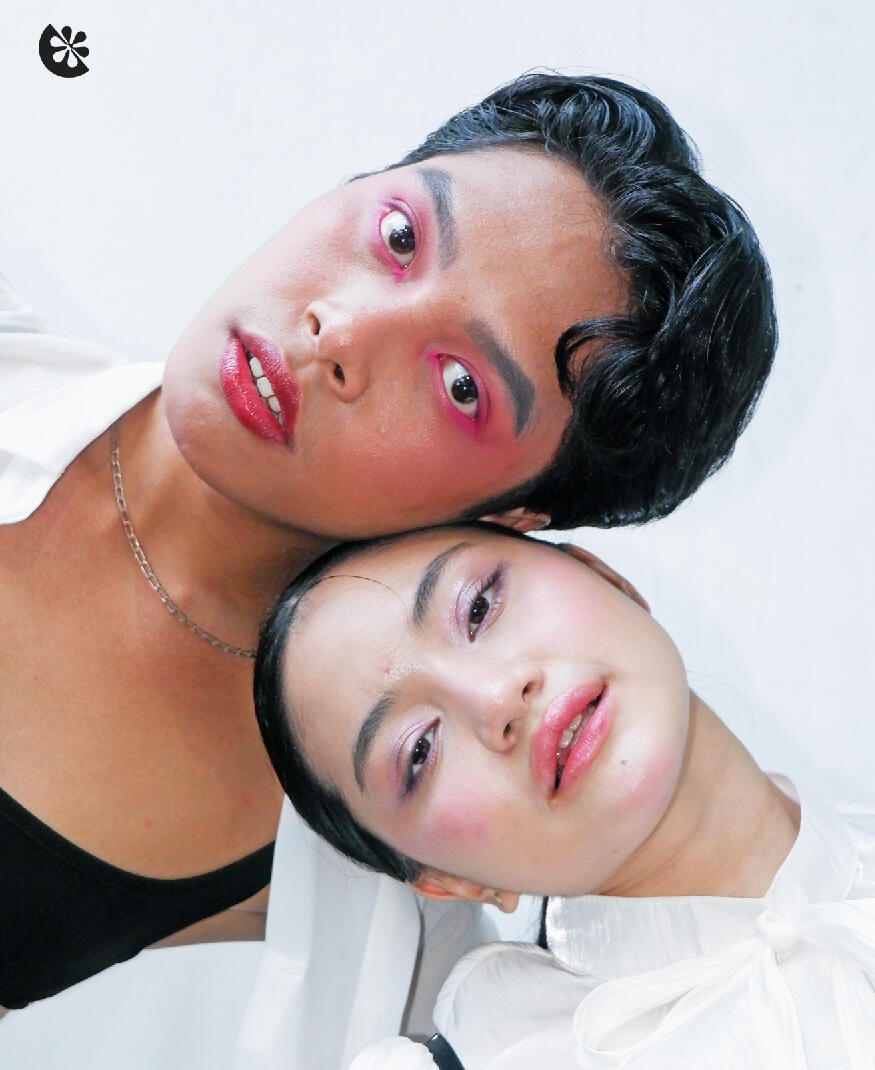
On the other hand, Mark Delos Santos, a third-year Film student, says makeup empowers him as a queer individual and it’s part of his journey towards self-acceptance.“Wearing makeup does help with self-presentation, but I also see it as a representation of my long journey toward self-discovery and self-acceptance. Before reaching this point in my life, where I am most confident in who I am, there were many moments of rejection and internal struggles I had to go through. …yet I eventually learned to embrace myself and show who I am—and who I can be,” he proudly shares.For Maxinne and Mark, makeup has another facet; it’s recognizing your face as your canvas wherein doing makeup feels like art, giving freedom to beautify and discover more yourself!“As I experimented, I analyzed my features. I discovered my preferred colors and combinations applied to my face using makeup. This process unlocked a creative side that used my face as canvas. “ Maxinne expresses.“Now, I am still on a continuous journey of searching for the right shade of red that complements my tan-olive undertone skin, striving to achieve that perfect symmetrical eyebrow, and reflecting on the past versions of myself while discovering new things, ” Mark elucidates.Meanwhile, Audrey also sees cosmetics as a way to connect with womanhood and bond with others. It gives her the opportunity to share experiences with friends while exchanging compliments and tips to perfect each other’s glam.“I remember getting ready with a bunch of other girls and we ended up being late because we took too long yapping and fixing each other’s makeup. I feel like makeup is a part of womanhood that I am so glad to experience. That us girls can bond over something,” Audrey reminisces.
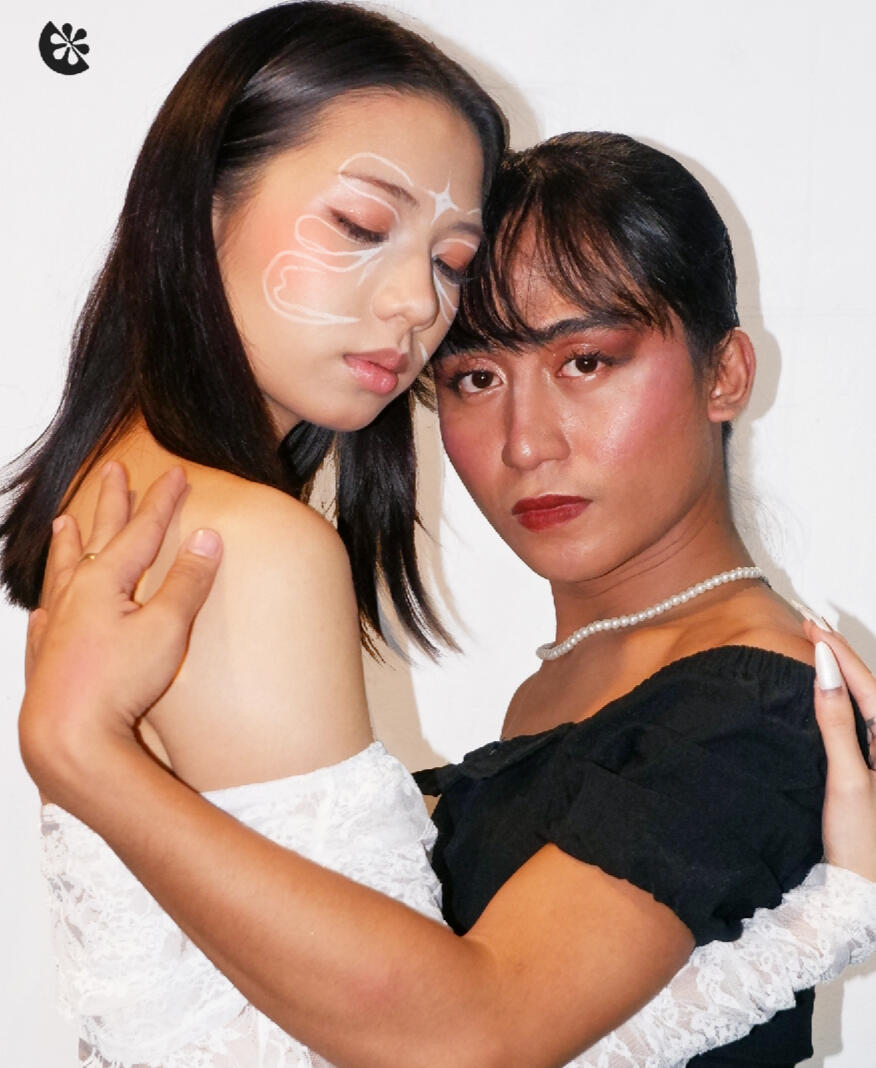
Final touch-ups then sabak na sa class!For kikay students, makeup has become an essential part of their college lives, reflecting their personal journey and helping them balance self-expression with navigating the chaos of student life.In Broadcast Media Arts and Studies, presenting oneself confidently on camera is crucial. Amidst the chaos of bright LED lights and the pressure of a live set, makeup becomes essential for Audrey. It helps her present herself confidently to convey messages to her audience, overcoming the nerves and distractions brought by the production.“In BMAS, I learned how self-presentation is essential in front of the camera and outside of it. Makeup is not just something to make someone pretty, but is also a creative expression…It’s like makeup speaks for itself!”Similarly, for a theatre performer like Auriz, she shares how makeup helps to internalize her role on stage.“Sa theatre, napaka-importante ng makeup sa pag-portray ng character… yung makeup nakakadagdag siya ng emotion sa self… para makita ng audience na ito yung character na pino-portray mo.” she shares.Makeup has also become Mark’s go-to boost in the chaos of the film program and university life. With deadlines and productions consuming his energy, it helps him stay fresh, motivated, confident, and ready to take on whatever comes next.“Fulfilling academic requirements is already exhausting, and adding film productions as well as organizational activities would really drain me. However, my makeup always saves the day by maintaining my freshness and presentability,” he narrates.Meanwhile, Maxinne’s life in Business Administration program offers a different challenge—balance sheets, market research, and never-ending case studies. Her perseverance in juggling the demands of her program is also reflected on how makeup gives her the boost to assure herself to grow as she overcomes academic challenges.“Whether I’m walking into an exam or facing a tough day, the act of putting on makeup and feeling beautiful becomes a way to reassure myself that I can handle whatever comes my way. On difficult days, I find myself drawing confidence and strength with the idea that I feel beautiful,” she explains.These four Iskolar ng Bayan prove that makeup is a powerful tool for self-expression and a confidence booster regardless of their different concentrations, helping them navigate the challenges of their university lives. es.
For them, it is a creative extension of their
professional selves, mirroring their artistry.
It echoes the powerful Isko mantra:"Matatapang, Matatalino, Walang Takot Kahit Kanino..."As we walk through the maroon world, makeup reminds us that as UP students, we can freely express ourselves. Through enhancing our beauty with makeup, we practice our freedom of expression. Serving beauty and brains, over challenges that hinder us as we slay our UP life.My exploration of makeup has become more than just personal ‘arte’; it’s a way for me as a kikay to add color to my life whenever the world looks black and white. Through makeup, I overcame challenges and I was able to reflect on the experiences of my fellow kikays, embracing a journey of self-love, acceptance, and voicing our Isko spirit.To all my fellow kikays, go grab your palettes, blushes, and brushes… we have a face card to serve!
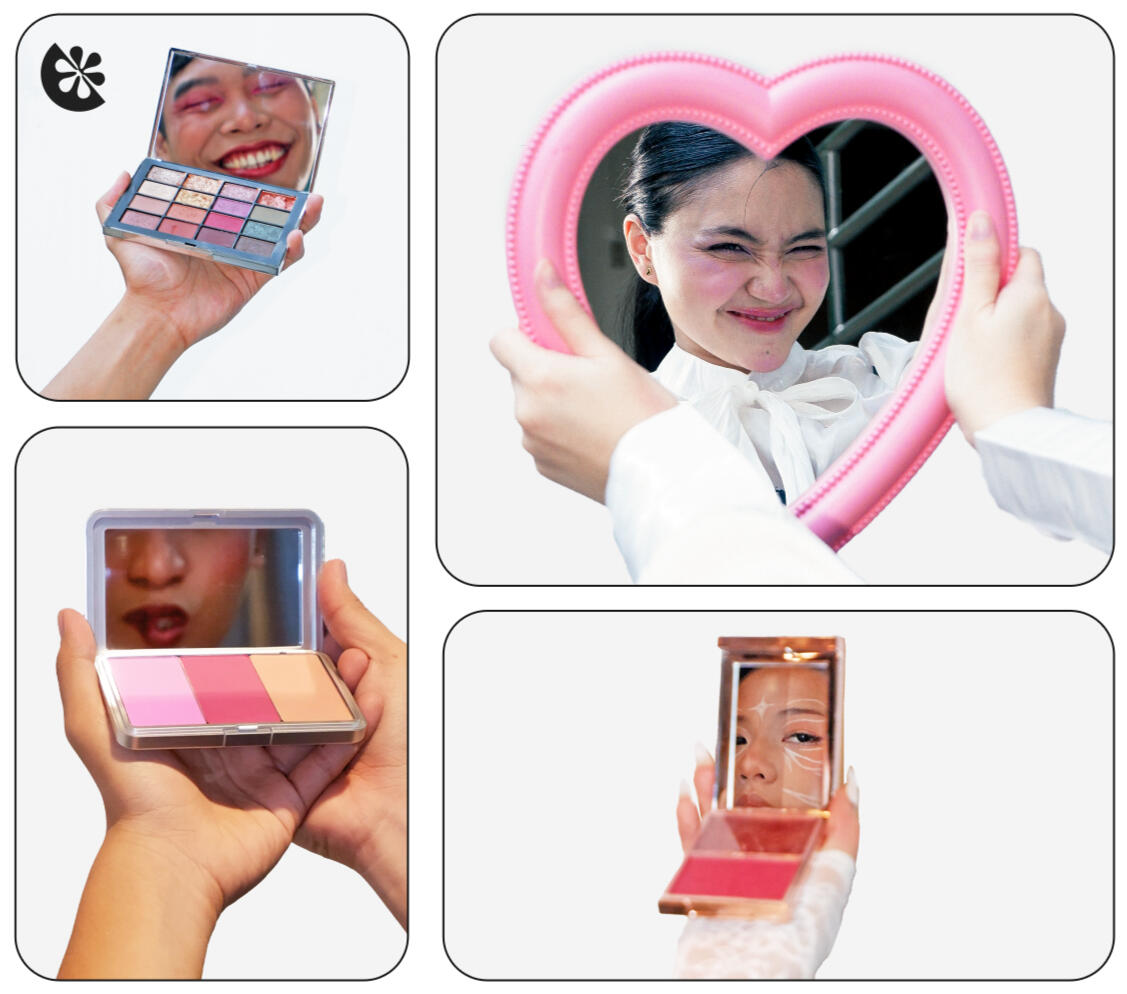
A special thanks to Audrey Sanchez, Auriz Llorens, Maxinne Garcia, and Mark Delos Santos for modelling and sharing insights that helped me craft this article that truly speaks to my heart.
References:
Gilder, A. (2022). Joy & Euphoria: How the Queer Community Uses Beauty to Resist & Conform. Homegrown. https://homegrown.co.in/homegrown-creators/joy-euphoria-how-the-queer-community-uses-beauty-to-resist-conformHitesh (2024). Advantages of Makeup | Complete Overview. AAFT Online. https://aaftonline.com/blog/advantages-of-makeup/Sicardi, A. (2020). A Brief History of Makeup as Protest and Power. Teen Vogue. https://www.teenvogue.com/story/brief-history-of-makeup-as-protest-and-power
That’s a Wrap!:
A How-to on Overcoming Regrets and Missed Takes
Written by Maya Erfe
Art by Jeri Tabiliran
Published December 30, 2024
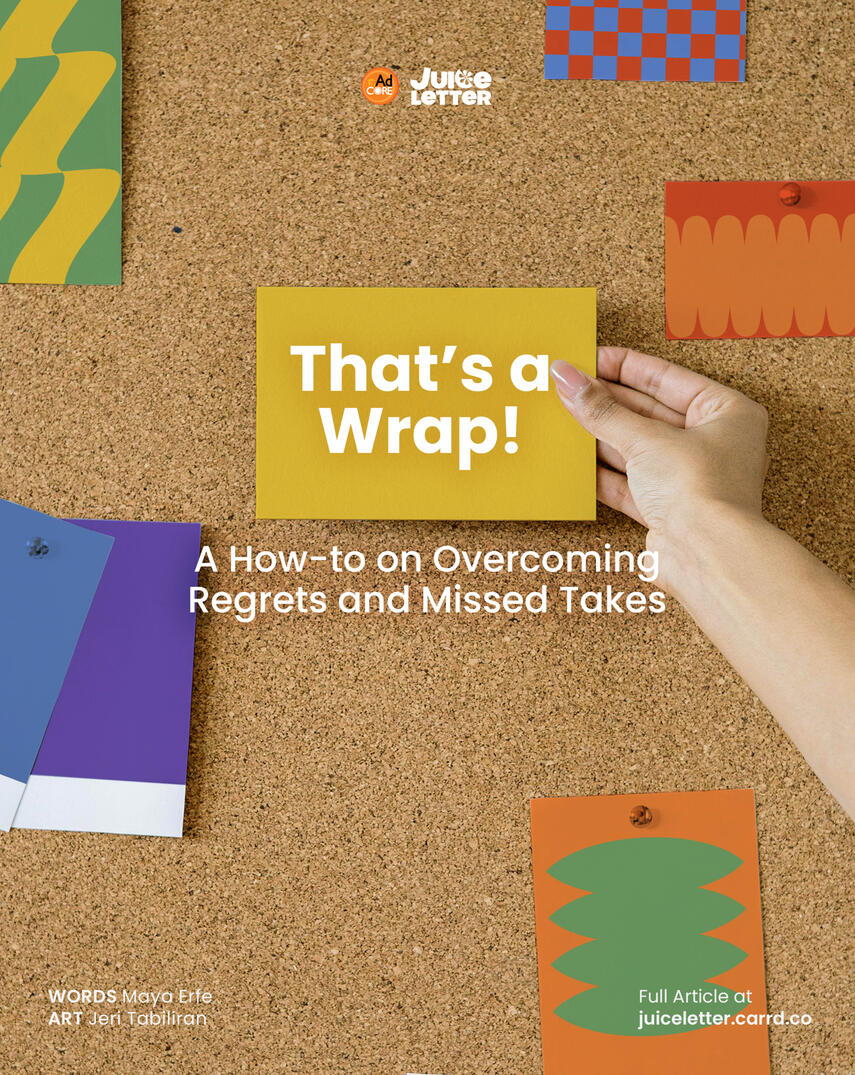
Congratulations, you’ve made it to December! Kamusta year mo?Whether you believe this year to be ultimately good or ultimately bad—o baka saks lang—there’s no denying that it took us through some crazy turns, and we’ve accumulated a couple missed takes on the way.Mistakes, missteps, and missed takes—things we shouldn’t have done or maybe things we could’ve done better. The what if’s.
What if sinikapan ko pa, edi sana pumasa ako?
What if iba pinili ko, mas masaya ba ako kung ganun? What if things were different?
Maybe it’s just me, but I tend to wonder what my life could’ve been if I just made different choices—better choices. I tend to look back and feel a little disappointed when I think about what life could be like if I was a little smarter and braver. There’s a stinging grief for the life I think I could’ve lived and the dreams I had to put to rest.It is inevitable to feel disappointment and grief for the what-if’s and what-could've-been, especially for things you wanted so badly. But there’s no use in wallowing in regret and letting it consume you.So this December, hindi lang Spotify ang winawrap up. Maybe it’s time to lay those what-if’s to rest and make space for the new year.Here is my three-step guide on how to overcome your regrets in time for the new year.

1. Stop idealizing the Past: traffic ba riyan at hindi ka maka-move on?There’s no need to rush moving on but there’s also no reason to stay stuck in the past. It’s done and there’s no changing that. What point is idle contemplation in a world that moves with or without you? If you spend too much time stuck on the “what-if’s,” you forget that you have to act now. What is yesterday’s missed takes when tomorrow gives another chance to choose better?
2. Live in the Present: tama na sa what-if’s, doon na tayo sa what-now.No matter how how much you try to rationalize the “what-if’s,” nothing gives you more assurance than the present. Sino ba nagsabi mas masaya ka ngayon kung iba pinili mo? Hindi tayo sure diyan. At least in the ‘now’, you know where you went wrong and where it got you. Bawi nalang sa susunod.
3. See possibility in the future: bakit kailangan ngayon?What makes now that different from tomorrow? Maybe you could’ve been a little wiser today but you weren’t. It’s the same with the future. We never really know what is in store for us but that doesn’t mean we can’t hope for better things. Maybe what we couldn’t get yesterday, we can get tomorrow or some other time in the distant future. Maybe we’ll even appreciate it more.

At the end of the day, we’re all on journeys that take us through paths we come to know and those left unknown. Maybe we’ll explore them later on or maybe things just aren’t meant to be–and that’s okay. We are bound to make missteps, mistakes, and live with the missed takes—and that’s okay. It’s just how life is but that doesn’t make it bad, and it doesn’t make us bad for feeling complicated.
Allow yourself to feel regret but don’t wallow in it,
let it transform you.
This December, it’s time to wrap up the past and let go of the missed takes. With one last what-if: what if we open ourselves to making more in the future?
Unos or Sanity: Do Grades Really Define Us?
Written by Caitlin Hung
Art by Jeri Tabiliran, Julean Ventura
Published April 23, 2025
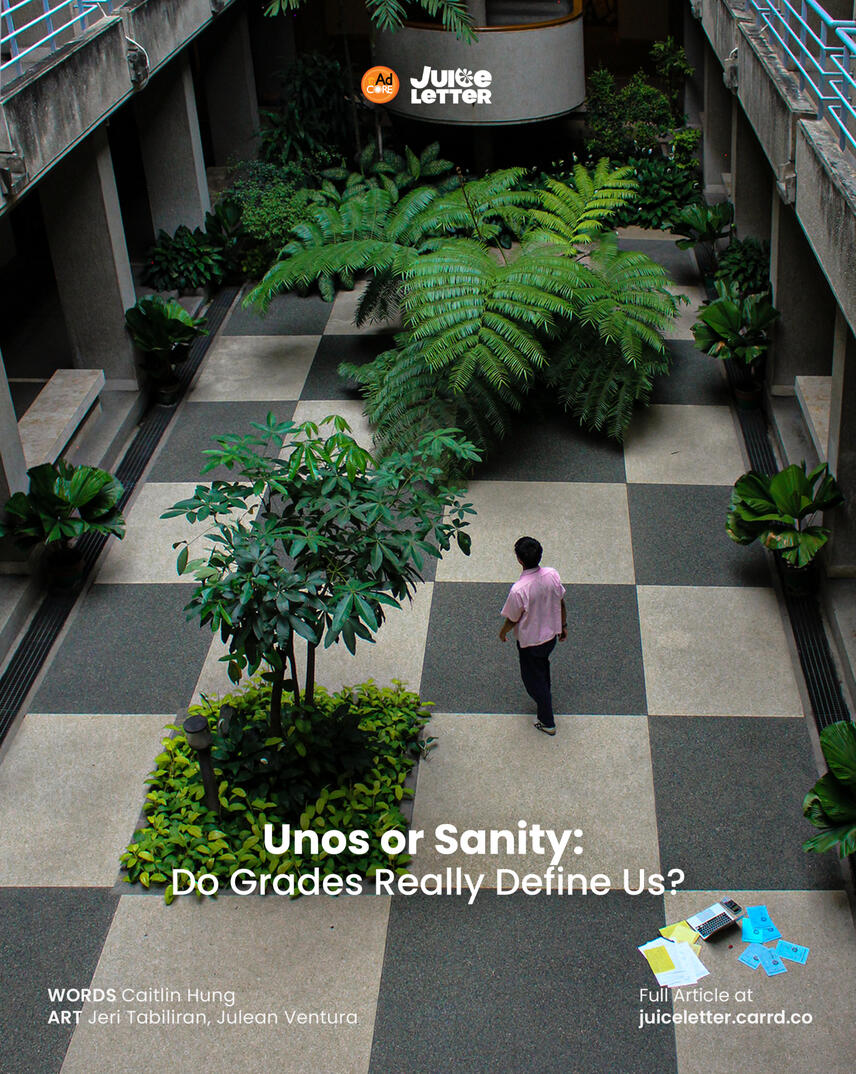
“Unoable ba ‘tong prof na ‘to?”
This is a sentence that a University of the Philippines Diliman student hears at least once in their life. But what exactly is the essence of an uno? Why do so many UP Diliman students strive so hard—work sleepless nights, sacrifice their mental health—for that elusive uno? Why is getting a “dos” in a General Education subject sometimes treated as a fate worse than death?Being a UP Diliman student, it’s normal to be surrounded by geniuses. During classes, it’s not hard for me to feel incompetent as my classmates raise their hands and talk the professor’s ear off, while I stay tongue-tied, trying my best to organize all my thoughts so I don’t embarrass myself if I finally get the courage to speak up.
Contrary to what is expected of an Isko, I wasn’t at the top of my class in high school. I was probably a smidge above average, but not enough to be truly exceptional. This gap between “above average” and “exceptional” haunted me. I was the definition of grade conscious in high school, crying if I got a grade below my expectations, chasing that honor roll, wondering why I was consistently falling short of my goals.My high school had report card days, where students would pass the whole day in dread, knowing that at the end of our classes, the class adviser would be handing out each of our report cards showing our grades for the past quarter (or semester if this was senior high school). On one of these report card days, after everyone’s grades had been handed out, the whole class was abuzz. A lot had already gone straight to nitpicking what they saw. “I only got a B+ in English?”, “I don’t have an A+ in Math anymore!”, “My average dropped!” I distinctly remember one of my classmates shaking her head in exasperation amidst the turmoil, and saying, as if it were the easiest thing to do in the world, “Guys, just be happy with your grade.”

Knowing that I wasn’t a particularly exceptional student in high school, it was a shock to me when I was accepted into UP Diliman, into a course I barely knew anything about, that I had chosen based on a whim because I was certain I was going to get rejected: Bachelor of Arts in Communication Research. Until now, barely anyone knows what I study whenever I tell them my degree program.I always just default to saying, “Imagine having to write a thesis—sometimes multiple—every sem,” to which they reply, “That sounds hard,” and I think to myself, “You have no idea.”To be honest, the first semester of my freshie year had duped me into thinking that this course was manageable, even a bit easy compared to my fellow freshmen who were facing the perils of Math 20 or 21. Compared to them, I only had to take one communication-related course and a couple of GEs—what a lot of UP students consider to be “easy” or “pang-bawi” courses.
Whenever I tell people that I’ve unfortunately gotten a “dos” grade in a GE course, they suck in their teeth and say something to the effect of, “Hala, bakit ang baba nila mag-grade? Feeling major lang?” And I agree, thinking—knowing—that if I had gotten luckier with my professors in those GE courses, I probably would’ve gotten a higher grade.
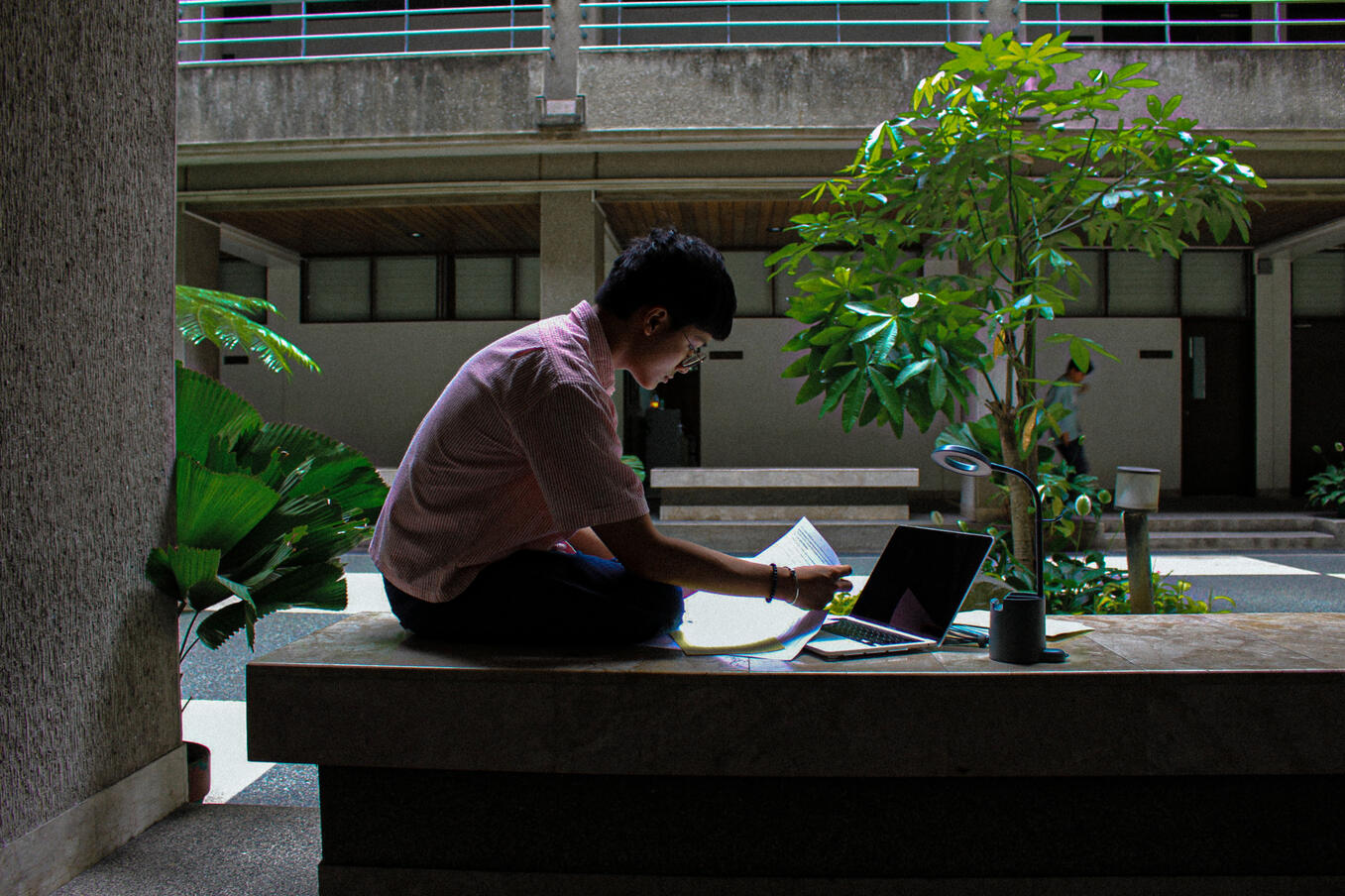
This is why r/RateUPProfs, RUPP, as well as asking your friends “any prof recommendations for…” during enlistment season is so prevalent in UP. Rate UP Profs or RUPP is a website where students can search a professor’s name and see students’ reviews for them, including star ratings for their helpfulness, pedagogy, and easiness. Meanwhile, r/RateUPProfs is a subreddit where students post the name of a professor and ask Reddit users about what to expect from the class, usually asking questions along the lines of “Kumusta naman yung mga reqs?”, Paano sila magpa-exam?”, and of course, “Unoable ba siya?”. As stated by this Twitter user, “sa college, hindi na patalinuhan, pa-swertihan nalang sa prof.” This is never more true as it is with required GEs in UP, courses that almost everyone relies on to pull their general average up after it inevitably gets brought down by major subjects.I’ll admit, I’m definitely one of these people. There’s probably not a single prof I’ve taken that I haven’t tried to check the reviews for, or asked my friends about to gauge their grading system and pedagogy.When I asked Sam, a BS Computer Science major, about her opinion on this, she said, “I think it's a reasonable thing to ask, given the power UP profs hold over their students' grades. There are some unreasonable profs that give very low grades even though the students dedicated a lot of time and effort.”However, when I asked Egbert*, a College of Arts and Letters student, he said, “If one wants to truly learn, they need to take terror classes. Because despite getting a low grade, they’ll learn more from that than an easy uno class I feel.”
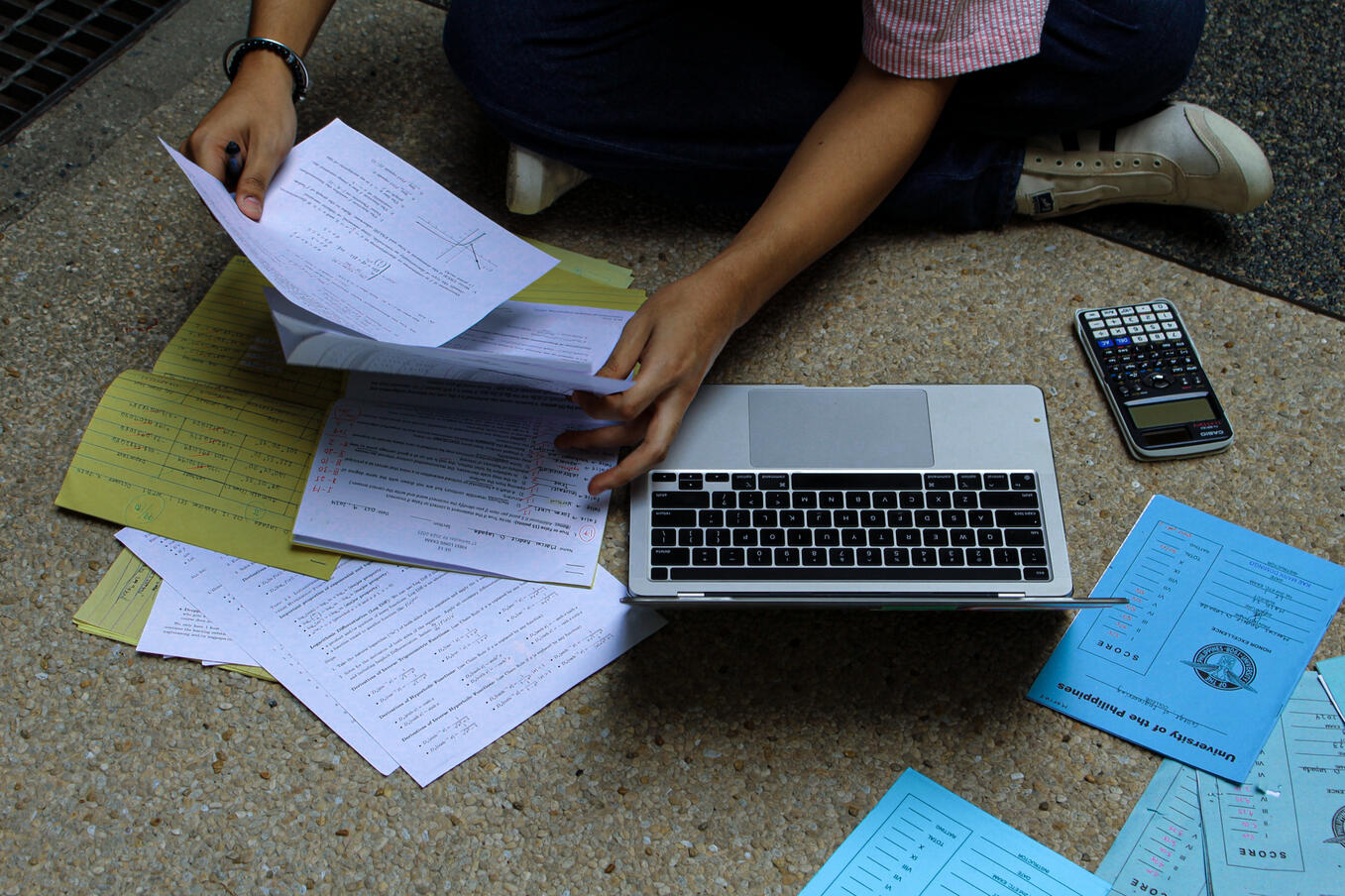
though I agree that choosing profs and classes that are “easy unos” can foster incompetency since students are just taking breather classes without truly challenging themselves, I believe that these classes allow me to focus more time and energy on the classes that do challenge me and help me learn. And, as pointed out by Sam, “With the CRS enlistment system, always getting these profs is impossible. Students will eventually get a challenging professor, and that can be a wakeup call if need be.”Last semester, I did get a wakeup call. For the second time, I got the much-dreaded “dos” in a GE, in a class that I knew I had worked hard for and that I was relying on to bring up my average. I couldn’t help it—I cried, lamenting the fact that I had yet again failed to take back my status as a university scholar.I thought it was mightily unfair. Out of all the kind professors for this course, why had I gotten the terror one who gave so many requirements and graded so low on top of that? As I stewed about another academic semester that I deemed a failure, I thought,
“What’s the point of all this? What’s the point of working hard if I’ll probably get unlucky with a professor all over again and get a low grade that I don’t deserve?”
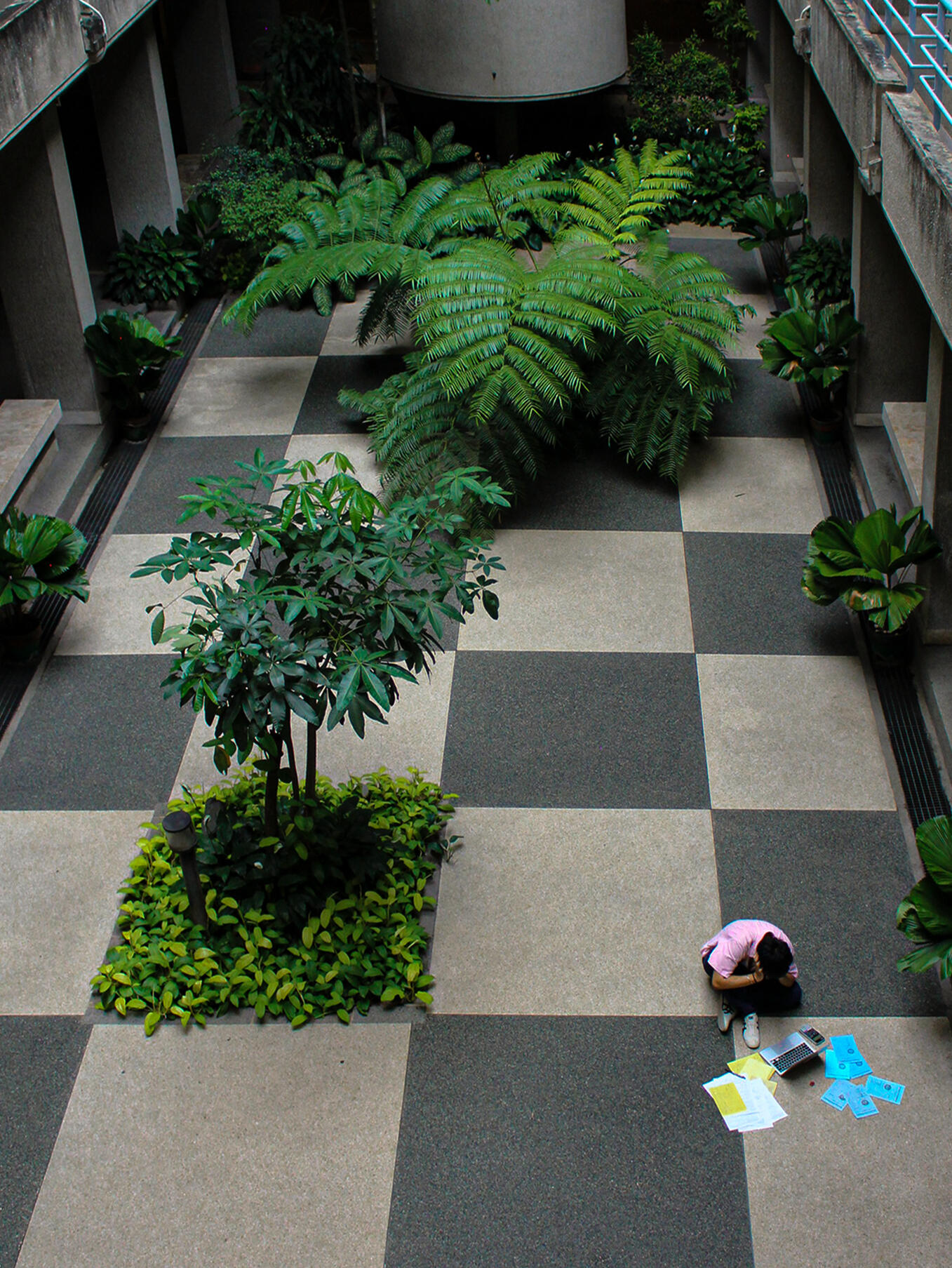
I then went into this semester with a more nihilistic view of grades. Knowing that some things were simply out of my control, I was less uptight about trying to predict what possible grade I could get from a professor when classes had barely even begun. I told myself that grades wouldn’t matter as long as I passed my course and graduated from UP.Weirdly, with the pressure to be a uni scholar off my chest, I found myself enjoying my classes more, less stressed out over how I was performing.
Now that I’m not too worried about grades, I can actually focus more on the act of learning itself.
I’m privileged that I can simply want latin honors because I want them. Yet, other people cannot say that grades don’t matter. Other students have families relying on them to be the breadwinner after they graduate, putting extra pressure on them to graduate with distinctions and get a sufficient starting salary, or are scholarship students who wouldn’t be able to afford basic necessities if their average dropped by just 0.1.As UP sociology professor Herbie Docena says, “Grades matter because they are indispensable for what Foucault calls the ‘management of populations’ by states or by corporations.”When I asked UP alumnus Jejo Bongat, who graduated from BS Industrial Engineering in 2014 and went on to become a teacher at Philippine Science High School, about how grades affected him after graduating and attempting to join the workforce, he said, “Some companies limit their selection pool to grads with latin honors and that’s on them, not on us as learners. In fact, red flag for me yung ‘laude only’ and I don’t bother applying even if I knew I stood a chance.”Having a degree in educational psychology from DLSU, he went on to explain, “I really think it’s actually counterproductive to let yourself be defined by your grade. You better ask yourself first, regardless if it’s an uno or a tres, if you learned and grew because of that class—and if the answer is yes, you better be proud of yourself!” And, as Egbert states, “Learning does not stop after receiving a grade. True education extends beyond the classroom, into real-world experiences where there are no grades to measure progress or success.”
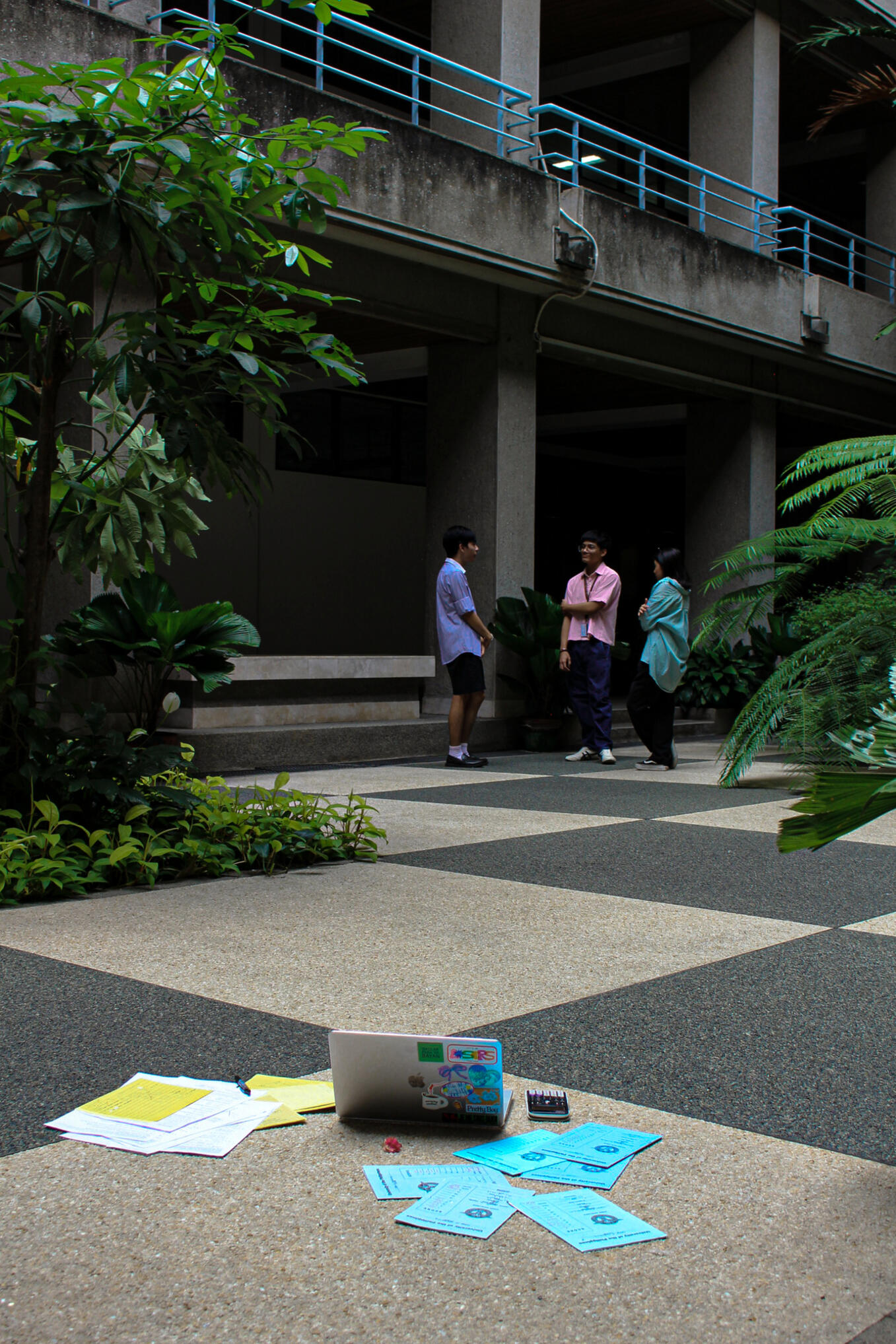
Although my grades in my Communication Research courses may not be the highest, I know that they will never be able to quantify what this course has taken and given back to me in equal measures. A 2.00 in a quantitative research course doesn’t reflect the time and effort my groupmates and I put into combing the barangays of Quezon City for survey respondents as heat waves blanketed the city; classes were getting suspended left and right due to the heat while we only had our water bottles, umbrellas, and a dream.It doesn’t reflect the fact that my friend goes to me with questions about his thesis, and after I give my critique, trying my best to channel my professors during a consultation, he gets back to me a few days later and says that all the questions I asked were the same ones that his research professor raised.It doesn’t reflect the fact that I now see issues through a researcher’s lens, when I see the latest social media firestorm and think, “It would be perfect to study this phenomenon using the diffusion of innovations theory.”Yes, my grades in my majors may not tell the story of an exceptional student, but I’ve managed to survive sleepless nights, multiple deadlines back to back, face-to-face field work, and even gotten the opportunity to present my work in a conference. To me, that is exceptional, and I will not let mere numbers define me.John*, a student from the College of Home Economics, said it best: for the most part, it’s your character that defines you, not your grades.
Grades will never be a full manifestation of who you are and your worth as a person.
When we graduate and use what we’ve learnt to serve the Filipino people, nobody will ask us what grade we happened to get in our courses. Now, I’m less worried about my grades but rather about what I deem to be the more important things. Am I a good friend to my peers, a good daughter to my parents? How can I use my position as an Isko to fight injustice and inequality?Now, I can proudly say, whether uno or dos man ‘yan, I’m happy with my grade.*This is a pseudonym, in line with the interviewee’s wish to remain anonymous.
Rise and shine: For Class and the Zest of Life
Written by Amanda Ocampo
Art by Santiago Pantaleon, Jeri Tabiliran
Creative Direction by Julean Ventura
Published July 15, 2025

How do you balance acads with extra curricular activities? Ideally, the answer would include discipline, time management, and a good sleep schedule. But, alas, life gets in the way and a student’s reality involves burnout, late nights studying, and trying to get by each week.
When every task is time sensitive and the hours in a day slip by too quickly, caffeine seems to be the only solution to stay afloat.
This semester, my classes left me fascinated after the first few meetings. The majors covered topics that made learning feel passion driven once again. The only problem? A schedule that resulted in me dozing off during some lectures. My eyes would gradually and progressively feel heavier while my mind would try its best to stay awake. This led me to start drinking coffee, something I didn’t necessarily crave but still tried in hopes of adjusting to my schedule better. Caffeine eventually became a constant in my life– something I looked forward to and saw almost every day. With its newfound presence in my life, I could stay focused throughout classes and stick to my study schedule without unintentionally napping. It was essentially a crutch that helped me cross from instability to discipline.
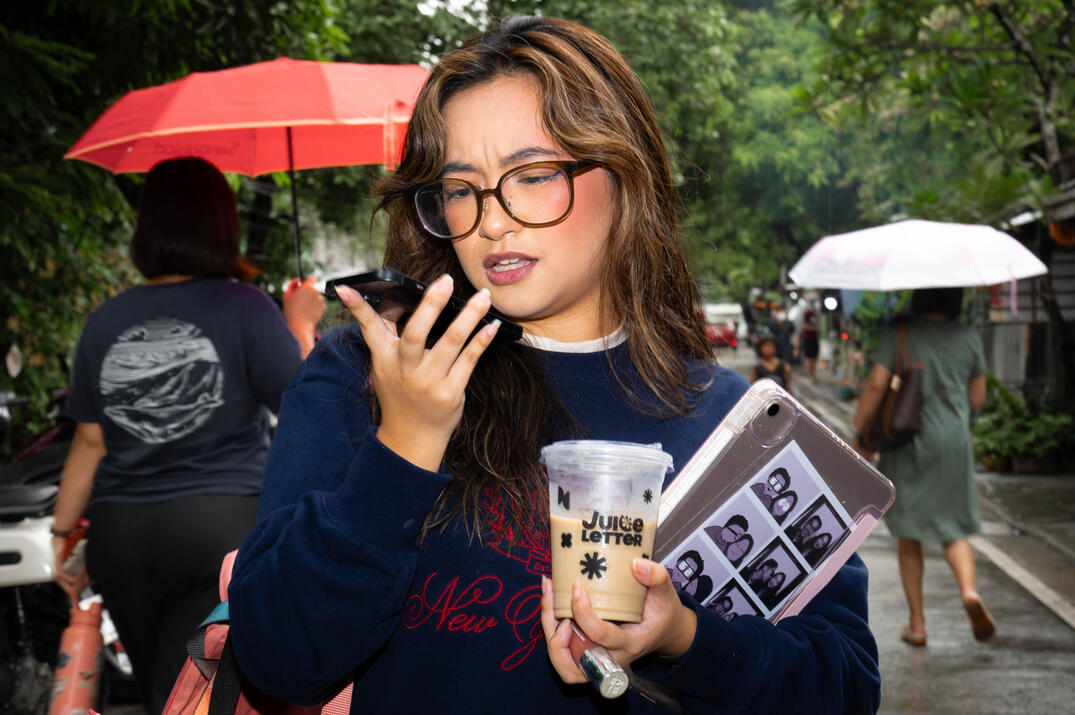
As the familiar tastes of my go-to coffee and matcha grew all too familiar, I branched out of my flow of routine to try new options around campus. Something I didn’t initially realize about caffeine was its capacity to become personal. Oftentimes I would ask “Ano po ba yung bestseller dito?” and the answers were windows into the lives of other students on campus. This form of popular opinion felt quiet. The simplicity of a single order and its specific taste being the favorite of many, made me feel more connected to the community in a way.
The same order of coffee kept numerous students awake for the unique life that each one leads.
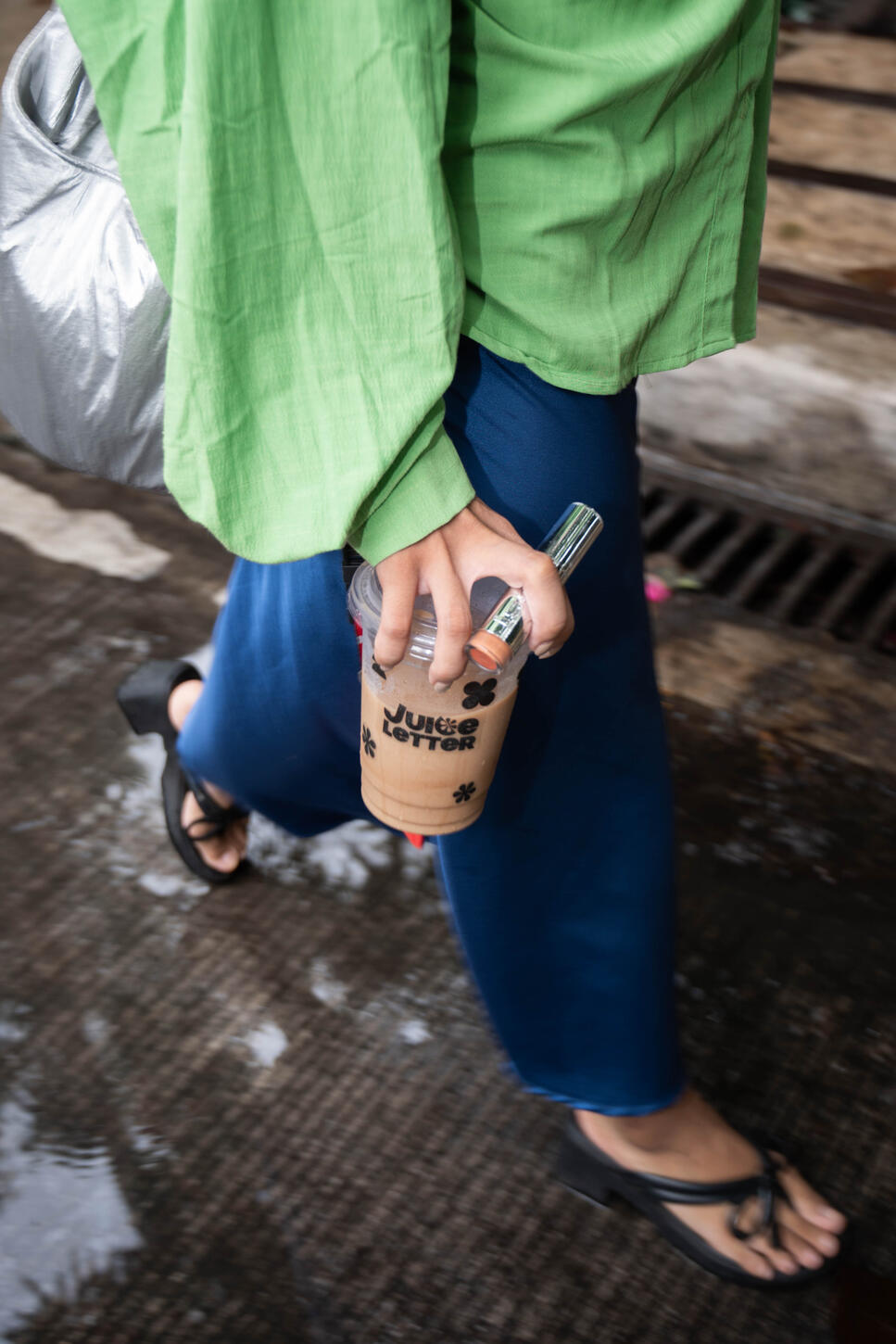
The thought of others enjoying the same drink while experiencing something entirely different reminded me of my friends and the next thing I knew, I was meeting up with them over cups of coffee and matcha. The experience changed from quietly buying a drink before class to simultaneous laughter with a friend. We wound up sharing recommendations, go-to orders to try, and essentially, more of our lives with each other.
Suddenly the spaces felt different. They were no longer quick stops but rather, places of community.
While lining up, I noticed other students talking in line, elatedly sharing stories while sipping their drinks, and some quietly studying in the presence of friends. A fun drink to stay awake became such a good reason to see others amidst the chaos of life. But while caffeinated drinks typically live in social places, they are also present in the silent joys of some. It makes great company on a walk while listening to music, while detaching from the world and scrolling online, or while reflecting on life in a journal. When I’m walking alone, matcha in hand, I find that I appreciate the taste more as well. I get to enjoy the drink while absorbing my surroundings in the present moment.
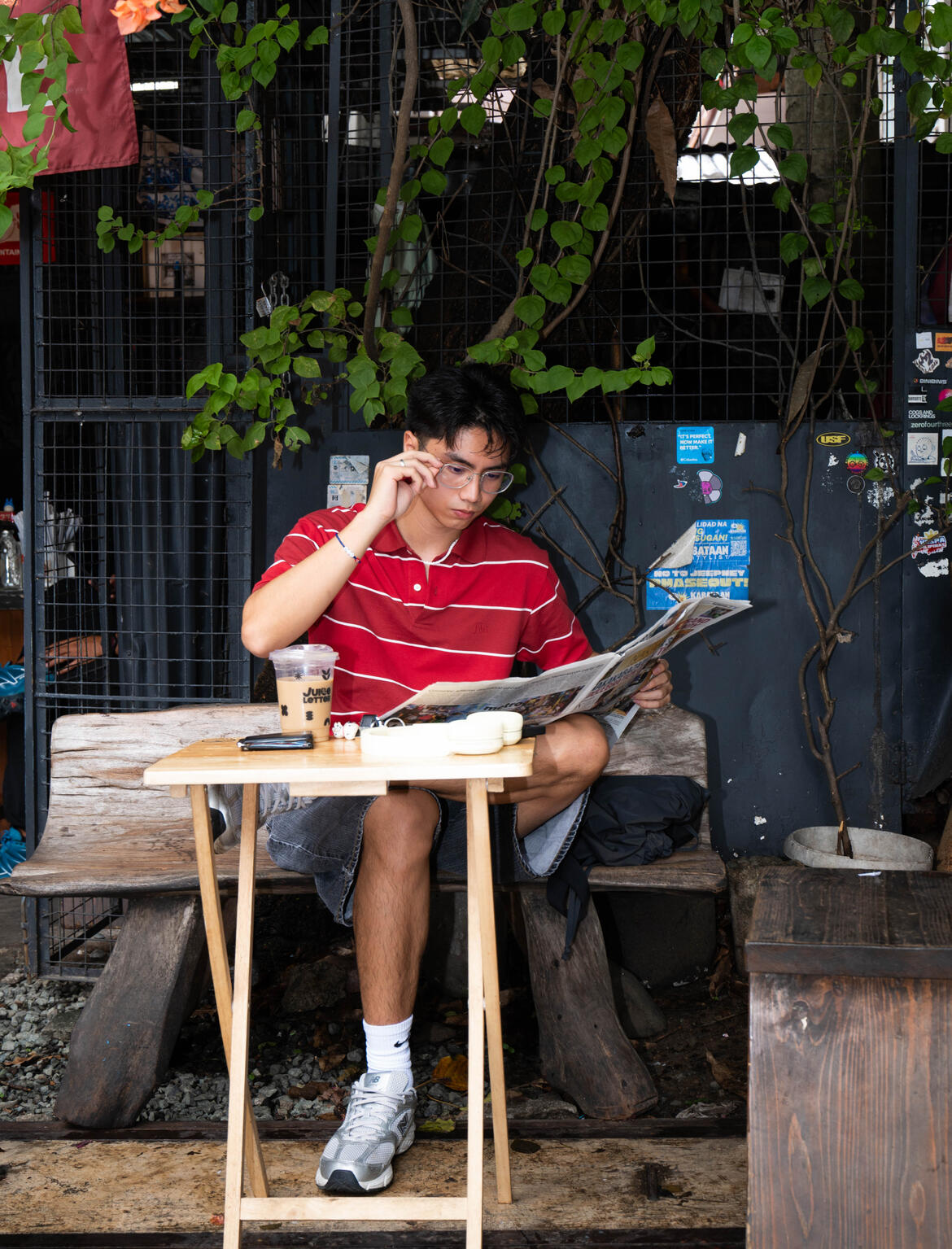
Considering the numerous people who drink caffeine, the combination of the drinks and different personalities translates to creativity. What I originally thought was “just coffee” or “just matcha” was actually a base to experiment with. Many combine these with various flavors such as fruits, types of chocolate, or completely different drinks. It becomes a piece of clay that people may mold to their liking.Caffeine is a lot of things. It was merely functional to me at first, but then it became a pathway to connection and exploration.
So when life feels rigid and your routine gets stale, caffeine will surely get you up, for your classes and for the zest of life.
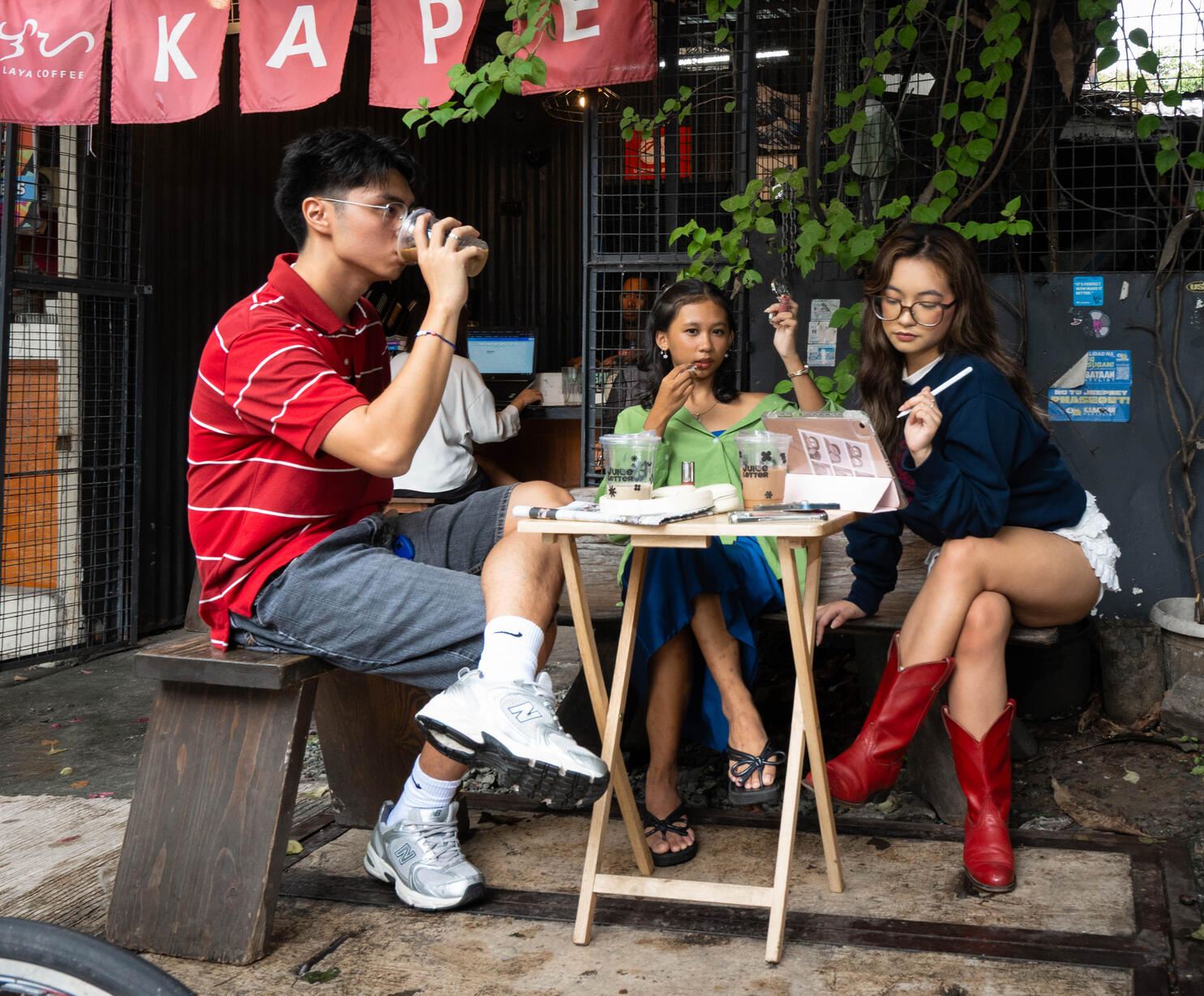
Special thanks to Louise Lugtu, Yanyan Manoos, and Ian San Miguel for modelling for the shoot
Matang Nakakakita Ng Lahat:
Mga Kwento Mula Sa Bantay ng Kolehiyo
Written by Brix Amacan and Raffy Romero
Photos by Bela Buenbrazo and Orange Cabanlig
Art by Bela Buenbrazo
Published October 29, 2025
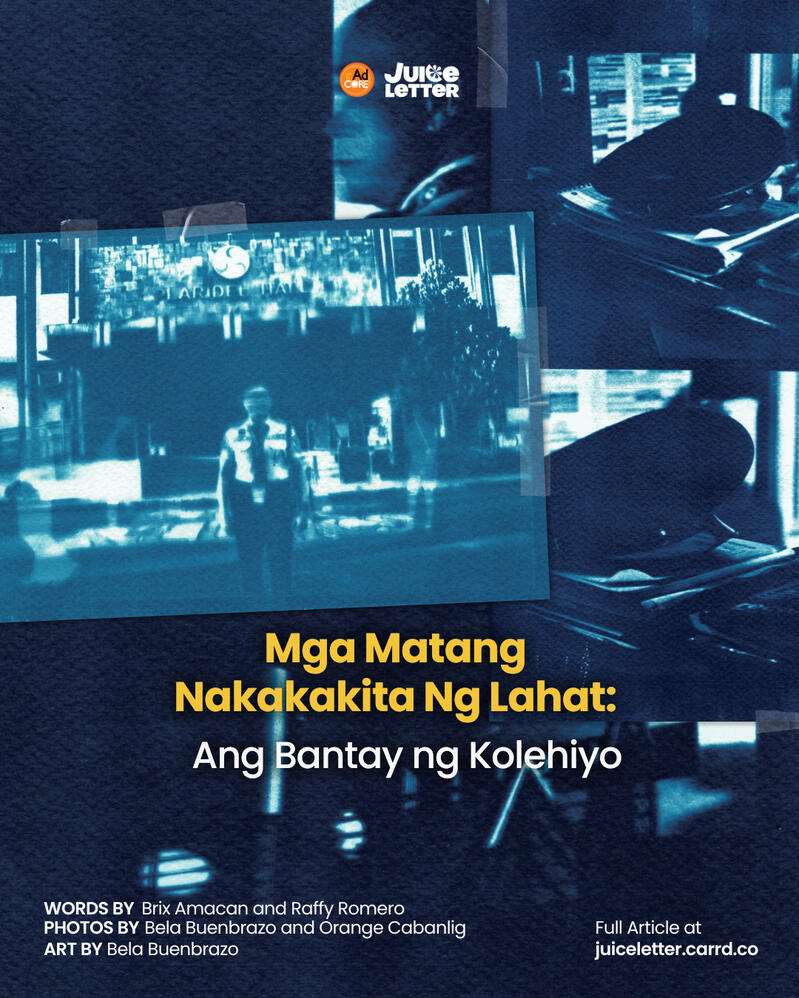
May mga matang nagmamanman sa bawat gusali ng ating pamantasan. Mga matang nakakakita ng lahat, kahit ang mga lihim na tinig at aninong lumilitaw lamang sa mga nakabisado na ang bawat kanto ng mga kolehiyo.
7AM - 7PM: Panaghoy sa Katahimikan
Isang tanghali noong kasagsagan ng pandemya, si Ate 10-41, isa sa mga babaeng sekyu sa Kolehiyo ng Midya at Komunikasyon, ay nakaranas ng mga pangyayaring tila binura ang pagitan ng buhay at ng mga ligaw na kaluluwa. Tirik ang araw habang dumadampi ang liwanag sa silid at tanging katahimikan lang at ugong ng bentilador ang maririnig. Habang nag-iikot ang nasabing sekyu, hindi mawala ang pakiramdam na may iba pa siyang kasama sa bawat sulok ng kolehiyo. Pagpasok niya sa CR, ang marahang pagpatak ng tubig mula sa gripo lamang ang tanging maririnig dito. Ilang sandali pa ay may umalingangaw na kaluskos mula sa kabilang cubicle, kasunod ang tunog ng pagbuhos ng tubig. Dahan-dahan niyang nilapitan ang kabilang silid, ngunit bakas ang takot sa kaniyang mukha nang mapatunayan niyang walang ibang tao ang naroroon.
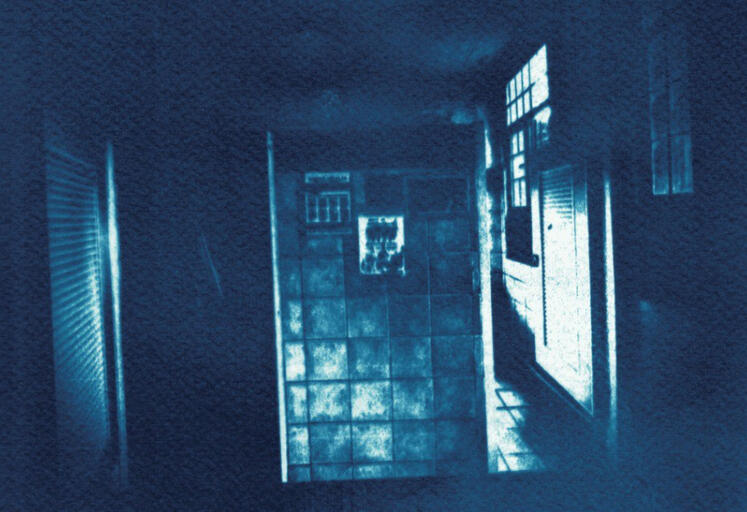
Hindi iyon ang huling paramdam. Sa parehong taon, isang mahina, ngunit nakakapanindig balahibong pag-ungol naman ang gumising sakanya sa kailaliman ng umaga. Ayon kay Ate 10-41, galing daw ito sa itaas na palapag ng gusali ng kolehiyo. Paulit-ulit. Parang pag-iyak at paghingi ng tulong o nagbabadya ng panganib. Sa mga sandaling iyon, alam niyang hindi siya nag-iisa dahil ang pakiramdam niya ay may iba pang mga matang nagmamasid at nagbabantay sa kolehiyo.
Marahil, hindi lang nga talaga sa gabi ang tahanan ng takot… sapagkat kahit sa mga sandaling tahimik ng umaga, may mga bumubulong pa ring nananatili.
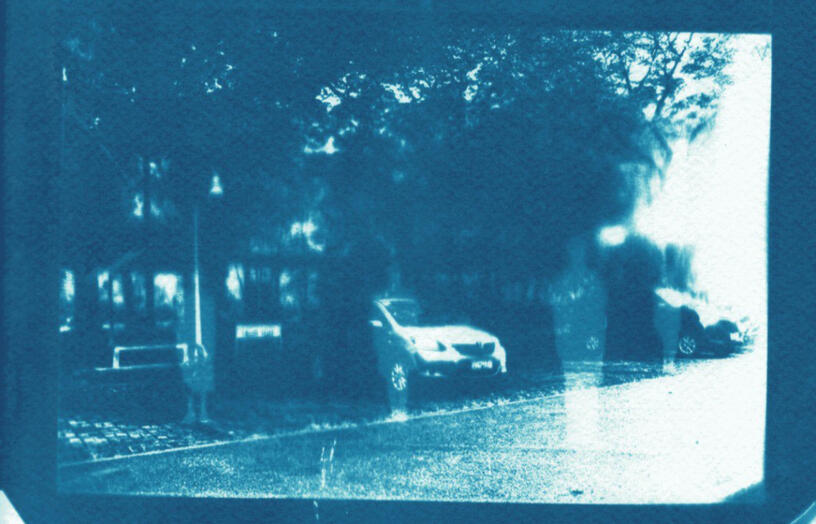
Sa liwanag ng umaga, hindi mo mararamdaman ang takot lalo na kung hindi mo pa naman naririnig ang humagulgol sa ikalawang palapag ng gusali. Pero para kay Ate 10-41, ang liwanag na ‘yon ay may kasamang mabigat na responsibilidad dahil hindi biro ang trabaho ng isang sekyu; nakataya rito ang oras, atensyon, at higit sa lahat, ang pasensya.
Mga sekyu ang unang mukha ng kolehiyo—unang nakikita, unang naririnig, at unang nakakausap. Sa kanila dumadaan ang bawat pagod, pagmamadali, o ngiti ng mga estudyante. Ngunit sa likod ng kanilang pagbati, sila rin ang unang nakakatikim ng inis at pasensya ng iba.
Bago ka pa makapasok sa silid ng Kolehiyo ng Midya at Komunikasyon, sasalubong na agad sa’yo ang ngiti ni Ate 10-41, siyam na taon nang naglilingkod. Dito na siya noon pa, at kailanman ay hindi naitalaga sa night shift sapagkat bawal umanong magbantay ang babae sa gabi.
Bukod sa pagbabantay sa main entrance, isa ring malaking tungkulin sa trabaho ang pagsita sa mga outsider na tumatambay sa Batibot, ang tambayan sa Maskom, at sa mga pumaparada ng kotse lalo na sa tapat ng labasan ng kolehiyo.
“Akala mo lang patayo-tayo lang ako [...] pero binabasa ko yung galaw ng bawat isa kasi inaaral ko yan lalo na outsider.”
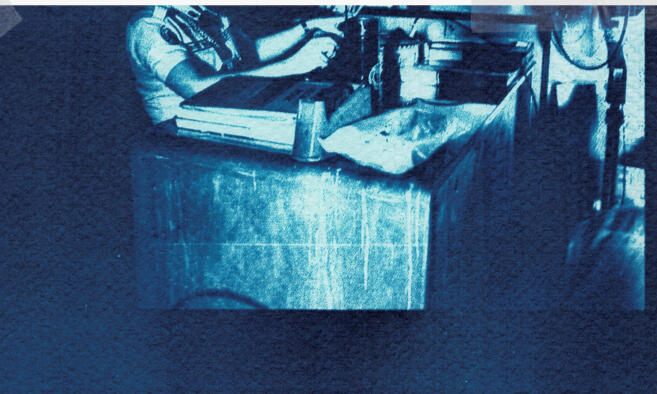
Aminado siya na sa bawat araw, hindi talaga maiiwasang makatagpo ng mga pasaway—lalo na mga outsider. Madalas, sa tuwing ipinapaalala niya ang mga alituntunin, gaya ng pagbabawal sa pagparada ng mga sasakyan sa tapat ng Maskom, may mga umaalma, sumisigaw, at ang pinakamasaklap, ay ‘yong pagsasalita nang masama sa kanya.
Para kay Ate 10-41, bawat araw ay pagsubok kung hanggang saan ang kaya nilang tiisin. May mga sigaw, mura, at titig na nangmamaliit—lalo na mula sa mga “dayo” na ang tingin sa kanila’y “guwardiya lang.” Sa trabahong ito, madalas siyang nagmumukhang multong nagpaparamdam, dahil sa tuwing humihingi sila ng tulong o nagbibigay ng mungkahi, tila tinatabunan lang sila ng katahimikan. Parang mga boses na umaalingawngaw sa bakanteng pasilyo—naririnig, pero hindi pinakikinggan. Sa lilim ng katahimikan, tanging mahabang pasensya na lamang ang bala niya laban sa araw-araw.
“Bahala sila kung murahin nila ako, [...] nagbibingi-bingihan na ako, kasi kung dinibdib ko ‘yon, papalag ako, papatol ako kasi minumura ka na eh. Pero as a guard, habaan nalang ang pasensya at iwas nalang sa gulo.”

Sa likod ng ngiti at disiplina, may mga takot din si Ate 10-41 na kinikimkim. Hindi lang sa mga nagpaparamdam sa kaniya, kundi sa mga buhay na mas katakot-takot pa, mga taong walang galang at pagtingin sa kapwa.
7PM - 7AM: Kumakaway Na Barong
Taong 2019 noong itinatag ang UP Fine Arts Gallery kaya, kung iisipin, hindi ito karaniwang lokasyon para sa mga kwentong paranormal. Malawak ang espasyo at malayang nakakapasok ang liwanag ng buwan sa gabi. Ngunit, habang nakaistasyon sa kanyang poste, ani ni Kuya 10-42 na sekyu ng kolehiyo, ay mayroon pa ring nagpaparamdam.
Pebrero ito nangyari. Tulad ng mga nakalipas na shift, wala naman daw kakaiba. Tahimik ang gabi maliban sa umuulit na awit ng mga kuliglig. Mahimbing ang tulog ng mga aso na kasama sa pagbabantay. Si Kuya 10-42 lang at ang madilim na kalawakan ng lobby kung saan naka-eksibit ang mga Philippine costume. Biglang nasira ang kapayapaan nang naaninag ni Kuya na may gumalaw. Ang manggas ng barong sa mannequin na wala namang braso ay biglang tumaas. Tila sumenyas o kumaway ng mabilis. Patay malisya nalang siya na nagpatuloy sa pagbabantay. Wala naman daw hangin.

Mabilis ibinahagi ni Kuya 10-42 ang kanyang mga karanasan, tulad nito, nang nilapitan namin siya para makipagpanayam. Sabik siya magkwento. Una siyang namasukan bilang sekyu taong 2019 sa Parañaque pero 2022 siya napadpad dito sa UP College of Fine Arts (CFA).
“Lagi ka dapat nandito, on time hangga’t maaari. Para ang kapalitan mo hindi siya mag-antay.”
Ito ang General Order No. 5 para sa mga sekyu, bawal umalis sa kanilang poste kung wala pa ang papalit kahit bayad lamang sila sa oras na nakapaloob sa shift nila. Higit pa sa mga taas-balahibong pangyayari sa gabi, marami-rami rin ang mga tungkulin na hinihingi ng kanilang trabaho. Kapag kinakailangan umalis nang maaga, saluhan sila minsan ng katambal niyang day shift guard. May mga pagkakataon, kapag absent ang papalit at walang ibang pwede tumao, umaabot si Kuya ng 11 ng umaga kakabantay.
“‘Di naman kami robot eh. Robot nga pagkanawalan ng langis yan, syempre magkikiskisan… masisira makina niyan.”
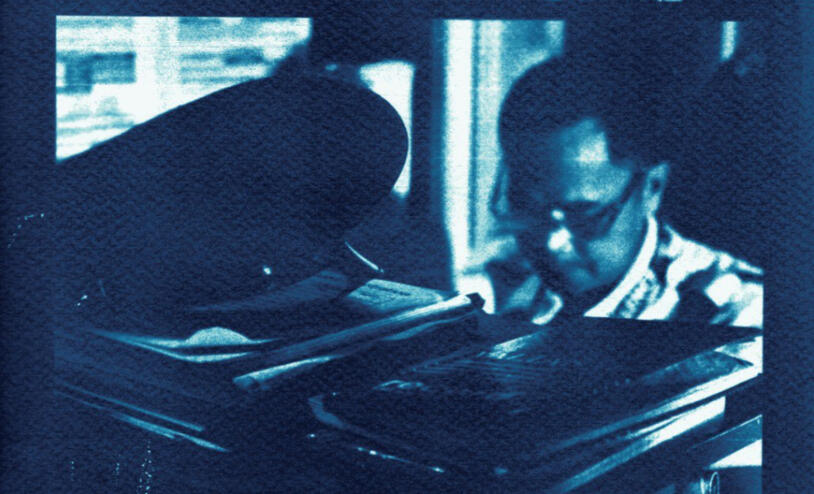
Antok ang kalaban para sa mga nagbabantay sa gabi. Tao lang rin naman daw sila. Kaya kung hindi kaya ng kape, minsan dinadaan sa mabilisang idlip. Pero kapag ang tawag ng trabaho mo ay pagbabantay, sisikapin mong manatiling alerto. Lalo na’t hindi lang estudyante at staff ang responsibilidad ni Kuya 10-42, sakop din ang mga artwork ng kolehiyo.
Isang beses, matapos i-clear ni Kuya ang Multi-Purpose Hall, may estudyanteng pumasok muli sa silid para kunin ang naiwang gamit. Sumabay dito si Butchoy, aso ng CFA; pero nakulong siya sa kwarto at sinira ang mga artwork na nakaimbak. Bagama’t malaking tulong na kasama ni Kuya ang mga aso ng kolehiyo sa pagbabantay, perwisyo rin daw ito dahil maraming marupok na gamit sa CFA.
“Dito na ako magpapasko.
Dito ako mag-new-newyear.”
Buwan-buwan nagpapalit ang shifting ng mga sekyu. Ngayong Oktubre, si Kuya 10-42 ang naatasan magbantay sa gabi. Sa ganon, day shift si Kuya sa Nobyembre at muling mapupunta ulit sa night shift sa panahon ng pasko. Nauunawaan naman daw ito ng kanyang pamilya dahil parte ito ng trabaho. Reyalidad na ito hindi lang para sa mag-asawa, pati na rin sa kanyang mga anak na naghahanda ng kanyang baon para busog siyang haharap sa mahabang gabi.
Walang pinipiling oras ang kababalaghan sa campus, ngunit sino nga ba ang tunay na nagpaparamdam–ang humahagulgol sa ikalawang palapag, ang barong na kumakaway, o ang mga lihim na tinig sa likod ng pagbabantay?
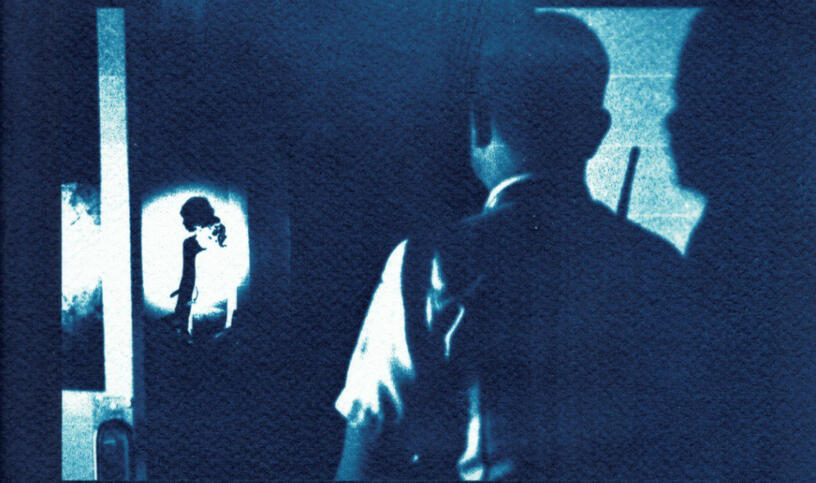
Mula sa umuungol sa silid ng CMC at sa barong na kumakaway sa tahimik na gabi ng CFA, sanay na sina Ate 10-41 at Kuya 10-42 sa paulit-ulit na paramdam ng mga ito. Marahil dahil sila man ay matagal nang hindi napapansin. Sa pagdilim dulot ng kanilang karanasan–umaga man o gabi–ang tanging puhunan nila sa sandaliang katahimikan ay ang pag-alala sa pamilyang naghihintay sa kanila. Ito ang dahilan kung bakit, sa kabila ng mga katakot-takot na pangyayari, patuloy pa rin silang bumabangon at ginagampanan ang kanilang tungkulin.
Sa gitna ng lahat, sila rin ang nagpaparamdam sa paligid, umaasang marinig at maramdaman ang kanilang presenya’t alalahanin. Hindi naman sila mga multo; sila ay mga taong nagbabantay ng kolehiyo upang mapanatili ang kaayusan at kaligtasan.
‘Di nalalayo sa danas ng taong nagbabantay ang pagpaparamdam ng mga ‘multong’ ang simpleng pakiusap lang din ay mapansin… sa dilim man o bukang liwayway."
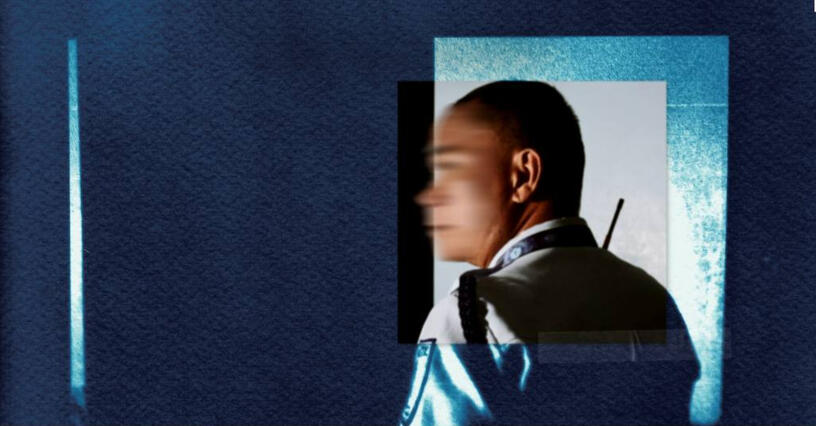
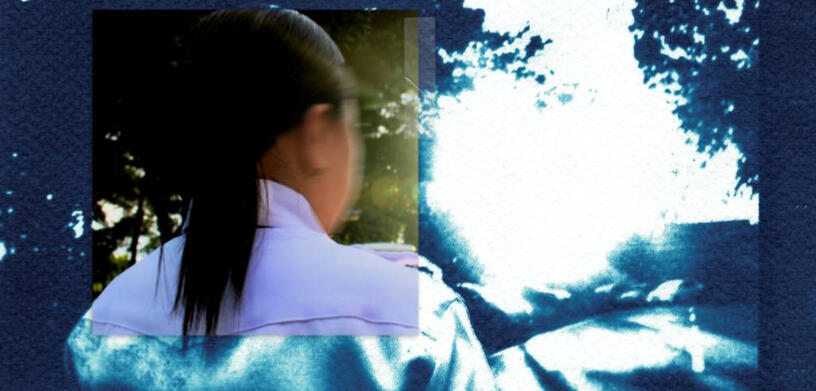
Maaari ang mga paranormal na karanasan ng ating mga sekyu sa pamantasan ay tanda na mayaman ang kasaysayan ng unibersidad. Ang tanging malinaw sa mga kwento nila, ang mga kolehiyong nagsisilbi bilang ating pangalawang tahanan ay inaalagaan at binabantayan kahit sa taas-balahibong lamig ng umaga maging sa kakila-kilabot na dilim ng gabi. Hindi man namin personal na maiimbestiga ang mga kwentong katatakutan, nagawa namin na sagutin kung ano ang kwento ng mga sekyu ng ating kolehiyo na una at huli nating nasisilayan kapag tayo ay darating at aalis.
Bilang respeto sa privacy ng ating mga sekyu, ginamit ang mga numero hango sa Security Radio Code para palitan ang kanilang pangalan.10-41 = operative “start of shift”
10-42 = ending tour of duty “end of shift"
Ay…AI Ba ‘To? Paano Pinoprotektahan ng mga Propesor ang Diwa ng Pagkatuto
Words by Elyssa Castro and Jeulian Manalo
Photos by Orange Cabanlig
Art by Orange Cabanlig and Nessy Sabado
Published December 8, 2025
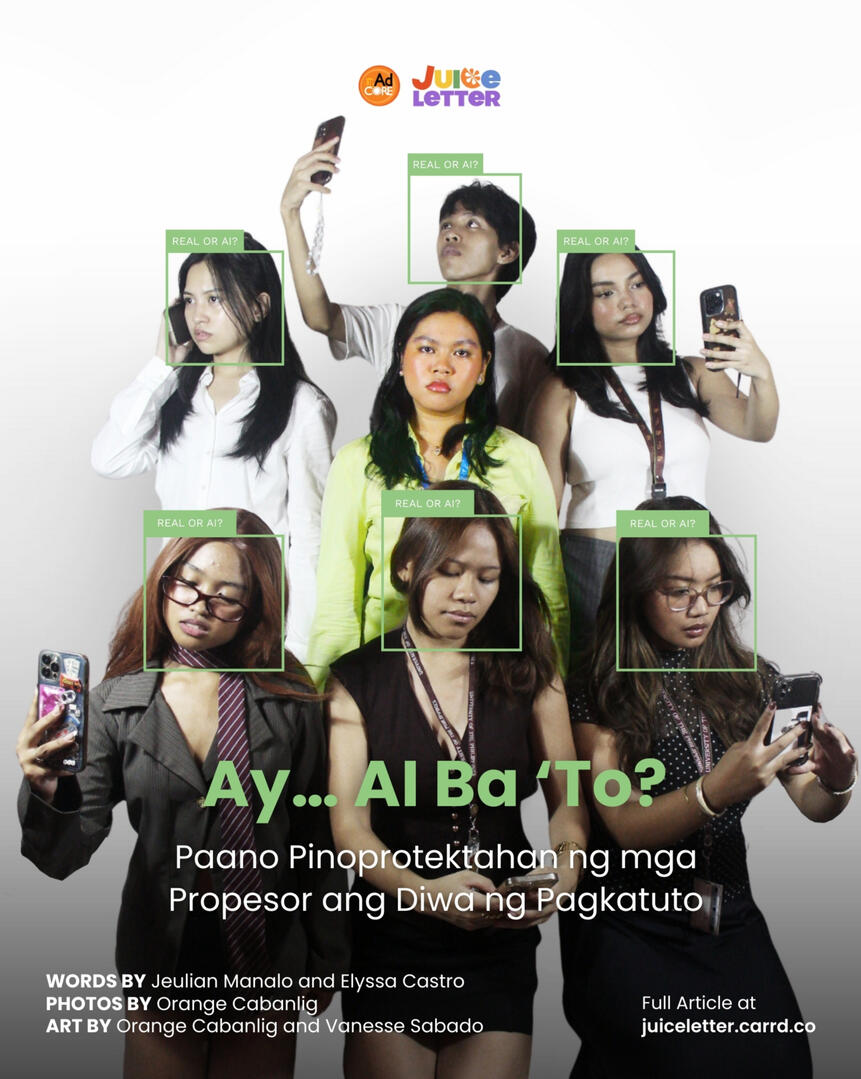
Sa pagsisimula ng pag-aaral ng isang bata, madalas sinasabi na ang paaralan ang kaniyang pangalawang tahanan, at ang guro ang kaniyang pangalawang magulang. Katulad ng mga magulang na kilalang-kilala ang isang anak, alam din ng mga propesor kapag ang isang bagay ay tunay na gawa ng kaniyang estudyante.Tila isang laruan na pinag-eeksperimentuhan, ang artficial intelligence ay isang panibagong teknolohiya na sinasabing nagpapabilis at nagpapadali ng iba’t ibang mga gawain. Kaya nitong sumulat ng papel, gumawa ng artwork, at “kumilatis” ng mga lathala.Ngunit, hindi ito palaging nakabubuti. Sa mga general education o GE courses na required sa mga Iskolar ng Bayan, nagkakaroon ng problema kapag ang ipinasa ng estudyante ay AI-generated lamang–walang bakas ng kaniyang sariling pag-iisip at pagkatuto.
Bata, Bata, Paano Ka Lumikha?
Parang isang magulang na palaging nakabantay, nahahalata ng propesor kapag biglang nag-iba ng tunog o tindig ang gawa ng isang estudyante. Para sa mga propesor katulad nina Ms. May, Sir JCo, at Mx. Fil, ang proseso ng paglikha ang dapat nangingibabaw kaysa sa pagsusumite ng asignaturang agarang ginawa.Halos sampung taon ng propesor si Ms. May Cardoso sa unibersidad, at kasalukuyan siyang nagtuturo ng ENG 13. Mariin niyang tinututulan ang paggamit ng generative AI para sa kahit anong output na ipapasa. Ngunit, nakikita niya pa ring may potensyal ang AI bilang isang supplementary tool sa pagsusulat, tulad ng maraming propesor. Si Sir JCo naman ay tatlong taon ng propesor ng Speech 30. Para sa kaniya, hindi dapat sanayin ng estudyante ang paggamit ng AI. Ngunit ipinunto niya rin na mukhang hindi na ito mawawala. Para kay Mx. Fil na kasalukuyang nagtuturo ng SocSci 1, naniniwala siyang hindi kailangan ang AI, pero hindi na ito mabibitawan dahil kalat na ang paggamit nito kahit saan. Lahat sila ay may sariling karanasan at kwento tungkol sa mga estudyanteng nahuli nang gumamit ng AI sa pagpasa ng requirement, at lahat sila ay may iba’t ibang pinunto tungkol sa paggamit nito.
Sa bawa't asignaturang isinusuko natin sa AI, tinatanggal din natin ang ating sarili sa proseso ng pagkatuto.
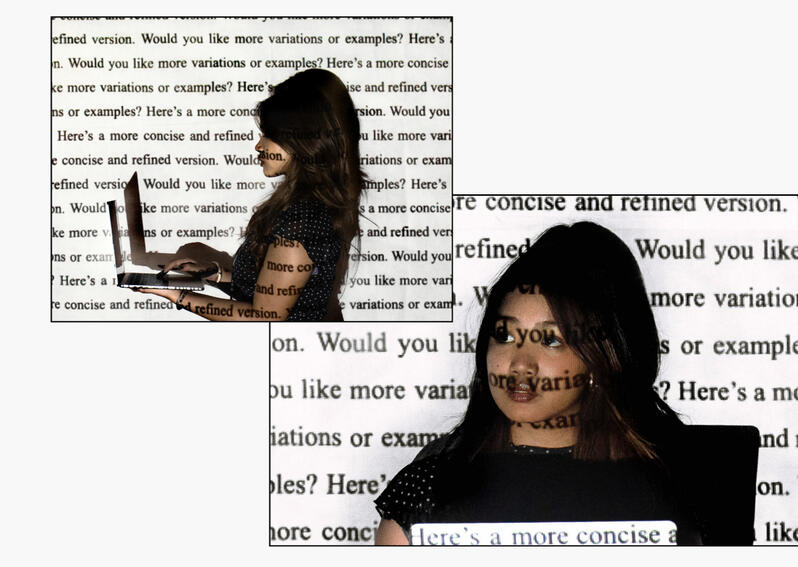
Unang nakatanggap ng AI-generated na asignatura si Ms. May noong nagsisimula palang umusbong ang AI. Nang kinausap ni Ms. May ang estudyante, nalaman niyang student-athlete siya, at naubusan na siya ng panahon at oras para isulat ang kaniyang asignatura. Inamin ng estudyante na unfulfilling ang naging pakiramdam niya pagkatapos i-workshop ang kaniyang ipinasa, sapagkat nawala na ang esensya ng pagkatuto mula sa saloobin ng kaniyang mga kapwa estudyante.Para kay Sir JCo, ilang beses na rin siyang may nakutubang gumamit ng AI, ngunit aminado siyang ayaw niya ring mapahiya ang isang estudyante kapag kinumpronta ito. Nang tanungin na ni Sir JCo ang bata, umamin naman ito, kaya binigyan niya lamang ito ng warning. Pero nang inulit ng parehong bata ang paggamit ng AI, doon na nagbigay ng singko si Sir JCo.
"Importante sa proseso ng pagtuto and mahirapan. It is okay to not understand a reading, a lesson, [or] a text. AI takes this journey away from us, it steals it."
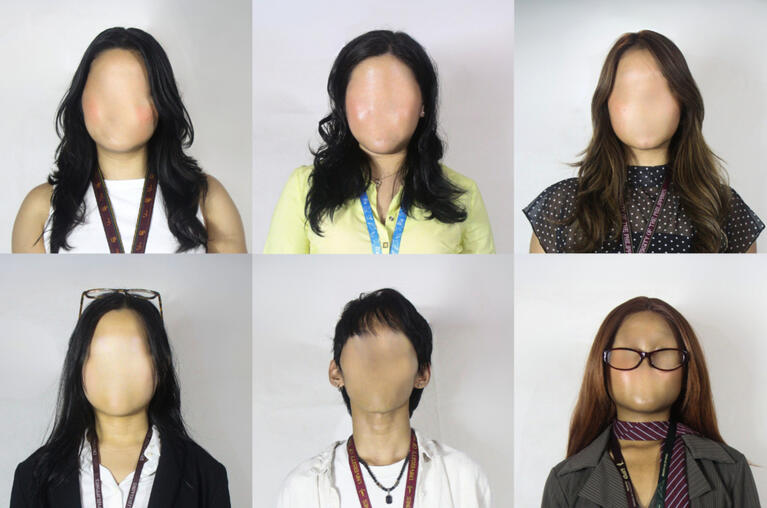
Si Mx. Fil naman ay may nakutubang nag-AI nang nakita niyang hindi nasagot nang maayos ang kaniyang mga guide questions para sa isang papel. Alam niyang walang kusang umaamin sa paggamit ng AI, sapagkat alam niyang may kaakibat na hiya ang paggamit nito. Hindi rin umamin ang mag-aaral nang siya’y tanungin. Tulad ng isang batang nahihiyang umamin kapag siya ay nagkamali, ganoon din ang pagtingin niya sa mga estudyante. Pero dahil hindi naman nasagot ang kaniyang mga tanong, binigyan niya pa rin ito ng mababang marka.Ang mga propesor ang kaakibat natin sa proseso ng pag-aaral at pagkatuto. May saysay sa kanila ang ating integridad at katapatan bilang mga mag-aaral. Hindi lang natin sila mga pangalawang guro sa loob ng tahanang tinatawag na silid-aralan, kung hindi sila rin ang ating mga katuwang sa paglaki at pagharap sa buhay.
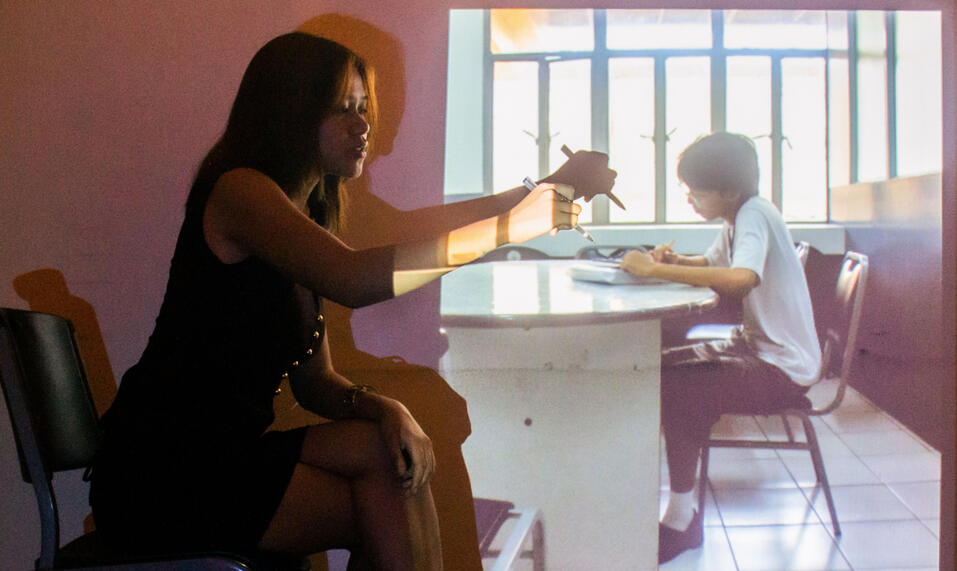
Ang Pedagohiya ng Pagsasawalang Tiwala
Inaakala ng marami na usapin lang ng plagiarism ang pagpapasa ng asignaturang AI-generated, ngunit mas malaki at malalim ang sugat na naitatahi nito sa relasyon at dinamiko ng isang propesor at sa kaniyang tinuturuang estudyante.Habang kinukuha ni Ms. May ang kaniyang Master in Fine Arts, natutunan niya rito ang konsepto ng Pedagogy of Distrust–isang pedagohiya kung saan ang isang guro o propesor ay bumubuo ng kaniyang syllabus batay sa kanyang kawalan ng tiwala sa mga estudyante. Mas nawalan ng tiwala ang mga propesor sa pag-usbong ng AI-generated outputs. Ang paulit-ulit na paggamit ng AI at ang mga obvious na AI indicators ay nag-udyok sa mga propesor na tumingin sa mga gawain ng estudyante nang may paghinala.Ngunit hindi dapat ganito ang kaso, ani ni Ms. May. Naniniwala rin si Sir JCo na mahalagang bigyan ng benefit of the doubt ang isang estudyante, sapagkat siya mismo ay gumagamit ng mga malalalim na salita at em-dashes. Pero aminado rin si Sir JCo na ang nagiging default niya ay ang pagkakaroon ng pagdududa sa isang sulatin na “tunog-AI.”
"It's sad that you always have to look at students' work twice, but you don't want to subject them to the humiliation of being put aside and asked if this is AI.
Pinakaimportante na as much as possible ay you don't put them in a situation where they need to use AI. That starts when you ask them to take work home."
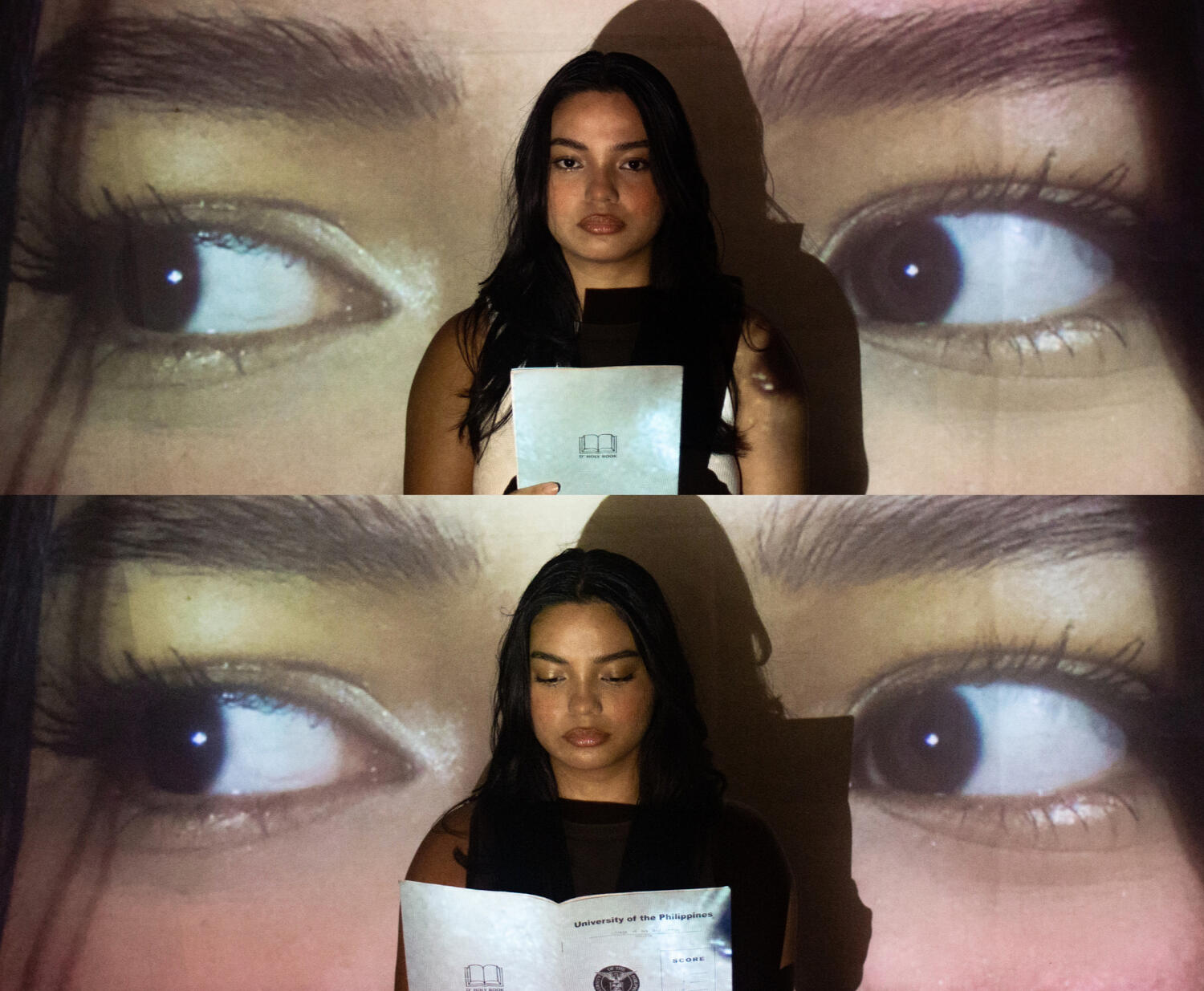
Dahil dito, mas pinipili na ng mga propesor na katulad nina Ms. May, Sir JCo, at Mx. Fil ang pagpapagawa ng mga class activities sa loob ng silid-aralan. Ayon sa kanila, ito ay para mas mapaunlak ang diskusyon sa pagitan ng mga estudyante, ng kanilang mga kaklase, at sa kanilang mga propesor. Ibinabalik din nila ang analogong pamamaraan ng pag-aaral; bluebook exams, yellow pad at bolpen, at in-class writing sessions ang naging takbuhan nila upang maiwasan ang paggamit ng AI.Bukod sa nawawala ang esensya ng pagkatuto at pag-aaral sa loob ng apat na sulok ng silid-aralan, idiniin din ng mga propesor na sa bawat paggamit ng AI nang hindi ipinapaalam, nasisira’t nababawasan rin ang tiwalang ipinagkakaloob ng isang guro sa kaniyang estudyante. Dito nagsisimulang tumubo ang mga lumot ng diskompansya, na mahirap nang tanggalin ‘pag tuluyan itong kumalat.
Ang Kinabukasan ng Akademiya
Mayroon mang kasalukuyang kaniya-kaniyang paniniwala at mga polisiya ang mga propesor sa GE courses, hindi ito sapat. Sa kasalakuyan, hindi maikakaila na ang AI ay nandito, mananatiling nandito, patuloy na payayabungin, at susuportahan ng mundo. Ngunit, ano nga ba ang kinabukasang kinakaharap natin ‘pag patuloy itong tatangkilikin nang walang mga polisiya’t paninigurado na hindi ito maaabuso ng kahit sino?Para kay Ms. May, gustuhin man niyang tanggapin o hindi ang AI ay mananatili pa rin ito. Dahil sa lantarang paggamit at pagtangkilik ng AI maski sa mga sinusumiteng outputs, nauudyok ang mga propesor na aralin kung ano ang gumagana at hindi sa kanilang paraan ng pagtuturo. Ang AI ay isang technological giant na patuloy pa ring kinakapa ng parehong estudyante’t propesor, kaya hindi rin masasabi ni Ms. May kung ano ang kinabukasan sa mundong may generative AI.
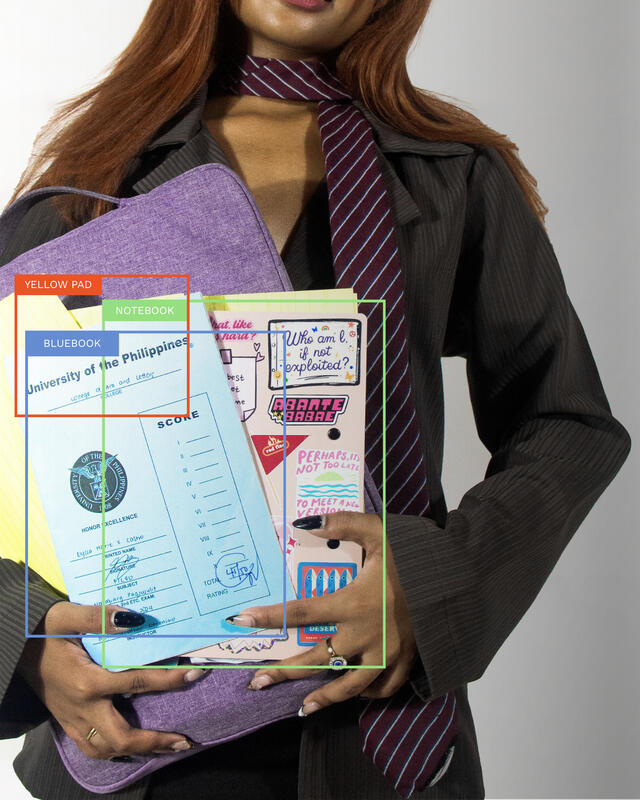
"I am hopeful that the future would look like institutions paying attention to what is really going on in the classrooms. They need to pay attention to what students are doing and why are they doing them."
Para naman kay Sir JCo, may halong pangamba at pag-aalala ang pagtingin niya sa kinabukasan pag patuloy lamang na tatangkilikin ang AI nang walang mga pagsasaayos kung paano ito tamang gamitin. Naniniwala si Sir JCo na ang generative AI ay walang bagong iniluluwal na ideya, anong prompt man ang gamitin ng isang tao. Ang niluluwal lamang nito ay mga ideyang nilabas na, pinagdiskursohan na, at sinulat na mismo ng mga beteranong manunulat.
"Honestly, it is bleak and horrifying to envision because I see the academe as a bastion for intellectual exercise, the discovery of new things, and the pursuit of new knowledge. If we rely on new knowledge that averages new knowledge, how are we going to cover new ground?"
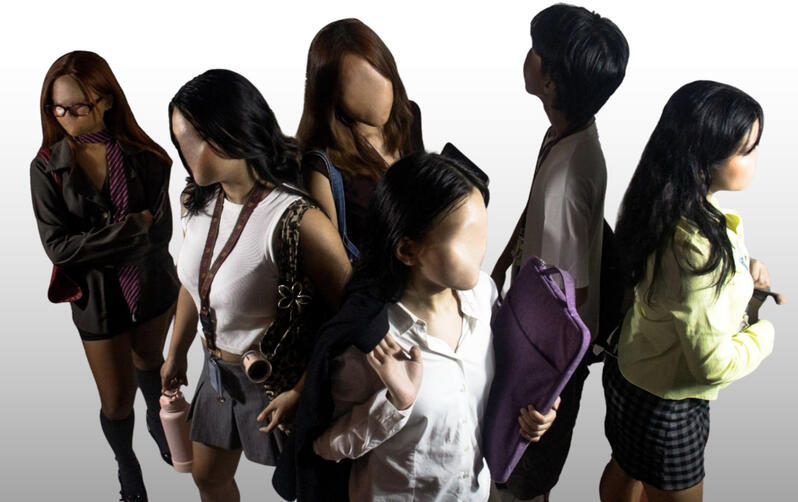
Para naman kay Mx. Fil, nakikita niyang maaari rin itong tumagos sa iba pang mga isyu tulad ng climate change, dahil sa dami ng enerhiya na kinakailangang gamitin para sa bawat search gamit ang ChatGPT. Binanggit din ang usapin ng AI sa pagtatanggal ng mga GE courses sa curriculum. Dahil sa neoliberal na sistema ng edukasyon na mas pinapaboran ang mga grado at mga kwantitabong pagpapahiwatig ng katalinuhan, malaki rin ang magiging dagok ng AI pag hindi ito nagkaroon ng mga regulasyon lalo na sa iba’t ibang disiplina sa akademya.May pangambang dulot ang patuloy na paggamit sa AI dahil maari nitong palitan ang mga tao. Maaaring mawalan ng trabaho ang mga edukador at propesor, pati na rin ang mga estudyanteng papasok pa lamang sa workforce. Hindi lang ito pangamba nila kundi pangamba ng lahat ng sektor ng lipunan.
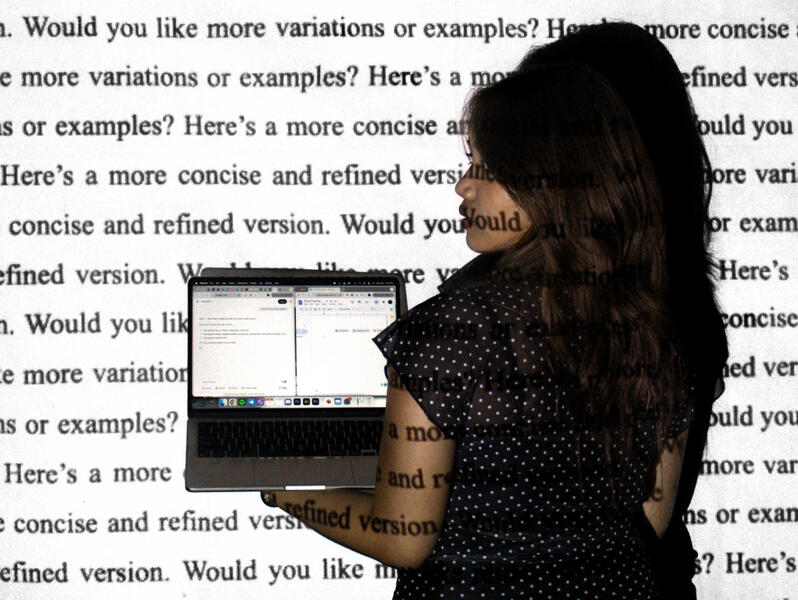
"Oo, AI and its rampant usage can and will definitely aggravate this issue.
People can argue that lahat ng skills and learnings na nirerequire at binibigay ng GE can be solved by AI na."
Pero ang mga pangamba ay dapat mga pangamba lamang—hindi dapat AI ang mananalo sa hamong ito. Bukod sa mga kasalukuyang polisiya at safeguards na isinasagawa ng mga propesor, nananawagan din sila sa administrasyon ng unibersidad na pagtuunan ng matinding pansin ang mga pagsasagawa ng maayos na patakaran sa paggamit sa AI. Parehong naniniwala si Ms. May and Sir JCo na iba-iba ang polisiyang kinakailangan sa AI para sa iba’t ibang disiplina–hindi ito kayang gamitan ng one-size-fits-all policyWala mang kasalukuyang polisiya ang unibersidad, hindi ito naging dahilan upang hindi magpaunlak ng sariling mga diskusyon at diskurso ang mga propesor tungkol sa mga maaari nilang gawin sa harap ng AI. Patuloy na naninindigan ang mga propesor na mananatili ang kanilang mga sariling polisiya upang masiguradong may natututunan pa rin ang kanilang mga estudyante sa kanilang pagtuturo.Patuloy na pangangalagaan ng ating mga propesor ang ating pangalawang tahanan bilang mga tagapagtaguyod ng ating pag-aaral. Sa parehong paraan, tungkulin naman ng mga estudyante na pangalagaan ang relasyon at tiwala na buong-pusong ibinibigay ng kanilang mga pangalawang magulang.































